
ADR INSTITUTE Co-Hosted by: Georgia Office of Dispute Resolution State Bar of Georgia Dispute Resolution Section EST. 1993 29TH ANNUAL ADR INSTITUTE O F F I C I A L C O N F E R E N C E P R O G R A M FRIDAY, NOVEMBER 18, 2022 GEORGIA TECH HOTEL & CONFERENCE CENTER 800 SPRING STREET NW, ATLANTA, GA 30308
COPYRIGHT © 2022 BY THE GEORGIA OFFICE OF DISPUTE RESOLUTION (GODR). ALL RIGHTS RESERVED. NO PART OF THIS PUBLICATION MAY BE REPRODUCED OR REPRINTED, ELECTRONICALLY PUBLISHED, STORED IN A RETRIEVAL SYSTEM, TRANSMITTED, DISTRIBUTED, OR OTHERWISE, WITHOUT THE PRIOR WRITTEN PERMISSION OF GODR.
THIS PROGRAM AND ITS MATERIALS HEREIN DO NOT CONSTITUTE LEGAL ADVICE. THE OPINIONS OF PRESENTERS AND PROGRAM MATERIALS ARE NOT NECESSARILY THAT OF THE GEORGIA OFFICE OF DISPUTE RESOLUTION, THE SUPREME COURT OF GEORGIA COMMISSION ON DISPUTE RESOLUTION, OR AFFILIATES; THESE ENTITIES DO NOT ASSUME ANY LIABILITY FOR INCORRECT INFORMATION OR ASSOCIATED DAMAGES OR LOSS.
ALL INFORMATION PROVIDED IS CURRENT AS OF NOVEMBER 1, 2022.
COPYRIGHT © 2022 BY THE GEORGIA OFFICE OF DISPUTE RESOLUTION
29THANNUALADRINSTITUTE
1
WELCOME TO THE 29TH ANNUAL ADR INSTITUTE
Welcome to the 29th Annual ADR Institute, co-sponsored by the Supreme Court of Georgia Commission on Dispute Resolution and Dispute Resolution Section of the State Bar of Georgia. For almost three decades, the ADR Institute has been the premiere dispute resolution conference in Georgia, drawing a variety of professional disciplines and featuring both local and national speakers. It has and remains our goal to provide our attendees with quality speakers, informative content, and concrete takeaways which you may implement into your practice.
We are delighted and honored to have nearly 500 attendees for this event. We appreciate those who were able to be here with us in person and are grateful that those who were unable to be with us who are watching the livestream.
The success of any conference depends on the people behind the scenes, and the ADR Institute is no different. There are many individuals who have contributed to the planning and execution of this event, and we would like to take this opportunity to give special recognition to a few:
• Ms. Erika Birg, Dispute Resolution Chair
• Ms. Carole Collier; Ms. Kriste Pope; Ms. Kristy King; and Mr. Herbert Gordon, Judicial Council/Administrative Office of the Courts
• ADR Planning Committee
• FourthParty, Diamond Sponsor
• University of Georgia School of Law Certificate in ADR, Diamond Sponsor
• And an extra special thank you to GODR Deputy Director, Ms. Karlie Sahs, who has served as the crucial person and driving force in organizing this event.
Please mark your calendars for November 17, 2023, as we are planning an extra special conference to celebrate our 30th Anniversary. In the meantime, please let us know how we can be of service to you.
Kindest Regards, Tracy B. Johnson Executive Director
Georgia Office of Dispute Resolution
PREFACE
29THANNUALADRINSTITUTE NOVEMBER 18, 2022 GEORGIA TECH HOTEL AND CONFERENCE CENTER
2
THANK YOU TO OUR DIAMOND SPONSORS


SPONSORS
29THANNUALADRINSTITUTE NOVEMBER 18, 2022 GEORGIA TECH HOTEL AND CONFERENCE CENTER 3

4

5



LAW.UGA.EDU/ADR To learn more, please visit or adrcert@uga.edu Faculty Director, Alternative Dispute Resolution Certificate 6
VENUE INFORMATION
GEORGIA TECH HOTEL & CONFERENCE CENTER
800 Spring Street NW, Atlanta, GA 30308
CONFERENCE SPACE
The conference space is on the second floor. There will be many GODR Event signs posted throughout to help you navigate.
To access the conference space through the front lobby, take the stairs or elevator up one floor. Both the stairs and elevator to the second floor are located to the right, just beyond the front desk.
To access the conference space through the parking garage, park on or take the parking garage elevator to floor 2. Enter the “Global Learning Center”, then make a right and go through the double doors.
The registration table will be set up outside of the Grand Ballroom. You may check in on Thursday evening at the pre-event reception or on Friday morning, beginning at 7:30 AM.
Track I sessions will be held in the Grand Ballroom (Salons I-IV)
Track II sessions will be held in Conference Room A
The Georgia Courts Registrar will be onsite to assist with neutral registration renewal (not required) in Salons V-VI.
A floor map of the conference space has been provided to you in this conference program.
29THANNUALADRINSTITUTE NOVEMBER 18, 2022 GEORGIA TECH HOTEL AND CONFERENCE CENTER
7
VENUE INFORMATION
GEORGIA TECH HOTEL & CONFERENCE CENTER
800 Spring Street NW, Atlanta, GA 30308
PARKING
Covered (garage) parking is attached to the Conference Center. The walkway from the garage to the lobby (outside) is also covered.
Parking is included all day for the conference (Friday, 11/18. Validation stickers will be including in name badges, which can be picked up at the registration table outside of the Grand Ballroom.
Parking is NOT included during the reception (Thursday, 11/17. The estimated cost for 2 hours is about $10.
If you are lodging at the hotel, overnight parking is not included with your stay. You may park overnight for $21/night.
29THANNUALADRINSTITUTE NOVEMBER 18, 2022 GEORGIA TECH HOTEL AND CONFERENCE CENTER
8
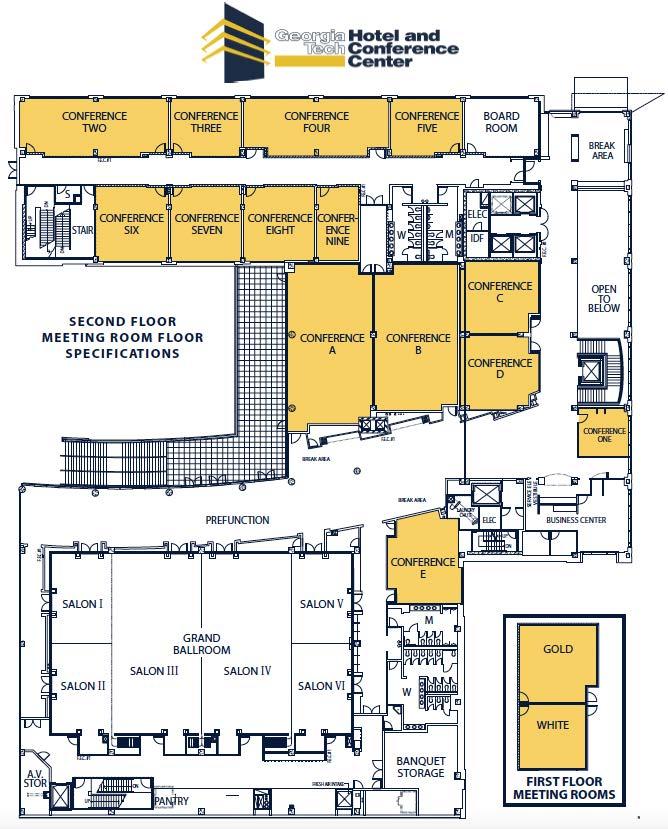
29THANNUALADRINSTITUTE NOVEMBER 18, 2022 GEORGIA TECH HOTEL AND CONFERENCE CENTER 9
INVITES YOU TO A PRE-CONFERENCE RECEPTION StateDisputeBar Resolution Section Dress code: Business Casual GA TECH CONFERENCE CENTER: BALLROOM FOYER 6 TO 8 PM NOVEMBER THURSDAY 2023 17 10



AGENDA APPROVED CLE HOURS: 6 GENERAL CLE HOURS + 1 ETHICS + 1 TRIAL + 1 PROFESSIONALISM START END TRACKI BALLROOM LIVESTREAMED+RECORDED TRACKII CONFERENCEROOMA NOTLIVESTREAMED/RECORDED 7:30AM 8:30AM Registration&Breakfast 8:30AM 8:45AM WELCOMEANDPROGRAMOVERVIEW JusticeJohnJ.Ellington withTracyB.Johnson&ErikaBirg,Esq. AwardPresentation:HaroldG.ClarkeAward BALLROOM 8:45AM 9:45AM VerbalAtemi–ATechniqueforCreativeDisruption:Part1 StephenKotev BALLROOM 9:45AM 9:55AM BREAK 9:55AM 10:55AM VerbalAtemi–ATechniquefor CreativeDisruption:Part2 StephenKotev BALLROOM InTheirShoes KyleeElliott,GCFV CONFERENCEROOMA 10:55AM 11:05AM BREAK 11:05AM 12:05PM PracticalCybersecurity:AHow-toGuide BenLuke,JC/AOC BALLROOM 12:05AM 1:00PM LUNCH SponsorPresentations: FourthParty&UGAADRCertificateProgram ADR INSTITUTE AGENDA PAGE 1 OF 2 Thank you to our sponsors 11



AGENDA APPROVED CLE HOURS: 6 GENERAL CLE HOURS + 1 ETHICS + 1 TRIAL + 1 PROFESSIONALISM
TRACKII CONFERENCEROOMA
PracticalTipsfortheMediatorandAdvocate
RecentDevelopments inArbitration-2022
BREAK
ShowMe...EthicalSafeguards! Host:Dr.TimothyHedeen,Ph.D BALLROOM
RAFFLE&Closing BALLROOM ADR INSTITUTE AGENDA PAGE 1 OF 2 Thank you to our sponsors 12
START END TRACKI BALLROOM LIVESTREAMED+RECORDED
NOTLIVESTREAMED/RECORDED 1:00PM 2:00PM CulturalConsiderationsandLanguageBarriers:
Panelists: JusticeCarlaWongMcMillian;JanaEdmondson-Cooper,Esq.; andMichaelEshman,Esq. Moderator: DouglasJ.Witten,Esq. BALLROOM 2:00PM 2:10PM BREAK 2:10PM 3:10PM ResolvingConflictin ComplexFamilyLawIssues Panelists: AndyFlink;HannibalHeredia,Esq.; ChristinaScott,J.D.; andDawnSmith,Esq. Moderator: TheHon.RebeccaCrumrineRieder BALLROOM
JohnAllgood,Esq.,FordHarrison & ShelbyGrubbs,Esq.,GrubbsADRLLC CONFERENCEROOMA 3:10PM 3:20PM
3:20PM 4:20PM
12:05AM 1:00PM
PREFACE
Forward Sponsors Venue Information Pre-event Reception Information Program Agenda
I.VERBAL ATEMI - PARTS 1 & 2
Session Information Speaker Biography Materials
II.IN
THEIR SHOES
Session Information Speaker Biography Materials
III.CYBERSECURITY
Session Information Speaker Biography Materials
Bonus: Best Practices for Securing Your Zoom Meetings
TABLE
OF CONTENTS
2 3 7 10 11 15 16 17 29 30 32 79 80 81 91
29THANNUALADRINSTITUTE NOVEMBER 18, 2022 GEORGIA TECH HOTEL AND CONFERENCE CENTER 13
TABLE OF CONTENTS
CONSIDERATIONS Session Information Speaker Biographies Panel Materials Committee on Interpreters Materials Professionalism Materials 103 104 112 125 135 140 141 148 169 170 173 192 193 195
FAMILY LAW Session Information Speaker Biographies Materials
IN ARB - '22 Session Information Speaker Biographies Materials VII.ETHICAL SAFEGUARDS Session Information Speaker Biography Materials 29THANNUALADRINSTITUTE NOVEMBER 18, 2022 GEORGIA TECH HOTEL AND CONFERENCE CENTER POSTFACE GA Commission on Dispute Resolution ADR-Related Statutes & Legislation (Georgia) 225 226 228 14
IV.CULTURAL
V.COMPLEX
VI.DEVELOPMENTS
VERBAL ATEMIPARTS 1 & 2
VERBAL ATEMI - A TECHNIQUE FOR CREATIVE DISRUPTION
Contained within the Japanese martial art of Aikido, Atemi is a strike used to unbalance or disrupt a pattern of intent. This workshop will explore the concept of verbal Atemi through stories taken from the conflict resolution text, Sweet Fruit from the Bitter Tree: 61 Stories of Creative & Compassionate Ways out of Conflict by Mark Andreas. Join Aikido black belt and seasoned conflict resolver Stephen Kotev as he explores how to apply verbal Atemi to high-conflict situations. The idea of verbal Atemi will be introduced during the plenary session. Part 2 will continue to explore the concept of verbal Atemi as well as how to apply it during high-conflict situations such as mediation during a dynamic breakout session.
Presented by: Stephen Kotev
In-person attendees can join Verbal Atemi in the ballroom. Both sessions will be livestreamed to virtual attendees.
29THANNUALADRINSTITUTE NOVEMBER 18, 2022 GEORGIA TECH HOTEL AND CONFERENCE CENTER PART 1 - 8:45 AM TO 9:45 AM PART 2 - 9:55 AM TO 10:55 AM 1 CLE HOUR FOR EACH SESSION
15
Stephen Kotev
www.StephenKotev.com
Sought out for his insight and innovative ways of tackling difficult disputes, Stephen is one of the few practitioners that sits at the nexus of embodiment, leadership coaching and conflict resolution and is known for his practical, engaging and highly interactive teaching style informed by his study of Aikido, Embodied Peacemaking, Men’s Work, Brazilian Jiu Jitsu, Somatic Abolitionism and mytho somatic explorations.
Based in Washington, D.C., Stephen works as a conflict resolution consultant offering leadership coaching, mediation, negotiation and facilitation services, training and embodiment education to private and government clients. He has extensive experience resolving workplace disputes ranging from team interventions to pre complaint/pre litigation mediation. He holds a Masters degree from George Mason University’s School for Conflict Analysis and Resolution and certificates in leadership coaching and conflict coaching from Georgetown University and Dr. Tricia Jones of Conflict Coaching Matters LLC.
He specializes in training conflict resolvers on how to maintain their calm in high conflict situations and teaches graduate and undergraduate courses on this topic as an Adjunct Professor George Mason University’s School for Conflict Analysis and Resolution. He is the Chair of the Association for Conflict Resolution Taskforce on Safety in ADR and holds rank in the Japanese martial art of Aikido and Brazilian Jiu Jitsu.
Stephen has conducted trainings for international and national audiences from the United Arab Emirates, Bahrain, Qatar, Germany, Northern Ireland, Ireland, Canada and across the continental United States and can be reached at www.StephenKotev.com

16
VERBAL ATEMI A TECHNIQUE FOR CREATIVE DISRUPTION
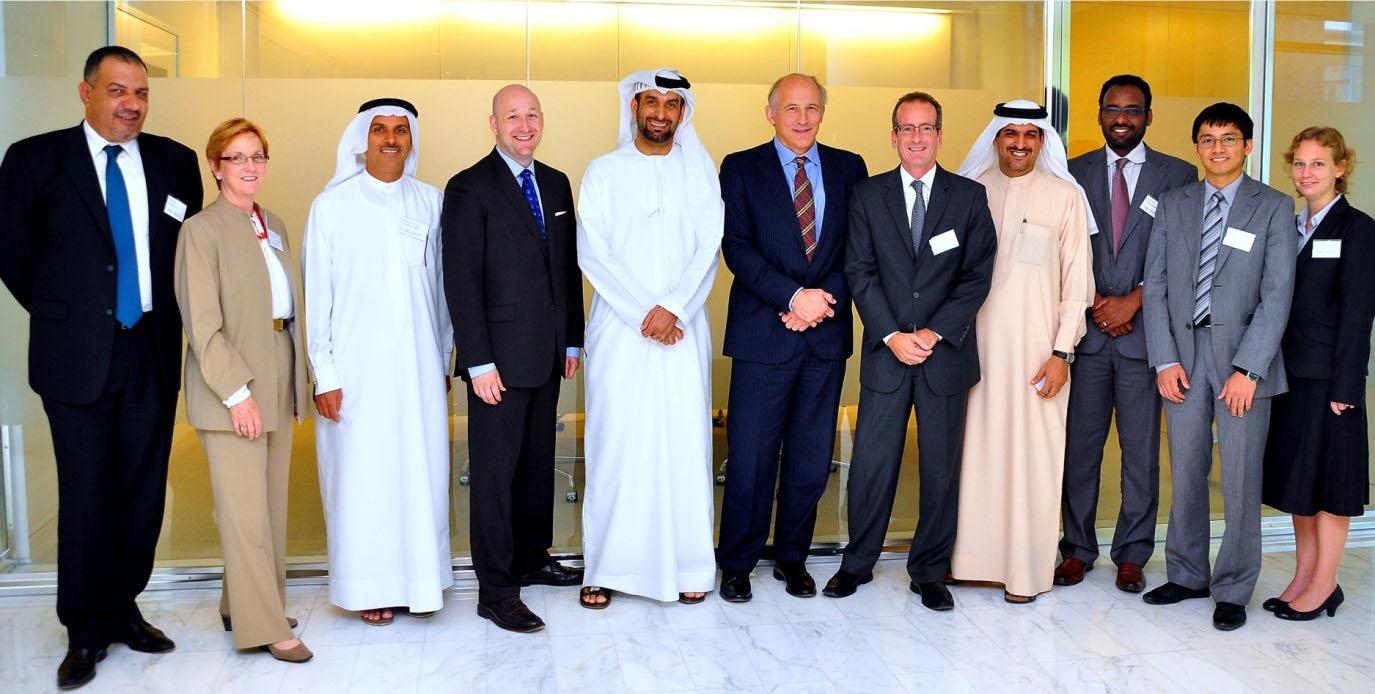
Conflict Resolution Consultant offering mediation, negotiation, leadership & conflict coaching, facilitation services, training and somatic education




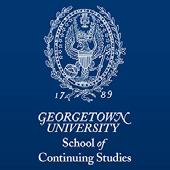







11/1/2022
Presented by Stephen Kotev www.StephenKotev.com
© Stephen Kotev 2022
17
Masters in Conflict Analysis and Resolution from George Mason University’s School of Conflict Analysis and Resolution
Certified
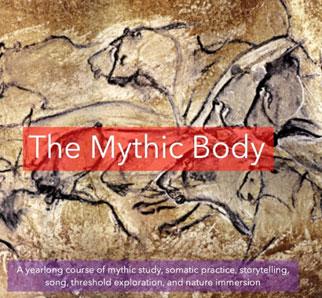
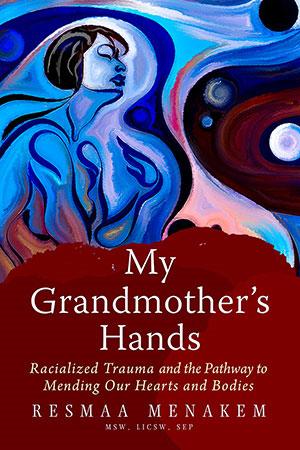










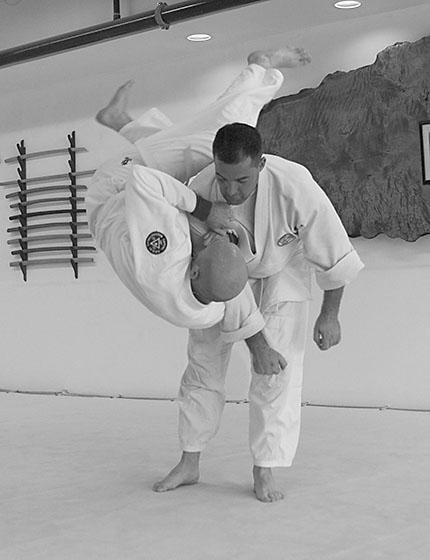





Chair
Black
11/1/2022
instructor of Being in Movement® Embodied Peacemaking
of the ACR Taskforce on Safety in ADR
© Stephen Kotev 2022 Stephen Kotev All Rights Reserved 2022 18
Belt in Aikido and Purple Belt in Brazilian Jiu Jitsu
OBJECTIVES:
To provide you with a different way of looking at confrontation/engagement To talk about an untapped resource in the Japanese martial art of Aikido To provide powerful examples of creative disruptions of high conflict situations ©
GETTING TO KNOW YOU
• What would you like to learn today/what caught your attention?
• Please also share, What do you do – And how long have you been doing it for ©


WHEN WAS THE LAST TIME YOU DID SOMETHING TOTALLY UNEXPECTED DURING A DIFFICULT CONVERSATION OR MEETING? • Take a moment to reflect • Then find a partner and share your experience and how others were impacted by this action ©

11/1/2022
2022
Stephen Kotev
2022
Stephen Kotev
19
Stephen Kotev 2022
A deeply spiritual man, Ueshiba strove to meld his spirituality with his martial practice.





He created Aikido as a way to transform the notion of warrior: from that of destroyer to protector.



11/1/2022
Stephen Kotev 2022, image courtesy of Aikiweb
©
Image
of Aikido Journal © Stephen Kotev 2022
Morihei Ueshiba Founder of Aikido
courtesy
Image courtesy of Aikiweb.com © Stephen Kotev 2022 20
ATEMI


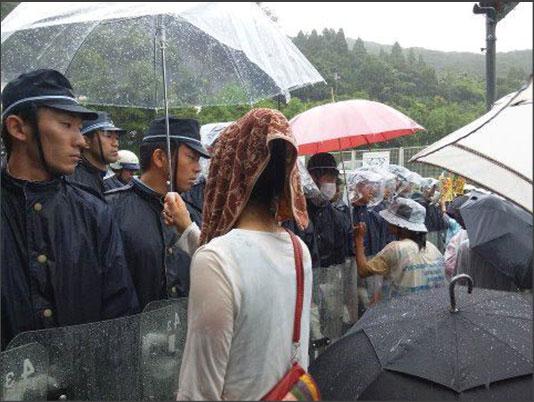


11/1/2022
© Stephen Kotev 2022 “YOUR
© Stephen Kotev 2022 © Stephen Kotev 2022 21
A strike meant to unbalance and surprise NOT injure the attacker
SHOES UNTIED”
VERBAL ATEMI








11/1/2022
2022
2022 YOU
22
A creative technique used to disrupt a pattern of intent through unexpected and unorthodox means
© Stephen Kotev
© Stephen Kotev
WENT WHERE?...










11/1/2022
2022 + +
© Stephen Kotev
23
GOOD COUNSEL FROM UNCLE IROH
CAN YOU THINK OF ANY OTHER EXAMPLES WHERE YOU DID SOMETHING UNEXPECTED THAT DISRUPTED OR DEESCALATED THE CONFLICT?
“Moving through the gaps in your mind.”





11/1/2022
VERBAL JIU JITSU -SIFU TIM TACKETT
Stephen Kotev 2022
©
© Stephen Kotev 2022 24
Tetsuzan Kuroda Sensei
HILL, WASHINGTON DC JUNE 16, 2007
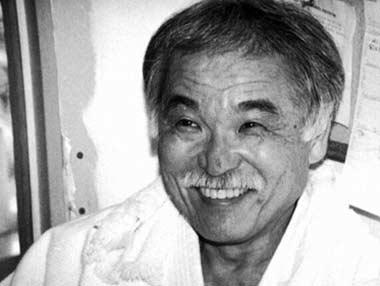




11/1/2022
CAPITOL
© Stephen Kotev 2022, Image Wikimedia Commons © Stephen Kotev
2022
“You have to hit them with love.”
© Stephen Kotev 2022 25
Clyde
Takeguchi Sensei





11/1/2022
YOUR GOAL IS TO CONNECT TO THE BEST VERSION OF THE OTHER PERSON THAT YOU CAN ACCESS
© Stephen Kotev 2022
© Stephen Kotev 2022, Image Wikimedia Commons 26
OPENING PRESENTS BY DAVID CLARK
A SOFT ANSWER




 BY TERRY DOBSON
BY TERRY DOBSON
QUESTIONS?
11/1/2022
© Stephen Kotev 2022
Stephen Kotev All Rights Reserved 2022 27
WHAT IS ONE SIMPLE THING THAT YOU TOOK AWAY FROM TODAY THAT YOU CAN USE TOMORROW?
VERBAL ATEMI A TECHNIQUE FOR CREATIVE DISRUPTION
 Presented by Stephen Kotev Stephen@StephenKotev.com
Presented by Stephen Kotev Stephen@StephenKotev.com
11/1/2022
28
© Stephen Kotev 2022
IN THEIR SHOES
IN THEIR SHOES
Every year in Georgia, more than 40,000 victims report experiencing domestic violence. ADR professionals encounter these victims every day, but many struggle to understand the barriers victims face and the choices they make. This interactive workshop, presented by Kylee Elliott, will feature an activity to help participants understand the limited options available to victims. This session will conclude with a discussion of how ADR professionals may be part of a coordinated community response supporting survivors in their journey towards a life free from domestic violence.
Presented by: Kylee Elliott
29THANNUALADRINSTITUTE NOVEMBER 18, 2022 GEORGIA TECH HOTEL AND CONFERENCE CENTER
29
9:55 AM TO 10:55 AM 1 CLE HOUR In-person attendees can join In Their Shoes in Conference Room A . This session will NOT be livestreamed to virtual attendees.
Kylee Elliott
Support Survivors of Murder Suicide Project Coordinator Georgia Commission on Family Violence 2 MLK Drive, Suite 470, East Tower, Atlanta, GA 30334 Direct: 404 615 3267 Fax: 470 745 0497 kylee.elliott@dcs.ga.gov gcfv.georgia.gov
Kylee Elliott is the Support Survivors of Murder Suicide Project Coordinator for the Georgia Commission on Family Violence. In that capacity she both individually supports survivors that have lost loved ones to murder suicide by walking alongside them as they navigate the myriad of legal, emotional, and social challenges present after such a tragedy. She develops, promotes, and guides community driven programs that enhance and build local services for survivors of murder suicide across the state of Georgia, and she created and leads the Georgia Murder Suicide Response Network which consists of a statewide network of licensed mental health clinicians trained in providing grief support to survivors of violent loss using the Restorative Retelling model of clinical support.
Prior to her current role Kylee worked for nearly a decade at a community based domestic violence and sexual assault center directing and managing their legal advocacy program. During her tenure the Cobb County Temporary Protection Order office was recognized by many in the legal community as one of the busiest and most progressive TPO advocacy departments in the state of Georgia.
Kylee has served on the Family Violence Intervention Program (FVIP) Rules Committee for the State of Georgia and has been qualified as an expert witness in family violence. She is the current chair of the Georgia TPO Forum, is a member of
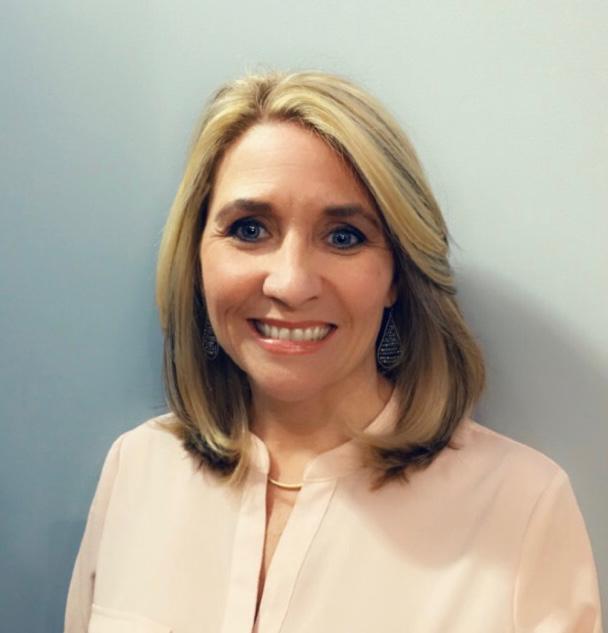
30
the National Homicide Roundtable and the Georgia Suicide Stakeholder Task Force.
Kylee is the former chair of both the Cobb County Domestic Violence Task Force and the Fatality Review Committee.
Kylee regularly provides training and technical support both nationally and locally on issues related to family violence, murder suicide response, safety planning and stalking victimization. Kylee is a Certified Professional Trainer on Stalking Victimization by SPARC, a QPR Suicide Prevention Gatekeeper Instructor, and a a Georgia Women’s Policy Institute Fellow (2020 2021).
Kylee received bachelor’s degrees in both Criminal Justice and English from the University of Georgia and prior to becoming a victim advocate she worked in the legal field as a paralegal and also had an extensive career in the non profit organization field as a fundraising, development and operations director.
31
GeorgiaCommission onFamilyViolence

Whoweare:
●GCFVwascreatedin1992bythestatelegislaturetodevelopa comprehensivestateplanforendingfamilyviolenceinGeorgia
WhatourProjectsare:
●FamilyViolenceFatalityReview
●SupportforSurvivorsofMurder-Suicide
●FamilyViolenceInterventionProgram
●FamilyViolenceTaskForces
●LawEnforcementEducationProgram

WhatwedoinGeorgia:
●Trackdomesticviolence-relatedfatalities
●Studyandevaluateneedsandservicesrelatingtofamily violence
●Evaluateandmonitortheadequacyandeffectivenessofexisting familyviolencelaws
●Initiateandcoordinatethedevelopmentoffamilyviolence legislation
●HosttheAnnualFamilyViolenceConference
●MonitorandcertifyFamilyViolenceInterventionPrograms
●Developmodelsforcommunitytaskforcesonfamilyviolence
●ProvidetrainingtoLawEnforcementonFamilyViolence
Nationally

1in4womenwillexperiencedomesticviolenceduringtheirlifetime. Morethan3womenaremurderedbytheirhusbandsorboyfriendseveryday.
53womenareshottodeathbyacurrentorformerboyfriend orhusbandeverymonth.

Victimsofdomesticviolence:85%women,15%men
Alleconomicgroups,races,religions,sexualorientations,professions,age,etc.
InTheirShoes 11/18/22 NikiLemeshka,GCFV InTheirShoes ThisprojectwassupportedbysubgrantnumberW21-8-013,awardedbythestateadministeringofficefortheSTOPFormulaGrantProgram.Theopinions, findings,conclusions,andrecommendationsexpressedinthispublication/program/exhibitionarethoseoftheauthor(s)anddonotnecessarilyreflectthe viewsofthestateortheU.S.DepartmentofJustice,OfficeonViolenceAgainstWomen.
gcfv.georgia.gov
Howprevalentis domesticviolence?
11,541 NumberofExParteTemporaryProtective Orders(TPOs)IssuedinGeorgiain2020 +76% IncreaseinFamilyViolenceMurder-Suicide FatalitiesinGeorgiafrom2020to2021 HowPrevalentisFamilyViolenceinGeorgia? 212 KnownFamilyViolenceFatalitiesinGeorgia in2021 42,635 NumberofReportedFamilyViolence IncidentsinGeorgiain2021 Whatisdomesticviolence? 1 2 3 4 5 6 32
CycleofViolence
DomesticViolence

Apatternofbehaviors usedtogainor maintainpowerand controloveran intimatepartner.

Physicalandsexual violence,threatsand intimidation, emotionalabuseand economicdeprivation.



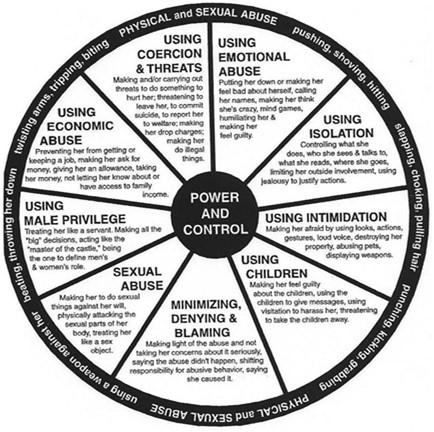
InTheirShoes 11/18/22 NikiLemeshka,GCFV
Notallviolentrelationshipsmirrorthiscycle. Manipulation Whydoesshestay? Leavingisa process. Leavingis dangerous. Victimsstayand/orreturnin ordertosurvive. Activity 7 8 9 10 11 12 33
LethalityIndicators:Changeinrelationshipstatus
Whatcanyourprograms dotohelp?
Whatcanyourprogramsdotohelp?
Utilizethescreeningandreinforceitsimportancetothesafetyofall particpants.
Listenandbelievevictims.Benonjudgmental. Askaboutsafedecisions.
“Whatyouaredescribingisconcerningandcommon.” “Youdonotdeservetobeabused.” “Doesthisplanmakeyoufeelmoreorlesssafe?”
Whatcanyourprogramsdotohelp?
Knowtheservicesinyourareaandmakeawarmreferral!

“Advocatesatthedomesticviolenceprogramcantalktoyou aboutyouroptionsandhelpyousafetyplan.”
Sharetheseconfidentialhotlines: 1(800)33-HAVEN(Georgia) 1(800)799-SAFE(National)
Whereisthebuyin?
Systemsinvolvementcanalso leadtoburnoutorthe appearanceofapathyonthepart ofthevictim.
Remember,mediationisjustone ofalargersetofstressorsthat oftenenvelopvictimsaftera familyviolenceincident.

InTheirShoes 11/18/22 NikiLemeshka,GCFV
•24-hourcrisisline •Safe,confidentialshelteraccessibletovictims24/7 Linkswithcommunityagencies •Children'sservices Emotionalsupport •Communityeducationservices •Legalandsocialserviceadvocacy Householdestablishmentassistance •Followupservices Parentingsupportandeducation AllCertifiedDVProgramsProvide Supervise d Exchange/ Visitation Filesfor Divorce FamilyCourt Hearing FinalDivorce Hearing Mediation Interviews byEvaluator Custody Awarded Child Support Established Custody Hearing Temporary Custody Praxis–RuralTechnicalAssistanceonViolenceAgainstWomen
13 14 15 16 17 18 34


InTheirShoes 11/18/22 NikiLemeshka,GCFV Advocacy Program Landlord/HRA Notified WarningGiven EvictionHearing SheriffEvicts 911 Cal Squads Investigat e ArrestNoArrest Arrest Report Non-Arrest Report Jail Arraignment Hearing NoContact Order Conditions ofRelease Pre-Trial/ Hearing TrialSentencingMonitoring /Probation FilesOFP Seeks Shelter ExParte Granted Sheriff Serves Respondent ExParte Denied JudgeReviews Civil Court Hearing InitialIntervention UnitContacted ChildProtection Screening CPInvestigation ChildWelfare Assessment Child Maltreatment Assessment LawEnforcement Notified Risk Assessment ServicePlan SafetyPlan CPCase Mgmt CDAssessment Psych/MentalHealth ParentingEducation Visitation Individual/FamilyTherapy DVClasses Emergency Placement EPC Hearing Safety Assessment CHIPSCOURT CourtOversees andSanctionsPlan ChildPlacement OFP Granted OFP Denied Reliefs Granted OFP Filed Supervised Exchange/Vi sitation Filesfor Divorce FamilyCourt Hearing FinalDivorce Hearing Mediation Interviews byEvaluator Custody Awarded Child Support Established Custody Hearing Temporary Custody Praxis–RuralTechnicalAssistanceonViolenceAgainstWomen Abuser accountability andvictim safetygohand inhand! Accountability andsafetyare twosidesof thesamecoin! Whatcanyourprogramsdotohelp? Knowthedifferencebetweenangermanagementissuesand domesticviolence. Includeabuserinterventioninsettlements. “FamilyViolenceInterventionProgramisrecommendedfor peoplewhohaveusedabusivetacticsintheirrelationships.” FVIPInformationisavailableat: https://gcfv.georgia.gov/family-violence-intervention-programs FamilyViolenceInterventionPrograms(FVIP) ●Designedtorehabilitatefamily violenceoffendersbyholding themaccountableand prioritizingvictimsafety ●FVIPAddresses: Powerandcontrol Beliefsandsocialcontext Effectsofviolenceandabuse ●24-weekpsycho-educational classes ●Focusonaccountabilityand nonviolenceoversaving relationships ●Notconfidential ●Centeredonvictimsafety ●Referralsourcesareupdated uponparticipant’scompletion ortermination FVIPandAngerManagementarenotInterchangable FamilyViolenceInterventionProgram ●Powerandcontrol ●CommunityPsychology ●Target:thoseinarelationshipwith individual ●ProgramsareStateCertifiedand Monitored ●VictimsContactedthroughDVVictim Liaison ●Noconfidentiality AngerManagement ●Impulsecontrol ●ClinicalPsychology ●Target:anyone ●Nostatecertificationand monitoring ●Nocontactwithvictims ●Maybeconfidential ThankYou! NikiLemeshka ProgramManager Niki.Lemeshka@dcs.ga.gov (470)270-4125 ContactGCFV: gcfv.georgia.gov Georgiafatalityreview.com (404)657-3412 19 20 21 22 23 24 35
Family Violence: Georgia Statistics
a pattern of abusive behavior in any relationship that is used by one partner to gain or maintain power and control over another intimate partner.¹
Known family violence-related fatalities in Georgia totaled 1,493; a 57% increase from 2012-2021.² 212


Known family violencerelated fatalities in Georgia in 2021.²
There were 42,031 family violence incidents reported to law enforcement in 2020.³
In 2020, 69% of victims in family violence incidents reported to law enforcement were female and 31% were male.³
In 2021, there were 114,640 crisis calls to Georgia's certified family violence and sexual assault agencies, a 20% increase from 2020 crisis calls.⁴
There were 27,894 family violence and stalking Temporary Protective Orders (TPOs) issued in 2020.⁵
In 2020, the overall "extension rate," or the rate at which Ex Parte (emergency) TPOs were extended into a longer-term TPO (6-month, 12-month, 3-year), was 39%.⁵
There was a 49% increase in family violence-related fatalities from 2020 to 2021.²
In 2021, firearms were the cause of death in 85% of all family violence-related fatalities.²
49%
85% 39%
114,640
27,894 42,031
69%
FAMILY VIOLENCE is
1,493
1-800-33-HAVEN (VOICE/TTY & SPANISH) CALL THE TOLL-FREE, 24-HOUR HOTLINE FOR CONFIDENTIAL HELP AND RESOURCES.
1,381
THE
HOTLINE 855-812-1001
DEAF
(HOTLINE@ADWAS.ORG) CONTACT THE 24-HOUR HOTLINE FOR CONFIDENTIAL HELP AND RESOURCES. 36
Other 31%
Family violence-related murder-suicide fatalities increased 76% from 2020 to 2021.²

Gender in Murder-Suicide Incidents
95% (40)
Weapons in Murder-Suicide Fatalities
murder-suicide
NationalStatistics
by a female.²
by a male and 5% (2) were
A firearm was the cause of death in 94% of all family violence-related murder-suicide fatalities in 2021.²
Over their lifetime, 1 in 5 of women and 1 in 7 men experience severe physical violence by an intimate partner.⁶
Over their lifetime, 1 in 3 (31%) women and 1 in 6 (16%) men have been stalked by an intimate partner placing them in fear for their own life or the lives of those close to them.⁶
Half of women seen in emergency departments report a history of abuse, and approximately 40% of those killed by their abuser sought help in the 2 years before the fatal incident.⁷
The presence of a gun in domestic violence situations increases the risk of homicide by 500%.⁸
41% of sexual and gender minority high school students and 10.5% of heterosexual students, report experiencing physical and/or sexual dating violence.⁹
Lowry, R. (2020). Interpersonal violence victimization among high school students — youthriskbehaviorsurvey,UnitedStates,2019.MMWRSupplements,69(1),28–37.https://doi.org/10.15585/mmwr.su6901a4
This project was supported by subgrant numbers W21-8-012 and W21-8-013, awarded by the state administering office for the Office on Violence Against Women, U.S. Department of Justice’s STOP Formula Grant Program. The opinions, findings, conclusions, and recommendations expressed in this publication/program/exhibition are those of theauthor(s)anddonotnecessarilyreflecttheviewsofthestateortheU.S.DepartmentofJustice.. REVISEDJUNE2022
10.5% 41% 31%16%
In 2021,
of family violence-related
incidents were perpetrated
perpetrated
1. Office of Violence Against Women (2012). http://www.ovw.usdoj.gov/domviolence.htm, 2. Georgia Family Violence Fatality Review Project (2022), 3. Georgia Crime InformationCenter(2021).PersonalCommunication., 4.CriminalJusticeCoordinatingCouncil(2022).PersonalCommunication.,5.GeorgiaProtectiveOrderRegistry, Personal Communication., 6. Centers for Disease Control and Prevention, (2022). https://www.cdc.gov/violenceprevention/intimatepartnerviolence/index.html, 7. Huecker MR, King KC, Jordan GA, et al. Domestic Violence. [Updated 2021 Aug 26]. In: StatPearls [Internet]. Treasure Island (FL): StatPearls Publishing; 2022 Jan-. Available from: https://www.ncbi.nlm.nih.gov/books/NBK499891/ 8. Bureau of Justice Statistics (2013). https://www.bjs.gov/content/pub/pdf/ipvav9311.pdf, 9. Basile, K. C., Clayton, H. B., DeGue, S., Gilford, J. W., Vagi, K. J., Suarez, N. A., Zwald, M. L., &
37
02 Lethality Indicators




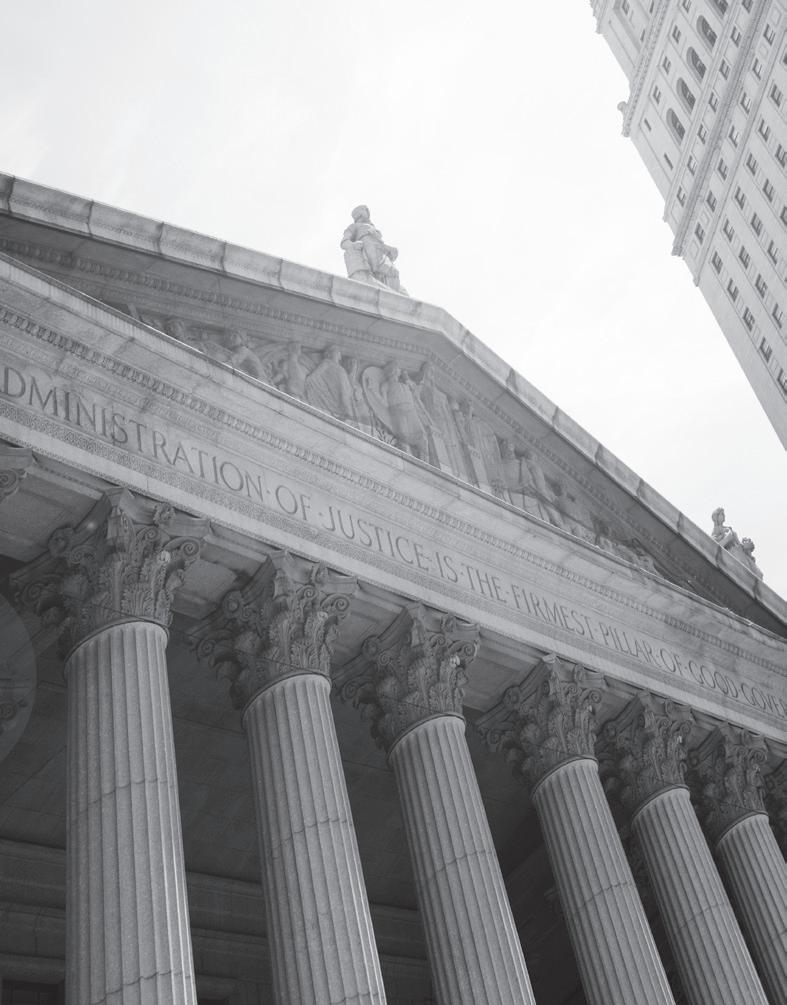




2018 | 15TH ANNUAL REPORT
38
One of the key questions Fatality Review Teams (FRTs) sought to answer during the review process was, “What lethality indicators were present in this case?” The answers to this question were uncovered in police reports, court filings and during interviews with the family and friends of the deceased. In nearly every reviewed case, multiple lethality indicators were present.
Unfortunately, due to gaps in information sharing, training and communication among service providers, rarely did anyone who was in a position to help the victim have a complete grasp on the danger the victim was in. Moreover, victims and those closest to them were also not able to connect the dots between the perpetrator’s behaviors and what it meant for the safety of the victim. During interviews, several family members shared with FRTs that, while they knew something was not right, they never imagined their loved one would be killed. Victims who survived their abusers’ attempts to kill them and who were interviewed by the Project indicated a similar sense of their level of danger. While they were scared of what the perpetrator could do, they did not fathom they were in mortal danger — especially at the hands of someone they loved and who professed to love them.
Though all domestic violence cases involve some risk of serious or fatal injury, there are some situations which stand out as more dangerous. Homicide prediction is not an exact science. However, several factors have emerged from research and should be considered benchmarks for increased likelihood of lethal violence.
Georgia is not alone in the study of domestic violence-related deaths. The Project joins 40 other states nationwide whose active FRTs contribute to the study of lethality indicators in abusive relationships (National Domestic Violence Fatality Review Initiative, 2018). Working alongside the research of Jacquelyn Campbell, Evan Stark, T.K. Logan, Neil Websdale and many more, the fatality review process generates data and analyzes trends regarding cases which ended in lethal incidents of abuse. The commonalities within the incidents, also known as lethality indicators, include:
+ history of physical and/or non-physical domestic violence
+ increasing severity or frequency of abusive incidents
+ looming accountability related to criminal charges or civil matters
+ stalking
+ use of strangulation
+ presence of a firearm
+ previous suicide threats or attempts
+ co-occurring depression
+ co-occurring drug or alcohol abuse
+ prior threats to kill, or threats which involve weapons
+ threats to take, harm or kill the victim’s children
+ abuse during pregnancy
+ harm to pets
+ diagnosis of a serious or terminal illness
+ anticipated loss of financial security or job loss
+ possessiveness over victim or severe/morbid jealousy
+ change in relationship status
The wide range of lethality indicators and the ebb-and-flow, in terms of both victim safety and relationship status which accompany abusive intimate relationships, necessitate ongoing safety planning and risk assessment for victims of domestic violence. Steps taken to move away from an abusive relationship should be contemplated and navigated with the assistance of a trained professional who is well-versed in risk assessment and safety planning with victims.
To identify high-risk victims and provide appropriate intervention, professionals conducting risk assessments must consider the comprehensive combination of the victim’s experiences and known risk factors. Given the complexity of the issues in intimate partner violence, generating a list of factors comprehensive enough to encompass all of the issues identified in fatal abuse is nearly impossible. And while we cannot predict what will happen over the course of an abusive relationship nor how it will end, assisting victims in understanding the potential risk their abusive partner poses to their safety is paramount.
8
LETHALITY INDICATORS | 02 39
HISTORY OF DOMESTIC VIOLENCE
Without question, past behaviors remain the most accurate indicators of future risk. For that reason, a prior history of domestic violence remains a red flag for potential lethality in abusive relationships. Perpetrators are known to employ a wide variety of techniques in their attempts to maintain power and control over victims. When some types of abuse are present in the history of the relationship, there is a higher association with lethal violence.
In 91 percent of cases reviewed by the Project, there was a known history of physical and/or non-physical domestic violence between the victim and perpetrator prior to the fatal incident. National research has yielded similar findings, showing at least two-thirds of women killed by an abusive partner were battered prior to a fatal incident (Campbell, 2017). A perpetrator’s use of violence in his past relationships may also be tied to potential risk for current or future victims. In 26 percent of cases reviewed by the Project, the perpetrator was known to have been abusive to at least one prior partner.
Victims in cases reviewed by the Project experienced physical abuse which included being hit or slapped in the face or body, being grabbed by the neck, handcuffed to a bed, kicked, pinned down, having a gun pulled on them or held to their head, having a bullet shot into a surface next to them, having their hair pulled,
being pushed down stairs or into a wall, being spit on, and having their teeth knocked out. In 21 percent of cases reviewed by the Project, the abuser was known to perpetrate sexual violence in the relationship. Documented injuries to victims, as noted in police incident reports, included bruises, cuts and contusions, head injuries, busted lips, bloody noses, broken bones, neck injuries due to strangulation, red marks on shoulders, burning caused by a foreign substance, and stab wounds.
INCREASING SEVERITY OR FREQUENCY OF ABUSIVE INCIDENTS
One of the most commonly identified characteristics for increased risk of lethal violence is an uptick in the frequency or severity of abusive incidents. The shift can be sudden and may be accompanied by an increase in serious injuries to the victim. Perpetrators were known to have inflicted serious injury on their victim in 25 percent of the cases reviewed by the Project.
Often when law enforcement responds to abuse, however, there is no significant physical indicator signaling the severity of violence in the relationship. In 75 percent of reviewed cases there was contact with law enforcement about abuse at some point prior to the homicide, in only 23 percent of those incidents was a visible injury documented when law enforcement responded to a domestic violence incident involving the parties.
2018 | 15TH ANNUAL REPORT
02 | LETHALITY INDICATORS HISTORY OF DOMESTIC VIOLENCE AGAINST VICTIM
Known Lethality Indicators in Reviewed Cases (2004–2018) DOCUMENTED INJURIES AT LAW ENFORCEMENT CONTACT When Law Enforcement Contacted About Abuse in Reviewed Cases (2004–2018) 9% 91% No Known History of DV Known History of DV 77% 5% No Visible Injuries 18% Visible Injuries, Minor Visible Injuries, Major 40
Perpetrator’s
RATES OF CONTACT WITH CRIMINAL JUSTICE AGENCIES AND COURTS
By Victim and Perpetrator in Reviewed Cases (2004–2018)
PERPETRATOR VICTIM
Law Enforcement
Prosecutor
Magistrate Court
Superior Court
Probation Civil Court/ Juvenile Court
State Court Parole Municipal Court
LOOMING ACCOUNTABILITY RELATED TO CRIMINAL CHARGES OR CIVIL MATTERS
Often accompanying the increased frequency or severity of abuse within the relationship, increasing contact with civil and criminal justice systems is an indicator of elevated risk of lethal violence. In reviewed cases, a startling 83 percent of perpetrators were in contact with law enforcement officers in the five years leading up to the fatal incident of abuse.
In a national study researching risk of intimate partner homicide, victims of completed or attempted femicide experienced abuse by a partner who had been arrested for domestic violence in 27 percent of cases (Campbell, 2017). Further, 48 percent of perpetrators in reviewed cases were known to have a violent criminal history. Details of police contacts about abuse were known in 69 percent of reviewed cases. In those cases, 254 incidents of abuse were reported, of which 199 calls (78 percent) had known outcomes. Roughly
half of those incidents (98 incidents, 49 percent) resulted in an arrest. For more information on criminal justice outcomes in reviewed cases view related data on page 68.
Both victims and perpetrators in reviewed cases were also likely to have engaged in the civil court system, usually through the Temporary Protective Order (TPO), divorce or child support processes. In reviewed cases, 24 percent of victims had previously obtained a TPO against the perpetrator. Thirteen percent of victims had a TPO in place at the time of the fatal incident. TPOs are a highly useful tool for victims seeking safety from abuse, but the multi-step process of obtaining a TPO may lead to an escalation in threatening or violent behavior by the perpetrator. It is imperative all victims of domestic violence seeking relief from the courts be referred to a domestic violence advocate who can explore the potential risks associated with filing a TPO, conduct risk assessment and safety planning, and offer additional resources and support.
10
50
30%
33%
21%
23%
79% 0%
50 100 100 83% 40% 55%
40%
40% 11% 38%
36%
22% 2% 10% 6% 8% 0%
LETHALITY INDICATORS | 02
41
STALKING
The term “stalking” most commonly refers to a course of conduct directed at a specific person that would cause a reasonable person to feel fear. This course of conduct, or pattern of behaviors, often includes the following acts by the perpetrator: placing the victim under surveillance; sending unwanted gifts or messages; damaging the victim’s property; making threats to harm the victim, their loved ones, or their property; and harassing the victim privately or in public. Stalking behaviors were known to be present in 58 percent of all cases reviewed by the Project. Our research supports other research nationwide, indicating intimate partner stalkers are the most dangerous type of stalker and stalking is a risk factor for homicide (Mohandie et al., 2006; McFarlane et al., 1999).
Intimate Partner Stalking was the focus of the 2017 Georgia Domestic Violence Fatality Review Project Annual Report. That report covers the tactics used by intimate partner stalkers in-depth and identifies ways to address communities’ response to the issue. The 2017 report can be downloaded from GeorgiaFatalityReview.com/reports/report/2017-report. This issue is also briefly explored on page 40.
USE OF STRANGULATION
Use of strangulation both indicates an increase in the severity of abuse as well as a higher risk of lethal violence (Campbell, 2017). One study found the likelihood of becoming a homicide victim increased sevenfold for women who had been strangled by their partner (Glass et al., 2008). Non-fatal strangulation assault often leaves no visible injuries. This fact simultaneously reduces the likelihood an abuser will be held accountable for the act, and serves as notice to the victim he is willing and able to kill her.
In circumstances where the victim has been strangled to the point of loss of consciousness on multiple occasions, the lethality risk is substantially higher (Campbell, 2017). Non-fatal strangulation was known to have occurred prior to the lethal incident in 23 percent of cases reviewed by the Project. It should be noted, however, that Project data is primarily sourced from open records of reported abuse by the victim; given this, and considering the victim was deceased and unable to tell us if they had experienced strangulation assault prior to their death, this percentage is likely to be an undercount.
USE OF STRANGULATION
2018 | 15TH ANNUAL REPORT 02 | LETHALITY INDICATORS
RELATIONSHIP
STALKING BEHAVIORS IN THE
Perpetrator’s Known Lethality Indicators in Reviewed Cases (2004–2018)
42% No Known History of Stalking 58% Known History of Stalking 77% No Known History of Strangulation 23% Known History of Strangulation 42
Perpetrator’s Known Lethality Indicators in Reviewed Cases (2004–2018)
PRESENCE OF A FIREARM
Outnumbering all other means combined, firearms were the leading cause of death for victims in cases reviewed by the Project. The presence of a firearm in domestic violence situations increases the risk of homicide, regardless of who owns the gun. This issue is explored more in depth on page 23.
PREVIOUS SUICIDE THREATS OR ATTEMPTS
The strong connection between suicide and domestic violence homicide risk is made apparent when evaluating the indicators which overlap both issues. Abusers who are at increased risk of perpetrating a domestic violence-related homicide or murder-suicide often have: symptoms of depression; a history of prior suicide threats or attempts; a history of substance abuse; experiences of a recent medical crisis, financial issues, loss of a loved one, or relationship changes; access to a firearm; and/or looming accountability for their behavior, such as an impending arrest or a court case.
In a national study on the risk of intimate partner homicide, female victims who were killed experienced abuse by a male partner who had threatened or attempted suicide 39 percent of the time (Campbell, 2017). Georgia research yields identical data: 39 percent of the Project’s reviewed cases are classified as attempted or completed murder-suicides. Further demonstrating the risk a suicide crisis poses to victims of intimate partner violence, perpetrators in Project-reviewed cases were known to have known to have threatened or attempted suicide prior to the fatal incident in 37 percent of cases.
The homicide-suicide connection was the focus of the 2016 Georgia Domestic Violence Fatality Review Project Annual Report. This report includes information and recommendations for how to address the intersection of suicide and domestic violence to reduce the likelihood of a murder-suicide incident. The 2016 Annual Report can be downloaded from GeorgiaFatalityReview. com/reports/report/2016-report. This issue is also explored on page 37.
12 LETHALITY INDICATORS | 02
59% 0% 25 50 75 100 Firearm 23% Stabbing 9% Strangulation, Hanging, or Asphyxiation 7% Blunt Force 1% Run Over by Car 1% Multiple Traumatic Injuries VICTIM CAUSE OF DEATH in Reviewed Cases (2004–2018) SUICIDE THREATS OR ATTEMPTS BY PERPETRATOR Perpetrator’s Known Lethality Indicators in Reviewed Cases (2004–2018) 63% 37% No Known History of Suicide Threats or Attempts Known History of Suicide Threats or Attempts 43
PERPETRATOR’S
HISTORY OF DEPRESSION
Perpetrator’s Known Lethality Indicators in Reviewed Cases (2004–2018)
PERPETRATOR’S HISTORY OF ALCOHOL OR DRUG ABUSE
CO-OCCURRING DEPRESSION
Though not all depressed people will experience a suicide crisis, the two are often linked. In 34 percent of cases reviewed by the Project, the perpetrator was known to be depressed prior to the fatal incident. Like with many of the lethality indicators, there is help for abusers experiencing symptoms of depression which could mitigate the risk of a lethal incident. Sadly, perpetrators in reviewed cases were known to be in contact with a mental health provider sometime in the five years prior to the lethal incident in only 24 percent of cases.
CO-OCCURRING DRUG OR ALCOHOL ABUSE
Substance abuse issues are often mistaken as the root of intimate partner violence, but we must be clear: Substance abuse and domestic violence often coexist in relationships, but substance abuse is not the cause of abuse. Many individuals who abuse substances never abuse their partner and, conversely, many who abuse their partner never abuse alcohol or drugs.

Perpetrator’s Known Lethality Indicators in Reviewed Cases (2004–2018)
Perpetrator’s
The cause of abuse is rooted in power and control, not the use of alcohol or drugs, but substance abuse is connected to increased risk of lethal violence. Alcohol and drug abuse were present in 52 percent of the Project’s cases prior to the fatal incident and Project data falls closely in line with other research. In a national study on the risk of intimate partner homicide, victims of completed or attempted femicide experienced abuse by a partner who was drunk every day in 42 percent of cases (Campbell, 2017). Increased alcohol abuse may also be part of an overall deterioration of the perpetrator’s personal circumstances including neglect of hygiene, depression, lack of sleep and job loss. Any combination of these factors is a cause for concern for victim safety.
Just as with depression, there is help for perpetrators who abuse drugs and alcohol. Although just 7 percent of perpetrators in reviewed cases were known to be in contact with a substance abuse treatment provider in the five years prior to the fatal incident, addressing substance abuse issues in addition to the domestic violence is paramount to reduce risk. This issue is explored more in depth on page 37.
2018 | 15TH ANNUAL REPORT 02 | LETHALITY INDICATORS
34% No
Known History
Depression 48% 52% No
66%
Known History of Depression
of
Known History of Alcohol or Drug Abuse Known History of Alcohol or Drug Abuse
History of Alcohol and Drug Abuse
44
While we cannot predict what will happen over the course of an abusive relationship nor how it will end, assisting victims in understanding the potential risk their abusive partner poses to their safety is paramount.
PRIOR THREATS TO KILL OR THREATS WITH WEAPONS
Abusers do not have to use physical force against a victim to be dangerous; threatening to kill the victim, especially with a weapon, can increase lethality. Making threats to kill the victim is a common tactic used by abusers to obtain or maintain power and control in the relationship. This tactic should also be considered a clear indicator of increased risk for potential lethal violence. In incidents reviewed by the Project, perpetrators were known to have made prior threats to kill the victim in 55 percent of circumstances.
Threats to cause harm to the victim using a weapon were also very common, with victims experiencing these threats in 38 percent of cases reviewed by the Project. While firearms pose a particularly significant threat to intimate partners, threats to use weapons of any type should be seen as a risk factor for potentially lethal violence. In cases reviewed by the Project, the perpetrator had previously harmed the victim with a weapon in 12 percent of cases.
THREATS TO/ABUSE OF VICTIM’S CHILDREN
Abusers often do not limit their violence to the intimate partner. Research has indicated it is not uncommon, in cases which
ended in fatal violence, for the abuser to have made threats to take, harm or kill children, as he demonstrated to the victim his willingness to use more severe violence (Zeoli, 2018b). In 45 percent of the Project’s cases, the perpetrator and victim shared at least one minor child. Project data also revealed that, while threats to cause harm to a child is an often-used tactic to manipulate or control the victim, in many circumstances the abuser had been known to escalate to child abuse. In 26 percent of reviewed cases, the perpetrator had been abusive to a child prior to the homicide. National research reveals a similar trend with abusers threatening to harm the children in 19 percent of cases studied (Zeoli, 2018b). One study showed perpetrators made threats to harm the children 19 percent of the time (Zeoli, 2018b), and killed children during the incident in 19 percent of intimate partner homicides studied (Campbell, 2017).
You can read more about the impact of domestic violence on children in the 2015 Georgia Domestic Violence Fatality Review Project Annual Report, available for download at GeorgiaFatalityReview.com.
THREATS TO FAMILY AND FRIENDS OF THE VICTIM
In 12 percent of reviewed cases, someone other than an intimate partner was killed in the fatal incident. This includes children of the intimate partner, new dating partners, family members
THREATS TO KILL VICTIM MADE BY PERPETRATOR
Perpetrator’s Known Lethality Indicators in Reviewed Cases (2004–2018)
PERPETRATOR MADE THREATS TO HARM VICTIM WITH A WEAPON
Perpetrator’s Known Lethality Indicators in Reviewed Cases (2004–2018)
14 LETHALITY INDICATORS | 02
62% 38% No Known History of Threats to Harm Victim with a Weapon Known History of Threats to Harm Victim
a Weapon
with
45% 55% No Known Threats to Kill Victim Known Threats to Kill Victim 45
CHILD ABUSE PERPETRATION
Perpetrator’s Known Lethality Indicators in Reviewed Cases (2004–2018)
THREATS TO KILL CHILDREN, FAMILY, AND/OR FRIENDS MADE BY PERPETRATOR
Perpetrator’s Known Lethality Indicators in Reviewed Cases (2004–2018)
16%
Known Threats to Kill Children, Family, and/or Friends
Known History of Child Abuse 84%
No Known History of Child Abuse
and bystanders. Often, children and other people close to the victim are targeted because they are with the intimate partner victim at the time of the fatal attack. Other times, the perpetrator intends to cause additional anguish to the intimate partner victim by harming her loved ones. That said, threats to kill family, friends or children of the victim should be seen as an indicator of potentially lethal violence.
Threats to kill family or friends of the victim were present in 16 percent of reviewed cases. National research reveals even more dire findings, with 34 percent of abusers who perpetrated lethal violence having made threats to kill victims’ families prior to the incident (Zeoli, 2018b).
ABUSE DURING PREGNANCY
In a national study on risk of intimate partner homicide, victims of completed or attempted femicide experienced beatings by their partner during pregnancy in 36 percent of cases (Campbell, 2017). The same study found 3 percent of femicide cases involved a victim who was killed while pregnant.
Research on women who died during their pregnancy or first year postpartum found the leading cause of death was homicide and the current or former intimate partner was the perpetrator in 55 percent of those deaths (Campbell, 2017).
Because it is not uncommon for victims at high risk for lethal violence to be abused during their pregnancy, additional screening for abuse and referrals for supportive services for pregnant women are encouraged. Pregnant women are regularly in contact with medical personnel. In fact, studies
show 40–47 percent of homicide victims were in contact with health care professionals in the year prior to their deaths (Campbell, 2017). Routine appointments, such as Special Supplemental Nutrition Program for Women, Infants and Children (WIC) screenings, provide a good point of entry for domestic violence assessments. Six percent of victims in cases reviewed by the Project were receiving WIC just before or at the time of the homicide.
HARM TO PETS
When animals in a home are abused or neglected, it is a warning sign others in the household may not be safe. A correlation between animal abuse and family violence has been well established, with studies identifying 71–85 percent of victims in domestic violence shelters report their abusers also threatened, harmed or killed the family pets (American Humane Association, 2016; Humane Society of the United States, 2008). Indeed, pet abuse is an effective tool batterers use to terrorize victims and keep them silent about their abuse.
Pet abuse — including tactics such as threats or physical harm to a pet, killing pets, deprivation of pets, and financial abuse impeding the obtaining of veterinary care — often functions to discourage victims from leaving the relationship, for fear the abuser will harm or release the pet if they take steps towards independence. Pets were used to manipulate all the victims interviewed for a recent Georgia study, regardless of the abuser’s reported affinity for the pet (Johnson, 2018). Concern for a beloved companion animal’s welfare prevents or delays 50–100 percent of victims from escaping domestic abuse
2018 | 15TH ANNUAL REPORT
74% 26%
No Known Threats to Kill Children, Family, and/or Friends 02 | LETHALITY INDICATORS 46
(Carlisle-Frank et al., 2004; Johnson, 2018). For victims who flee the relationship, pets left behind may be used as a tool of retaliation against a victim, as a way to coerce her return to the relationship, or as a way to intimidate the victim and children against testifying in court.
While Project data on pet abuse is limited, demand for domestic violence services for Georgia pets is on the rise. Ahimsa House, a Georgia nonprofit organization dedicated to helping human and animal victims of domestic violence reach safety together, has provided more than 84,000 nights of safe shelter for pets in need (M. Rasnick, personal communication, August 17, 2018). During 2017, Ahimsa House saw a 28 percent increase in demand for services over the prior year and received 24 times the number of calls as in 2007, the year the program expanded its reach statewide (Rasnick, 2018). To learn more about services to animal victims of domestic violence in Georgia, visit AhimsaHouse.org.
DIAGNOSIS OF A SERIOUS OR TERMINAL ILLNESS
Loss of physical health is a detriment to the mental health of any person, but for abusers already struggling to maintain a level of control in their family life, the diagnosis of a serious or terminal illness may amp up the risk to an intimate partner victim. The abuser may contemplate the victim’s future without him, which may trigger extreme jealousy. He may view the financial circumstances which often accompany a medical crisis as insurmountable, or may experience the onset of depressive symptoms or suicidal ideations, both of which put him in a position of increased risk to himself, the victim and others.
As is the case with victims experiencing abuse during pregnancy, the medical community is uniquely situated to screen domestic violence perpetrators experiencing a medical crisis and connect them with appropriate, supportive crisis and family violence intervention. In cases reviewed by the Project, during the five years leading up to the fatal incident, perpetrators were known to be in contact with a private physician in 19 percent of cases and made contact with a hospital in 20 percent of cases.
ANTICIPATED LOSS OF FINANCIAL SECURITY OR JOB LOSS
The anticipated loss of a person’s financial security, often in the form of a job loss, is detrimental to the dynamics of any home. In circumstances where abuse is present, the additional pressures associated with financial hardship can be dangerous. Financial success is a measure of power in American life, and
for abusers who struggle to obtain or maintain power and control in their relationships, loss of financial power may open up additional sources for relationship turmoil. In reviewed cases, 41 percent of perpetrators were employed full-time when they killed the victim. Seven percent were employed part-time and 25 percent of perpetrators were unemployed at the time of the lethal incident. For more information on the employment of perpetrators and victims in reviewed cases, consult the data included on page 62.
Although there are supportive community and government services to assist families experiencing financial crisis, it appears they were underutilized in cases reviewed by the Project. For example, only 8 percent of victims and 3 percent of perpetrators were receiving Temporary Assistance for Needy Families (TANF), also known as food stamps, prior to the lethal incident of abuse.
POSSESSIVENESS OVER VICTIM OR SEVERE/MORBID JEALOUSY
In a national study on risk of intimate partner homicide, victims of completed or attempted femicide experienced abuse by a partner who controlled all of their activities in 60 percent of cases (Campbell, 2017). The same study revealed that of abusers in those cases, 79 percent were violently jealous, making statements such as “If I can’t have you, no one can.” Georgia’s Project data supports the national findings that severe possessiveness of the victim and intense jealousy are precursors to potentially lethal abuse. In cases reviewed by the Project, perpetrators who went on to kill the victim were known to express attitudes of ownership over the victim 26 percent of the time.
Perpetrators of fatal abuse are also known to exhibit what researcher Neil Websdale refers to as “morbid jealousy.” Discussed in his book, Understanding Domestic Homicide, Websdale’s research reveals almost half of male perpetrators of intimate partner homicide displayed obsessive-possessive beliefs about their partners or former partners (Websdale, 1999).
Often growing from the perpetrator’s jealousy about the partner’s real or perceived affairs with other men, it is not uncommon for an abuser to socially or geographically isolate the victim. In roughly one-third of cases reviewed by the Project, the victim was isolated by the perpetrator prior to the homicide. In more than half of the cases reviewed by the Project, perpetrators were known to have exhibited monitoring and controlling behaviors towards the victim they later killed.
16 LETHALITY INDICATORS | 02
47
ATTITUDES OF OWNERSHIP OF VICTIM IN RELATIONSHIP
Perpetrator’s Known Lethality Indicators in Reviewed Cases (2004–2018)
MONITORING AND CONTROLLING BEHAVIOR IN RELATIONSHIP
Perpetrator’s Known Lethality Indicators in Reviewed Cases (2004–2018) 74%
Known History of Attitudes of Ownership of Victim
No Known History of Attitudes of Ownership of Victim
ISOLATION OF THE VICTIM IN RELATIONSHIP
Perpetrator’s Known Lethality Indicators in Reviewed Cases (2004–2018)
Known History of Isolation
No Known History of Isolation
Known History of Monitoring and Controlling Behavior
No Known History of Monitoring and Controlling Behavior
Monitoring and controlling behaviors are often a part of a pattern of stalking behaviors within the relationship, but also point to unhealthy levels of jealousy or possessiveness which can, in turn, indicate an increased level of fatal risk in an abusive relationship.
CHANGES IN RELATIONSHIP STATUS
Fatality reviews revealed that simply leaving an abusive relationship does not always lead to safety. Despite this, the public discourse around the issue of intimate partner violence often revolves around the question, “Why doesn’t she just leave?” In addition to relaying a sentiment of victim blame, that question fails to account for the serious risk facing victims who
decide to flee an abusive relationship.
Although studies show victims who leave an abusive relationship do eventually become more safe, statistically speaking, the risk of lethal violence actually increases for victims at the three-month and one-year mark after leaving the relationship (Campbell, 2017). Victims are at the highest risk of being killed by their abusive partners when they separate from them; both rates of, and severity of, physical abuse increase during periods of separation and divorce (Zeoli et al., 2013).
The majority of fatal incidents reviewed by the Project involved current or former intimate partners who were in a long-
2018 | 15TH ANNUAL REPORT
02 | LETHALITY INDICATORS
26%
68% 32%
44% 56%
48
RELATIONSHIP STATUS AT THE
TIME OF THE FATAL INCIDENT in Reviewed Cases (2004–2018)
Married or Civil Union
Married or Civil Union, but Separated 19% Long-term Relationship, Unmarried 8% Divorced 7% Formerly Dated 5% Formerly in Long-term Relationship, Unmarried 4% Dating
standing relationship. In just under half of reviewed cases, the relationship had ended or the couple had separated. However, this data does not accurately relay the anecdotal information which has been revealed through the fatality review process: that almost all victims were contemplating leaving the relationship or taking steps to do so.

A victim’s steps to gain independence may signal to the perpetrator that he is losing control over the victim. Some examples of steps taken by victims in reviewed cases included accepting a new job, increasing social activities, saving money, and changing locks on doors. In some cases, victims had an unspoken desire to leave the relationship and were in the early planning stages of assessing resources and options available to
them. All steps towards independence and separating, even less obvious steps, can trigger an increase in the severity of the abuse.
Understanding the risk factors which signal an increased risk for serious injury or death for domestic violence victims is imperative. Not only does it shape the services and interventions provided for victims and perpetrators, but it can help inform safety plans for victims. Beyond that, communities intent on addressing the problem of domestic violence are most effective when they consider these risk factors as they develop strategic initiatives to combat abuse.
18 LETHALITY INDICATORS | 02
33%
0% 25 50 75 100
25%
49
FAMILY VIOLENCE STATISTICS AND TRENDS IN
THE STATE OF GEORGIA 2013-2017
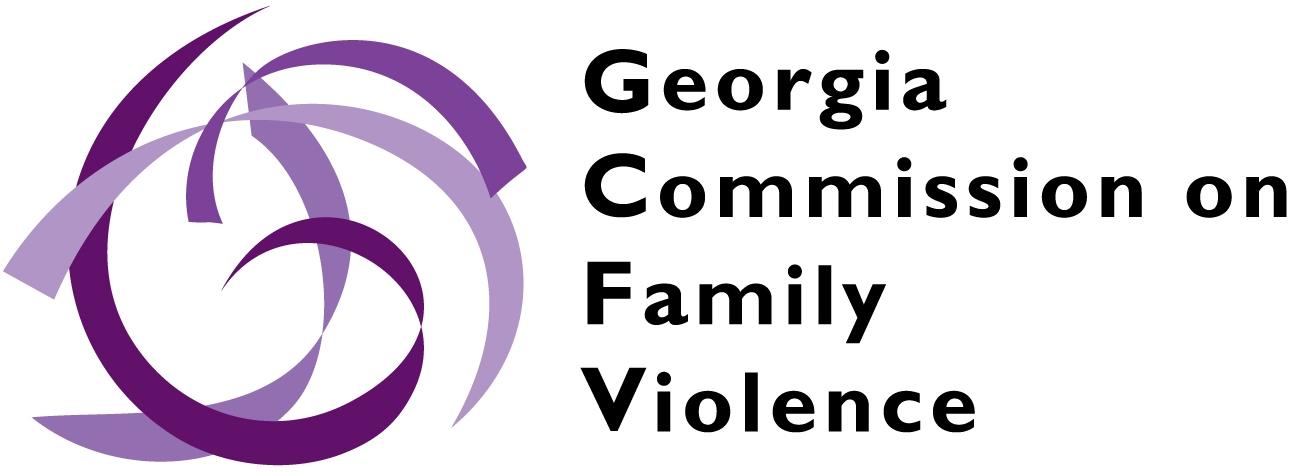
PUBLISHED JUNE 2020 50
ABOUT THIS REPORT
The coordinated community response to family violence in Georgia is continually evolving and improving. As stakeholders move toward evidence based decision making, the need for reliable data about the problem of family violence grows. The Georgia Commission on Family Violence (GCFV) recognizes the need for accurate and current information on how this prevalent and pressing issue is impacting Georgians. This report represents a key step forward in the State’s capacity to enable a strategic response to family violence.
Family violence in Georgia persists amid silence. Open discussion about the scope of the problem within our communities is an important step to enhance systems’ performance by preventing violence, intervening with people who are abusive, enhancing community connections and support, providing equitable access to resources, and ensuring effective responses with the goal of ending family violence in Georgia.
The data contained in this report represent only reported or known incidents of family violence in Georgia and should be considered an undercount of the true number of incidents statewide. Many abusive relationships are never known to the criminal or civil justice systems, and many services provided to victims and offenders are done under protection of confidentiality.
With the support of other state agencies including the Georgia Bureau of Investigation (GBI) and the Criminal Justice Coordinating Council, GCFV seeks to act as a clearinghouse for statewide data pertaining to the problem of family violence in Georgia. As we develop our data sharing partnerships, we hope to also grow the capacity of our reporting on this issue and the coordinated community response to family violence in Georgia.
ABOUT GCFV
The Georgia Commission on Family Violence is a state agency created by the Georgia General Assembly in 1992 to develop a comprehensive state plan for ending family violence in Georgia. The mission of GCFV is to provide leadership to end family violence by promoting safety, ensuring accountability, and improving justice for generations to come.
Charged with the study and evaluation of needs, priorities, programs, policies, and accessibility of services relating to family violence in Georgia, GCFV is led by 37 appointed Commissioners and a staff of eight. GCFV is administratively attached to the Georgia Department of Community Supervision (DCS).
1 51
GCFV carries out our statutory duties through the following projects:
Public Awareness and Education GCFV provides training statewide on family violence and related issues, such as building safer communities, protocol development, and ensuring a coordinated community response to relationship violence.
Statewide Annual Conference GCFV’s Annual Family Violence Conference provides an opportunity for more than 600 participants to receive training by state and national experts on best practices addressing family and domestic violence.
Family Violence Intervention Programs (FVIPs) GCFV and DCS establish standards for FVIPs in Georgia and provide training, certification, and monitoring of FVIP facilitators and programs. Certified FVIPs are designed to rehabilitate family violence offenders and are charged with prioritizing victim safety and participant accountability.
Community Task Forces GCFV works throughout the state to help create and support task forces made up of citizen volunteers working to end family violence in their communities.
Domestic Violence Fatality Review - GCFV compiles statistics and studies trends unique to family violence-related deaths in Georgia and works with communities to conduct in depth case reviews and to implement recommendations for systematic change.
Support for Survivors of Murder Suicide GCFV provides support, resources, and referrals to survivors of family violence related murder suicide incidents occurring in Georgia, as well as provides training, technical assistance, and resources to communities responding to murder suicide incidents.
Legislative Advocacy GCFV has been instrumental in creating laws which enhance safety for victims of family violence and their children, and increase accountability for family violence offenders.
Research GCFV conducts ongoing research on a range of issues related to family violence and periodically disseminates the findings to policymakers and the general public.
For more information, visit gcfv.georgia.gov.
2 52
Over thecourseofthe five year reportingperiod,therateof familyviolence incidents reported to lawenforcementfell 6%. There were 311,975 family violence incidentsreported in Georgia,2013 2017
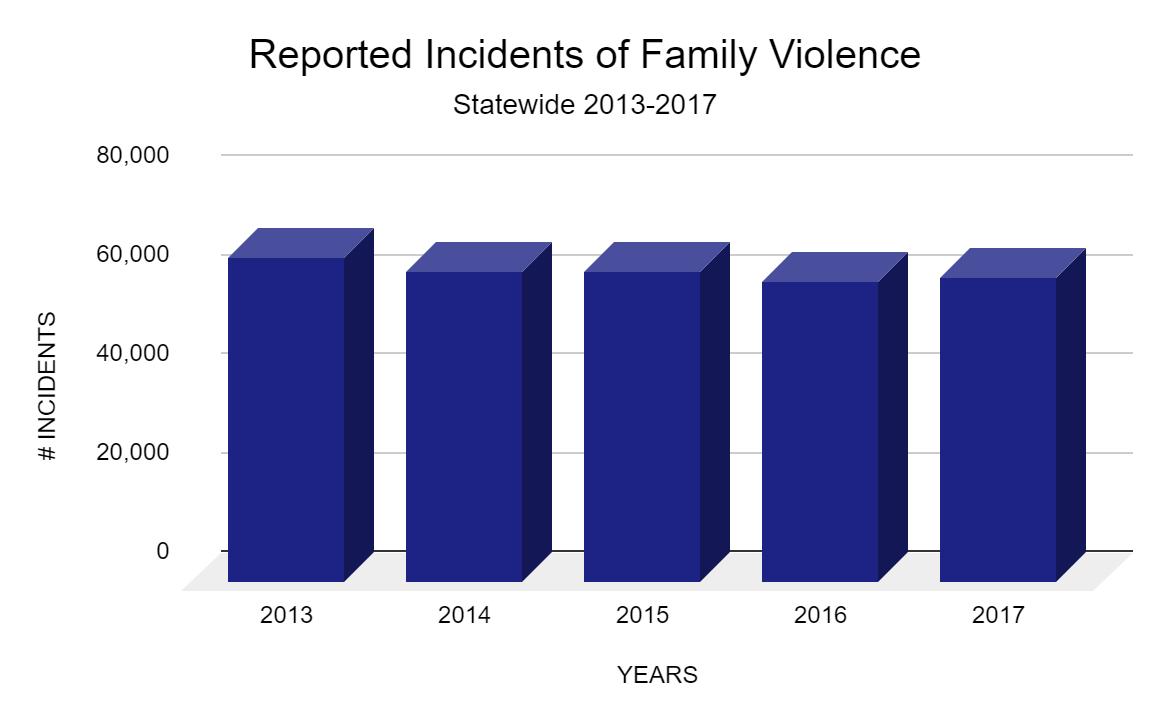
YEARS # INCIDENTS 2013 65,201 2014 62,659 2015 62,358 2016 60,451 2017 61,306
Relationship of Parties in Reported Incidents of Family Violence
Georgia’s familyviolence incidentreportincludesmultiplefields with theoptionforanofficerto select “other.” The definitionof“other”hasnotbeenproperlydefined,andthecontentsofthiscatch allcategory withinthedata are otherwiseunspecified Clarifying theselection criteria forthecategory“other” is an areaforimprovementwithinthedata. This is particularlytruegiventhattheresponse“other” was selected72.4% ofthetimeas it pertainstotherelationshipoftheparties involvedin a familyviolence incident

State of Georgia (2013-2017)
Reported Incidents of Family Violence RELATIONSHI P TOTAL INVOLVED Present Spouse 70,450 Former Spouse 11,853 Parent 24,010 Child 33,261 Step Parent 3,826 Step-Child 2,759 Foster Parent 301 Foster Child 432 Live in Same Household 11,050 Other 415,177
3
53
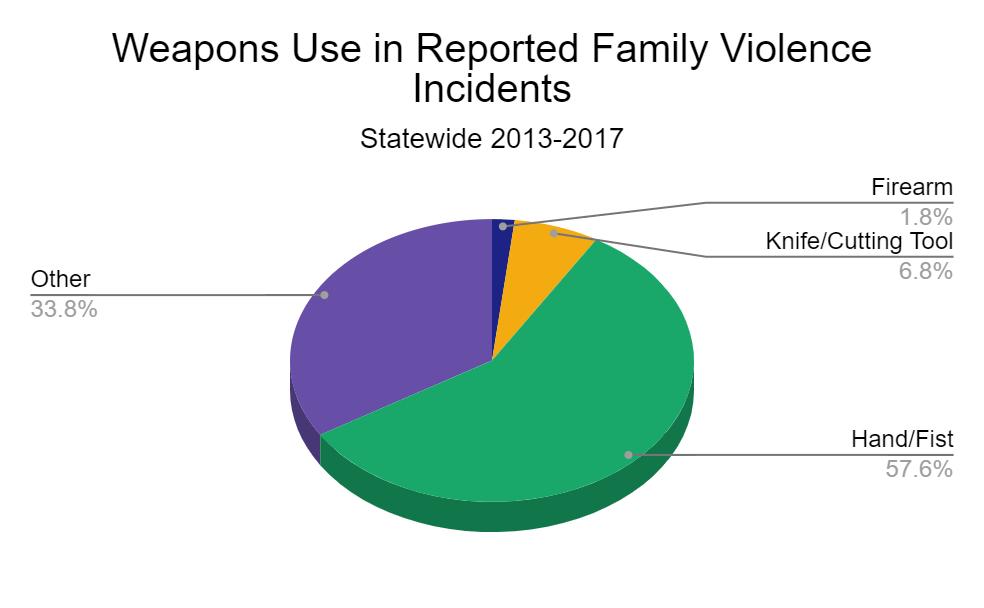
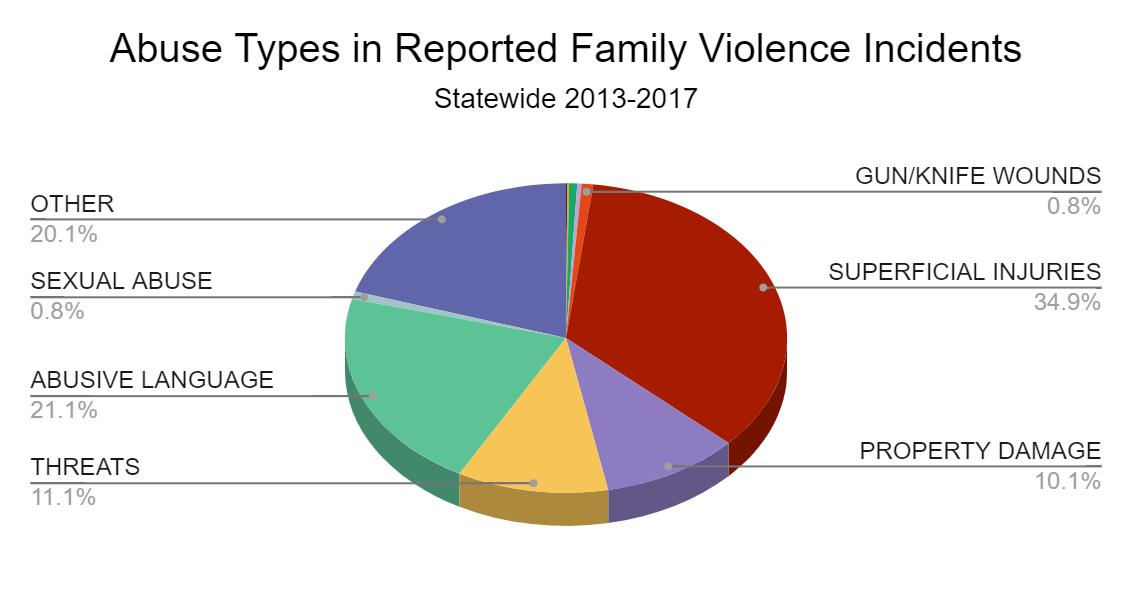
Weapons Use in Reported Family Violence Incidents WEAPON TOTAL Hand/Fist 179,54 5 Knife/ Cutting Tool 21,318 Firearm 5,616 Other 105,49 6 Abuse Types in Reported Family Violence Incidents ABUSE TYPE # INCIDENTS Superficial Injuries 154,843 Abusive Language 93,523 Threats 49,072 Property Damage 44,763 Gun/Knife Wounds 3,757 Sexual Abuse 3,572 Temporary Disability 2,606 Broken Bone 1,431 Permanent Physical Injury 650 Fatal Injury 359 Other 89,375 4 Publicawarenesscampaignsoftenhighlightthe physical aspects of family violence,oftenfeaturingblack eyes andbruises. This imageof the issue ignoresmany more prevalentaspectsof familyviolence Duringthe five-yearreportingperiod, more thanthreequarters (77.2%) oftheincidents involved either no injuriestothe victim (abusivelanguage21.1%, threats11.1%, propertydamage10.1%) or superficialinjuries
fists are
54
(34.9%). Abusers’handsand
the weaponof choicein themajority (57.6%) ofallreportedfamily violence incidents Weaponsuse patterns vary significantlybetween non fatalandfatalincidents (See page12for more information.) State of Georgia (2013-2017)
State of Georgia (2013-2017)
in
Incidents of Family Violence

Georgia’sdefinitionof family violence,andthereforethe familyviolence incidentdatacontained in thisreport, includesintimatepartner violence along with incidents involving otherrelationshipsincludingparent/childand roommates,butouroveralltrend fallsinline with nationalresearch which hasrevealedthat victims ofintimatepartner violence aredisproportionately female¹andoffenders are disproportionatelymale Footnote references are available on page 17.
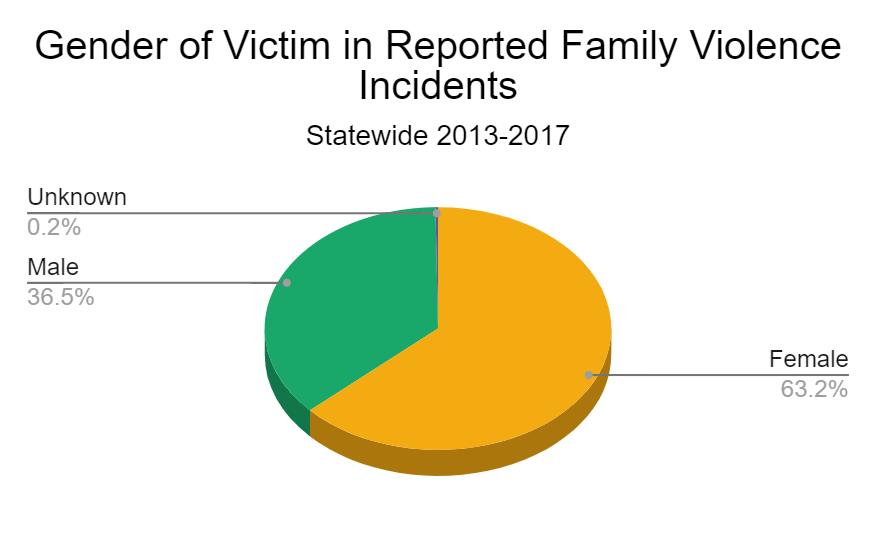
Gender of Offender and Victim
Reported
GENDER # OFFENDERS # VICTIMS Female 108,792 205,687 Male 184,111 118,909 Unknown 8,942 752
5
55
State of Georgia (2013-2017)
Race of Offender and Victim in Reported Incidents of Family Violence


RACE
# OFFENDERS
American Indian or Alaska Native 408 Asian 2,225 Black or African American 163,743 White 141,297 Unknown 14,057
RACE # VICTIMS
Race in Population of Georgia
Researchontheintersectionof race andintimatepartner violenceis limited,butGeorgia’s victim datashowthat Black women are victimized athigher ratesthantheirpeersofdifferent racialbackgrounds Thisfinding isinline with nationalresearch aboutthedisparateimpactsof abuseon Black communities.²

6
American Indian or Alaska Native 480 Asian 2,372 Black or African American 162,731 White 155,294 Unknown 5,632 56
State of Georgia (2013-2017)
Substance Abuse in Reported Incidents of Family Violence
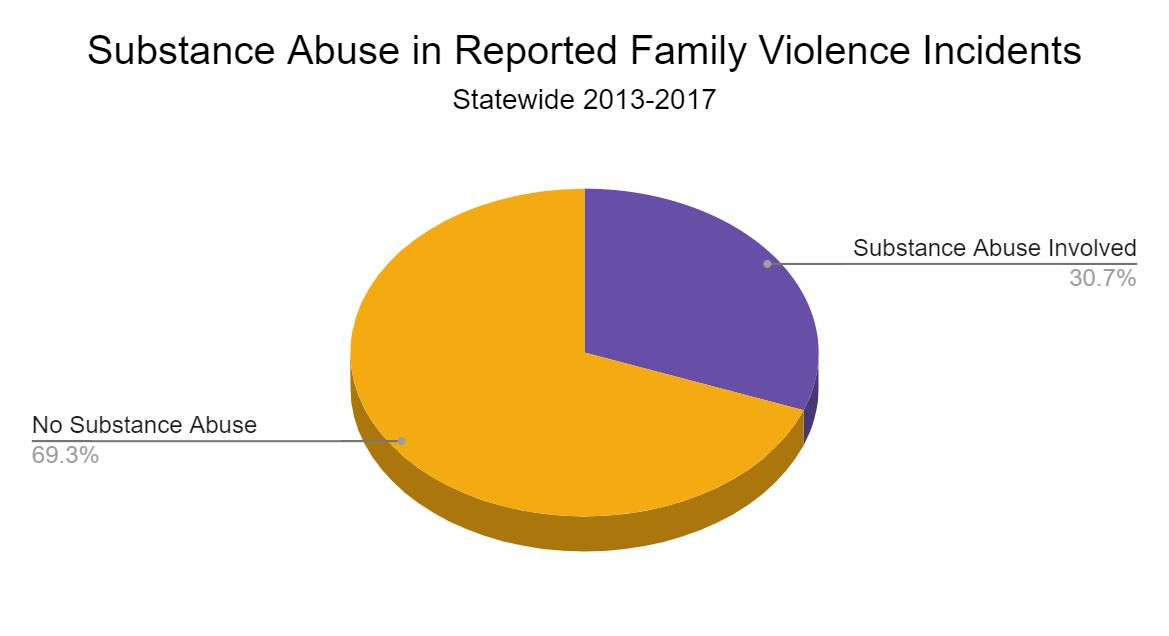
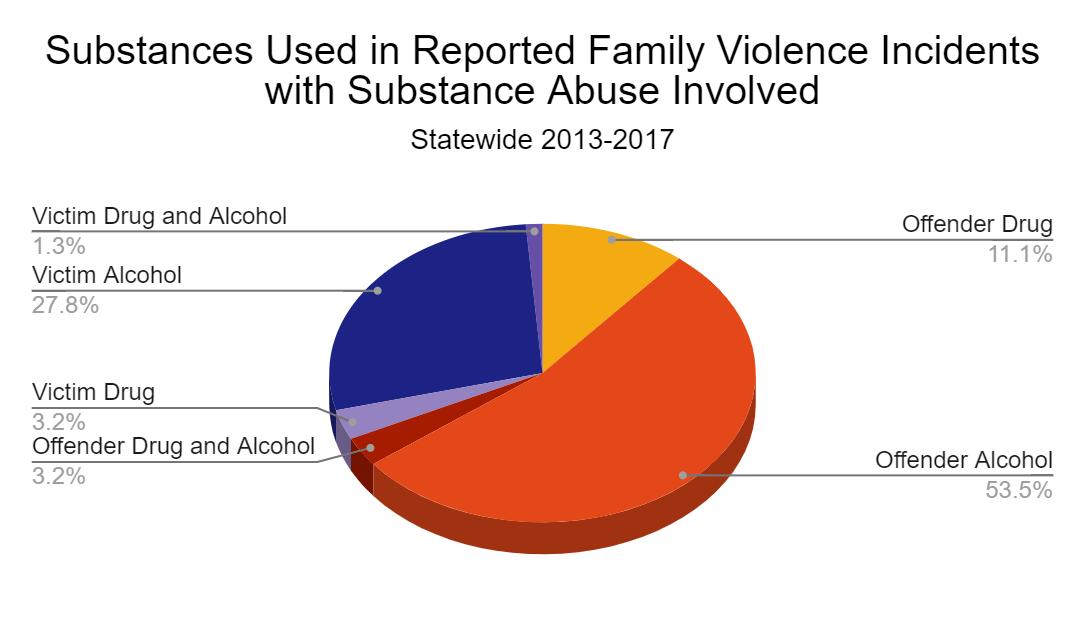
SUBSTANCE ABUSE # INCIDENTS
Offender Drug 10,619
Offender Alcohol 51,270
Offender Drug and Alcohol 3,039
Victim Drug 3,109
Victim Alcohol 26,599
Victim Drug and Alcohol 1,206
Offender Substance Abuse (Total) 64,928
Victim Substance Abuse (Total) 30,914
While the co occurrenceofsubstanceabuseandintimate partnerviolence is common, we mustbe aware thatone issue doesnotcausetheother. Infact, less than a third (30.7%) of familyviolence incidents in Georgia involve alcoholor drug use Of thosethatdo, itis theabuserthat is undertheinfluence67.8% ofthetime. Given that, Georgia’sdata may supportnationalresearchthat shows abuse is more likely tooccur if theoffender is underthe influenceofalcohol³ordrugs.⁴
7
57
State of Georgia (2013-2017)
Child(ren) Involved or Present in Reported Family Violence Incidents
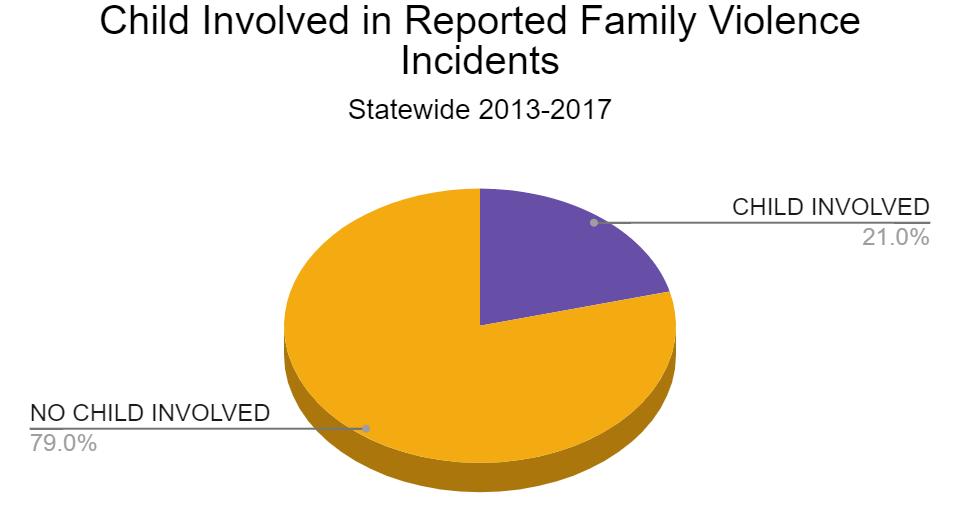
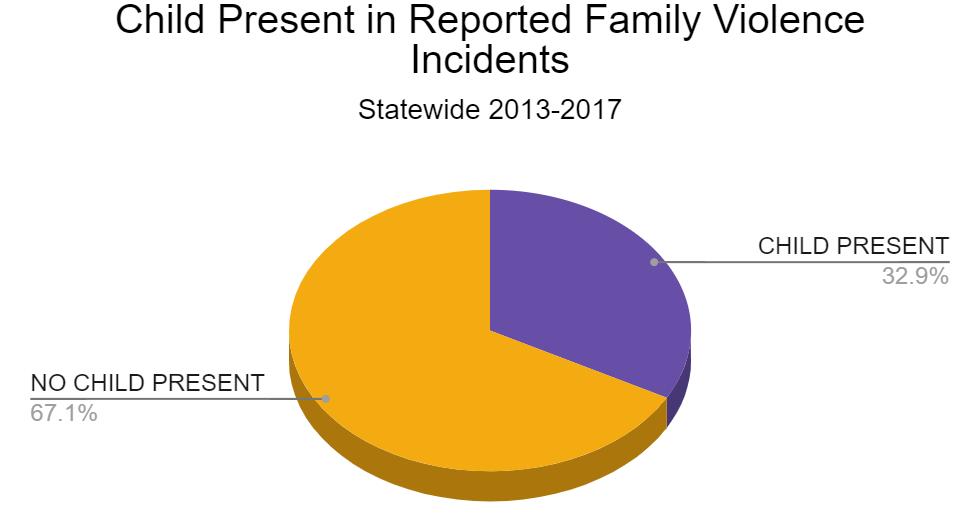
CHILD(REN) INVOLVED # INCIDENTS
CHILD(REN) PRESENT # INCIDENTS
Child(ren) Present 102,704 No Child(ren) Involved 246,526 No Child(ren) Present 209,271
Child(ren) Involved 65,449
For children,theimpactofexposuretointimatepartnerviolence is long-lastingand significant.⁵ Unfortunately,thefullextentoftheirexposuretoGeorgia familyviolence incidentscannot be accurately measuredusingthe law enforcementreporting systems in placeduringthe five year reportingperiod Georgiaplanstoaddressthis issue underitstransitiontothe NIBRS reportingsystem in 2018. NOTE: The dataincludeddonotreflectthenumberofchildrenexposed,ratherthedatareflectthenumberof reportedincidentswhereoneor more children were presentor involved
8
58
Police Action Taken in Family Violence Incidents
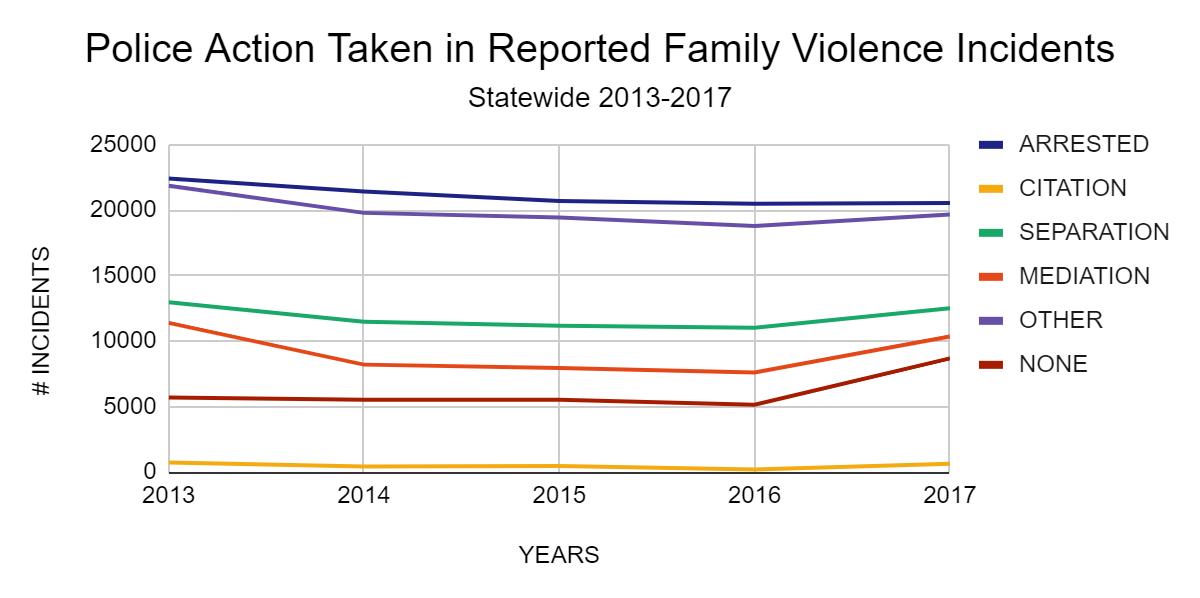
Georgiaofficers are not mandatedtomakean arrest infamily violenceincidents ⁶ Moreover,thestatute clearly allows officersto arrest oneparty,even if bothpartieshaveused violence. Appropriately identifyingthe primary physical aggressorandchargingthatperson is themosteffectiveintervention in familyviolence incidents While GBI’s dataon police actiontaken infamilyviolence incidentsdoindicate that arrest is themostfrequently occurring outcome,arrestsrepresentonly30.8% ofreported police responses This meansthat in more than two thirdsofresponses,preference was given to a different outcome And,when we examinetheseresponses by year, thetrendsshow a decrease (-8.5%) in the rateof arrest. Even more disconcerting,therehasbeen a significantrise (+52.2%) in therateofreports inwhich “none” (no actiontaken) was the officer’s reportedresponse

9
Arrested Citation Mediation None Separation Other
POLICE ACTION TAKEN
59
TOTAL 105,630 2,469 45,519 30,610 59,196 99,600 State of Georgia (2013-2017)
State of Georgia (2013-2017)
Crime Trends
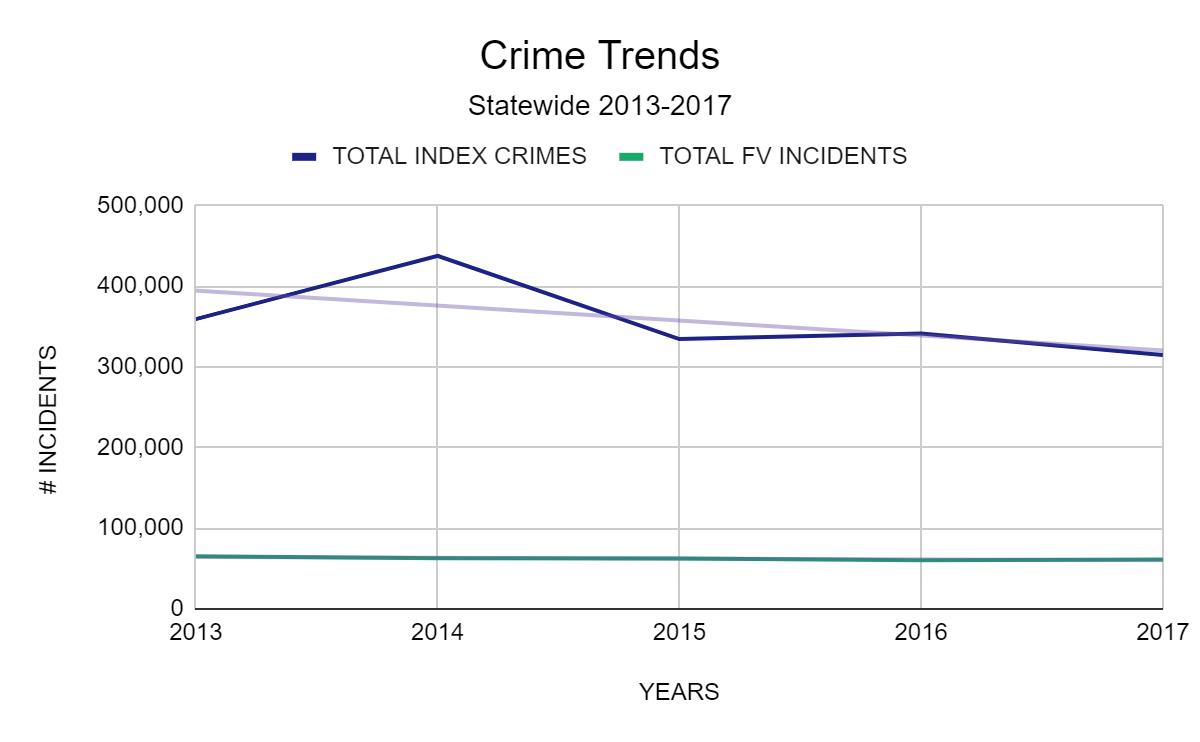
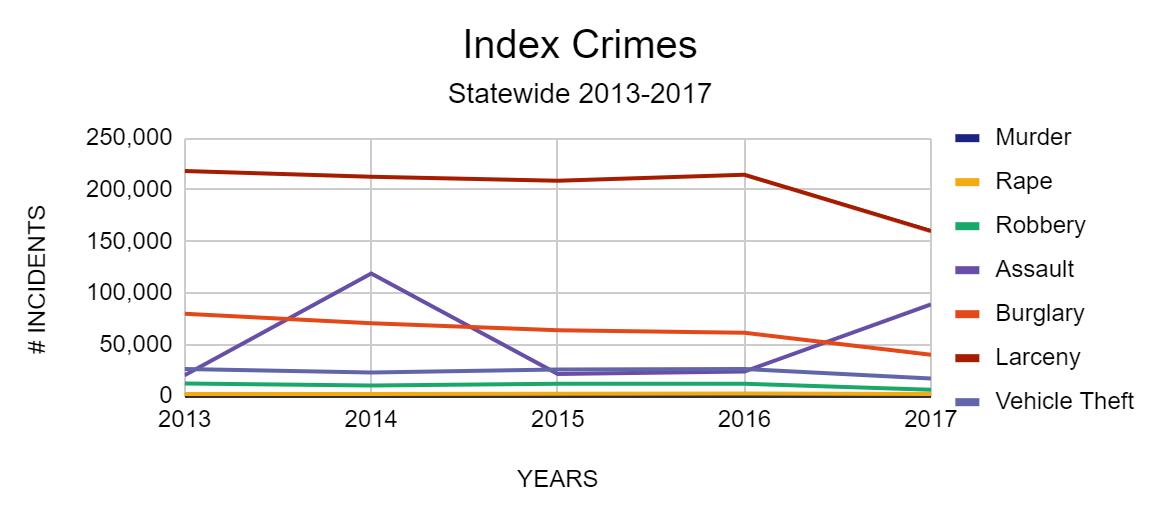
Index crimes, includingassault,burglary,larceny,murder,rape, robbery,and vehicle theft, are usedasanindicatoroftherateof violent crimes nationally. InGeorgia,index crime data are generated from uniform crime reports (UCR) completed by law enforcementofficers Thesereports are also thesourceof family violence incidentinformationstatewide. Many familyviolence incidents also qualify as index crimes Despitesomeduplication giventhatoverlap,comparingthetrendlinesofindex crimes and familyviolence incidentsprovidesgreat insight intoourstate’s efforttoreduce violentcrime. InGeorgia,bothindex crimes and familyviolence incidents were onthedeclineduringthe five year reportingperiod. However, index crimes fell12%, while family violence incidents were reducedatonlyhalfthatrate (-6%).
YEARS
TOTAL INDEX CRIMES
TOTAL FV INCIDENTS
2013 359,297 65,201 2014 437,566 62,659 2015 334,508 62,358 2016 341,254 60,451 2017 314,776 61,306
10
60
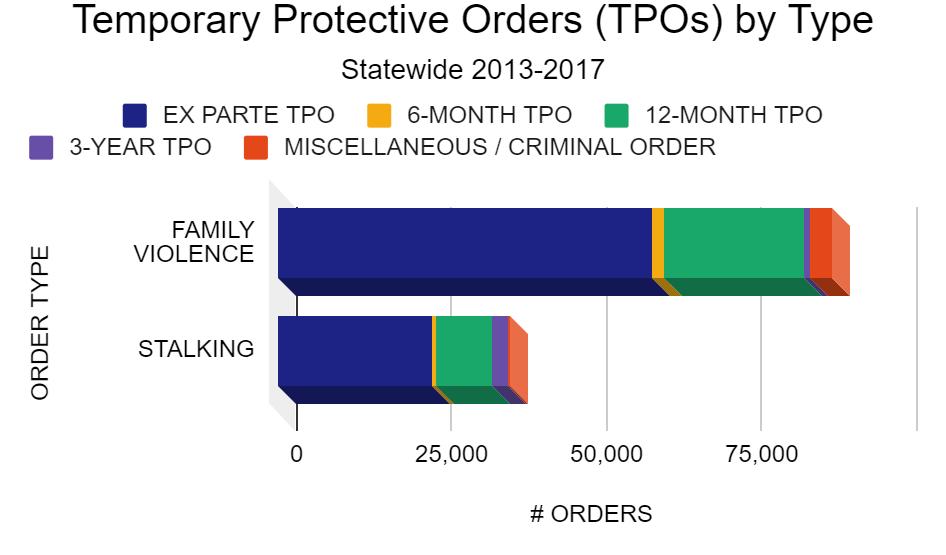
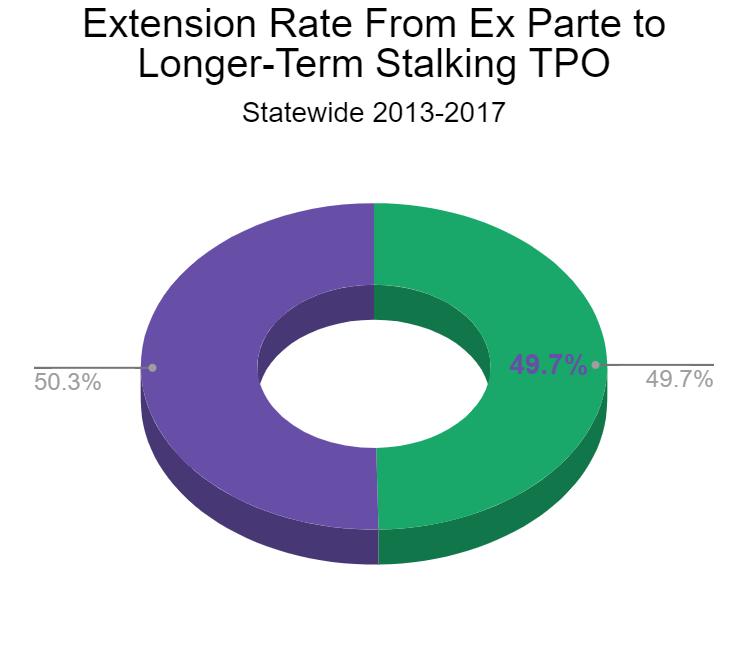
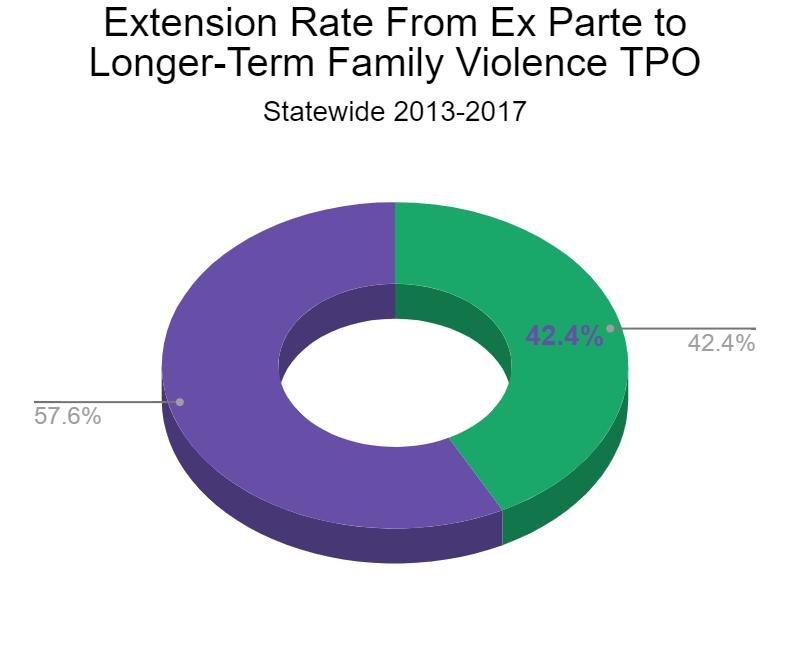
ORDER TYPE EX PARTE TPO 6-MONTH TPO 12 MONTH TPO 3-YEAR TPO MISCELLANEOU S / CRIMINAL ORDER TOTAL TPOs (ALL TYPES) FAMILY VIOLENCE 60,219 1,968 22,557 994 3,452 89,190 STALKING 24,595 802 8,991 2,431 394 37,213 Temporary Protective Orders (TPOs) by Type 57.6% 50.3% TemporaryProtective Orders(TPOs)are an effectivetoolfor victim safety. Research shows themajority of victims reporttheir TPO endedthe violence ⁷ Inmanycases,thelongertheprotectiveperiod,the bettertheoutcomes Between2013and2017, 126,403 familyviolence and stalking TPOs were issued statewide. InGeorgia,theoverall“extensionrate,” or therateat which anemergency (Ex Parte) TPO is extendedinto a longer term (6-Month,12 Month, 3-Year) order, is 55.5%. The “extensionrate” is 7.3% higherfor stalking casesthanfor familyviolence cases Inboth types, the“extensionrate” is impacted by judicial discretion,failuretolegally serve noticeoftheproceedingtotheabuser, lack oflegal representation,and victim decisionsastohoworwhethertoproceed with a follow uphearing 11 Extended Not Extended Not Extended Extended State of Georgia (2013-2017) 61

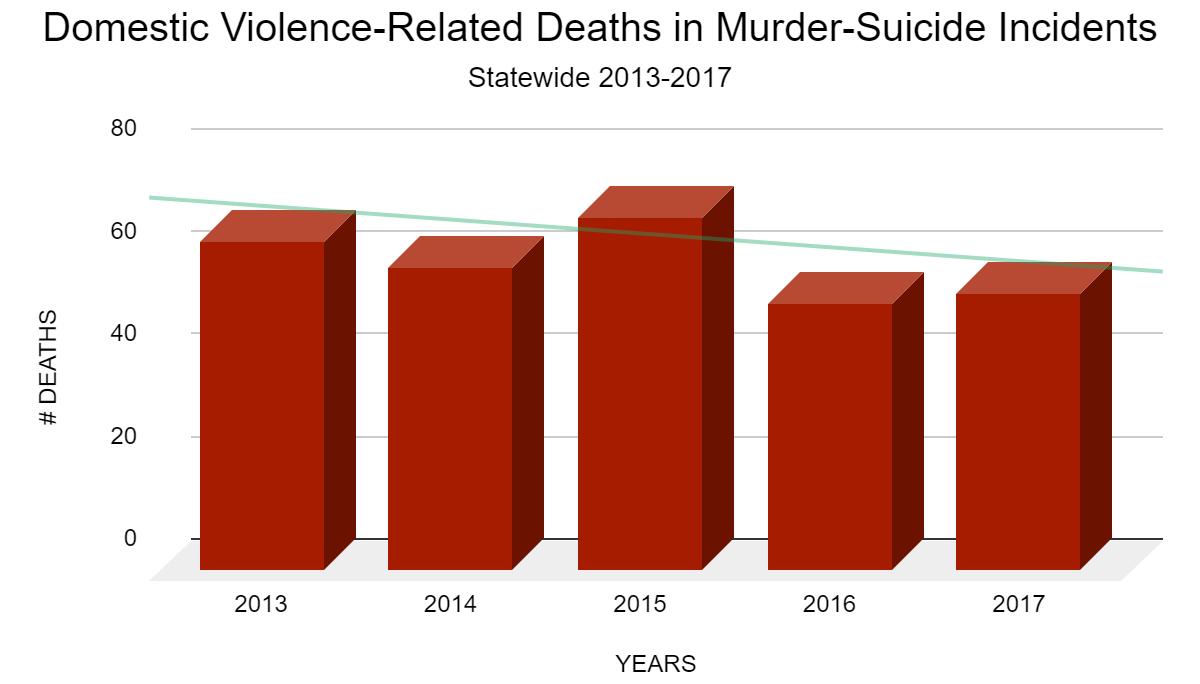
Domestic Violence-Related Deaths YEARS 2013 2014 2015 2016 2017 # Fatal Incidents 89 93 100 97 136 # Victim Deaths 70 80 85 70 95 # Perpetrator Deaths 44 32 35 33 45 # Bystander Deaths 10 10 25 22 28 # Deaths Resulting From Incidents 124 122 145 125 168 Murder-Suicide Incidents YEARS 201 3 201 4 201 5 201 6 201 7 # Completed Murder Suicide Incidents 27 24 26 20 24 # Attempted Murder Suicide Incidents 6 8 7 6 7 # Deaths Resulting From Incidents 64 59 69 52 54 The homicide-suicide connection in lethalincidentsofdomestic violence hasbeen well establishedand represents a prevalentproblem in Georgia.⁸ Murder suicides represent30% offatalincidentsofdomestic violence statewide,butaccountfor44% ofalldomestic violence relateddeaths Theirdisproportionate weightwithinstatewidedeaths,hashighlighted a needforcollaborationbetweendomestic violence and mentalhealthstakeholders. 12 State of Georgia (2013-2017) 62
State of Georgia (2013-2017)
Firearms were theleadingcauseofdeath in fatal incidentsofdomestic violence duringthe fiveyear reportingperiod,accountingforthree quartersofallknowndomestic violence deaths statewide [71.8% firearm, 2.9% lawenforcement intervention (firearm)] The highrateof firearms use in fatalincidentsofabuse isin sharpcontrast totheirpresence in only 1.8% ofreported family violence incidentsstatewide,allowingthe conclusion thatwhen firearmsare present in a familyviolence incident,the risk of a fatalincident is increasedexponentially This findinghasbeen consistentlynoted locally⁹ and in national research, which reveals a 500% increase in the risk of homicide whenanabuserhas access to a firearm.
NOTE: In some circumstancesmultiple causes are attributedto a singledeath. Given that,thetotalnumbersreflectedforeachcauseof death, may be inexcess ofthenumbersof statewidedeathsoccurring in a givenyear.
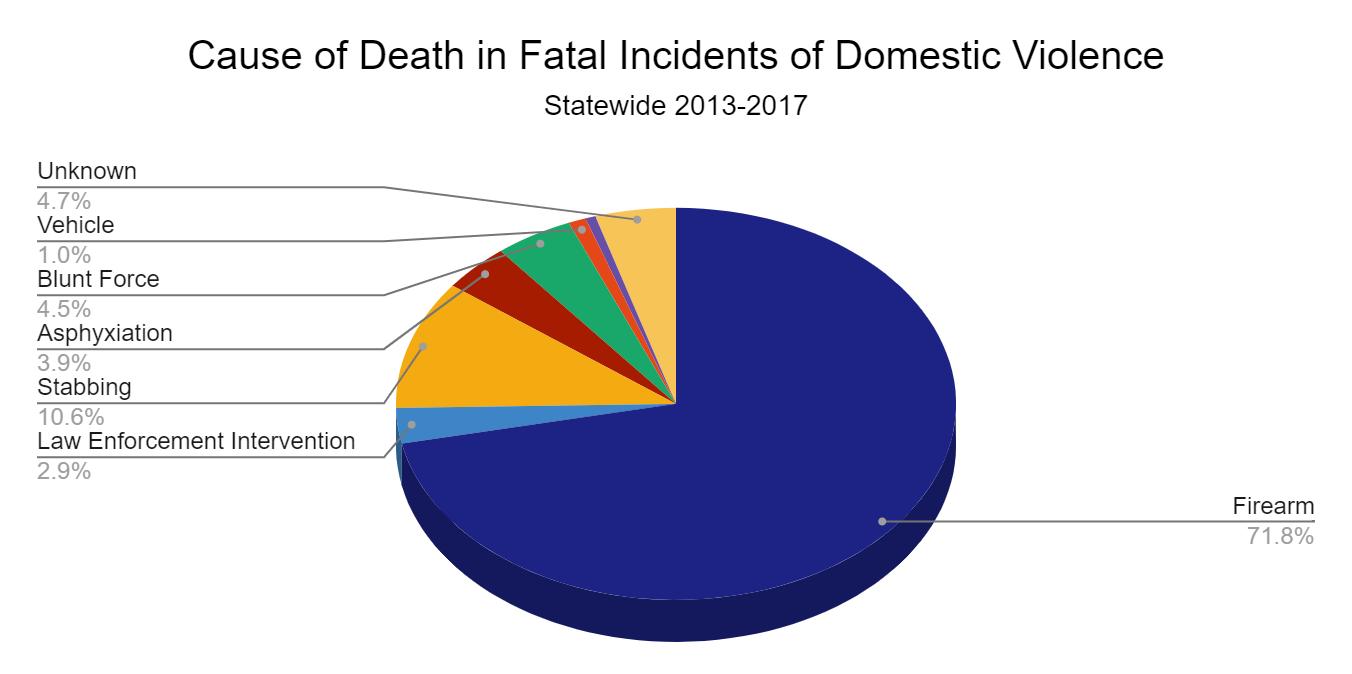
YEARS 2013 2014 2015 2016 2017 Firearm 91 80 116 89 117 Stabbing 7 22 11 16 17 Blunt Force 8 4 5 3 11 Asphyxiation 2 7 5 5 8 Law Enforcement Intervention (Firearm) 6 1 5 3 5 Vehicle 0 2 0 5 0 Other 0 0 0 2 2 Unknown 10 6 3 2 11
13
¹⁰
Cause of Death in Domestic Violence-Related Deaths 63
HOW TO USE THIS REPORT
In December 2012, GCFV published the “Georgia State Plan for Ending Family Violence.” The plan outlined a vision for a future in which all Georgia’s family support agencies share in a continuous process of reducing family violence in concrete ways that lend themselves to each agency’s special mission, vision and values.¹¹ Among the strategic directions outlined under the 2012 plan, was the goal to improve collaboration and develop practices, protocols and tools for gathering and using family violence data to assist with state planning in Georgia. This report represents another milestone in our efforts to achieve that goal.

This report contains aggregate data for the entire State of Georgia. Future reports will delineate the data according to geographic region to facilitate targeted responses to family violence on the local level. The multifaceted nature of family violence requires rigorous use of data on the state and local level to ascertain the systemic gaps that exist in family violence response. Providing comprehensive and targeted reports on family violence throughout Georgia offers an opportunity to cultivate change and develop innovative responses to the issue of family violence.
Family violence is a complex issue that requires a coordinated community response to implement change. The data in this report clearly show a significant decrease in violent crimes in Georgia. However, the same is not true for family violence incidents. GCFV's mission is to end family violence in Georgia; the participation of key stakeholders is integral to the success of this mission. Family violence is a systemic issue that needs to be addressed in a multidimensional, data driven, evidence-based manner. This report is a step towards equipping state and local leaders to do so effectively.
14 64
ACKNOWLEDGEMENTS
PROJECT STAFF
“Family Violence Statistics and Trends in the State of Georgia 2013 2017” was written by Niki Lemeshka, Program Manager of the Georgia Commission on Family Violence.
Data Analysis and project support was provided by Doug Bailey of Performance Vistas, Inc.
SPECIAL THANKS
Special thanks go to GCFV’s data partners including:
• The Georgia Bureau of Investigation for their ongoing support, particularly Director Vic Reynolds, Chief of Staff John Melvin, CJIS Operations Manager Lisa Weaver-Johnson, CJIS Analyst Supervisor Crystal Lockhart, and Georgia Protective Order Registry Program Manager Daryl Beggs
• District Attorney’s Office Victim Witness Assistance Program directors statewide
• Domestic violence programs statewide
• The Georgia Coalition Against Domestic Violence
• The Criminal Justice Coordinating Council’s Statistical Analysis Center
This project would not be possible without the financial support of the Criminal Justice Coordinating Council and the project support of current and former GCFV staff and Commission members, particularly former GCFV Executive Director Jennifer Thomas and current Chairwoman Stephanie Woodard.
FINANCIAL SUPPORT
This project was supported by subgrant numbers W17-8-068, W18-8-003, W18-8-074, and W18-8-076, awarded by the state administering office for the STOP Formula Grant Program. The opinions, findings, conclusions, and recommendations expressed in this publication/program/exhibition are those of the author(s) and do not necessarily reflect the views of the state or the U.S. Department of Justice, Office on Violence Against Women.
15 65
DATA SOURCES AND LIMITATIONS
UNIFORM CRIME REPORTS (pages 2 9)
Family Violence Crimes
Data on reported incidents of family violence, weapons use, abuse types, relationship of the parties, gender, race of offender and victim, substance abuse, children, and police action taken (henceforth referred to as “UCR data”) were obtained from the Uniform Crime Reporting system administered by the Georgia Bureau of Investigation (GBI). GCFV acknowledges that, as law enforcement agencies report outcomes on a rolling basis, UCR data can and will shift over time as reported data comes closer in line with actual rates of occurrence.
We are also aware that the UCR data set contained in this report is incomplete. Over the course of the five years studied, a number of counties reported zero incidents or failed to submit a family violence report to the GBI. Those counties include: Baker (2013, 2015 2017); Clay (2013 2015); Evans (2015); Glascock (2013, 2015, 2016); Jenkins (2014, 2015); Johnson (2013 2017); Lincoln (2016, 2017); Marion (2013); McIntosh (2013-2017); Montgomery (2013-2017); Quitman (2013-2015, 2017); Stewart (20132017); Taylor (2014); Telfair (2017); Treutlen (2017); Warren (2016, 2017); and Webster (2014, 2015, 2017).
Further, the data pertaining to the relationship between victim and offender is not known for 2017. That year only, the GBI changed the way it calculated incidents in which the parties “live in the same household.” In order to ensure continuity with the previous four years’ data, GCFV extrapolated the total it used from 2013 2016 using a linear projection to obtain a figure for 2017. We acknowledge that the 2017 figures on relationships are projections, not actual counts.
Index Crimes
Index crime data were provided by the GBI. The index crime data set contained in this report is substantially complete but, over the course of the five year reporting period, law enforcement agencies in seven of Georgia’s 159 counties reported zero index crimes or failed to submit index crimes to the GBI. The following counties failed to report their statistics during one or more years between 2013 and 2017: Baker (2015, 2016, 2017); Chattahoochee (2017); Clay (2013, 2015); Glascock (2013); Jenkins (2014); Johnson (2017); and Montgomery (2013, 2015, 2016, 2017).
Data on “Race in Population of Georgia” were obtained from the US Census Bureau’s projections for the year 2017.
16 66
TEMPORARY PROTECTIVE ORDERS (page 10)
Temporary Protective Order (TPO) data was obtained from the Georgia Protective Order Registry, administered by the Georgia Crime Information Center (GCIC) of the GBI.
The “extension rate” from Ex Parte to longer term TPO, assumes that each Ex Parte order is eligible to qualify for extension to a longer-term order. The rate is determined through comparison of the total of longer term orders, including 6 Month, 12 Month, and 3 Year orders of each type, family violence and stalking, to the total number of Ex Parte orders of each type within the reporting period. The rate represents a general trend within the report types, and GCFV acknowledges that individual case outcomes were not tracked.
DOMESTIC VIOLENCE-RELATED DEATHS (pages 11 12)
Domestic violence-related death data, including murder-suicide data, and cause of death in fatal incidents is collected through GCFV’s Fatality Review Project using media monitoring and independent verification of deaths, supported by domestic violence programs and Victim Witness Assistance Programs in District Attorney’s Offices statewide.
The data consist of intimate partner violence related deaths, including those in which one intimate partner kills another intimate partner, a bystander is killed during an active domestic violence incident, an intimate partner commits suicide during or immediately following a domestic violence incident, or an intimate partner is killed by law enforcement responding to a domestic violence incident or while serving a family violence warrant or TPO.
For our purposes, the term “intimate partner” is intended to reflect that the domestic violence victim and perpetrator fall into one of the following relationships: dating or formerly dated, married or formerly married. This definition varies from state statute as it pertains to family violence, in that current Georgia law excludes dating partners from those categorized as “family violence” unless those parties have a common child or have resided in the same home.
The data also include information on domestic violence incidents that resulted in the death of a bystander. These deaths are most often reported to involve an act of revenge by the perpetrator, or the individual being present during the homicide of the intimate partner victim. Bystanders most often fall into one of the following groups: a new partner/spouse, family member, friend, child, public bystander/witness, or intervener such as law enforcement.
17 67
CITATIONS
1. Catalano, S. (2015). “Intimate Partner Violence, 1993 2010.” U.S. Department of Justice, Office of Justice Programs, Bureau of Justice Statistics special report, revised September 29, 2015. Retrieved from https://www.bjs.gov/content/pub/pdf/ipv9310.pdf.
2. Cho, H. (2012). Racial Differences in the Prevalence of Intimate Partner Violence Against Women and Associated Factors. Journal of Interpersonal Violence, 27(2), 344 363. https://doi.org/10.1177/0886260511416469.
3. Temple, J.R., Stuart, G.L., O’Farrell, T. J. (2009). “Prevention of Intimate Partner Violence in Substance-Using Populations.” Substance Use & Misuse, 44(9/10), 1318 1328.
4. Gilchrist, G., & Hegarty, K. (2017). “Tailored integrated interventions for intimate partner violence and substance use are urgently needed.” Drug & Alcohol Review, 36(1), 3. doi:10.1111/dar.12526.
5. Lemeshka, N., & Thompson Tabb, T. (2018). Final Edition | 2018 Annual Report: Georgia Domestic Violence Fatality Review Project. Georgia Commission on Family Violence | Georgia Coalition Against Domestic Violence, 44 47. http://georgiafatalityreview.com/reports/report/2018 report/
6. Investigation of family violence; preparation of written report; review of report by defendant arrested for family violence; compilation of statistics, Official Code of Georgia Annotated § 17-420.1. (Current through the 2019 Regular Session of the General Assembly and HB 276 and HB 444 of the 2020 Regular Session of the General Assembly) https://advance.lexis.com/api/document/collection/statutes-legislation/id/5YVC-T181-JW5HX1W3-00008-00?cite=O.C.G.A.%20%C2%A7%2017-4-20.1&context=1000516.
7. Logan, T., & Walker, R. (2009). “Civil Protective Order Outcomes: Violations and Perceptions of Effectiveness.” Journal of Interpersonal Violence, 24(4), 675, 677. Retrieved from http://journals.sagepub.com/doi/pdf/10.1177/0886260508317186.
8. Lemeshka, N., Thompson Tabb, T., & Aszman, J. (2017). 2016 | 13th Annual Report: Georgia Domestic Violence Fatality Review Project. Georgia Commission on Family Violence | Georgia Coalition Against Domestic Violence. http://georgiafatalityreview.com/reports/report/2016-report/.
9. Lemeshka, N., & Thompson Tabb, T. (2018). Final Edition | 2018 Annual Report: Georgia Domestic Violence Fatality Review Project. Georgia Commission on Family Violence | Georgia Coalition Against Domestic Violence, 23-27. http://georgiafatalityreview.com/reports/report/2018report/.
10. Zeoli, A. (2017). “Non Fatal Firearm Uses in Domestic Violence.” Battered Women’s Justice Project. Retrieved from http://www.preventdvgunviolence.org/nonfatal-gun-dv-zeoli-.pdf.
11. Georgia Commission on Family Violence. (2012). Georgia State Plan for Ending Family Violence https://gcfv.georgia.gov/state plan ending family violence
12. U.S. Census Bureau (2019). 2017 Race in Georgia. Retrieved from https://data.census.gov/cedsci/
18 68
For More Information Contact: GEORGIA COMMISSION ON FAMILY VIOLENCE 2 MARTIN LUTHER KING JR. DRIVE, SUITE 470 EAST TOWER ATLANTA, GA 30334 (404) 657-3412 GCFV.GEORGIA.GOV GEORGIAFATALITYREVIEW.COM 24-HOUR STATEWIDE FAMILY VIOLENCE HOTLINE: 1(800)33-HAVEN [1(800)334-2836] 69
GEORGIA
FATALITY REVIEW PROJECT
GeorgiaFatalityReview.com
Recommendations for Court Systems, Judges and Judicial Personnel
Court systems, judges and judicial personnel are uniquely positioned to impact safety for victims and accountability for perpetrators of domestic violence.
The Georgia Domestic Violence Fatality Review Project has developed recommendations geared to reduce incidents of domestic violence and domestic violence related homicide. To affect change, local communities must work diligently to implement these recommendations, which were developed by fatality review teams across the state. Acting on established best practices and calls to action from the Project’s 15 year history is how Georgia will see real change in the future.
Out of the Courtroom
+ Ensure all victims of domestic violence seeking relief from the courts under the Family Violence Act have access to victim advocates to complete a survivor centered safety plan.
o Provide warm referrals to domestic violence advocates for ongoing supportive services and safety planning.
o Make contact information for domestic violence programs available on a widespread basis in all of Georgia’s communities. Both traditional and non traditional systems will benefit from referral information for supportive services such as the statewide domestic violence hotline 1 (800) 33 HAVEN [1 (800) 334 2836] and local domestic violence programs. Domestic violence programs and task forces should consider developing materials such as palm cards, resource guides, and other awareness materials which can be distributed in their communities. Posters and other awareness resources are also available for download at GeorgiaFatalityReview.com
+ Make brochures and materials on domestic violence program services available in judicial and clerk’s offices.
+ Ensure up to date Family Violence and Stalking Temporary Protective Order (TPO) forms are provided to victims seeking relief.
+ Provide information on the intersection of suicide and domestic violence to people requesting involuntary commitments.
+ Provide information about supportive services such as the crime victims’ compensation program or the Georgia Commission on Family Violence’s Support for Survivors of Murder Suicide (SSMS) Program to individuals involved in probate court, resulting from a domestic violence related suicide or murder suicide.

DOMESTIC VIOLENCE
Georgia
Coalition Against
Domestic Violence | 114 New Street, Suite B, Decatur, GA 30030 (404) 209 0280 | gcadv.org
Georgia Commission on Family Violence | 270 Washington Street, SW, Suite 5145, Atlanta, GA 30334 (404) 657 3412 | gcfv.georgia.gov
70
GEORGIA
FATALITY REVIEW PROJECT
GeorgiaFatalityReview.com
+ Attend training on the dynamics of domestic violence and high risk indicators.
+ Ensure there are adequate resources to provide FVIP in all areas of the state. In circumstances where no FVIP program is present, judicial and prosecutorial leadership should encourage local providers or other agencies to apply for certification. Knowledgeable stakeholders have a duty to educate those in positions of influence regarding the difference between FVIP and anger management classes, and encourage policies which require FVIP attendance by abusers.
In the Courtroom
+ Craft orders that are safety focused and encourage accountability.
o Whenever possible, obligate intimate partner stalkers to participate in a Family Violence Intervention Program (FVIP).
o Require large distances of separation for the abuser from the victim and frequent locations the victim may be found. Consider restrictions of 500 yards or more.
o List specific dates of visitation or attach a calendar which outlines the visitation schedule.

o Include detailed language about what qualifies as third party contact or relaying of information, and list prohibited relationships and locations with which the abuser must refrain from contact.
+ Develop protocols for response to abusive, retaliatory court filings. Note on the record that the action is believed to have been retaliatory and dismiss the case with prejudice.
+ Recognize many threats made by abusers are often implicit and appear benign to outsiders. Consider the context of the circumstances and why the behavior could be frightening or distressing to the victim.
+ Develop safety procedures such as staggered leaving from the courthouse, with the victim leaving in advance of the perpetrator
+ Require appropriate mental health assessments for parties who are alleged to have co occurring mental health and domestic violence issues.
o Pay particular attention to suicide indicators and safety issues, which require assessment throughout the court process.
o When the Court determines mental health issues should be addressed, clarity of language is paramount. Provide a clear method of achieving completion of the provisions; add to standard language the specific type of evaluation that should be completed, in what time frame it should be completed and how the
DOMESTIC VIOLENCE
Georgia Coalition Against Domestic Violence | 114 New Street, Suite B, Decatur, GA 30030 (404) 209 0280 | gcadv.org Georgia Commission on Family Violence | 270 Washington Street, SW, Suite 5145, Atlanta, GA 30334 (404) 657 3412 | gcfv.georgia.gov
71
GEORGIA
FATALITY REVIEW PROJECT
GeorgiaFatalityReview.com
abuser can provide proof of compliance with the provision.

+ Ensure criminal judgments are entered into the Georgia Crime Information Center and TPOs are entered into the Georgia Protective Order Registry.
+ Ensure court outcomes for perpetrators of stalking appropriately reflect the severity of the behavior. Prior intimate partner stalkers are the most likely to recidivate, fail on conditional release, engage in both violent and non violent re offenses, and to commit new stalking offenses. Criminal sentences should be crafted with those findings in mind to enhance accountability for stalking offenders and to minimize the ongoing risk to victims.
Civil Cases
+ When the parties meet the required relationship criteria, encourage the filing of Family Violence TPOs over Stalking TPOs, as they allow for additional relief.
+ Address abusers’ access to firearms.
o Ask victims about the presence of firearms during the Ex Parte TPO process.
o Notify law enforcement of any abusers believed to have possession of firearms in violation of the law, so their presence can be addressed at time of service.
+ Plan to proactively address violations.
o Explain that violation of orders is subject to criminal or civil penalty, even if the contact is “allowed” by one of the parties.
o Inform victims of the process for taking action when a violation occurs.
o At the time of a final Temporary Protective Order hearing, inform victims of the process to apply for a Three Year/ Permanent Protective Order, prior to the expiration of the 12 Month Order, if the perpetrator violates the 12 Month Order. Encourage victims to seek extensions of their orders in the event of ongoing safety concerns.
+ Ensure victims are aware of the risk of using a TPO as a bridge to another order (such as a divorce decree), or relying on other types of orders (perhaps a Domestic Standing Order, a Temporary Order or a divorce decree) for protective provisions such as reduced contact with the abuser or removal of firearms. These orders often do not satisfy requirements for immediate criminal enforceability, nor do they trigger federal firearm prohibitions or full faith and credit enforcement.
DOMESTIC
VIOLENCE
Georgia Coalition Against Domestic Violence | 114 New Street, Suite B, Decatur, GA 30030 (404) 209 0280 | gcadv.org
Georgia Commission on Family Violence | 270 Washington Street, SW, Suite 5145, Atlanta, GA 30334 (404) 657 3412 | gcfv.georgia.gov
72
GEORGIA
FATALITY REVIEW PROJECT
GeorgiaFatalityReview.com
Criminal Cases
+ Carefully consider the private, repetitive and escalating nature of domestic violence when setting bond, rendering sentences and imposing post sentencing sanctions.
+ Ensure access to the defendant’s prior criminal history when setting bond. Bond amounts and conditions should reflect the serious nature of the crime committed and the potential risk a perpetrator poses to a victim.
o Consider the defendant’s past behavior toward the victim in any bond or release conditions. Understand even if the defendant has no other criminal history, the defendant can still pose a threat to the victim.
o Consider ordering No Contact as a condition of bond versus No Violent Contact based on the victim’s safety and wishes.
Establish guidelines considering whether or not to rescind No Contact Orders in criminal domestic violence cases when risk levels have changed.
+ Look for risk indicators in every case, including those appearing to be lower level violence.
+ Develop and use a variety of sentencing options for abusers, including FVIP programs, timely court review, jail time, work release, electronic home monitoring, and intensive probation.
+ Employ consecutive sentences for abusers who commit crimes during multiple incidents. Allowing concurrent sentences sends a clear message to perpetrators that they can get away with committing crimes, free from accountability.
Domestic Violence and Children

+ Understand abusers may use children in common with the victim as justification for ongoing stalking and harassing behavior or to coerce the victim to return to the relationship. Be aware their strategy for maintaining contact and control may include indicating they need to have contact with the victim to discuss and co parent the children.
+ Include children as protected parties on TPOs so they receive protection during the victim’s parenting time.
+ When a history of stalking or harassing behavior has been present, discourage the practice of abuser providing technology, such as cell phones for the children. Instead, require the stalker to provide the victim compensation for purchase of technology to decrease the likelihood of electronic stalking.
+ Develop safe public visitation exchange locations.
DOMESTIC
VIOLENCE
Georgia
Coalition Against Domestic
Violence | 114 New Street, Suite B, Decatur, GA 30030 (404) 209 0280 | gcadv.org Georgia Commission on Family Violence | 270 Washington Street, SW, Suite 5145, Atlanta, GA 30334 (404) 657 3412 | gcfv.georgia.gov
73
GEORGIA
FATALITY REVIEW PROJECT
GeorgiaFatalityReview.com
o Be aware not all law enforcement precincts are staffed at all times and may not be an ideal exchange location.
o Consider developing funding for a safe or supervised visitation exchange location.
o Encourage the victim and abuser to develop third party resources who can conduct custody exchanges on their behalf.

+ Directly state arrangements for child support and visitation in orders between the parties. If your order references or incorporates a prior order, it should be attached.
o Outline specific remedies for addressing financial support, such as use of Child Support Services, a Family Support Registry or a safe mailing address for the victim.
+ Regularly assess teens for dating violence and link them with helping resources.
o Develop creative, non criminal, community based solutions for teens who use violence and for teen victims.
o Increase awareness of resources available to teens, such as textlines. Georgia teens can contact the Breaking Silence Teen Textline any time at (706) 765 8019 for confidential support. Love Is Respect also offers teens a safe place to connect with an advocate via text. Users can text “loveis” to 22522 to receive assistance from a peer advocate.
Firearms
+ Ensure firearms access is restricted for abusers subject to Temporary Protective Orders. Until Georgia codifies the federal firearms prohibitions into local law, much of the work of reducing abuser access to firearms will be done from the bench. Georgia judges should proactively address firearms access in TPOs and compliance hearings to ensure prohibitions are followed.
+ Develop countywide protocols to establish how each agency will cooperate to restrict access to firearms by domestic violence offenders and protective order respondents. Georgia’s communities must carry the torch for this important issue until legislative and legal system actions catch up with the risk firearms pose to citizens of our state. Develop a plan to address abuser access with your local task force or coordinated community response.
+ Develop policies that ensure firearms are removed from domestic violence offenders. These may include incorporating “take and maintain” or prohibitive language in special conditions of bond orders.
+ When determining bond, take into account a perpetrator’s possession of firearms and consider ordering surrender of weapons and ammunition as a condition of release.
DOMESTIC VIOLENCE
Georgia Coalition Against Domestic Violence | 114 New Street, Suite B, Decatur, GA 30030 (404) 209 0280 | gcadv.org Georgia Commission on Family Violence | 270 Washington Street, SW, Suite 5145, Atlanta, GA 30334 (404) 657 3412 | gcfv.georgia.gov
74
GEORGIA DOMESTIC VIOLENCE
FATALITY REVIEW PROJECT
GeorgiaFatalityReview.com
+ Provide abusers with notice of federal firearms prohibitions upon issuance of a protective order and at time of sentencing in criminal cases.
+ Ensure protective order forms include language explicitly requiring removal of firearms and ammunition from the abuser and sign the TPO provision confirming the case meets federal firearm prohibition requirements.
+ In TPO proceedings, sign the provision confirming the case meets federal firearm prohibition requirements.
+ Routinely provide TPO petitioners with a Petition for Surrender of a Weapon, and establish procedures to ensure orders are forwarded to law enforcement.
+ In TPO cases where weapons are seized, notify offenders of the process for retrieving them upon expiration of the order.
+ Set compliance hearings to ensure abusers have surrendered firearms and ammunition.
+ Courts handing TPOs or handling domestic violence related misdemeanors should send names and other identifying information of perpetrators to Probate Courts in order to enforce prohibitions from obtaining or maintaining a firearms permit.
New Responses
+ Consider developing a domestic violence court and/or domestic violence accountability court dates.

o Utilize the guide “Georgia Domestic Violence Courts Best Practices” developed by the Judicial Council Administrative Office of the Courts and the Georgia Commission on Family Violence. The guide is available for download at gcfv.georgia.gov/georgia domestic violence courts best practices.
o Hold compliance hearings on firearms issues
o Explore protocols for tracking compliance with the FVIP provision in orders. Promising solutions being tried around the state include:
Judicial
compliance hearings
A court officer and the FVIP track attendance and the officer notifies a volunteer lawyer of non compliance, and the volunteer lawyer brings contempt
A community based advocate and FVIP track attendance and the Assistant District Attorney brings contempt for non compliance.
On the criminal side, probation officers are the obvious gatekeepers for accountability mechanisms. Many communities are instituting best practices which address batterers who fail
Georgia Coalition Against Domestic Violence | 114 New Street, Suite B, Decatur, GA 30030 (404) 209 0280 | gcadv.org Georgia Commission on Family Violence | 270 Washington Street, SW, Suite 5145, Atlanta, GA 30334 (404) 657 3412 | gcfv.georgia.gov
75
GEORGIA
FATALITY REVIEW PROJECT
GeorgiaFatalityReview.com
to enroll in FVIP timely, and are taking steps to ensure that probation sentences do not end prior to completion of FVIP.
+ For Magistrate Courts, when a victim requests a warrant application, escort her to victim services for safety planning and information regarding safety implications filing a warrant may present.
o If the best practice model of escorting the victim is not appropriate, provide a warm referral to victim services before the warrant is filed.
o Do not require the defendant/abuser to receive notice in pre warrant hearings in domestic violence incidents. The practice is not required under Georgia law and not providing notice minimizes safety concerns for victims in your court.
+ In cases where the victim recants or seeks to dismiss an action, refer the victim to a domestic violence program for safety planning, counseling and resources. However, do not mandate contact or participation.
+ Minimize how often a victim has to tell her story, particularly when she has just experienced a traumatic event.
+ Partner with your domestic violence program to obtain training on the dynamics of domestic violence and lethality indicators, impact of trauma, identifying mental health issues and intervention strategies.
+ Address co occurring mental health issues in domestic violence cases.

o Obtain training on mental health and suicide to assist in identifying needed interventions for suicidal perpetrators.
o Develop a response model or protocol within the Court to address abusers who display passive mental health status identifiers; this can include making statements such as “I can’t seem to catch a break” or “I am feeling hopeless and drained.”
+ Develop integrated intervention responses which address both domestic violence and substance abuse issues simultaneously.
+ Develop a language access plan ensuring Title VI is being followed and language services are provided for all Limited English Proficient (LEP) persons during court proceedings, court and prosecutor based victim advocacy services, and in written materials (followup paperwork, notice of court dates).
o For adequate translation, use “I Speak” booklets to help identify which languages the victim and perpetrator speak. Screen to make certain victims can read their own language and make sure that materials are written for a lower reading level. Have a backup plan for when victims are unable to read their language.
DOMESTIC VIOLENCE
Georgia Coalition Against Domestic Violence | 114 New Street, Suite B, Decatur, GA 30030 (404) 209 0280 | gcadv.org Georgia Commission on Family Violence | 270 Washington Street, SW, Suite 5145, Atlanta, GA 30334 (404) 657 3412 | gcfv.georgia.gov
76
GEORGIA
FATALITY REVIEW PROJECT
GeorgiaFatalityReview.com
Use the Georgia Domestic Violence Fatality Review Project Annual Report
+ Read and Remember
o Read the fatality review reports and remember the stories of those who have lost their lives to domestic violence.
o Share victims’ names and stories at events that honor domestic violence victims and survivors.

+ Share with Others
o Copies of this report and prior reports are available at GeorgiaFatalityReview.com. Email the link to coworkers, advocates, judges, police officers, mental health professionals, substance abuse counselors, attorneys, health care workers, religious leaders, teachers, family, and friends.
o Print the sections you think are relevant to others’ work and share these sections with them.
o Print sections as handouts and use them in community presentations.
+ Discuss with Coworkers
o Discuss the report during a staff meeting at your workplace.
o Identify which recommendations are most relevant to your agency, and develop specific steps forward and work toward their implementation.
+ Incorporate into Strategic Planning
o Use the recommendations as a tool for strategic planning.
o Identify other agencies with which you want to collaborate, and discuss specific goals you can work toward together.
o Use fatality review statistics and recommendations in grant proposals.
+ Develop Task Force Initiatives
o As a group, identify areas in which the community is doing well and areas in which improvement is needed.
o Identify two to four recommendations that are priorities for your community and implement them.
o Create a subcommittee for your priority areas and report your progress to the Georgia Commission on Family Violence.
DOMESTIC VIOLENCE
(404)
Georgia Coalition Against Domestic Violence | 114 New Street, Suite B, Decatur, GA 30030
209 0280 | gcadv.org Georgia Commission on Family Violence | 270 Washington Street, SW, Suite 5145, Atlanta, GA 30334 (404) 657 3412 | gcfv.georgia.gov
77
GEORGIA DOMESTIC VIOLENCE
FATALITY REVIEW PROJECT
GeorgiaFatalityReview.com
+ Increase Community Awareness
o Create discussion groups in your community to talk about the fatality review reports and recommendations for change. These groups can be interdisciplinary groups of professionals or groups of community members interested in making their communities safer and healthier.
o As a group, identify action steps toward implementing the recommendations in this report.

o Contact the Georgia Commission on Family Violence or the Georgia Coalition Against Domestic Violence for further conversations and presentations.
+ Alert the Media
o Alert the local media about fatality review findings, recommendations, and local work being done to help victims of domestic violence.
o For additional suggestions about working with the media download our Domestic Violence and The Media tip sheet here GeorgiaFatalityReview.com/resources/.
Georgia Coalition Against Domestic Violence | 114 New Street, Suite B, Decatur, GA 30030 (404) 209 0280 | gcadv.org Georgia Commission on Family Violence | 270 Washington Street, SW, Suite 5145, Atlanta, GA 30334 (404) 657 3412 | gcfv.georgia.gov
78
PRACTICAL CYBERSECURITY:
A HOW-TO GUIDE
Cybersecurity doesn't have to be hard or even that technical. Learn about modern threats, risks, and how to secure your digital presence with Ben Luke as your guide.
Presented by: Ben Luke
CYBERSECURITY
29THANNUALADRINSTITUTE NOVEMBER 18, 2022 GEORGIA TECH HOTEL AND CONFERENCE CENTER
AM TO 12:05 PM 1 CLE HOUR
attendees can join
How-to Guide in the Ballroom
will be
79
11:05
In-person
Cybersecurity: A
This session
livestreamed to virtual attendees.
Ben Luke
Ben.luke@georgiacourts.gov
Ben Luke is a passionate and enthusiastic technology and information security evangelist, currently serving as the Chief Technology Officer for Georgia’s Judicial Council/Administrative Office of the Courts.

Ben believes in applying technology to solve problems and to make doing business more efficient and secure.
Ben has helped numerous organizations, public and private, transform their digital presence. From cloud migrations to complete infrastructure buildouts, he has helped modernize and streamline how work gets done.
Ben’s technology skillset is broad. He is a Certified Ethical Hacker®, Certified Computer Hacking Forensic Investigator®, and an Oracle Certified Java Developer®. He also holds several other industry recognized certifications in information security, software development, database administration, and networking. Ben has a B.S. in Information Technology and a M.S. in Cyber security and Information Assurance.
When Ben isn’t busy helping an organization develop and lead its technology initiatives or learning more about his trade, he enjoys spending time with his wife, being outdoors, and traveling.
80

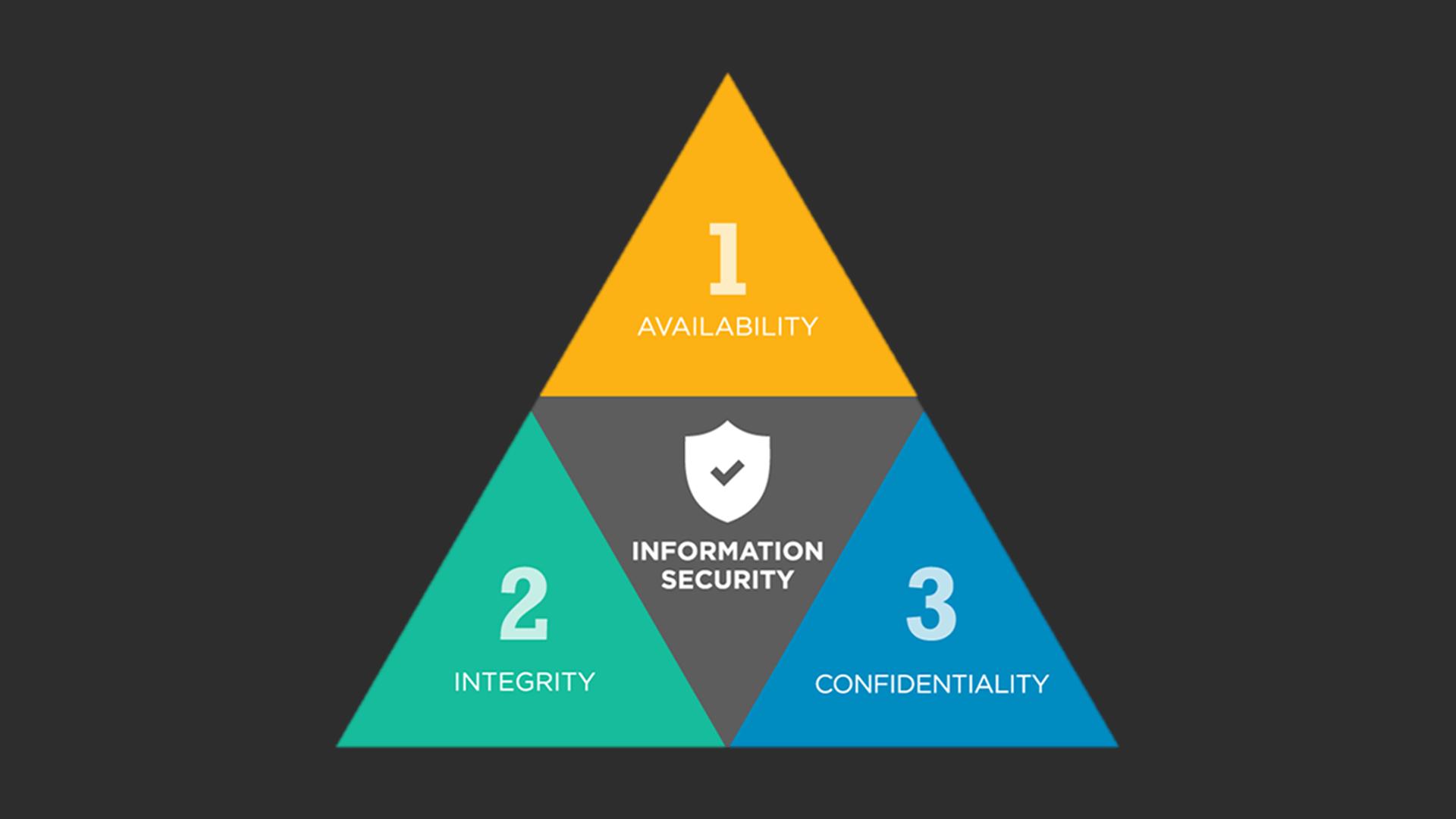
11/15/22 PRACTICALCYBERSECURITY: A HOW-TO GUIDE
WHAT IS CYBERSECURITY? o Think C.I.A. o Confidentiality o Integrity o Availability o It’s a triangle and needs all three legs to stand. 2 81
BEN LUKE
1













11/15/22 YOU ARE A TARGET DON’T ASK WHY; ASK WHY NOT. 3 Have access to CJIS data Handle sensitive information Are empowered to speak with the force of the law Exchange information with other high-value targets Are in the public’s eye ARE A TARGET YOU 4 82
BUT WHY?????
• Cyberwarfare
• Chaos/Disruption
• Extortion
•
• Hacktivism
• Notoriety
• Personally motivated (revenge)
• The lolz
OKAY, BUT WHAT’S THE WORST THAT COULD HAPPEN?
• You can’t do business. (availability)
• Lack of confidence in your work. (integrity)
• Disclosure of sealed/sensitive information (confidentiality)
• Damage to reputation
• Identity theft
• Criminal/Civil penalties
• Significant financial implications
11/15/22
Profit
5
6 83
BACKUPS BACKUPS BACKUPS
• Backup the things you can’t stand to lose.
• Abide by the 3,2,1 rule.
Is your data in three locations? Are two of them on different mediums?

Is at least one of them offsite?
Backups are one of the best defenses against ransomware.
It’s not enough to “have” backups, you need to test them too.


An untested backup isn’t a backup.

11/15/22
7
HACKERS NEED YOUR HELP
8 84
UPDATES, A NECESSARY EVIL

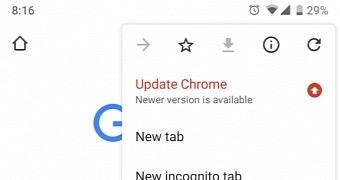


11/15/22
9
10 85
• Updates fix vulnerabilities • Updates fix vulnerabilities that everyone knows about
CHANGE HOW YOU THINK ABOUT PASSWORDS
BETTER PASSWORDS: LONG PASSWORDS ARE STRONG PASSWORDS
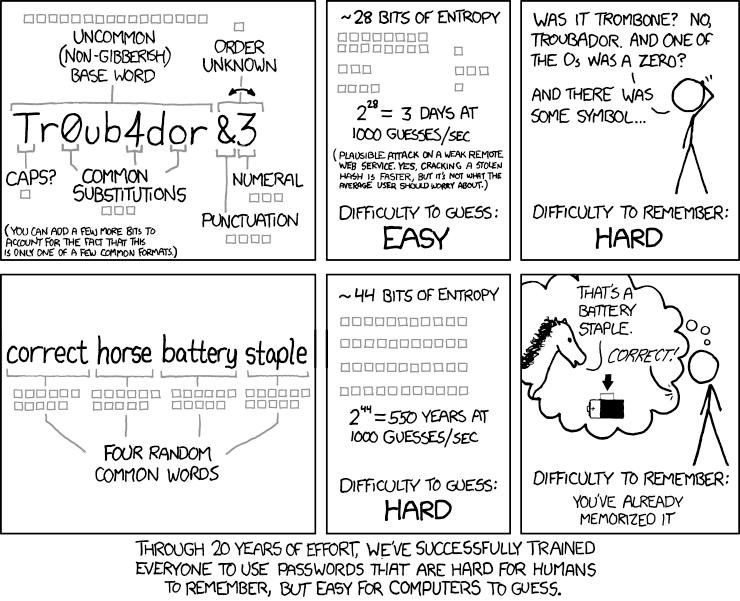
• Length is better than complexity
• Consider passphrases vs. passwords
• Project Rainbow-Crack
BETTER PASSWORDS: DO’SAND DON’TS
DON’T:
• Share passwords or account access.. ever.. especially w/ IT
• Use easily guessable passwords (your birthday, anniversary, dog’s name, children, address, etc.)
• Recycle passwords (each one should be unique) -haveIbeenPwned
DO:
• Use a password manager that is well secured.
11/15/22
11
12 86
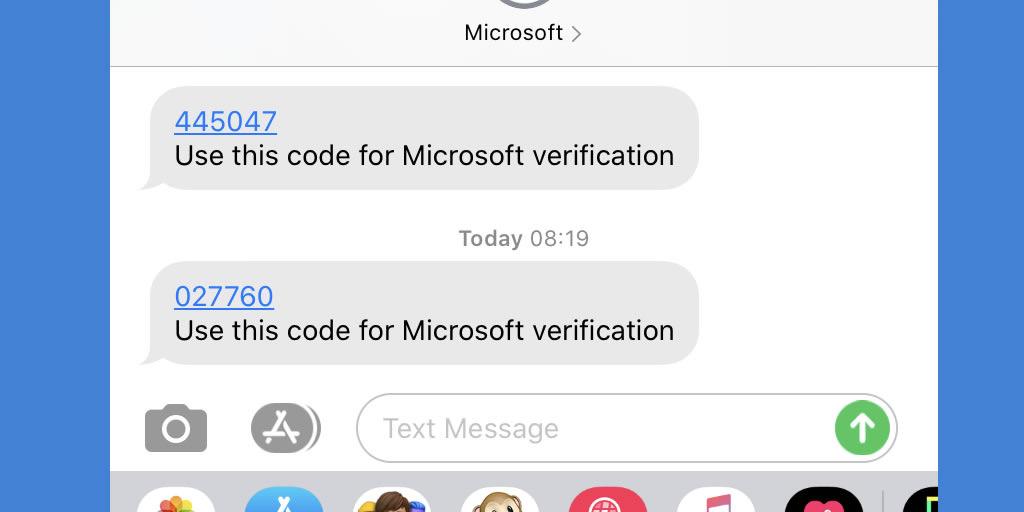
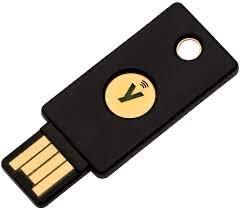
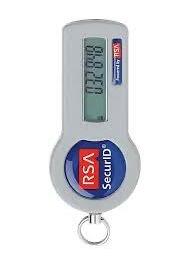
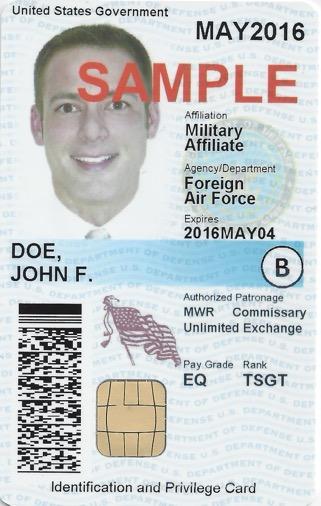
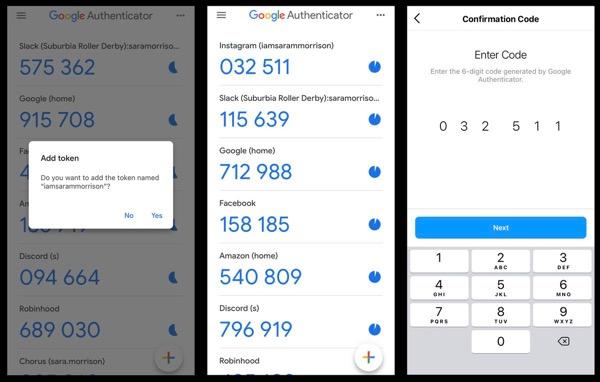



11/15/22 MULTI-FACTOR AUTHENTICATION 13 MULTI-FACTOR AUTHENTICATION Try it out: Gmail.com gccademo@gmail.com CourtAdmin1 14 87
SOCIAL ENGINEERING –PHISHING

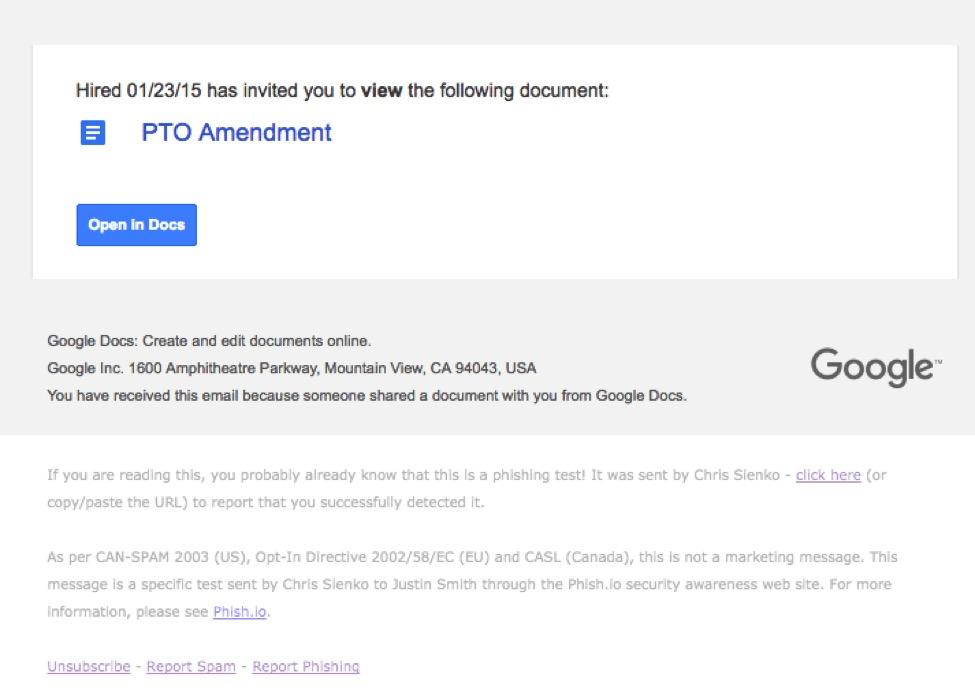
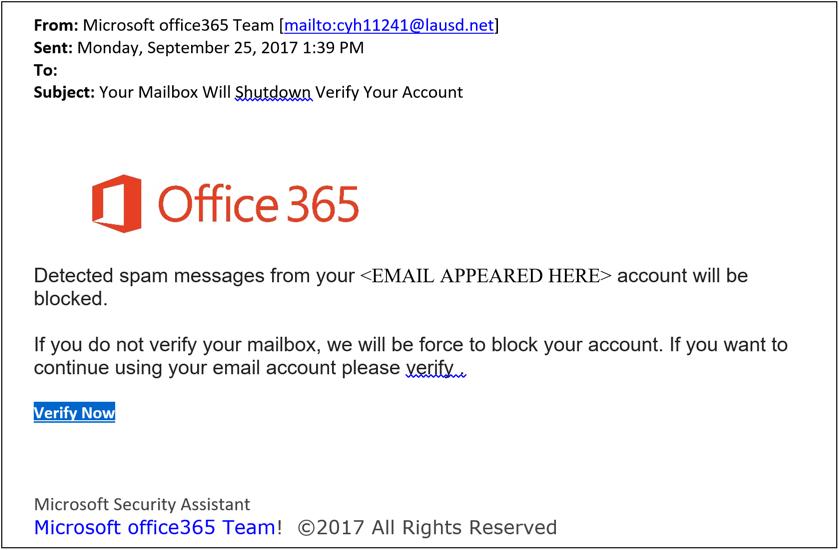
Watch out for: Call to action -Sense of urgency
We are the weakest link.
11/15/22
15
We are the weakest link.
16 88
NEVER CLICK LINKS OR OPEN ATTACHMENTS YOU WERE NOT EXPECTING
SOCIAL ENGINEERING –PRETEXTING/(CONMAN SCENARIOS)

• Don’t be so helpful.
• Verify using known, good information
• When in doubt, trust your gut.
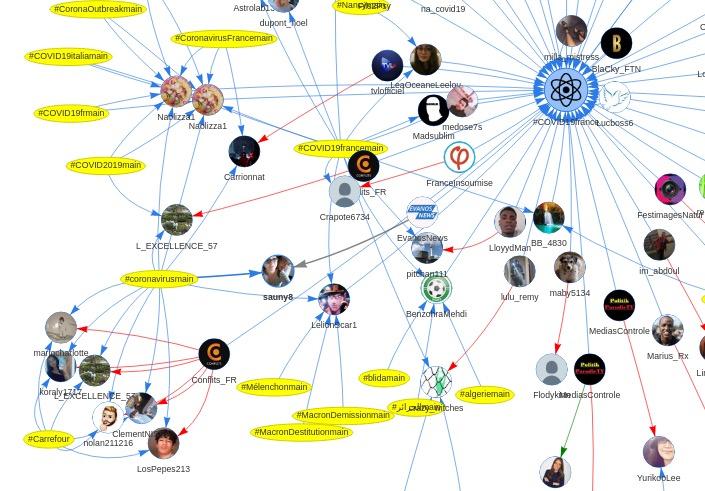
SOCIAL ENGINEERING –LIMIT YOUR ONLINE EXPOSURE
• Don’t be so helpful.
• Verify using known, good information
• When in doubt, trust your gut.
11/15/22
17
18 89


11/15/22 DON’T STOP HERE! YOUR CYBERSECURITY JOURNEY IS JUST STARTING • MANDATE REGULAR, RECURRING TRAINING FOR YOURSELF AND YOUR TEAM • HAVE POLICIES THAT REQUIRE THE THINGS WE’VE TALKED ABOUT TODAY • BACKUPS & MFA!!! • DON’T GO ALONE. 19 BEN LUKE CHIEF TECHNOLOGY OFFICER, JUDICIAL COUNCIL/ADMINISTRATIVE OFFICE OF THE COURTS BEN.LUKE@GEORGIACOURTS.GOV (470)561-1218 YOU AREN’T IN THIS ALONE 20 90

Zoom Video Communications, Inc.
Practices for Securing Your Zoom Meetings Everything you need to keep your video meetings safe and secure. 91
Best
Zoom has helped thousands of businesses and organizations connect more productively, reliably, and securely with video meetings. Zoom’s top priority, since the very beginning, has been to provide a safe and secure environment for all Zoom users. The Zoom platform comes loaded with host controls and numerous security features designed to effectively manage meetings, prevent disruption, and help users communicate remotely.
In this guide, learn about how you can secure your virtual meetings. The following content is separated into three distinct sections. The first section focuses on all the steps you can take to secure your meeting before it starts. The second section highlights all the controls that a Zoom Meeting host has at their disposal during a Zoom Meeting. The final section highlights a list of additional resources available to continue learning and become a Zoom Meeting expert.
About Zoom
Zoom is the leader in modern enterprise video communications, with an easy, reliable cloud platform for video and audio conferencing, collaboration, chat, and webinars across mobile devices, desktops, telephones, and room systems. Zoom Rooms is the original software-based conference room solution used around the world in board, conference, huddle, and training rooms, as well as executive offices and classrooms. Founded in 2011, Zoom helps businesses and organizations bring their teams together in a frictionless environment to get more done. Zoom is a publicly-traded company on Nasdaq (ticker: ZM) and headquartered in San Jose, California.
We take your security seriously.
Security questions or issues?
If you have any questions or think you may have found a security vulnerability within Zoom, please submit a vulnerability report or contact our security team directly at security@zoom.us
Zoom Video Communications, Inc.
92
Part 1
Pre-Meeting Settings
With meeting settings in the Zoom web portal and the Zoom application, securing your Zoom Meetings can start before your event even begins.
Zoom Video Communications, Inc.
93
PRO TIP: Turn on Your Waiting Room
One of the best ways to secure your meeting is to turn on Zoom’s Waiting Room feature. Some Zoom users, like those in education, will have this feature turned on by default. This feature provides a virtual waiting room for your attendees and allows you to admit individual meeting participants into your meeting at your discretion.

Turn on Your Waiting Room
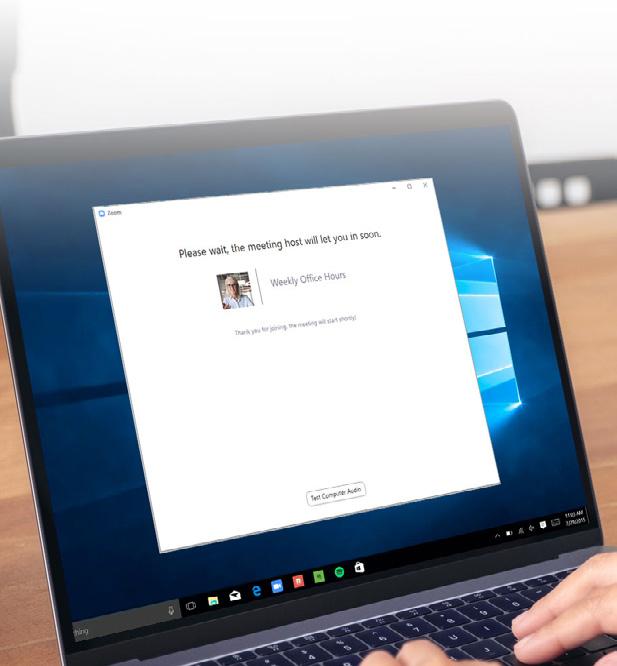
Users can enable Waiting Room as a default account setting, for individual meetings, or as a meeting template. Learn more about Waiting Rooms.
View and Admit Participants
As meeting attendees arrive, Zoom will notify you and provide you a list of those in the meeting, and those still in the waiting room, so you have total control of who joins your meeting.
Customize the Experience
Once enabled, you can tailor your Waiting Room title, logo, and description, customizing what participants see when they arrive.
Message the Waiting Room
If you’re meeting with a smaller group of attendees, one attendee at a time, or your previous meeting is running long, you can message everyone in the waiting room and let them know.
Add Additional Helpful Info
The description on your Waiting Room is a great place to add additional information, meeting guidelines, or rules for participants to follow.
Remove Participants
Once you’ve admitted an attendee into your meeting, you can easily push them back to the Waiting Room or remove them from the meeting all together, and can even prevent their return.
Zoom Video Communications, Inc.
94
Attendee Experience Host Experience
Don’t Use Personal Meeting ID for Public Meetings

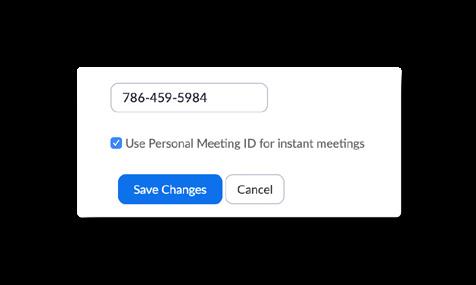
Your Personal Meeting ID (PMI) is the default meeting that launches when you start and ad hoc meeting. Your PMI doesn’t change unless you change it yourself, which makes it very useful if people need a way to reach you. But for public meetings, you should always schedule new meetings with randomly generated meeting IDs. That way, only invited attendees will know how to join your meeting. You can also turn off your PMI when starting an instant meeting in your profile settings.


Only Allow Registered or Domain Verified Users
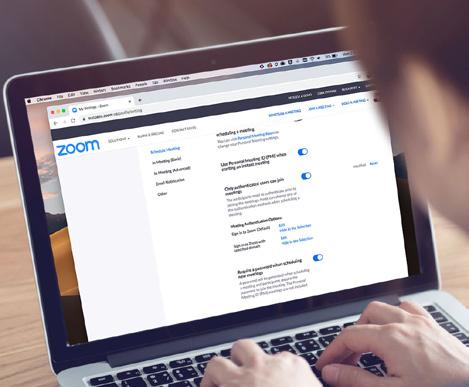
Zoom can also give you peace of mind by letting you know exactly who will be attending your meeting. When scheduling a meeting, you can require attendees to register with their e-mail, name, and custom questions. You can even customize your registration page with a banner and logo. By default, Zoom also restricts participants to those who are logged into Zoom, and you can even restrict it to Zoom users who’s email address uses a certain domain.
Require a Passcode to Join
You can take meeting security even further by requiring a passcode to join your meetings. This feature can be applied to both your Personal Meeting ID, so only those with the passcode will be able to reach you, and to newly scheduled meetings. To learn all the ways to add a passcode for your meetings, please view this support article.
Zoom Video Communications, Inc.
95
Part 2
In-Meeting Settings
Once your Zoom Meeting is off and running you’ll have access to a number of helpful features that put you in total control.
Zoom Video Communications, Inc.
96
PRO TIP: Master the
Security Menu
Zoom now puts all your essential security options in a single button, right in the in-meeting menu. Under this menu you’ll be able to lock your meeting and prevent any new participants from joining. You’ll also be able to enable Waiting Room to help manage new meeting participants and be able to control any sharing and chat permissions of individuals and all attendees.
Lock the Meeting
Once all your attendees have arrived, you can easily lock your meeting from the security menu, preventing any additional attendees from joining.

Enable Waiting Room
We’ve covered the Waiting Room in great detail already, but what if you forgot to activate it or want to turn it on mid-meeting? Now you can!
Manage Participants
In the following page, we’ll dive into all the ways you can manage your participants directly from the security menu, giving you total control.
Zoom Video Communications, Inc.
97
Control Screen Sharing

Allowing participants to screen share in a meeting can be a great way to collaborate, but that can also leave you open to unwanted interruptions during larger meetings. Zoom gives you the ability to determine if you want other participants in the meeting to be able to share their screens, or if you want to be the only one with that ability. You can easily toggle this feature on and off from the screen sharing menu, as well as the security menu.

Turn Off Annotation
Like screen sharing and in-meeting chat, annotation can be a great tool when you need it, but it can also be an opportunity for mischief when you don’t. To avoid unwanted annotation, Zoom allows you as the meeting host to remove all participants ability to annotate during a screen share. You can disable this for the entire meeting, or just temporarily.

Disable Private Chat

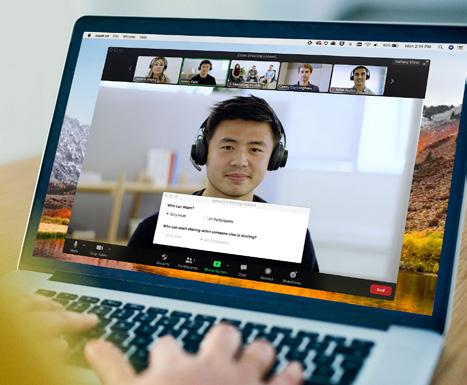
In-meeting chat adds another dimension of collaboration to your meetings, creating a place for questions to be asked and fielded later, or for supplemental resources to be posted. But sometimes chat can become distracting or unproductive. In those cases, Zoom allows you to disable and enable chat throughout your meeting.

Zoom Video Communications, Inc.
98
Mute Participants
We’ve all been in meetings where somebody forgets to mute, or their microphone picks up some background noise that interrupts the meeting. Zoom allows you to solve this problem with a simple button to mute all participants. For an added layer of security, you can also disable participant’s ability to unmute themselves. When you’re ready to make the meeting interactive again, you can simply hit the “Unmute All” button or allow participants to unmute themselves.



Remove Participants

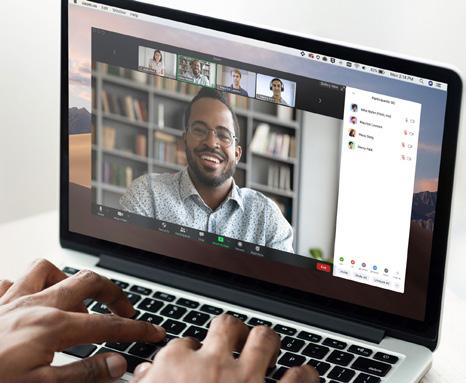

If you follow all the best practices in this guide, you should never find yourself in a meeting with an unwanted guest. But if you do need to remove an attendee from the meeting at any point, Zoom makes it easy to kick an unwanted participant out of the meeting. For additional security, you can also choose to not allow participants to rejoin once they’ve been removed.
Make Someone a Co-Host
All the features we’ve covered so far are only accessible to meeting hosts, ensuring that hosts are the only ones with total control over a meeting. But what if you need a helping hand to manage all your participants? You can promote a trusted meeting attendee to Co-Host, allowing them many of the same privileges and control features available to the meeting host themselves. To learn about the difference between a host and co-host, view this support article.
Zoom Video Communications, Inc.
99
Part 3
Additional Resources for Enhancing Security
When it comes to Zoom’s security, our most important asset is our users and how they utilize the product.
Zoom Video Communications, Inc.
100
Still have questions? We’ve still got you covered.
If you still have questions about specific features or functionality, we have three resources you may find helpful. The Zoom Help Center has thousands of support articles on all things Zoom. We also run weekly webinar trainings, or we have recordings you can access immediately, and the Zoom Blog is a great source of new Zoom use cases and stories.
Zoom Help Center
Whether you’re looking for technical documentation or a one minute quick start video, the Zoom Help Center has you covered with thousands of resources that are updated daily, so you can get your questions answered and keep Zooming.

Visit the Help Center
Live/Recorded Trainings
Our Zoom experts host free and interactive live training webinars daily. Get up to speed on important topics in less than an hour. Just select the time zone that fits best for you when registering for one of our live training webinars.
View Live Trainings & Recordings

Zoom Blog
Want to stay up-to-date on everything happening in the Zoom community? The Zoom blog offers daily stories on what’s new at Zoom, exciting updates, and innovative customer stories and use cases to keep you inspired and on the cutting edge.
Visit the Zoom Blog
101
Zoom Video Communications, Inc. 102
CULTURAL CONSIDERATIONS
CULTURAL CONSIDERATIONS AND LANGUAGE BARRIERS: PRACTICAL TIPS
FOR THE MEDIATOR AND ADVOCATE
This panel is a discussion to describe how culture (primarily through language) can impact negotiation and mediation; provide an overview of relevant Georgia rules that give best practices guidance, particularly as to interpreters and access to court processes; identify approaches to manage communication and language barriers and to ensure parties' understanding of, and participation in, the mediation process.
Moderated by: Douglas J. Witten, Esq.
Panelists include: Justice Carla Wong McMillian Jana Edmondson-Cooper, Esq. Michael Eshman, Esq.
This session will be livestreamed to virtual attendees.
29THANNUALADRINSTITUTE NOVEMBER 18, 2022 GEORGIA TECH HOTEL AND CONFERENCE CENTER 1:00 PM TO 2:00 PM 1 CLE HOUR, INCLUDING 1 PROFESSIONALISM HOUR
attendees can join Cultural Considerations and Language Barriers
the Ballroom
In-person
in
103
Douglas J. Witten, Esq.
DWitten@InnovativeADR.com | www.innovativeadr.com
Douglas J. Witten, Esq., principal of Innovative ADR International LLC, is a mediator and arbitrator who has 26+ years of legal experience and has mediated 1300+ cases since becoming a registered neutral in 2003. Doug offers dispute resolution services, in English and Spanish, across areas including healthcare, workers’ compensation, accidents and injuries, and commercial matters. He previously practiced law in the healthcare and corporate departments of global firms King & Spalding LLP and Long, Aldridge & Norman LLP (k/n/a Dentons), and he also served Georgia’s workers’ compensation agency in management roles such as Deputy Director and Chief Mediator of the ADR Division, Appellate Division Director, and Attorney General Liaison.
Doug is a panel neutral for the American Health Law Association (AHLA), the Financial Industry Regulatory Authority (FINRA), and BAY Mediation & Arbitration Services. He is actively involved in the Dispute Resolution (DR) Sections of the American Bar Association and the State Bar of Georgia and currently serves, among other roles, as Chair of the Atlanta Bar Association DR Section. In 2021, Doug was inducted into the National Academy of Distinguished Neutrals (NADN), an invitation only professional association of ADR professionals recognized for hands on experience in the field of civil and commercial conflict resolution.
Additionally, Doug has written and presented extensively on healthcare, negotiation, mediation, and dispute resolution topics. Doug’s publications include The Stoic Negotiator™ newsletter (stoicnegotiator.substack.com) and Mediation Essentials Toolkit: A Practitioner’s Emergency Survival
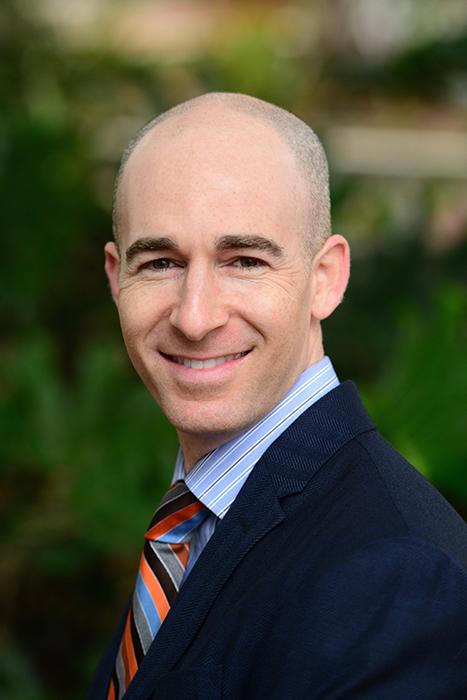
104
Guide (https://www.amazon.com/Mediation Essentials Toolkit Practitioners
Emergency ebook/dp/B08WRJPXMN). Also a trainer for the American Negotiation Institute, Doug offers on demand negotiation courses through The Stoic Negotiator™ Academy (https://thestoicnegotiatoracademy.thinkific.com), Practising Law Institute (PLI), and LinkedIn Learning (https://www.linkedin.com/learning/how to use negotiation jiu jitsu to resolve conflicts and persuade/introducing doug witten esq 8693388).
Doug earned a B.B.A. from Emory University Goizueta Business School, a J.D. from New York University School of Law, and an LL.M. from the University of Houston.
105
Justice Carla Wong McMillian https://www.gasupreme.us/ https://ocp.georgiacourts.gov/commission on interpreters/
Justice Carla Wong McMillian was appointed to the Supreme Court of Georgia by Governor Brian Kemp, taking office on April 10, 2020.

Born and raised in Augusta, Georgia, she is the first Asian Pacific American to serve on a state’s highest court in the Southern United States. She currently serves as Chair of the Standing Committee on Court Interpreters.
Prior to joining the Supreme Court, Justice McMillian served on the Court of Appeals, where she was appointed by Governor Nathan Deal and took office in 2013. With her election the following year to that court, Justice McMillian became the first Asian American to be elected to a statewide office in Georgia.
Justice McMillian also has served as the State Court Judge for Fayette County, a position to which she was appointed by Governor Sonny Perdue in 2010. In 2012, the voters of Fayette County overwhelmingly elected her to a full term after a contested election.
Before her appointment to the bench, Justice McMillian was a partner in the litigation group of the national law firm of Sutherland Asbill & Brennan LLP. Her practice centered on complex business litigation, including a heavy emphasis on appellate matters. In particular, she argued cases before the Georgia Supreme Court, the Georgia Court of Appeals, the Eleventh Circuit Court of Appeals, the Third Circuit Court of Appeals, and the Louisiana Court of Appeals. Before joining Sutherland, Justice McMillian had the privilege of beginning her legal career as a federal law
106
clerk for the Honorable William C. O’Kelley of the United States District Court for the Northern District of Georgia.
Throughout her career, Justice McMillian has demonstrated a commitment to service. She currently serves or has served in leadership roles for the Georgia Asian Pacific American Bar Association, the Fayette County Historical Society, the Partnership Against Domestic Violence, the Real Life Center, the Atlanta Chapter of the Federalist Society for Law and Public Policy Studies, the Georgia Legal History Foundation, and the Board of Trustees of Landmark Christian School. She has also been a member of the Rotary Club of Peachtree City.
Numerous groups have recognized Justice McMillian’s work as a lawyer and her service to the community. Her peers in the legal profession twice selected her as a Georgia Super Lawyers “Rising Star.” In 2012, the National Asian Pacific American Bar Association tapped her as one of the “Best Lawyers Under 40” in the United States. The National Diversity Council picked her as one of the “2010 Most Powerful and Influential Women of Georgia.” The Westminster Schools of Augusta named her as its “2010 Distinguished Alumna,” and the Fayette Woman recognized Justice McMillian in its January 2013 issue for “Making a Difference on the Bench and Beyond.” Justice McMillian has also been named as a “Notable Woman of History” by the Fayette Starr’s Mill Chapter of the Daughters of the American Revolution, a 2013 “Community Champion” by the Asian American Legal Advocacy Center, and one of the 25 Most Influential Asian Americans of 2014 and 2015 by the Georgia Asian Times. In 2015, she also received the Distinguished Service Award by the Asian American Heritage Foundation, and in 2018, she was honored with the Women’s Leadership Award by the Georgia Asian Pacific American Bar Association. In 2019, the Young Lawyers Division of the State Bar of Georgia recognized Justice McMillian for her Distinguished Judicial Service.
Education has played an enormous role in Justice McMillian’s life. She attended law school as a Woodruff Scholar at the University of Georgia School of Law, where she served on the Law Review Editorial Board and as President of the Christian Legal Society. She also graduated with high honors from Duke University, earning
107
Bachelor of Arts degrees in both History and Economics. She obtained her high school diploma from the Westminster Schools of Augusta, graduating as valedictorian of her class.
Justice McMillian has been married since 1997 to her husband Lance, a professor at Atlanta’s John Marshall Law School. They have two children and live in Fayette County. They are long time members of Dogwood Church, where Justice McMillian has served as a small group leader for adult, women’s, and children’s small groups
108
Jana Edmondson-Cooper
http://www.edmoconsultllc.com/
A former legal interpreter, former legal aid attorney, and current federal prosecutor, Ms. Edmondson Cooper spends a significant amount of time working to alleviate language access as an access to justice (A2J) issue. With over a decade of language access experience, Ms. Edmondson Cooper serves as President and Chief A2J Officer of Edmondson Consulting, LLC which seeks to improve access, promote equity, and preserve justice by providing A2J/language access consultation services to stakeholders nationwide. Ms. Edmondson Cooper has contributed to the development of local, state, and federal language access policies & the development of state and national curricula for training attorneys and judges on language access as an A2J issue. Appointed by the Supreme Court of Georgia, Ms. Edmondson Cooper is a member of the Judicial Council of Georgia Standing Committee on Interpreters (formerly known as the Supreme Court of Georgia Commission on Interpreters) where she initiated and led the development of the Model Administrative Protocol (MAP) - the first of its kind in Georgia and widely considered the first of its kind in any non unified court system in the nation. Ms. Edmondson Cooper is also a member of the Judicial Council of GA's Access to Justice Committee. Ms. Edmondson Cooper has authored several publications on language access including GA's first benchbook chapter dedicated to the provision of qualified interpreters in civil and criminal proceedings. Ms. Edmondson Cooper's commitment to access, equity, and justice has been acknowledged statewide and nationally, including, recognition by the Fulton County Daily Report as a rising legal star to watch, recognition by former Gov. Nathan Deal and the GA Commssion on Equal Opportunity, selection to the Fellows of the American Bar Foundation, and recognition by the National Bar Association and the American Bar Association as one
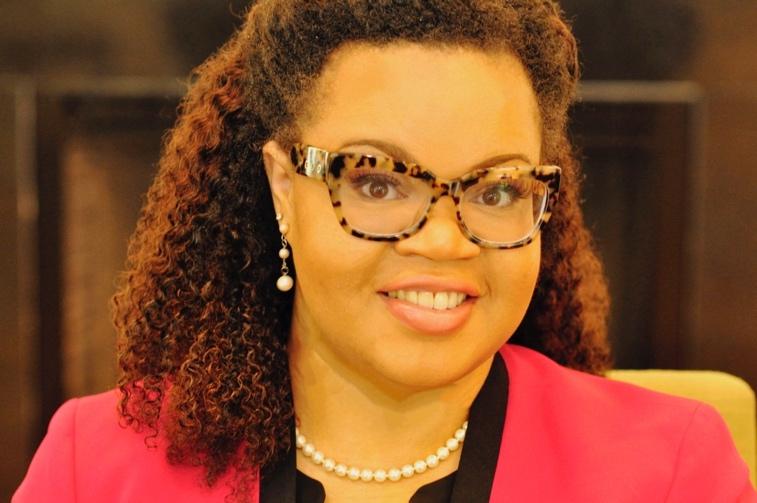
109
of the nation’s top lawyers who exemplify a broad range of high achievement, innovation, vision, leadership, and legal and community involvement. Ms. Edmondson Cooper is a graduate of Spelman College and Mississippi College School of Law.
110
Michael Eshman, Esq.

meshman@eshmanbegnaud.com https://eshmanbegnaud.com/meet michael/
Michael Eshman, Esq. is a founding partner of Eshman Begnaud in Decatur, Georgia where he represents plaintiffs in all aspects of civil litigation in state and federal court and serves as a registered mediator with Miles Mediation & Arbitration. He focuses his practice in the areas of personal injury, civil rights, and alternative dispute resolution – with a particular interest and focus in assessing and addressing language access issues in ADR. Michael also serves on the Amicus Committee of the Georgia Trial Lawyers Association and as a Board Member and the Mentoring Program Co Chair of the Georgia Latino Law Foundation.
111
Bilingual Listening: A Bilingual Mediator’s Greatest Asset
“One of the best ways to persuade others is with your ears – by listening to them.” –Former Secretary of State Dean Rusk
In a 2014 TED Talk “The Power of Listening,” William Ury posed a simple question that is fundamental to negotiation and all human interaction, “if a person speaks … and no one listens, is that really communication?”1 He stresses the importance of listening to understand opposing viewpoints, to build connection and rapport, and to encourage your adversary to listen to you. He also stresses how often we take listening for granted and how difficult it really is. In the context of language barriers in mediation, I would pose this corollary question, “if a person speaks and does not feel listened to or heard, are they really a part of the conversation?” This corollary question should matter to mediator and participant alike every time a mediation involves both English-speaking and limited English proficient parties.
Mediation, at its core, is a conversation facilitated by an impartial neutral with the goal of helping the parties reach a negotiated resolution of their dispute(s). Facilitating that conversation with the full engagement and participation of parties who speak different languages is a challenge even if you are fortunate enough to work with a qualified interpreter – if you can get one. By way of example, in Georgia, there are approximately 340,000 people over the age of 5 who speak Spanish in the home and speak English less than “very well.”2 In contrast, there are currently 108 Spanish-language interpreters who have attained the highest level of certification from the Georgia Supreme Court Commission on Interpreters, which requires a passing score of 70% on a battery of tests.3 This means that there is roughly 1 certified interpreter for every 3,148 Spanish-speaking Georgians who speak English less than very well, and if you are fortunate enough to have one of these interpreters available for your mediation, up to 30% of what is being said will be missed. If you are using anyone else as an interpreter, which is very likely, it is a gamble as to how much of the conversation may or may not be missed. Having an interpreter is an important first step in addressing a language barrier, but it may provide a false sense of security that the party with limited English proficiency has been fully informed and engaged in the conversation. As George Bernard Shaw observed, “the greatest problem in communication is the illusion that it has been accomplished.” I wonder and worry how often we assume we have addressed or overcome a language barrier when it has merely been side-stepped or worse, ignored.
1 https://www.tedxsandiego.com/transcripts/2014 talks/william ury/ 2 https://www.migrationpolicy.org/data/state profiles/state/language/GA 3 https://ocp.georgiacourts.gov/commission on interpreters/
112
A bilingual mediator is not an interpreter, and our primary benefits to all participants to a mediation are not so much in what we can say but in what we can do – we can listen directly. We can listen to build connection and rapport and to ensure the accuracy of the interpretation – I once caught an error in the interpretation of the final settlement amount being offered, which would have been much more difficult to untangle if it had not been caught in the moment. Most importantly, we can listen to help the party with limited English proficiency to feel heard and engaged in the conversation. I would argue that in any mediation the mediator’s ability to listen and make the parties feel heard and understood is more important than any other single characteristic of the mediator. “People listen better if they feel you have understood them. They tend to think that those who understand them are intelligent and sympathetic people whose opinions may be worth listening to.”4 In my experience, listening begets listening, which in turns leads to a productive conversation and negotiation. Or as William Ury observes, “listening may be the cheapest concession we can make in a negotiation. It costs us nothing and it brings huge benefits. Listening may be the golden key that opens the door to human relationship.”5
Qualification and subject matter expertise certainly matter when choosing a mediator. The mediator must have the knowledge base to facilitate a productive conversation and qualification and experience necessary to be trusted by the parties. But the mediator’s ability to listen actively and directly should always be a paramount consideration when choosing a mediator. When one party has limited English proficiency, a mediator who can listen to them directly in their native language is incredibly valuable towards the end goal – helping the parties get to resolution and closure in their dispute.
4 Roger Fisher, Getting to Yes: Negotiating Agreement Without Giving In 5 https://www.tedxsandiego.com/transcripts/2014 talks/william ury/
113
FEATURE
The Language of Civil Justice: Representing LEP and DHH Clients
 BY JANA J. EDMONDSON-COOPER AND MICHAEL J. ESHMAN
BY JANA J. EDMONDSON-COOPER AND MICHAEL J. ESHMAN
The essence of due process is the opportunity to be heard. Our clients with limited English proficiency ("LEP") and who are Deaf/Hard of Hearing ("DHH") face unique challenges in their efforts to be heard – by judges, juries, and even us, their lawyers. Interpreters serve a critical role in addressing these challenges, but they can also be a barrier to justice if they are not qualified, sworn, and impartial; See Ramos v. Terry, 279 Ga. 889, 893 (2005); See also State v. Tunkara, 298 Ga. 488 (2016) (affirming order granting new trial in a murder case based on, inter alia, the inadequacy of the interpreter).
4/19/2021 Verdict (GTLQ) - Spring 2021 - The Language of Civil Justice: Representing LEP and DHH Clients https://www.verdict-digital.com/gtlq/0121_spring_2021/MobilePagedArticle.action?articleId=1672351#articleId1672351 1/8
114
i
To pursue civil justice on behalf of our LEP and DHH clients requires more than our written and oral advocacy; it requires our own understanding and planning of how and where to find qualified interpreters and how to work with those interpreters to ensure that our clients have meaningful access to justice. If we ignore the barrier or assume it will be handled by the courts, that bilingual person in our office, or, worse, an app on our phones, we risk injustice for our clients – denying them the opportunity to hear and be heard. The more we know about interpreters – how difficult their job is, the differences between licensed and unlicensed interpreters, the differences between the levels of court licensure, how to vet an interpreters qualifications, the difference between "proceedings" interpreters and "table" interpreters, etc. – the better for our LEP and DHH clients.
ADVERTISEMENT
4/19/2021 Verdict (GTLQ) - Spring 2021 - The Language of Civil Justice: Representing LEP and DHH Clients https://www.verdict-digital.com/gtlq/0121_spring_2021/MobilePagedArticle.action?articleId=1672351#articleId1672351 2/8
115
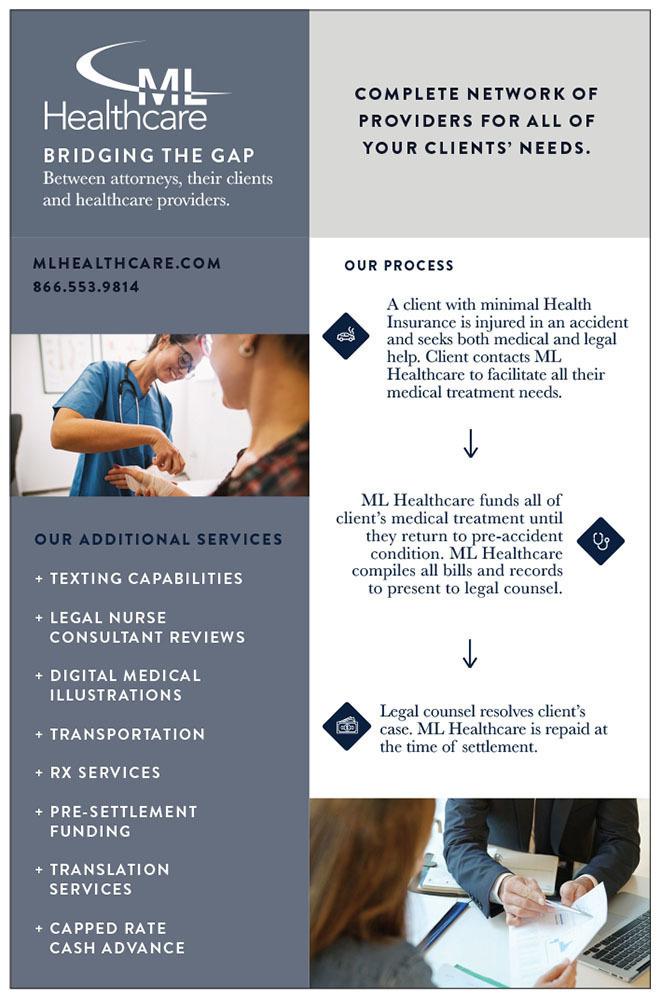
4/19/2021 Verdict (GTLQ) - Spring 2021 - The Language of Civil Justice: Representing LEP and DHH Clients https://www.verdict-digital.com/gtlq/0121_spring_2021/MobilePagedArticle.action?articleId=1672351#articleId1672351 3/8 116
To begin, interpreting is hard and 100% accuracy is rarely, if ever, achieved. Being bilingual is not the same as being a qualified interpreter. One of the two of us is a bilingual federal prosecutor and seasoned language access consultant who formerly served as a professionally trained legal interpreter and serves on the Georgia Supreme Court Commission on Interpreters. The other of us is a bilingual trial attorney and mediator who was raised speaking English and Spanish in the home and speaks Spanish fluently. Neither is qualified to serve as an interpreter in a legal setting and neither of us would likely make a good interpreter in that setting. Being conversant or fluent in a foreign language is one thing; being able to quickly process information between two languages, while accounting for different dialects and legal and/or medical jargon, all the while upholding the ethical requirements of a legal interpreter is something entirely different and more difficult than many of us fully appreciate.
When working with an interpreter in any judicial proceeding, including court-managed functions such as court-ordered mediation, your client is entitled to the most qualified, available interpreter (i.e., every effort should be made to locate the most qualified interpreter which would be the interpreter with the highest level of licensing designation in your client’s language). See e.g. Ramos v. Terry, 279 Ga. 889 (2005); See also, Ling v. State, 288 Ga. 299, 702 S.E.2d 881 (2010). The Supreme Court of Georgia Commission on Interpreters (Commission) is the policy making body appointed by the Court which regulates the use of foreign language interpreters in civil and criminal proceedings throughout the state. The Commission has three licensing designations for foreign language interpreters – certified, conditionally approved, and registered. You can locate licensed interpreters and/or verify the licensure of an interpreter by visiting (https://georgiacourts.gov/coi/). You can search by name, language, and licensing designation.
OurLEPandDHHclientsfaceuniquebarrierstojustice.We haveethicalandlegalobligationstomakesuretheyareheardas accuratelyandcompletelyaspossible.

4/19/2021 https://www.verdict-digital.com/gtlq/0121_spring_2021/MobilePagedArticle.action?articleId=1672351#articleId1672351 4/8
117
Within the Commission’s licensing designations, the highest is "Certified." Interpreters designated as "Certified" are individuals competent in court interpretation as demonstrated by successful completion of an oral and written examination demonstrating competence in interpreting as provided for by the Georgia Commission on Interpreters and the completion of required continuing education providing familiarity with the Georgia court system and the roles and responsibilities of interpreters within that system. This designation level requires an Oral Certification Exam score of 70% or higher in each mode of interpretation (sight, consecutive, and simultaneous). In lieu of examination, the Commission may recognize federal certification or certification of states participating in the National Consortium for State Court Interpreter Certification. At this highest level of licensure up to 30% of what your client says or hears could be missed or misinterpreted.
The next licensing designation is "Conditionally Approved." Interpreters designated as "Conditionally Approved" by the Commission are individuals appearing competent in court interpretation that have completed mandatory classroom training and passed a written examination demonstrating familiarity with the Georgia court system and the roles and responsibilities of interpreters within that system. Also, such individuals must have achieved a sufficient score on an oral examination as determined by the Commission. This designation level requires an overall score on oral examination of 60%, with no score in any mode of interpretation falling below 55%. Courts, and court-managed functions, are required to make a diligent effort to appoint a Certified interpreter before considering one that is only Conditionally Approved.
Currently, National Center for State Court oral certification exams exist only for the following languages, Arabic, Cantonese, French, Hatian-Creole, Hmong, Ilocano, Khmer, Korean, Loation, Mandarin, Polish, Portuguese, Russian, Somali, Spanish, Tagalog, and Vietnamese. For any language for which no national certification examination is available, the highest level of licensure is "Registered." This designation level is available to interpreters who have completed the mandatory classroom training, passed a written examination demonstrating familiarity with the Georgia court system and the roles and responsibilities of interpreters within that system, and completed two Oral Proficiency Interviews ("OPI"), one in English and one in the language in which the interpreter seeks licensure.
4/19/2021 Verdict (GTLQ) - Spring 2021 - The Language of Civil Justice: Representing LEP and DHH Clients https://www.verdict-digital.com/gtlq/0121_spring_2021/MobilePagedArticle.action?articleId=1672351#articleId1672351 5/8
118
At times, it may not be possible to find a licensed interpreter, and you may be left with an unlicensed interpreter. An unlicensed interpreter should not be relied upon for any court proceeding, including your client’s deposition, if it can be avoided. If you have a client who speaks a rare or indigenous language, you are encouraged to contact the Commission to help you find a qualified interpreter. Where the Commission is unable to assist with finding an interpreter in a needed language, you may also contact a commercial interpretation/translation service provider who can provide an in-person interpreter. When contacting a commercial interpreter service, it is important to specifically request a certified or other licensed interpreter and to ask whether the interpreters have any specialized training and/or experience in legal/courtroom settings. If the unlicensed interpreter will be used at a hearing or in trial, ask whether the judge has had the unlicensed interpreter review and sign the Commission’s Instructions for Use of Non-Licensed Interpreters, which is available on the Commission’s webpage. This will ensure, at the least, that the unlicensed interpreter is familiar with their role and ethical obligations as interpreter – to faithfully interpret to the best of their ability, not add, subtract, or guess what a speaker meant to say.
The Commission’s Instructions for Use of Non-Licensed Interpreters is also a good guide for you to review and to use with any bilingual staff or other third-party that you may use to help you interpret between you and your client. Some additional considerations to keep in mind when working with an unlicensed interpreter are:
1. The setting and circumstances – in casual conversation in your office, it may be fine to rely on your client’s child to help you communicate with your client. In court, deposition, mediation, or when communicating important and confidential information concerning your client’s case, using a child as your interpreter presents a host of problems (competency, conflicts of interest, understanding of ethical obligations of an interpreter, etc.);
2. The interpreter’s ability – even if you do not personally speak the language, listen for discrepancies between interpretation and what is being said. Listen for responses and/or interpretations that seem much too short or long; listen for the interpreter and your client having a dialogue rather than interpretation of a question and answer; listen for an interpreter who seems to be searching for and/or stumbling over words. Be willing to either step-in to ask the interpreter if they are having problems or to ask the court to step-in if you perceive a problem; and
4/19/2021 Verdict (GTLQ) - Spring 2021 - The Language of Civil Justice: Representing LEP and DHH Clients https://www.verdict-digital.com/gtlq/0121_spring_2021/MobilePagedArticle.action?articleId=1672351#articleId1672351 6/8
119
3. Conflicts of interest – there likely will be conflicts of interest when you rely on a staff member, attorney, or client’s family member. Even when working with a thirdparty, neutral interpreter, you should confirm that the interpreter does not know your client and does not have a conflict of interest.
Once you have found an interpreter, there are still myriad other considerations. For instance, there is an important distinction to make between proceedings interpreters and table interpreters. Proceedings interpreters interpret between your client and others (e.g., interpreting questions to your client on examination and interpreting your client’s responses). A table interpreter, in contrast, is there to help you (or your table) communicate with your client. If you rely on a staff member or client’s family member as a table interpreter, be mindful that your client may develop, or may already have, a closer relationship with your table interpreter than with you. A client’s family member, in particular, can present unique challenges of a table interpreter exceeding their intended role and under-interpreting, over-interpreting, and/or exercising undue influence on your client during litigation. It will take practice to develop a comfortable and professional balance for effectively communicating with your client through a table interpreter. Practice to have a good, working balance in place with your client and table interpreter well-before you get to trial.
Finally, in the course of representing an LEP or DHH client, there may be occasion when you look to widely available apps, like Google Translate, or video services to help you communicate. Be careful. For instance, if you rely on Google Translate, the word "settlement" in Spanish becomes "asentamiento," which is a place where people establish a community and not an agreement to settle a case. These are convenient tools, but they can create more confusion if they are relied upon too heavily.
Our LEP and DHH clients face unique barriers to justice. We have ethical and legal obligations to make sure they are heard as accurately and completely as possible. The Commission helps develop and implement policies to assist courts across the state with meeting their legal obligations to ensure LEP and DHH litigants have meaningful access to justice, and it is a resource available to all of us to help us do the same. Still, interpreting is hard, and there are limitations to what can be done through an interpreter under the best circumstances. We hope that helping to identify some of these barriers and limitations and highlighting the work of the Commission will help you consider and address these barriers and limitations in your own cases.
4/19/2021 Verdict (GTLQ) - Spring 2021 - The Language of Civil Justice: Representing LEP and DHH Clients https://www.verdict-digital.com/gtlq/0121_spring_2021/MobilePagedArticle.action?articleId=1672351#articleId1672351 7/8
120
ABOUT THE AUTHORS
Jana J. Edmondson-Cooper, a former legal interpreter and legal aid attorney, is a federal prosecutor and nationallyrecognized language access/access to justice (A2J) subjectmatter expert. Ms. Edmondson-Cooper also serves as the President/Chief A2J Officer of Edmondson Consulting, LLC, which seeks to improve access, promote equity, and preserve justice by providing language access/A2J policy evaluation, development, and training services nationwide to court systems, law enforcement agencies, government agencies, non-profits, law firms, and others. Additional information may be found at www.EdmoConsultLLC.com.

Michael J. Eshman is a Spanish-speaking trial lawyer with Eshman|Begnaud in Decatur, Georgia, where he represents plaintiffs in personal injury and civil rights cases. Michael is also a mediator at Miles Mediation & Arbitration where he mediates primarily personal injury cases, including motor vehicle collision cases, premises liability cases, product liability cases, and medical malpractice cases, and he is an advocate for language access in all phases of litigation, including ADR.

4/19/2021 Verdict (GTLQ) - Spring 2021 - The Language of Civil Justice: Representing LEP and DHH Clients https://www.verdict-digital.com/gtlq/0121_spring_2021/MobilePagedArticle.action?articleId=1672351#articleId1672351 8/8
121
Language Access In ADR: Three Observations on Language Barriers in Mediation
By: Michael J. Eshman
Let me begin with candor. I am a new neutral. As I write this, I am a few days away from my first scheduled mediation as the neutral. I am, however, a bilingual litigator who has represented parties with limited English proficiency in countless mediations – with successes and failures in overcoming language barriers. From that experience, I offer three observations that I hope will be of some practical value and that will contribute to driving future conversations on language access in ADR.
1. Feeling Heard Matters! After a 10-plus hour mediation, I sat on the phone consoling a sobbing mother in Spanish. I represented her in a medical malpractice case involving a catastrophic brain injury suffered by her son. A certified medical interpreter had come from the hospital to the mediation to interpret. Though the interpreter was completely bilingual and had training and experience as a medical interpreter, she got lost and intimidated by interpreting in the mediation setting and grew flustered. Ultimately, we had to excuse her, because her efforts were becoming more of a distraction than an aid. With the language barrier and natural tendencies in an attorney represented mediation, the mediator directed his attention and communication to the attorneys and made little eye contact with the parents. Both the mother and father felt unseen and unheard by the mediator, and the mediation failed – at significant cost to the hospital and an additional year-plus of litigation related stress for the family. I can say with confidence that if the family had felt more connected to the process through the neutral, the case would have resolved that day. The money was important to the family, but if they were going to end the litigation by agreement, they needed to feel like they were being seen and heard by someone other than their own lawyers. There is incredible power and value in feeling heard!
2. Interpreting is Hard. Being bilingual is not the same as being a skilled interpreter. If you are not bilingual and have not experienced how difficult interpreting is firsthand, I encourage you to try a simple exercise of having someone speak numbers 1 26 at random to you in rapid succession, while you simultaneously provide the corresponding letter in the alphabet. Though you are fluent in both your numbers and the alphabet, your brain may not immediately process that 19=S without singing the alphabet and counting on your hands, by which point you likely will have missed the next 10-plus numbers spoken to you. Of course, in language there are far more than 26 variables. Add in various dialects within languages and jargon (especially in professional settings like mediation) and you start to gain some appreciation for how difficult, and regularly thankless, the interpreter’s job is. Given this reality, in Georgia (where I practice), the highest level of licensure for a court interpreter requires an oral examination score of 70% or higher in each of three methods of interpretation (sight, simultaneous, and consecutive). 1 If you are lucky enough to have one of these licensed, professional interpreters in your mediation, up to 30% of what is being said is still being missed, misunderstood, or misconstrued. At least, a licensed
1 See https://georgiacourts.gov/wp content/uploads/2019/12/Requirements for Licensure as-a-Court Interpreter in the-State of Georgia.pdf (last accessed Sept. 16, 2020).
122
interpreter should understand his or her role and ethical obligations as an interpreter – to interpret faithfully, not to add or subtract his or her own thoughts, feelings, and context. If you are working with an unlicensed, bilingual person as an interpreter (e.g., a family member of a party, a bilingual attorney or their staff, etc.), he or she may or may not understand the role and ethical obligations of an interpreter. The important take away, here, is that interpreting is hard under the best of circumstances and having an interpreter present can be a great aid in limiting language barriers to resolution But, having a person present in the role of interpreter, alone, does not mean that the language barrier has been eliminated or overcome.
3. Language Barriers Can Be Limited and Overcome. When I talk to people about language access and working with interpreters, inevitably the question arises, “If I don’t speak the other language, how could I know whether the interpreter is providing a faithful and accurate interpretation?” We probably cannot know for sure, but there are numerous practical ways to limit and overcome language barriers in mediation:
(1) Be aware of the barrier. If knowledge is power, then simply being intentionally aware of a language barrier will help you to find your own solutions and best practices.
(2) Usedirect,conciselanguage. Simple sentences are not only easier to interpret, but the party with limited English proficiency may also be able to understand you better directly. “This will take patience,” “I promise to listen,” and “Let’s work together” said directly and with eye contact are easier to understand and interpret than “This may take a longtime today and I’m going to ask you to bear with me as we work through this. I will do my best to listen to you and your concerns, and I hope you will agree that we can work together to reach a resolution today.” Be intentional, direct, and concise with your language (and probably slow down for the interpreter too).
(3) Be mindful of your non-verbal cues. Body positioning (if it is an in-person mediation) and eye contact are powerful tools to help a party feel engaged in the process, no matter the language. Sit at the table so that everyone in the room feels connected to you and the process and make eye contact with each person in the room as you speak and with them as they speak. Also, consider that if a party cannot understand what you are saying, he or she is almost certainly reading how you are saying it and interpreting, or misinterpreting, your body language.
(4) Read the room. Even if you cannot speak directly with and understand the party with limited English proficiency, there are verbal and non-verbal clues that the language barrier is a problem. If you are working with an interpreter, does the interpreter seem to be straining, searching for words, taking long pauses? Does the interpretation seem too long or too short? Does the party with limited English proficiency seem engaged in the process? Most mediators pride themselves on their ability to read a room in the context of negotiation. A room can also be read for signs that a language barrier is getting in the way of the mediation process and resolution.
123
(5) Get to know the interpreter and ask for candor. Be mindful of the parties’ time, wishes, and goals of the process, but it helps to know the interpreter a little bit. (e.g., How did they become bilingual or multilingual? How did they become an interpreter? Do they hold any certifications as an interpreter? What is their relationship to the parties?) Make it a habit to ask them to be candid with you and to let you know if they need someone to slow down, they need a break, or if they are ever lost or having difficulties finding words.
There are countless other tools that may be used to help overcome language barriers in mediation, abstract ideas like the power of empathy and cultural awareness to transcend language and more practical resources like judicial guides for working with licensed and unlicensed interpreters 2 The key is that there are ways that we can limit and overcome language barriers in mediation if we acknowledge the barriers and act intentionally to limit and overcome them.
2 See e.g. https://georgiacourts.gov/wp content/uploads/2019/08/Brochure Working with Interpreters PDF.pdf (last accessed Sept. 16, 2020).
124
2004 Census Test
2010
LANGUAGEIDENTIFICATIONFLASHCARD
.á«Hô©dG çóëàJ hCG Gô≤J âæc GPG ™HôŸG Gòg ‘ áeÓY ™°V
QUmbJak'kñ¨g®b/benH ebI/ñk/an …nXaXPasa e‡oµe .
Motka i kahhon ya yangin ûntûngnu' manaitai pat ûntûngnu' kumentos Chamorro.
Označite ovaj kvadratić ako čitate ili govorite hrvatski jezik.
Zaškrtněte tuto kolonku, pokud čtete a hovoříte česky.
Kruis dit vakje aan als u Nederlands kunt lezen of spreken.
Mark this box if you read or speak English.
1. Arabic 2.Armenian 3.Bengali 4.Cambodian 5.Chamorro 6.Simplified Chinese 7. Traditional Chinese 8.Croatian 9.Czech 10.Dutch 11.English 12.Farsi
DB-3309 U.S. DEPARTMENT OF COMMERCE Economics and Statistics Administration U.S. CENSUS BUREAU
125
Cocher ici si vous lisez ou parlez le français.
13.French
Kreuzen Sie dieses Kästchen an, wenn Sie Deutsch lesen oder sprechen.
Make kazye sa a si ou li oswa ou pale kreyòl ayisyen.
Kos lub voj no yog koj paub twm thiab hais lus Hmoob.
Jelölje meg ezt a kockát, ha megérti vagy beszéli a magyar nyelvet.
Markaam daytoy nga kahon no makabasa wenno makasaoka iti Ilocano.
Marchi questa casella se legge o parla italiano.
Prosimy o zaznaczenie tego kwadratu, jeżeli posługuje się Pan/Pani językiem polskim.
14.German 15.Greek 16.Haitian Creole 17.Hindi 18.Hmong 19.Hungarian 20.Ilocano 21.Italian 22.Japanese 23.Korean 24.Laotian 25.Polish
DB-3309 U.S. DEPARTMENT OF COMMERCE Economics and Statistics Administration U.S. CENSUS BUREAU
126
Assinale este quadrado se você lê ou fala português.
26.Portuguese
ометьте этот квадратик, если вы читаете или говорите по-русски.
Marque esta casilla si lee o habla español.
Označte tento štvorček, ak viete čítať alebo hovoriť po slovensky. Markahan itong kuwadrado kung kayo ay marunong magbasa o magsalita ng Tagalog.
Maaka 'i he puha ni kapau 'oku ke lau pe lea fakatonga. ідмітьте цю клітинку, якщо ви читаєте або говорите українською мовою.
Xin ñaùnh daáu vaøo oâ naøy neáu quyù vò bieát ñoïc vaø noùi ñöôïc Vieät Ngöõ.
27.Romanian 28.Russian 29.Serbian 30.Slovak 31.Spanish 32. Tagalog 33. Thai 34. Tongan 35.Ukranian 36.Urdu 37.Vietnamese 38. Yiddish
DB-3309 U.S. DEPARTMENT OF COMMERCE Economics and Statistics Administration U.S. CENSUS BUREAU
127
NOTICETOPARTIES
• Court interpreters always refer to themselves as 'the interpreter" when addressing the court to avoid confusion on therecord.
• Courtinterpreterscan only interpret for one person at a time.
• Courtinterpreters may not act asadvocatesor advisers and may not explain or clarify what a party or witness has said.
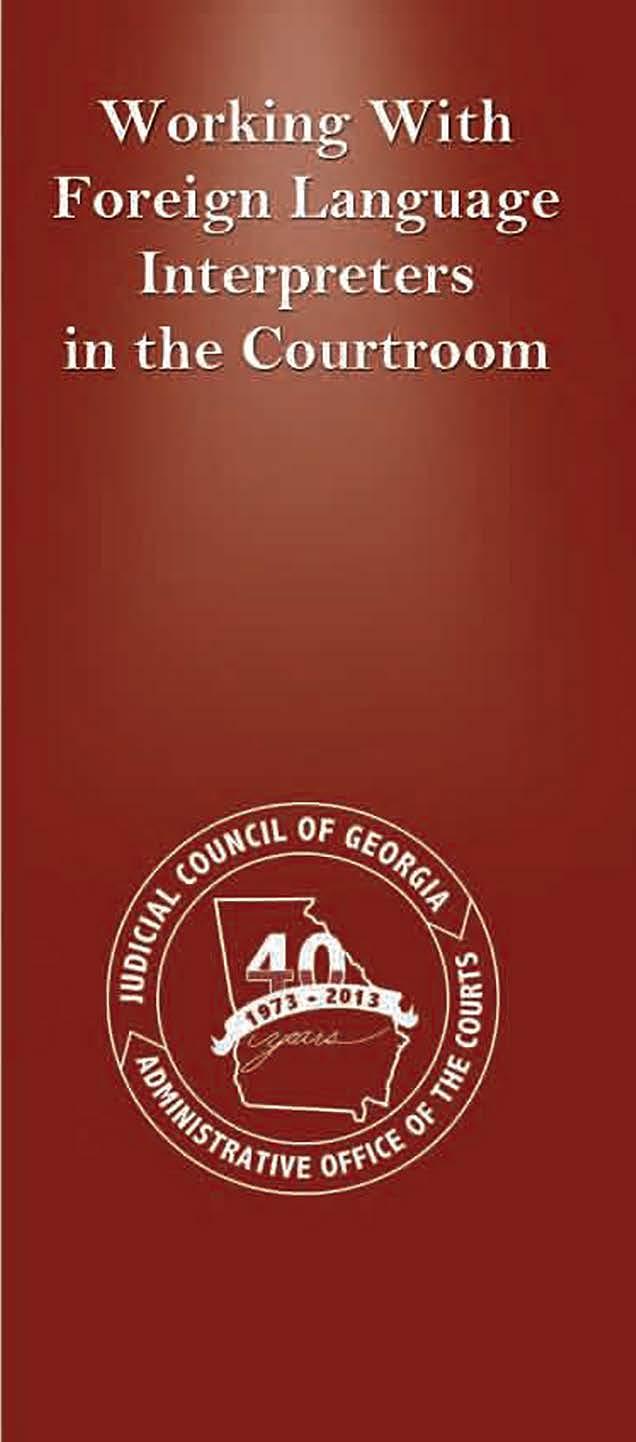
TIPS FORCOUNSEL
• When examining a non-English speaking Witness, direct all questlons to the witness and not•the interpreter. (Forexample, do not say to the interpreter, •Ask him if he understands:..:)
• Speak at a slower but steady pace and occasionally make eye contact with the interpreter to.gauge whether your pace Is appropriate.
• Use simple legal language and avoid using compound questions.
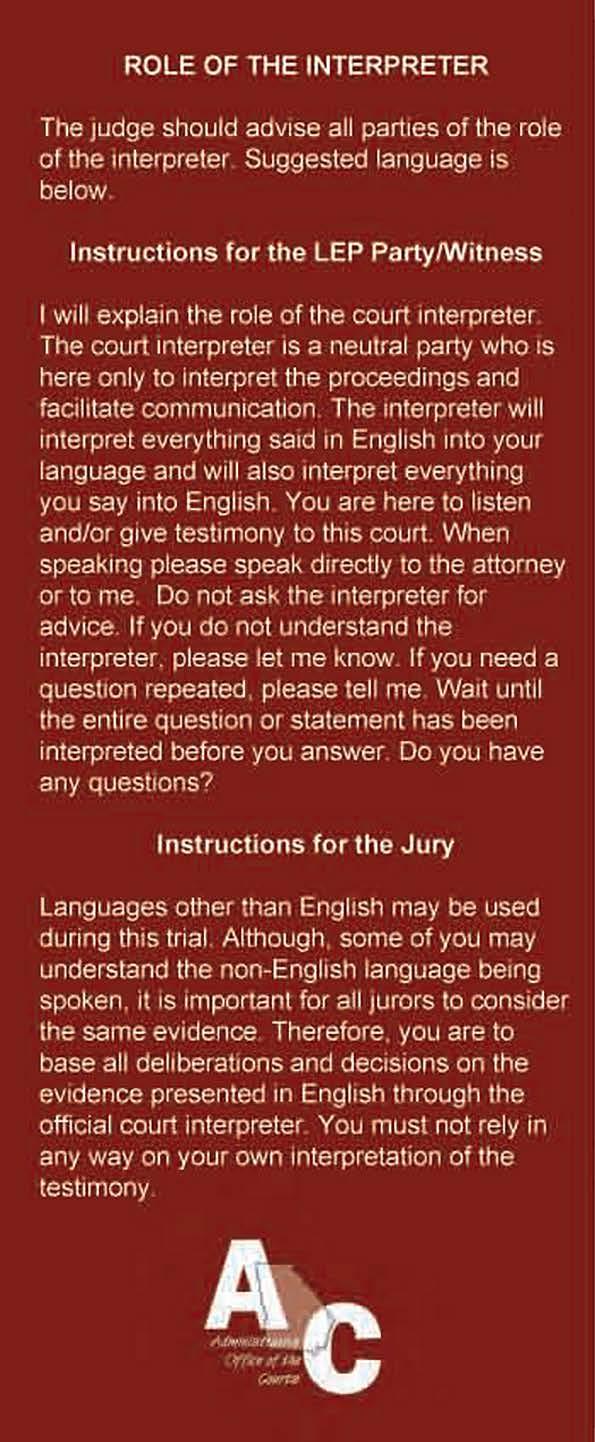
• Never ask.the interpreter to •explain the proceeding; to the LEP party,

• Never ask the Interpreter to participate In any activity otherthan as an Interpreterfor the lEP individual.
• When possible allow the interpreter to review case fileinformation in advance,
SupremeCourtCommitteeon Court Interpreters
Administrative Officeofthe Courts
244 WashingtonStreet, Suite300 Atlanta, GA30334 404-463-6478 www.g(..>orgiacourts.gov
128
Working with Foreign Language Interpreters in the Courtroom
CourtlnterPretetsserveafUndamentalroleIn liJl'Ovfdlng.equalaccesstofustfce·and meaningfulparticipationInallcourt proceedings'{orlimitedEnglist, proficient (LEP-)•ornon-E.nglist,speaRingpersons.
DOYOUNEEDAC0U-RTINTERPRETER?
PursuanttoAppend"lltAoftheGeorgia SupremeCourtRulefotInterpreters, an interpretershallbeapp.omtedwhenthe decisionmaker,whichwouldIncludethe judge.,magistrate,specialmaster, commissioner,hearfngofficer,art,1trator, neutral,ormediator,determines.afteran· �mrnatfonof-thepartyorw]t.ness,that{1) theparty�nn,otunderstandandspeak EnglishWell enoughfoparticlpate-f1,lllY, In toe proeeedlngsandtoassfsteounsel;or(2)the wTtnesscannotspeakEngllshsoastobe understood�HrecUybycounsi!I,theijecfslon maker,ar:id/oiUieJufY;or(3)thepai:fyor Wilnessrequests.anInterpreter.
TodetermineifaninterpreterIsnecessary, thedeeisTonmakershouldasktheLEP Individualafewquestions.Ingeneral,avoid question$easilyansweredwithyesorno replles.
SAMPLE QUESTIONS TO ASSESS THE ENGLISH PROFICIENCY OF A PARTY OR WITNESS·
•Pleasestateyourname.
• HowdidyoulearnEnglish?
• Pleasetell,meaboutyournativecountry.
• Describesomeofthett,fngsyouseein11,js QOUrtroom,
Anon-Englishspeakingpersonmaywaivethe righttotheuseofaninterpreter.Toiswaiver ShouldbeInwritingandapproved.by'the decisionmaker,
LOCATINGANINTERPRETER
TheCommitteeonltrterpre�rs(C-0mniittee) maintainsanonlineregJstr;ofstate-licensed lnterpretersatwww.georgiacouns.gov1cor.
IrthereIsnotanlnlerpreterontheregistryfor fuelanguageyou1'eed,co.ntcttheCommJttee at404,463.6478orgcr@georgiacourts.gov.
IN�PREl'ERQUALIACATIONS
InterpreterslicensedlhroughU,eCommittee havefully satisfiedrigorouse,camfnations, training,courtobservation,andabaekground check.
Courtsshouldmal<eadiligenteffortloappointa certifiedinterpreter.1racert.ifledrotewreterls unavailable,aconditionallyapprovedor teglsteredInterpretershmtldbegiven preference.Ifthecourt1sunsureofan Interpreter'sguaflfications,thecourtshould assess\heinterpreter'scredentlelsbyasf<inga few questions.
SAMPLE VOIR DIRE TO ASSESS AN INTERPRETER'SOUALIFICATIONS:
• Whattrainingercredentialsdoyauhaveasan lnterprete(?
• What1syour native language?
•StatesomecanonsfromtheCodeof ProfessionalResponsibilityforInterpreters,
• HowmanyUmeshaveyouinterpnitedIn court?
•What\YpesofcaseshaveYQUlnterpret!!d?
BeingbiHngualdoesnotqualify a personto Interpret.Childrenshouldneverbeusedto Interpret.It isalsonotappropriatefor relafives,ormend�oftheLEPpal'.fy,Judges, �omeys,orbilingual stafftoInterpretIn courtproeeedJr1gs.
In Ramos v. Terry, 279 Ga. 889 (2005), the Georg,ia Supreme Court held"to bl!I an .abuse af discretionto appornt someone to servsas an Interpreter, without ensurfng thal the persor, appointed is quaf/fied to sen/e as an fnterpreteri without apprising the appointee ofthe role slheis toplay, without verifying the appointee's 1Jflders�nding .Qf therole, and withot.Jfha11Tng the appofnfee agree in writing tocomply with the Interpreters' code oiptofessional resfX)ns/bi/lty.
INTERPRETER'SOATH
TheoathmaybegivenoncetheJud,9eIs satl};fiedWiththeJnterp,.eter'sq14alifications.
Doyou solemnly swear oraffirmthat you will faithfully interpretfrom (slate thelanguage) into Englishand from Englishinto(statethelanguage) theproceedingsbeforethiscourtin anaccuratemanner lothebestof your sktllancJ k11owlcdge?

129
WORKING WITH LIMITED ENGLISH PROFICIENT PERSONS AND FOREIGN-LANGUAGE INTERPRETERS IN THE COURTROOM
— A Bench Card for Judges —
The Law on Foreign-Language Interpreters for Participants in Court Proceedings
Under Federal law, including Title VI of the Civil Rights Act of 1964, 42 U.S.C. § 2000d, and Georgia statutory law, case law, and Supreme Court rules, Georgia courts are required to provide qualified foreign-language interpreters to participants in court proceedings who are limited English proficient (LEP). They must provide these services when necessary to ensure effective communication by and with LEP participants. LEP participants can include litigants, witnesses, and spectators. Court proceedings include all court services, programs, and activities. LEP participants:
•Cannot be required to arrange or pay for their own interpreters, nor can their attorneys be required to do so;
•Must be provided an interpreter for any criminal or civil proceeding;
•Can waive their right to an appointed interpreter if the waiver is in writing and is approved by the court, and can revoke that waiver at any time;
•Do not waive their right to an appointed interpreter simply because they do not request one;
•Do not lose the right to an appointed interpreter because they speak or understand some English.
Identifying the Language of LEP Participants
LEP participants in court proceedings can self-identify their preferred language by using a Language Identification Guide: https://georgiacourts.gov/wp-content/ uploads/2019/08/Language-Identification-Flash-Card.pdf
Determining the Need for a Foreign-Language Interpreter
An interpreter shall be appointed when the decision maker, which would include the judge, magistrate, special master, commissioner, hearing officer, arbitrator, neutral, or mediator, determines, after an examination of
•The party cannot understand and speak English well enough to participate fully in the proceedings and to assist counsel; or
•The witness cannot speak English so as to be understood directly by counsel, the decision maker, and/or the jury.
Sample Questions to Assess the English Proficiency of a Participant
•How did you learn English?
•Please tell me about your native country.
•Describe some of the things you see in this courtroom.
After examination, the decision maker should state his or her conclusion on the record, and the case file should be clearly marked and data entered electronically to ensure that an interpreter will be present when needed in any subsequent proceeding.
In some instances, the decision maker may appoint an interpreter based solely on a participant’s written or verbal request.
Courts should encourage participants to alert the court to their need for an interpreter and the language needed as soon as possible so the court has adequate time to locate a qualified interpreter. Participants should not be required to wait to make their first request for an interpreter in person in court.
Finding a Qualified Foreign-Language Interpreter
The Supreme Court Committee on Court Interpreters (Committee maintains an online database of statelicensed interpreters that can be searched by language and by county, at ocp.georgiacourts.gov
Interpreters licensed through the Committee have fully satisfied rigorous examinations, training, and court observation, and have undergone background checks.
If there is no interpreter on the registry for the language you need, contact the Committee at 404-463-3808 or gcr@georgiacourts.gov
Credentials of Foreign-Language Interpreters
Courts should make a diligent effort to appoint a “Certified” interpreter. If a Certified interpreter is unavailable, a “Conditionally Approved” or “Registered” interpreter should be given preference. If the court is unsure of an interpreter’s qualifications, the court should voir dire the interpreter:
Supreme Court of Georgia Committee on Court Interpreters
130
Sample Voir Dire to Assess an Interpreter’s Qualifications
•“What training/credentials do you have?”
•“What is your native language?”
•“State some canons from the Code of Professional Responsibility for Interpreters.”
•“How many times have you interpreted in court?”
•“What types of cases have you interpreted?”
If, after a diligent search by the court, a Certified or other licensed interpreter is unavailable, the court should weigh the need for immediacy in conducting a hearing without a licensed interpreter or with an unlicensed interpreter or telephonic interpreter, against the potential compromise of due process, or the potential of substantive injustice, if the quality of interpreting is inadequate. Failure to appoint a qualified interpreter or no interpreter at all can result in reversible error on appeal.
If the court determines that the use of a non-licensed interpreter is warranted, refer here. When a nonprofessional interpreter is used, the court should personally verify the interpreter’s basic understanding of his or her role, on the record.
Additional Considerations When Selecting Foreign-Language Interpreters
Courts should consider other factors to determine whether an interpreter is suited to work in court. For example:
•The interpreter’s prior professional and/or social contact or association with the LEP participants;
•Education, professional training, and formal legal training completed by the interpreter; and
•The types of court proceedings in which the interpreter has experience.
Courts should also consider that:
•The ability to speak a foreign language does not equal the ability to interpret nor qualify a person to interpret;
•Relatives or friends of LEP parties, witness, judges, or attorneys should not interpret court proceedings. Minor children should never be used to interpret;
•Court personnel or bilingual staff should not function as interpreters unless they are Certified and employed as staff interpreters;
•Court interpreting is strenuous, so it advisable to schedule regular breaks. Sometimes, appointing more than one interpreter may be necessary for proceedings expected to last more than two hours;
•The interpreter is a neutral party whose sole job is to facilitate communication by interpreting everything said during the proceedings;
•The interpreter cannot participate in any capacity other than as the interpreter;
•The interpreter may not provide advice or explanations about what was said or done in court;
•The interpreter is a conduit for information exchange, and not a direct participant in the proceeding.
Recording the Proceedings
Where a Certified interpreter is used, no audio or audiovisual record of the non-English testimony is required, but the court may authorize the making of a recording. Where a non-Certified (e.g., Conditionally Approved, Registered, or unlicensed) interpreter is used, the court shall make an audio or audiovisual recording of any non-English testimony. This recording shall become part of the record of the proceeding: https:// ocp.georgiacourts.gov/wp-content/uploads/ sites/7/2020/06/Supreme-Court-of-Georgia-COIRules-and-Regulations-1.pdf
Foreign-Language Interpreter’s Ethics
All Georgia-licensed court interpreters are subject to the Code of Professional Responsibility for Interpreters: https://najit.org/wp-content/uploads/2016/09/ NAJITCodeofEthicsFINAL.pdf
Foreign-Language Interpreter’s Oath
The court should administer an oath prior to the start of court proceedings. Below is an example: “Do you solemnly swear or affirm that you will faithfully interpret from (the foreign language) into English and from English into (the foreign language) the proceedings before this court in an accurate manner to the best of your skill and knowledge?”
Resources
Georgia Supreme Court Rule on Interpreters
https://ocp.georgiacourts.gov/wp-content/ uploads/sites/7/2020/06/Supreme-Court-ofGeorgia-COI-Rules-and-Regulations-1.pdf
National Association of Judiciary Interpreters & Trans-lators Code of Ethics and Professional Responsibilities https://najit.org/wp-content/ uploads/2016/09/NAJITCodeofEthicsFINAL.pdf
Federal Interagency Website on Limited English Proficiency www.lep.gov/
Produced with the assistance of the Judicial Council/Administrative Office of the Courts.
131
WORKING WITH DEAF OR HARD OF HEARING PERSONS AND SIGN LANGUAGE INTERPRETERS IN THE COURTROOM
— A Bench Card for Judges —
The Law on Sign Language Interpreters for Participants in
Court Proceedings
Under the Americans with Disabilities Act (ADA) and state law (O.C.G.A. § 24-6-650 to 658), Georgia courts must provide auxiliary aids or services – such as qualified sign language interpreters – to participants in court proceedings who are deaf or hard of hearing (DHH). They must provide these aids or services when necessary to ensure effective communication by and with DHH participants. DHH participants can include litigants, witnesses, and spectators. Court proceedings include all court services, programs, and activities. DHH participants:
•Cannot be required to arrange or pay for their own interpreters;
•Must be provided an interpreter for any criminal or civil proceeding;
•Can waive their right to an interpreter if the waiver is in writing and it is approved by the court;
•Do not waive their right to an interpreter simply because they do not request an interpreter.
Establishing the Communication Preference of the Participants
The court must ask DHH participants to identify the type of reasonable accommodation needed.1 If a request for an interpreter is not made, but the participants could benefit from the services of an interpreter, the judge should address the need on the record:
•“Please tell the court your name.”
•“You have the right to participate and understand these proceedings. Tell the court the best way to communicate with you, so you know what is being said.”
•“Do you need an interpreter?”
Finding a Qualified Sign Language Interpreter
The Registry for Interpreters for the Deaf (RID), the national certification organization for all sign language interpreters, has a searchable database of certified members on its website, www.rid.org
Credentials of Sign Language
Interpreters
An ability to sign does not equate to being able to interpret. To effectively communicate, the interpreter must possess the necessary skills to process spoken language into equivalent sign language and to process sign language into equivalent spoken language. Family members or friends of DHH participants should never be called upon to interpret court proceedings. Court personnel should not function as interpreters unless they are certified and employed as staff interpreters.
A court official or designee should assess an interpreter’s qualifications prior to scheduling the interpreter’s appearance in court. To be recognized as qualified in Georgia, an interpreter must hold a current certification from the Registry of Interpreters for the Deaf (RID). For legal proceedings, courts should first try to use certified sign language interpreters who hold this credential:
•SC:L (Specialist Certificate: Legal) Preferred and recommended credential based on demonstrated specialized knowlege of legal system, language, and settings.
If an SC:L interpreter cannot be located, interpreters with these RID certifications may also be used. However, it is recommended that they have additional specialized training in legal interpreting:
•NIC (National Interpreter Certification), Master
•NAD V (National Association of the Deaf: Certification –Master)
•CI and CT (Certificate of Interpretation and Certificate of Transliteration)
•CDI (Certified Deaf Interpreter)
•CSC (Comprehensive Skills Certificate)
If the court is unsure of an interpreter’s qualifications, the court should voir dire the interpreter:
Sample Voir Dire to Assess an Interpreter’s Qualifications
•“Are you certified by RID?”
•“What specialized training have you completed?”
•“How long have you been an interpreter?”
•“How many times have you interpreted in court?”
•“Describe the Code of Ethics as it applies to legal interpreters.”
•“How did you learn American Sign Language?”
Supreme Court of Georgia Committee on Court Interpreters
132
Additional Considerations When Selecting Sign Language Interpreters
Courts should take additional steps to determine whether a particular interpreter is suited to work in a court setting.
Some considerations could include:
•Prior professional and/or social contact or association with the DHH participants.
• Education, professional training, and formal legal training completed by the interpreter.
•The types of court proceedings in which the interpreter has experience.
(A full list of suggested voir dire questions, considerations, and acceptable answers may be requested from the Judicial Council/Administrative Office of the Courts.)
Sign Language Interpreter’s Ethics
The Registry of Interpreters for the Deaf and the National Association of the Deaf (NAD) together have enacted a Code of Professional Conduct for interpreters that com-prises seven ethical tenets:
1.Adhere to standards of confidential communication.
2.Possess the professional skills and knowledge required for the specific interpreting situation.
3.Conduct themselves in a manner appropriate to the specific interpreting situation.
4.Demonstrate respect for consumers.
5.Demonstrate respect for colleagues, interns, and students of the profession.
6.Maintain ethical business practices.
7.Engage in professional development.
The Code applies to RID’s certified and associate members and NAD’s certified members; is superseded by any local, state, or federal laws and regulations; and applies to both face-to-face and remote interpretations.
Sign Language Interpreter’s Oath
The court should administer an oath prior to the start of court proceedings. Below is an example:
“Do you solemnly swear or affirm that you will interpret accurately, completely and impartially, using your best skill and judgment in accordance with the standards prescribed by law, follow all official guidelines established by this court for legal interpreting, and discharge all of the solemn duties and obligations of legal interpretation?”
1 As set out in the final ADA Title II rule, ‘‘[t]he type of auxiliary aid or service necessary to ensure effective communication will vary in accordance with the method of communi-cation used by the individual, the nature, length, and complexity of the communication involved, and the context in which the communication is taking place. In determining what types of auxiliary aids and services are necessary, a public entity shall give primary consideration to the requests of individuals with disabilities.’’ 28 C.F.R. 35.160(b)(2) (analysis).
Best Practices for Interacting with DHH
Persons2
•DHH persons experience differing levels of hearing loss and may prefer varying methods of communication. Ask DHH persons which method they prefer.
•When speaking with DHH persons, whether through a sign language interpreter or not, speak directly to them, look directly at them, and maintain eye contact. Natural facial expressions and gestures will be helpful in facilitating your conversation.
•The role of a sign language interpreter is only to facilitate communication between DHH and hearing people. Therefore, the interpreter should never be asked to participate in any activity other than interpreter for the DHH individual.
Resources
Georgia Supreme Court Rule on Interpreters https:// ocp.georgiacourts.gov/wp-content/uploads/ sites/7/2020/06/Supreme-Court-of-Georgia-COIRulesand-Regulations-1.pdf
State of Georgia ADA Coordinator’s Office http://ada.ga.gov
Georgia Registry of Interpreters for the Deaf www.garid.org
Georgia Council for the Hearing Impaired http://www.gcdhh.org/
National Association of the Deaf www.nad.org
Registry of Interpreters for the Deaf/National Assoc. for the Deaf Code of Professional Conduct https://myaccount.rid.org/Public/Search/Member.aspx
National Association of Judiciary Interpreters & Translators Code of Ethics and Professional Responsibilities
https://najit.org/wp-content/uploads/2016/09/ NAJITCodeofEthicsFINAL.pdf
Working with Sign Language Interpreters in Texas: A Bench Card for Judges http://www.najit.org/asl/benchcardtexas.pdf
U.S. Dept. of Justice/Americans with Disabilities Act www.ada.gov
20or%20the%20disability.&text=Always%20speak%20directly%20to%20the,raise% 20your%20voice%20unless%20requested.
Produced with the assistance of the Judicial Council/Administrative Office of the Courts.
133
2Best Practices when Interacting with Persons with Disabilities: A Customer Service Guide for State Government Agencies – Georgia State Financing and Investment Committee, State ADA Coordinator’s Office. http://web.gsfic.ga.gov/ADA/Best%20Practices%20when%20Interacting%20with% 20People%20with%20Disabilities.htm#:~:text=Some%20tips%20from%20the%20guide %20are%3A&text=Do%20not%20make%20assumptions%20about%20the%20person%
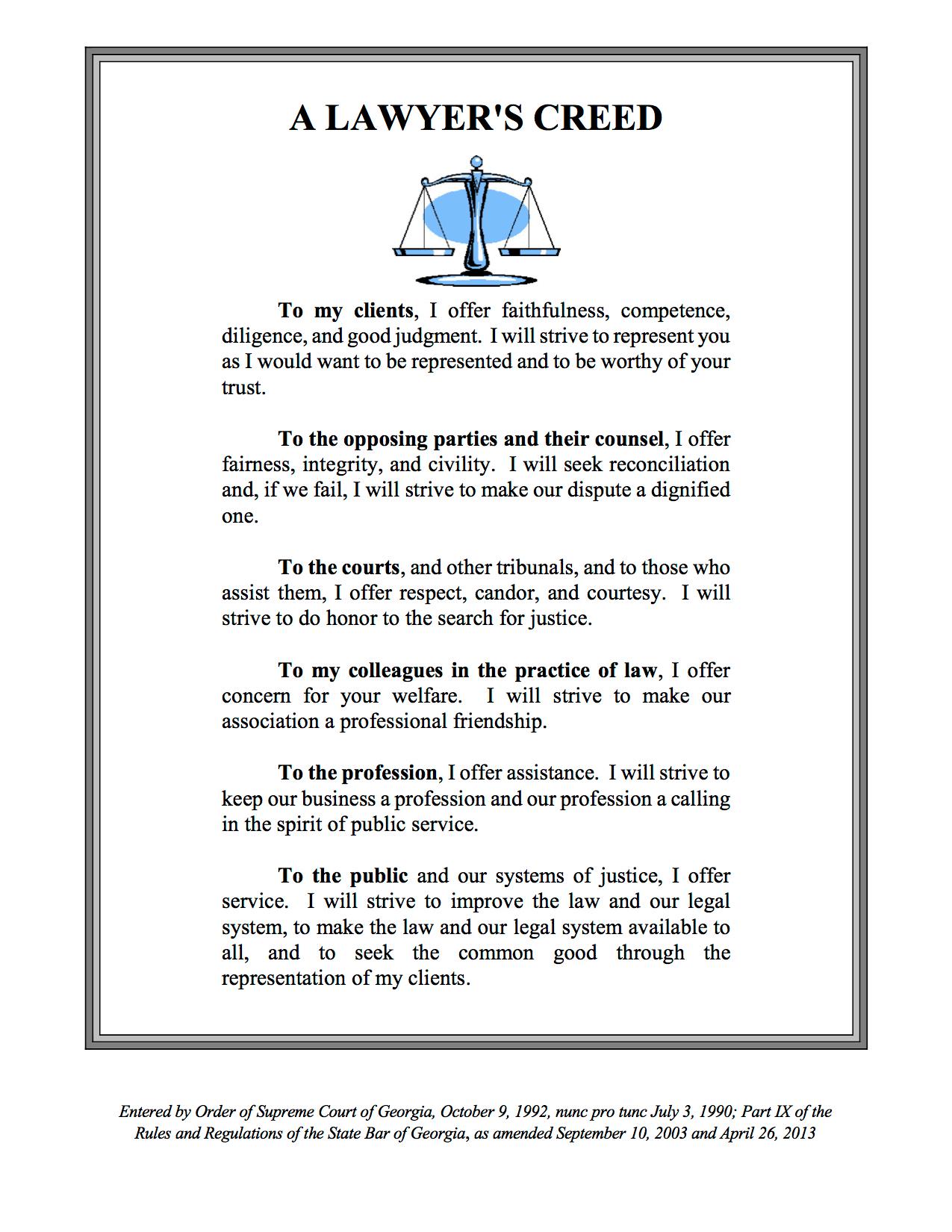

134
ASPIRATIONAL STATEMENT ON PROFESSIONALISM
The Court believes there are unfortunate trends of commercialization and loss of professional community in the current practice of law. These trends are manifested in an undue emphasis on the financial rewards of practice, a lack of courtesy and civility among members of our profession, a lack of respect for the judiciary and for our systems of justice, and a lack of regard for others and for the common good. As a community of professionals, we should strive to make the internal rewards of service, craft, and character, and not the external reward of financial gain, the primary rewards of the practice of law. In our practices we should remember that the primary justification for who we are and what we do is the common good we can achieve through the faithful representation of people who desire to resolve their disputes in a peaceful manner and to prevent future disputes. We should remember, and we should help our clients remember, that the way in which our clients resolve their disputes defines part of the character of our society and we should act accordingly.
As professionals, we need aspirational ideals to help bind us together in a professional community. Accordingly, the Court issues the following Aspirational Statement setting forth general and specific aspirational ideals of our profession. This statement is a beginning list of the ideals of our profession. It is primarily illustrative. Our purpose is not to regulate, and certainly not to provide a basis for discipline, but rather to assist the Bar's efforts to maintain a professionalism that can stand against the negative trends of commercialization and loss of community. It is the Court's hope that Georgia's lawyers, judges, and legal educators will use the following aspirational ideals to reexamine the justifications of the practice of law in our society and to consider the implications of those justifications for their conduct. The Court feels that enhancement of professionalism can be best brought about by the cooperative efforts of the organized bar, the courts, and the law schools with each group working independently, but also jointly in that effort.
Entered by Order of Supreme Court of Georgia, October 9, 1992, nunc pro tunc July 3, 1990; Part IX of the Rules and Regulations of the State Bar of Georgia, as amended September 10, 2003 and April 26, 2013
135
G ENERAL A SPIRATIONAL I DEALS
As a lawyer, I will aspire:
(a)To put fidelity to clients and, through clients, to the common good, before selfish interests.
(b)To model for others, and particularly for my clients, the respect due to those we call upon to resolve our disputes and the regard due to all participants in our dispute resolution processes.
(c)To avoid all forms of wrongful discrimination in all of my activities including discrimination on the basis of race, religion, sex, age, handicap, veteran status, or national origin. The social goals of equality and fairness will be personal goals for me.
(d)To preserve and improve the law, the legal system, and other dispute resolution processes as instruments for the common good.
(e)To make the law, the legal system, and other dispute resolution processes available to all.
(f)To practice with a personal commitment to the rules governing our profession and to encourage others to do the same.
(g)To preserve the dignity and the integrity of our profession by my conduct. The dignity and the integrity of our profession is an inheritance that must be maintained by each successive generation of lawyers.
(h)To achieve the excellence of our craft, especially those that permit me to be the moral voice of clients to the public in advocacy while being the moral voice of the public to clients in counseling. Good lawyering should be a moral achievement for both the lawyer and the client.
(i)To practice law not as a business, but as a calling in the spirit of public service.
Entered by Order of Supreme Court of Georgia, October 9, 1992, nunc pro tunc July 3, 1990; Part IX of the Rules and Regulations of the State Bar of Georgia, as amended September 10, 2003 and April 26, 2013
136
S PECIFIC A SPIRATIONAL I DEALS
As to clients, I will aspire:
(a)To expeditious and economical achievement of all client objectives.
(b)To fully informed client decision-making. As a professional, I should:
(1)Counsel clients about all forms of dispute resolution; (2)Counsel clients about the value of cooperation as a means towards the productive resolution of disputes;
(3)Maintain the sympathetic detachment that permits objective and independent advice to clients;
(4)Communicate promptly and clearly with clients; and, (5)Reach clear agreements with clients concerning the nature of the representation.
(c)To fair and equitable fee agreements. As a professional, I should:
(1)Discuss alternative methods of charging fees with all clients; (2)Offer fee arrangements that reflect the true value of the services rendered; (3)Reach agreements with clients as early in the relationship as possible; (4)Determine the amount of fees by consideration of many factors and not just time spent by the attorney;
(5)Provide written agreements as to all fee arrangements; and (6)Resolve all fee disputes through the arbitration methods provided by the State Bar of Georgia.
(d)To comply with the obligations of confidentiality and the avoidance of conflicting loyalties in a manner designed to achieve the fidelity to clients that is the purpose of these obligations.
As to opposing parties and their counsel, I will aspire:
(a)To cooperate with opposing counsel in a manner consistent with the competent representation of all parties. As a professional, I should:
(1)Notify opposing counsel in a timely fashion of any cancelled appearance; (2)Grant reasonable requests for extensions or scheduling changes; and, (3)Consult with opposing counsel in the scheduling of appearances, meetings, and depositions.
(b)To treat opposing counsel in a manner consistent with his or her professional obligations and consistent with the dignity of the search for justice. As a professional, I should:
Entered by Order of Supreme Court of Georgia, October 9, 1992, nunc pro tunc July 3, 1990; Part IX of the Rules and Regulations of the State Bar of Georgia, as amended September 10, 2003 and April 26, 2013
137
(1)Not serve motions or pleadings in such a manner or at such a time as to preclude opportunity for a competent response;
(2)Be courteous and civil in all communications;
(3)Respond promptly to all requests by opposing counsel;
(4)Avoid rudeness and other acts of disrespect in all meetings including depositions and negotiations;
(5)Prepare documents that accurately reflect the agreement of all parties; and (6)Clearly identify all changes made in documents submitted by opposing counsel for review.
As to the courts, other tribunals, and to those who assist them, I will aspire:
(a)To represent my clients in a manner consistent with the proper functioning of a fair, efficient, and humane system of justice. As a professional, I should:
(1)Avoid non-essential litigation and non-essential pleading in litigation; (2)Explore the possibilities of settlement of all litigated matters; (3)Seek non-coerced agreement between the parties on procedural and discovery matters;
(4)Avoid all delays not dictated by a competent presentation of a client's claims; (5)Prevent misuses of court time by verifying the availability of key participants for scheduled appearances before the court and by being punctual; and (6)Advise clients about the obligations of civility, courtesy, fairness, cooperation, and other proper behavior expected of those who use our systems of justice.
(b)To model for others the respect due to our courts. As a professional I should:
(1)Act with complete honesty;
(2)Know court rules and procedures;
(3)Give appropriate deference to court rulings; (4)Avoid undue familiarity with members of the judiciary;
(5)Avoid unfounded, unsubstantiated, or unjustified public criticism of members of the judiciary;
(6)Show respect by attire and demeanor;
(7)Assist the judiciary in determining the applicable law; and, (8)Seek to understand the judiciary's obligations of informed and impartial decision-making.
As to my colleagues in the practice of law , I will aspire:
(a)To recognize and to develop our interdependence;
(b)To respect the needs of others, especially the need to develop as a whole person; and, (c)To assist my colleagues become better people in the practice of law and to accept
Entered by Order of Supreme Court of Georgia, October 9, 1992, nunc pro tunc July 3, 1990; Part IX of the Rules and Regulations of the State Bar of Georgia, as amended September 10, 2003 and April 26, 2013
138
their assistance offered to me.
As to our profession, I will aspire:
(a)To improve the practice of law. As a professional, I should:
(1)Assist in continuing legal education efforts; (2)Assist in organized bar activities; and, (3)Assist law schools in the education of our future lawyers.
(b)To protect the public from incompetent or other wrongful lawyering. As a professional, I should:
(1)Assist in bar admissions activities; (2)Report violations of ethical regulations by fellow lawyers; and, (3)Assist in the enforcement of the legal and ethical standards imposed upon all lawyers.
As to the public and our systems of justice, I will aspire:
(a)To counsel clients about the moral and social consequences of their conduct.
(b)To consider the effect of my conduct on the image of our systems of justice including the social effect of advertising methods. As a professional, I should ensure that any advertisement of my services:
(1)is consistent with the dignity of the justice system and a learned profession; (2)provides a beneficial service to the public by providing accurate information about the availability of legal services;
(3)educates the public about the law and legal system; (4)provides completely honest and straightforward information about my qualifications, fees, and costs; and (5) does not imply that clients' legal needs can be met only through aggressive tactics.
(c)To provide the pro bono representation that is necessary to make our system of justice available to all.
(d)To support organizations that provide pro bono representation to indigent clients.
(e)To improve our laws and legal system by, for example:
(1)Serving as a public official;
(2)Assisting in the education of the public concerning our laws and legal system; (3)Commenting publicly upon our laws; and, (4)Using other appropriate methods of effecting positive change in our laws and legal system.
Entered by Order of Supreme Court of Georgia, October 9, 1992, nunc pro tunc July 3, 1990; Part IX of the Rules and Regulations of the State Bar of Georgia, as amended September 10, 2003 and April 26, 2013
139
FAMILY LAW
RESOLVING
CONFLICT IN COMPLEX FAMILY LAW ISSUES
Centered around the trial experiences of distinguished attorneys, this panel discussion will "go deeper" to discover the nuances of complex family law.
Moderated by: The Honorable Rebecca Crumrine Rieder
Panelists include:
Andy Flink Hannibal Heredia, Esq. Christina Scott, J.D. Dawn Smith, Esq.
COMPLEX
29THANNUALADRINSTITUTE NOVEMBER 18, 2022 GEORGIA TECH HOTEL AND CONFERENCE CENTER 2:10 PM TO 3:10 PM 1 CLE HOUR, INCLUDING 1 TRIAL HOUR In-person attendees can join Resolving Conflict in Complex Family Law Issues in the Ballroom
session will be livestreamed to virtual attendees. 140
This
The Hon. Rebecca Crumrine Rieder
https://resolute law.com/
Rebecca Crumrine Rieder (“Becca”) served as a Superior Court Judge in Fulton County Georgia through December 2020 at which time she began a full time alternative dispute resolution practice. As a former civil litigator, family lawyer, Superior Court Judge and middle and high school teacher, she has decades of experience mediating and consulting to resolution.
Recognized by her peers and the legal community as one of the top rated attorneys in Georgia, Becca is a past chair of the Family Law Section of the State Bar of Georgia, a Fellow in the American Academy of Matrimonial Lawyers; and, prior to taking the bench, Law & Politics and Atlanta Magazine repeatedly recognized Becca as one of Georgia’s "Top 100 Lawyers" and “Top 50 Women Lawyers.”
As Becca explains her passion for alternative dispute resolution: “Alternative Dispute Resolution solves problems. People end up in the court system because of a crisis. Resolution to the crisis and direction to move forward is needed. But the law is not designed to solve problems. Mediation solves problems, creates solutions not able to be reached in court, and allows parties to build within their own space. Arbitration provides parties room to fully develop and explain their positions. It is an honor and privilege to assist parties in moving forward – from being stuck in a place that is not working – by being attentive and resolute and providing tools to resolve issues and provide relief.”
Prior to practicing law, Becca taught middle and high school at Davidson Fine Arts School in Augusta, Georgia.

141
Becca received her undergraduate degree from Sewanee: The University of the South in 1991, her MEd from the University of Georgia in 1994, and her JD from the University of Georgia School of Law in 2001.
Becca frequently authors materials and speaks on professional and legal matters throughout the state and the country, including prior speaking engagements with the Superior Court Judges Council and Continuing Legal Education Seminars sponsored by the State Bar of Georgia.
Becca believes in giving back to her community both professionally and personally. Becca has extensive community involvement including volunteer leadership roles with several non profit boards throughout metro Atlanta, including Oakland Cemetery, DeKalb Volunteer Lawyers Foundation, Neighbor in Need and Breakthru House Woman’s Advisory Board. Currently, Becca serves the Atlanta Bar Association; as Alumni Council Chair and as a member of the Board of Trustees of her alma mater, Sewanee; and, as a member of the Bascom Board in Highlands, North Carolina.
Becca resides in Atlanta, Georgia with her husband, Doug Rieder.
142
Andy Flink
https://www.andyflink.com/
Prior to launching his mediation firm in 2009
Andy Flink was a retail executive for 26+ years and brings a wealth of financial expertise to cases he is asked to conduct. Andy has participated in over 2000 family law cases, always offering creative solutions, ideas, opinions, and potential opportunities for both sides to consider, allowing disputes to reach final settlement.

He has authored many articles on alternative dispute resolution which have been featured in the State Bar of Georgia Family Law Review, The Cobb Family Bar Association, The Family Lawyer and many others. Andy has given presentations focused on family law at the Family Law Institute, Lawyers for Equal Justice, the Family Law Section of the Atlanta Bar Association, the Atlanta Chapter of the American Academy of Matrimonial Lawyers, the Cobb County Family Law Section and today at the ADR Institute.
Earlier this year Flink Mediation/Arbitration was rebranded to Flink ADR. The mission of Flink ADR is to offer a myriad of alternative dispute resolution services above and beyond mediation and arbitration that can assist parties in resolving disputes before a case is filed, during an active case, or even after cases are settled where parties prefer an alternative to the court process.
In his spare time Andy is a big fan of travel, live music, photography, golf and spending quiet time with his wife Sheri and his 5 sons.
143
Hannibal F. Heredia
https://www.hhfamilylaw.com/
Hannibal F. Heredia has practiced family law almost exclusively since 1994. He received his JD from Southwestern University, cum laude, in 1993, was the Editor in Chief of the Southwestern University Law Review, and received his undergraduate degree from Auburn University. In addition to practicing in all areas of the family law, Hannibal also serves as a mediator and Guardian ad Litem in Courts throughout the metro Atlanta area.

Since 2016, he has been named one of the Top 100 lawyers in Georgia by Atlanta magazine. Atlanta magazine lists Hannibal as a Super Lawyer, Georgia Trend magazine recognizes him as “Legal Elite" in the area of Family Law
Hannibal also volunteers his time for the Atlanta Volunteer Lawyers Foundation serving both as legal representative for victims of domestic violence, as well as a Guardian Ad Litem. He is also on the board of the Atlanta Bar Foundation, which is the charitable arm of the Atlanta Bar Association.
144
Biography of Christina L. Scott, J.D.
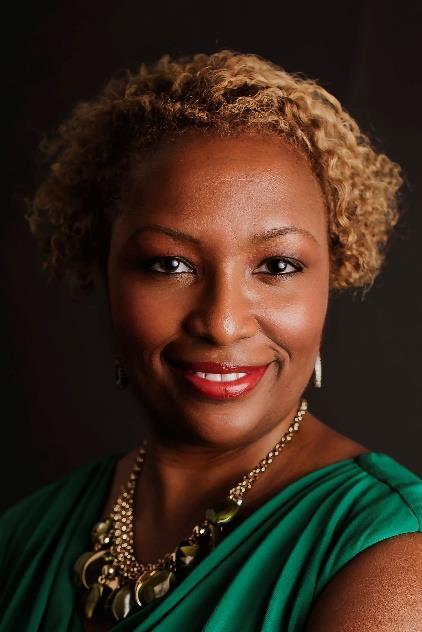
Christina L. Scott, J.D. is the Founder and Executive Director of Covenant Mediation Services, a conflict resolution organization that provides clients with mediation, negotiation, arbitration, and conflict consulting services Over the last 15 years, Christina has mediated over 2100 cases in the areas of negligent injury, contracts, and family law. She has helped to resolve cases for all types of people from all walks of life, including business owners, retail personnel, police officers, ministers, corporate executives, politicians, surgeons, professional athletes, music producers, high profile actors, and many others.
Over the years, Christina has consulted on several conflict resolution topics to private companies and non profit organizations. She has written numerous articles on mediation and was internationally published in 2014 by the Alberta Arbitration and Mediation Society, Alberta, Canada. Christina was appointed as a board member of the Georgia Child Support Commission by Governor Brian Kemp in August 2021, where she currently serves on the Statutory Review Committee. She is a former Business Law professor at Georgia Perimeter College where she taught as an adjunct for 5 years. Christina is also a member of the Association for Conflict Resolution (ACR) and a licensed real estate professional providing referral only services to clients.
Christina is a proud “Double Gator” receiving her Bachelor of Science Degree in Advertising from the University of Florida (UF) and her Juris Doctor Degree from UF’s Levine College of Law, one of the Top 25 law schools in the nation. During her tenure at UF law, she was a member of the prestigious UF College of Law Trial Team and a Virgil D. Hawkins Fellow.
Christina is an avid traveler, having visited more than 15 nations on 5 continents. When she is not mediating, Christina enjoys family movie night, women’s group ministry, food & cultural festivals, and reading a good book. She resides in East Cobb with her husband of more than 25 years marriage and their two teenage sons.
www.CovenantMediation.net * (678) 524 6148 * Christina@covenantmediation.net

145
Dawn Smith
https://www.smithfileslaw.com/
Dawn Smith is a partner at Smith & Files, LLC where she practices family and education law. She has represented children and families for over 33 years. Dawn is one of 38 fellows of the Georgia Chapter of the American Academy of Matrimonial Lawyers, a highly respected organization comprised of the top family law practitioners in the State. Every year since 2018 she has been named to the Super Lawyers® list of Top 50 Women in Georgia and Top 100 Super Lawyers® in Georgia. In addition to numerous other awards and recognitions, Dawn received the 2021 AAML Public Service Award and the 2016 Atlanta Legal Aid Volunteer of the Year Award.

In addition to her time in private practice, Dawn also served as Deputy Director of Atlanta Volunteer Lawyers Foundation where she was responsible for administration of the city’s largest pro bono family law programs. She lectures frequently on issues involved in high conflict cases such as mental health concerns, substance abuse issues, and children with special needs. Dawn is also a certified arbitrator and mediates family law cases.
In addition to her expertise in family law, Dawn is recognized as one of the leading advocates for the civil and educational rights of children with disabilities. She is the past President of the Board of Directors of the Council of Parent Attorneys and Advocates, the national membership organization for special education attorneys and advocates. She has pursued actions on behalf of children in state and federal trial courts as well as in the 11th Circuit Court of Appeals and the United States Supreme Court. Dawn is a frequent lecturer both nationally and locally on the rights of children.
146
Dawn began her career as Law Clerk to United States District Court Judge Marvin H. Shoob and subsequently was appointed Special Administrative Master for the Court. Dawn was also a partner in the firm Zimring & Smith LLC and was later appointed Administrative Law Judge for the Georgia Office of State Administrative Hearings. She is a 1985 graduate of North Carolina State University and a 1989 cum laud graduate of Georgia State University College of Law where she served as Style Editor on Georgia State Law Review.
Dawn is a member of the Atlanta Bar Association where she currently serves as President of the Board of the Family Law Section. She is also a member of the DeKalb County Bar Association and the Family Law Section of the Georgia Bar. Dawn serves on the Judicial Selection and Tenure Committee of the Atlanta Bar and is the Co Chair of the Racial, Ethnicity and Religious Considerations in Family Law Committee of the American Academy of Matrimonial Lawyers. She is a graduate of Leadership Atlanta, Founder of Cool Girls, Inc., served on the Board of the Greater Georgia Chapter of the Autism Society of America and was on the Advisory Board of Emmaus House. Dawn is married to Robin Griffith, has two sons and resides in Decatur, Georgia.
147
ADR in Family Law When Complexity Compounds
• Hon. Rebecca Crumrine Rieder, Resolute Law
• Andy Flink, Flink ADR
• Hannibal F. Heredia, J.D., HedgepethHeredia
• Christina L. Scott, J.D., Covenant Mediation Services
• Dawn Smith, J.D., Smith & Files
Divorce disrupts the family. Your family. Divorce upheaves the most precious human resource: your safe, secure haven.
Upheaves, but does not destroy. Family will always be family.
Post divorce, family is different. But still family. Regardless of how the family gets there.
How the parties manage the multiple stressors and navigate a divorce may tenor or exacerbate the stressors for each of them; and, if children are involved, for the children.
11/14/22
is Taxing Emotionally Physically. Economically.
on the Holmes Rahe Stress Scale, Divorce is the most stressful event a human may experience, absent death of a spouse.
1 Divorce
Based
2 148
The Economics of The Why
Emotions
Mediates Contention Finances
Streamline. Uninterrupted. Attention. Efficiency Time is the most precious resource Flexibility
Rapid and optimal adjustment Simplification
Legal and Evidentiary Procedure Privacy
Family is our most sacred. Confide. Trust.
Informed Neutral Confide. Trust.
Mediation:
• The Law is Mathematical.
• The Law is not designed to solve problems.
• Courts do not Reward Good Behavior
• Courts enforce the law.
• ADR –Empowerment for you to create opportunity, create fulfillment. Peace. Clarity.
• Provides RELIEF
11/14/22
3
Focus on the Interests –Not the Dispute
4 149
NEUTRAL
The term neutral as used in these Georgia Supreme Court Alternative Dispute Rules “refers to an impartial person who facilitates discussions and dispute resolution between disputants.” Meriam Webster defines impartial as “not partial or biased; treating or affecting all equally.” Similarly, Blacks Law Dictionary defines impartial as “the term used for something unbiased, fair and unprejudiced.”
11/14/22
5 Identify Complexity -What Information to Receive Ahead of Time Child Custody & Parenting Time GAL/CE/PE Reports Parent Coordinator Co-Parenting Counseling Financial DRFA CSW Business Valuation Marital Balance Sheet Coverture Fraction Analysis 6 150
Impartial is not synonymous with uninformed
|
Be the Problem Solver
11/14/22 Discovery Conference— Pre-Mediation What is needed to have a productive mediation? When to schedule and time to cure Hot button issues for each side? What each side needs prior to mediation? 7 Ground Rules Who Attends Mediation 3rd Parties/Family Members Professional Neutrals Party Experts GAL Potential Compromises Confidentiality Recording –Audio/Visual 8 151
11/14/22
Value of Property when No Financial Expert is Present or Retained? 9 Financial Competing Marital Balance Sheets 10 152
Financial
Financial
RSUs
Unvested/Vested Stock Options
Business Valuation
Real Property Value
Private Stock/Business Interest Stock/Investment Accounts
Retirement –defined benefit (pension) v. defined contribution (401(k)/IRA)
Pay mode and divisibility
Social Security –pay mode
Financial
IRA Transfer –SAMPLE memorandum language
Wife will receivethesumof$581,925.00from Husband’sE*Trade IRA #1234,plus all gainsandlosses on said amountfromthedateof7/5/2021untilthedate oftransfer to Wife.Husbandshallkeeptheremainderof hisE*Trade IRA #1234. Each partyshallotherwisekeep theirrespective IRA Accountsheld in theirsolenames. Thetransferof$581,925.00fromHusband’sE*Trade IRA #1234,(plus all gainsandlosseson said amount fromthedateof7/5/2021untilthedateoftransfer to Wife), shallbeaccomplished in anon-taxabletransaction to eitherparty, (IRA trustee to thirty(30)daysfollowingtheentryofthetrusteetransfer)within FJD. Said amountshallbetransferredinto Wife’s E*Trade IRA #5678,unlesssheprovidesHusband with adifferent IRA Accountforthetransferof said funds.
11/14/22
11
12 153
Financial
401(k)Transfer –SAMPLE memorandum language
As an equitabledivisionof marital property, Wife shallhavethat portionofHusband’sinterest in the_______________(401(k) Plan equal to fifty percent(50%)ofHusband’sinterest in said 401(k) Plan as of____________,andshallhaveherpro rata shareof all investment experience,includingearningsandlossesfrom said dateuntilthedate ofactualdistribution.
In theeventofthe“Participant”Husband’sdeathprior to thetransfer oftheassignedbenefits to the“AlternatePayee” Wife, sheshallbe entitled to receivedeathbenefits as if she were the“Participant” Husband’ssurvivingspouseforpurposesofSections401(a)(11)and 417oftheInternalRevenueCode.Suchdeathbenefitsshallnot exceedtheamountthatwouldhavebeenpayable to the“Alternate Payee” Wife if the“Participant”Husbandhadnotdied.
Wife shallberesponsibleforthepreparationoftheQualifiedDomestic RelationsOrder,withinthirty(30)daysofthesigningofthis Agreement. Said QualifiedDomesticRelationsOrdershallbesubject to approvalofHusband’sattorney,theCourtofproperjurisdiction in this case,as well as theAdministratoroftheaforementionedplan.
Financial
Investment Account Transfer SAMPLE memorandum language
As equitable divisionofproperty, within 30daysof the execution of this Agreement bybothparties, the parties shall equally divide (50/50) thetotal sums of Husband’s Stock Account ending xxxx ($_________) and Wife’s Stock Account ($_____) (hereinafter the “Investment Accounts”), valued as of____________, 202__, takinginto account the basis and tax consequences of the assets therein such that each party receives assets with asclose to anequal basis as possible. Immediately thereafter, Wife shall pay to Husband from herone half (1/2) share of said accounts
11/14/22
13
14 154
Financial
RSU –SAMPLE memorandum language
Thepartiesacknowledgeandagreethat as abenefitofemployment,Husband receives certain Restricted StockAwards(hereinafter “RSUs”) whichvestovera periodof time As equitabledivisionofproperty,thepartiesshallequallydivide (50/50)the marital portionofHusband’svestedandunvested RSUs RSUs Grantedon____________,20___(totalof___shares) are 100% are marital andshallbeequallydivided(50/50) as outlinedabove.Forthe remaining____unvestedshareswhich were grantedon____________,20___, butdonotvest____________,20___, two-thirds(2/3)of said shares are marital andshallbeequallydivided(50/50) as outlinedabove.
11/14/22
15 Financial Devil in the Detail! How to effectuate division and protect until same 16 155
Financial
Financial
Business Valuation –Division of Same
Husbandwouldhave all right, title andinterest to his medicalpractice,andwouldindemnifyandhold Wife harmlesstherefrom.Husband will havehard assets belonging to hismedicalpracticeappraisedand will pay Wife 50%ofthisamount.
Real Property Value|Division
Husbandcurrentlyresides at theprevious marital residencelocated at ________Driveand Wife resides at theresidencepurchasedsubsequent to theseparationof thepartieslocated at _____Road.Bothpartieshave appraisalsforbothresidences.Thepartieswould averagetheappraisalsof each residence, to determinethe fair marketvalueoftheresidences.Thepartieswould thensubtractfromthe fair marketvalueof each property thedebtowedon each partydue to themortgage,.The partieswouldequallydividetheequity in thehomes.
11/14/22
17
18 156
Financial
FULL DISCLOSURE –SAMPLE memorandum language
With theexceptionof Wife’s impendinginheritancefrom her late Mother,bothpartiesrepresentthatthe assets disclosed as set forthonExhibit “A”are theonly assets in whicheitherpartyhasanypresentinterest.Both representthattheyhavemadefulldisclosureand acknowledgetheother is relyingonthatdisclosure pursuant to Exhibit “A”. If itis determinedthateither partyhadanypresentinterest in anyotherindividual asset, (with theexceptionof Wife’s impending inheritancefromher late Mother), at the time ofsigning thisMemorandum,havingavalueof$5,000.00or greater,that is notdisclosedonExhibit “A”, thenthe otherpartyshallautomaticallybeentitled to 50%ofsuch undisclosed asset orthevaluethereof.
–SAMPLE memorandum language
11/14/22
19 Financial TAX RETURNS
Husband will fullyhold Wife harmless andindemnifyherfrom all liabilities, assessments,penalties,orotheramounts arisingoutoftheirpriorjointIncome Tax Returns filed duringthemarriage, including2020,bothFederaland State. 20 157
Financial
LIABILITIES –SAMPLE memorandum language
Except as otherwisespecificallyaddressedorprovidedfor herein to thecontrary, each party will beresponsible to payfor theirowncredit card debts; as well as anyand all otherdebts andliabilities in theirownindividualnames,andthey will hold theotherpartyharmlessfrom same.Theparties are not aware ofanyremainingjointdebts,liabilities,orjointcreditcards. However, in theeventthere are any,whichthepartieshave forgotten are still in jointnames,thoseshallbeclosedout/or theprimarypartyusingthataccountshallremovetheother partyfrom same, andtheotherpartyshallcooperateandsign anydocuments.Neitherpartyshalleverincuranydebts to the other,norforwhichtheother may bejointlyliable.
11/14/22
21
Financial DON’T FORGET! SKYMILES Account HOTEL Points Credit Card Points
22 158
11/14/22 Financial Property division with out of country holdings 23 Financial/ CSW How to Calculate Income To Impute or Not Mandatory Deviations Discretionary Deviations 24 159
11/14/22 Financial/ Alimony Ability to Pay Need Basis/ Ability to Work Reliance on Equitable Division of Property? 25 Custody How to Use GAL to your Advantage at Mediation 26 160
11/14/22 Custody How to Avoid Self Executing Change in Conditions Provisions 27 Custody Reunification Therapy 28 161
11/14/22 Custody Use of Parent Coordinators & Co-Parenting Counseling 29 Custody Step Up Parenting Plans 30 162
11/14/22 Custody Relocation/Multi State Custodial Plans 31 Custody Child Tax Credit Beware Dictated by Federal Law Non-Modifiable -regardless of a change of custody Language is key 32 163
Late Case Evaluation
When Appropriate to Opine Interests –What would a Judge Do?
Domestic Violence
After the DV screening When DV/Sexual Abuse allegations some to light as party of the mediation process
11/14/22
33
34 164
Implicit Bias
• Attitudes and stereotypes that affect our understanding, actions and decisions in an unconscious manner
• Biases can be positive or negative and are activated involuntarily without our awareness or intentional control
• Different from known biases that we may choose to act on or conceal from others
• Frequently do not align with our declared beliefs
• We all have them! Does not make you bad.
Implicit Bias
All Humans Are Hardwired
• Our brain is shaped by our life experiences. It wants to sort things into categories depending on:
• How, where and by whom we were raised
• Interactions with friends and coworkers
• School, community, religion
• Media and news
• Politics and policy
11/14/22
35
36 165
Implicit Associations v. Discriminatory Behavior
• Awareness can help compensate for bias and override intuitive judgment with awareness
• Emotional nature of custody cases may make case more susceptible to implicit bias
• Prejudice Habit-breaking Intervention (Patricia G. Devine et al., Long-Term Reduction in Implicit Race Bias: A Prejudice Habit-Breaking Intervention, 48 J.ExperimentalSoc. Psychol. (2012)).
• Acknowledge bias
• Pay attention when brain activates a stereotypical response
• Practice strategies to disrupt stereotypesrecognize, ask why, reflect on how to avoid)
Binding Agreement
SAMPLE memorandum language
The Parties agreethattheabove terms and provisionsrepresent (in memorandumformat) afull,final,andbindingagreementon all issuesarisingoutofthependingdivorceaction; andthatthere will bemoreextensivelanguage, terms andprovisionscontainedwithinaformal andcomprehensiveSettlementAgreement.
11/14/22
37
38 166
Drafting/ Finalizing
SAMPLE memorandum language
[Lawyer] will preparetheinitialdraftsoftheSettlement Agreement. As stated above, in theeventa comprehensiveSettlementAgreementcannotbe completeddue to anylanguageorotherdisputes,then thepartiesagreethattheHonorableRebeccaCrumrine Rieder will resolveanysuchdisputedissuesthrough bindingarbitration;andanyand all suchdecisionsmade bytheHonorableRebeccaCrumrineRiedershallbe bindingupontheparties. (In thatevent,thepartiesshall beequallyresponsible to payfortheHonorableRebecca CrumrineRieder’s fees, subject to reapportionment as Ms.CrumrineRiederdeemsappropriate).
11/14/22
39 ETHICS & Family Law SocialMedia(EthicsOpinion7) VideoMediation Confidentiality 40 167
ADR in Family Law When Complexity Compounds
THANK YOU
• Hon. Rebecca Crumrine Rieder, Resolute Law
• Andy Flink, Flink ADR
• Hannibal F. Heredia, J.D., HedgepethHeredia
• Christina L. Scott, J.D., Covenant Mediation Services
• Dawn Smith, J.D., Smith & Files
11/14/22
41 168
DEVELOPMENTS IN ARB'22
DEVELOPMENTS IN ARBITRATION - 2022
This session will cover court and provider updates for arbitrators and advocates on some of the recent changes affecting the dispute resolution process in arbitration practice based on trends in court decisions, legislation and provider rule updates.
Presented by:
John Allgood, Esq. Shelby Grubbs, Esq.
29THANNUALADRINSTITUTE NOVEMBER 18, 2022 GEORGIA TECH HOTEL AND CONFERENCE CENTER 2:10 PM TO 3:10 PM 1 CLE HOUR, INCLUDING 1 TRIAL HOUR In-person attendees can join Recent Developments in Arbitration - 2022 in Room A
session will NOT be livestreamed to virtual attendees. 169
This
John F. Allgood
Ford & Harrison LLP https://www.fordharrison.com/ http://georgiaadr.wordpress.com
John Allgood has served for more than 20 years as an independent neutral arbitrating cases in commercial, employment, construction and securities law areas. He was a member of the panel of arbitrators, USOC, during the 1996 and 1998 Olympic Games. His practice also includes mediation in the above practice areas as well as real estate and anti trust matters.
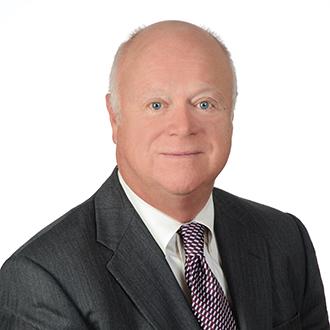
John is an adjunct professor at the University of Georgia School of Law, instructing on ADR. He is a Fellow in the College of Commercial Arbitrators. Previously, he served as a Fellow in the College of Commercial Arbitrators as well as chair and Executive Board Member of Corporate Counsel Sections of the Georgia and Atlanta Associations. John is active in the State Bar of Georgia and has served as chair and as a member of the executive board of the Corporate Counsel Section. He is a past vice chair of the Unauthorized Practice of Law Committee for the Georgia Bar. He is also the past president of Research Atlanta. He is a registered neutral in the American Arbitration Association, commercial, construction and sports arbitration panels, FINRA arbitration panel, and on the DeKalb County Dispute Resolution Center panel of neutrals. He is also a member of the Georgia Arbitrators' Forum.
John served as Chair of the Atlanta Bar Association Dispute Resolution Board in 2015 2016. He was Co Chair of the Georgia Bar's ADR Section Seminar in March 2004 sponsored jointly by the Atlanta Bar Association's ADR Section. He has published several papers including "Recent Developments in the Arbitration of Employment Disputes" and "Manifest Disregard of the Law" which was presented at the
170
10th Annual ADR Institute in 2003. He is an adjunct professor of ADR at the Emory University School of Law. He has participated as a trainer in mediation for the GODR and is a member of the Georgia Arbitrators Forum. John also served as Adjunct Professor for ADR at Georgia State University Law School 2015.
Prior to joining FordHarrison, John was Regional Counsel for Smurfit Stone Container Corporation and Container Corporation of America. He served as labor counsel for Union Camp Corporation. He was an officer in the U.S. Army serving a tour of duty in Vietnam.
John is a regular contributor to the Georgia Alternative Dispute Resolution Blog, giving timely reviews and discussing recent arbitration cases. The blog postings can be viewed at http://georgiaadr.wordpress.com.
171
Shelby Grubbs
http://grubbsadr.com/
Shelby Grubbs works as an arbitrator, mediator and special master. He has served on arbitration panels for JAMS, American Arbitration Association, CPR Institute, International Centre for Dispute Resolution, International Chamber of Commerce and World Intellectual Property Organization. He was recently named Atlanta, Georgia’s 2023 Lawyer of the Year for International Commercial Arbitration by Best Lawyers in America, and he co edits the AtlAS Desk Book, a guide for international dispute resolution lawyers, now in its fifth edition. He is a Fellow of the Chartered Institute of Arbitrators and a member of the ICC Commission on Arbitration and ADR. He taught international commercial arbitration as an adjunct professor at the law schools at Georgia State University, Emory University and Vanderbilt University.

172
GADR Arbitration Information
Recent Developments
[Note: Thanks to Doug Yarn author of Georgia Alternative Dispute Resolution. Throughout this discussion references below to “Yarn” identify resource materials contained in the 2020 Edition of GADR (Thomas Reuters) and the particular Section, or page where the information appears.]
The United States Arbitration Act was passed in 1925 [9 U.S.C.A. Section 2] (the “FAA”) to give broad procedural authority to the parties and arbitrators to contract for dispute resolution based on their agreement as an alternative to litigation and to curb courts from undue interference with this arbitration process. See Yarn Section 9:4. The FAA provides that parties’ “written agreement to settle by arbitration” any controversy arising in an interstate contract or transaction “shall be valid, irrevocable, and enforceable” FAA Section 2. One court has described the FAA as “a congressional declaration of a liberal federal policy favoring arbitration agreements notwithstanding any state substantive or procedural policies to the contrary… The FAA applies to all state and federal cases in which the contract at issue requiring arbitration involves or affects interstate commerce. “The purpose of the legislation was to overcome common law judicial hostility to arbitration and to allow parties the freedom to avoid civil litigation and to select a decision maker, a process format different from civil procedure in courts and to enforce the award as intended by the parties. The savings clause of Section 2 did reserve an exception to enforcement where the law provides for the revocation of any contract, e.g. fraud. [generally state contract law issues such as estoppel, waiver, fraud, duress and unconscionability]
Now close to 100 years since the passage of the statute by Congress a casual review of court rulings in arbitration dispute cases demonstrates that in some jurisdictions courts continue to have problems enforcing arbitration as required by the FAA. In the Y2K Act in 1999 Congress noted that arbitration was useful because “individuals already find [the legal] system inaccessible because of its complexity and expense.” Y2K Act, Pub.L. No. 106-37, section 2(a)(3)(B)(iii), 13 Stat. 185 (1999). A 2017 study conducted by Micronomics Economic Research and Consulting, authors Roy Weinstein, Cullen Edes, Joe Hale and Nels Pearsall titled “Efficiency and Economic Benefits of Dispute Resolution Through Arbitration Compared with U.S. District Court Proceedings” found that on average U.S. district court cases took more than 12 months longer to get to trial than cases adjudicated through arbitration (24.2 months v. 11.6 months). They also looked at caseloads in eight of the ten states with the highest caseloads (which included Georgia) and found in those states district court cases took 15-17 months longer to get to trial as compared to arbitration. When appeals are added federal cases required 24-26 month longer to resolve than in arbitration [36.5 months v. 11.8 months]. These figures do not include delays resulting from court closures during the recent Covid epidemic. In most instances during Covid arbitrations continued to resolve dispute by conducting virtual hearings. In this discussion, I’m going to briefly highlight some of the issues and problems in recent domestic arbitration cases and some of the other developments related to the arbitration under the FAA. [Note International arbitration cases are governed by different provisions in the FAA and state statutes and are not addressed in this summary.]
1
173
I. JURISDICTION
A. Scope of FAA and challenges to jurisdiction.
FAA 9 USC Section 1 applies to contracts in interstate commerce EXCEPT to contracts of employment of seamen, railroad employees, or any other class of workers engaged in foreign or interstate commerce. State Courts reviewing challenges to arbitration awards or the enforcement of arbitration agreements can overlook this federal requirement and instead apply state arbitration statutes to arbitration disputes that are made and conducted in interstate commerce. Because the FAA sets out standards to be applied and states also enact state statutes on arbitration, this overlap can create a confusion about the correct legal interpretation. When state courts apply state statutes, particularly handing down decisions that are contrary to existing FAA decisions, the result can be continued confusion for clients and lawyers. State statutes, like the Georgia Arbitration Code [“GAC”] apply to intra state contracts that contain arbitration agreements or if the parties have expressly agreed to apply the state arbitration law. Even where the parties have expressly contracted to apply a state arbitration statute, reviewing courts cannot override the FAA’s applicability where in interstate contracts the state law is in conflict to the FAA. Specifically state statutes cannot under the FAA cannot be used to create a barriers to the exercise of rights identified in the FAA. See Yarn Section 9:10, fn 3.
B. Limits of FAA coverage – Express statutory exceptions.
The FAA contains an express exception to coverage specifically exempting a class of employment contracts for seamen, railroad employee or other workers engaged in foreign or interstate commerce. In 2022 the scope of this exception was challenged: [Southwest Airlines Co. v. Saxon, 596 U.S. ________ (2022)]. In Southwest Airlines Co. v. Saxon, SCOTUS in a unanimous decision, held that under the statutory exception, the FAA does not apply to airline ramp supervisors engaged in loading and unloading cargo moved in interstate commerce. Latrice Saxon worked as a Ramp Supervisor at an airport and claimed exemption from an obligation to arbitrate under the FAA.
The Court ruled the language “engaged in commerce” is narrower than “affecting “ or “involving” commerce – and that cargo loaders play a direct role in moving commerce across borders. As a result the airline could not force Saxon to arbitrate a dispute under the FAA.
C. Court reexamination of evidence leading to arbitrator’s decision.
Arbitration offers the parties finality. There is no statutory appeal to courts of the Award rendered by the panel. Under Section 10 of the FAA there are four express statutory bases to vacate an arbitration award if the challenge falls within the criteria to support vacatur. Judicial review of the evidentiary basis for the arbitrator’s award is not one of the four statutory bases. See Yarn, Section 9.57; 9.63.
2
174
A recent Georgia case is worth noting -- the Fulton Superior Court decision and the reversal by the Court of Appeals in Wells Fargo Clearing Services, LLC et al. v. Leggett et al., A 22A 1149 (8/2/2022).
The case was brought under the arbitration rules of the Financial Industry Regulatory Authority (FINRA), a federal agency. The Superior Court reviewed the evidentiary findings of a three person FINRA panel. [FINRA arbitrations are recorded.] The Superior Court vacated the award finding that FINRA had manipulated the selection for arbitrators appointed to the panel based on requests by counsel for Wells Fargo. [Note there is no statutory vacatur provision in Section 10 dealing with the provider (FINRA) selection process.]
Permitting one lawyer to secretly red line the neutral list makes the list anything but neutral, and calls into question the entire fairness of the arbitral forum.
The Court of Appeals reversed finding there was no evidence of any manipulation. The COA also found there was no abuse of discretion based on the FINRA director’s removal of one of the panel members based on available information. Further the COA found there was no evidence the panel abused its discretion by granting a continuance of the hearing based on a medical emergency nor was there evidence of abuse based on the panel’s refusal to hear evidence of a rebuttal witness and/or limiting cross examination of an expert.
In reversing the trial court’s findings, the COA stated:
Nothing indicates that Wells Fargo manipulated the arbitrator pool…The superior court provided no proper basis for vacating the arbitration award.
[Note after the vacatur by the Superior Court’s finding of a secret agreement between Wells’ counsel and FINRA, FINRA commissioned an independent review of FINRA’s Arbitrator selection Process. The report by Christopher W. Gerold of Lowenstein dated June 28, 2022 found no documentary evidence, including emails or other material, suggested the existence of such an agreement. The study did, however, make suggestions to FINRA on improvements to better serve transparency in the arbitrator selection process.]
For a somewhat similar 9th Circuit Decision see. Serna v. Northrop Grumman Systems Corp., No. 21-55238 (9th Cir. July 12, 2022). [No judicial review on supporting evidence of arbitrator’s factual findings.]
D. Amendments to Scope of FAA coverage.
The FAA can be amended by Congress to eliminate its application to classes of cases based on Congressional policy. In February 2022 Congress passed H.R. 4445”Ending Forced Arbitration of Sexual Assault and Sexual Harassment Act of 1921” amending title 9 of the United States Code ( the FAA) The Bill was signed into law in March 2022. [“Ending Forced Arbitration Act”]
The language of the amendment bans the inclusion of contract clauses in arbitration agreements covering sexual misconduct and permits these claims to be brought in federal, state or tribal
3
175
courts. A form of the bill had been introduced beginning in 2017 as a means of allowing these cases in court to avoid mandatory arbitration. The supporting arguments for limiting arbitration included the argument that arbitration was viewed as favoring employers over employees. The amendment also permits the bringing of class action cases in court filings which were not available in the arbitration forum.
[Note: On March 17, 2022 the House also passed a proposed amendment that would invalidate predispute arbitration agreements in employment, consumer, antitrust and civil rights disputes. “Forced Arbitration Injustice Repeal Act of 2022.” H.R. 963. The “FAIR ACT” bans mandatory arbitration and class or collective action waivers in the employment context as well as consumer, antitrust and civil rights. It does not apply to arbitration in Collective Bargaining Agreements. It is now pending before the Senate and at this point has not been approved. The bill also provides that disputes upon the approval of FAIR shall be decided in a federal court, not by an arbitrator. Thus delegation clauses would be invalid in challenges to arbitration. The legislative motives for passing this legislation were based on assumptions related to consumer arbitration. For a more empirical review of consumer or employment arbitration benefits or problems take a look at Northwestern Law School Searle Civil Justice Institute Study “Consumer Arbitration Before the American Arbitration Association” published in March 2009 in response to an earlier proposal of the FAIR Act. The study evaluated 301 consumer arbitration cases between April and December 2007 and found that consumer claims of less than $10,000 cost the consumer on average $91.00 and for cases with claims between $10,000 and $75,000 the cost averaged $219.00. The time for the claim to reach award was an average of 7 months. Consumers were awarded relief in 53.3% of the cases in the average amount of $19,255.00. Attorney fees were awarded to consumers in 63% of the cases. See also “Arbitration – A Good Deal for Consumers” by Peter B. Rutledge for the U.S. Chamber Institute for Legal Reform, April 2008. “[Consumers} should not be misled to believe that the abolition of arbitration will magically cause juries to appear to resolve their case; in all likelihood, a jury will never hear, much less decide, their case.” Page 31.
See William M. Howard, Arbitrating Claims of Employment Discrimination, Dis. Resol. J. Oct.Dec. 1995 at 40 (Plaintiff lawyers turn away most cases unless a case offers a high rate of success and sufficiently high potential damages.)
A 2015 study by the Consumer Financial Protection Bureau (CFPB) confirmed that individual arbitration is more beneficial to consumers than class action litigation. Their conclusions included that consumers on average recover $5389.00 in a process that averaged 5-7 months to complete. In comparison class action participants received an average of $32.35 on a process that required up to two years to complete. [Class action lawyers recovered an average of $424,495.45.
E. “Implied limitations” in other Federal legislation to the FAA.
Contrary Federal Statutes. Some challenges also have been raised to “imply legislated” exceptions to the FAA. For example in Adell v. Cellco Partnership, No. 21-3570, 2022 WL 1487765 (6th Cir. May 11, 2022) a plaintiff argued the Class Action Fairness Act (“CAFA”) should be interpreted to override the FAA’s standard precluding enforcement of class action waiver provisions in consumer contracts. The Sixth Circuit rejected this challenge saying a
4
176
statute displacing or amending the FAA is appropriate only if there is “clear and manifest congressional intention” to do so. The Court said there was no support that CAFA contained such an expression.
See also Epic Systems Corp. v. Lewis, 138 S. Ct. 1612 (2018)[ the National Labor Relations Act did not displace the FAA in the employment context.
F. Preemption and conflicting state statutes.
In California the state legislature had passed the Private Attorneys’ General Act [ “PAGA”] Labor Code Section 2698-2699.5 which California courts held allowed any person to serve as an attorney general to enforce state employment laws and not be compelled to arbitrate such claims. In Viking River Cruises, Inc. v. Moriana, Case No. 20-1573 (2022) SCOTUS rejected the claim that PAGA was not preempted by the FAA. The court said that the individual portion of a claim subject to arbitration was covered by the FAA and that the collective state action could be severed.
The California Private Attorney s General Act (PAGA) was passed in 2004. The statute allows citizens/employees to act as attorneys general to enforce California labor law and empowers them to bring lawsuits. Lawsuits can be filed for damages in the form of civil penalties that could be recovered by a state labor or workforce agency for an established violation of California employment law. Accordingly class actions related to work force disputes could continue to be brought in California and thereby avoid any waiver limitations in an arbitration clause recognized under the FAA. Moreover a previous California court decision held such individual representation could not as a matter of California law be waived. Iskanian v. CLS Transportation Los Angeles, LLC, 59 Cal. 4th 348 (2014):
Employers may not require employees and applicants to waive any right, forum or Procedure for a violation of the Labor Code as a condition of employment.
SCOTUS ruled that PAGA conflicts with the FAA to the extent it permits the joinder or other employee claims that are unrelated to the PAGA related claims and precludes individual arbitration. The Court stated that PAGA
“unduly circumscribes the freedom of parties to determine the ‘issues subject to and the rules by which they will arbitrate…and does so in a way that violates the fundamental principle that' arbitration is a matter of consent.”
The result being that claimants would withhold the PAGA matter from arbitration.
Viking raises the issue of partial or total Preemption of state laws that conflict with the FAA. The ruling has implications for other state statutes that conflict with the FAA and which are therefore contrary to precedent applicable to arbitration cases covered by the FAA. See Yarn Section 9.10; fn 9, fn11.
5
177
In a recent Georgia Court of Appeals case we can find a potential development. Vasudeva v. Dagnew, 2021 WL 3417474 (Ga. App. Aug.5 2021). In this case the Court of Appeals denied a Motion to Compel arbitration. The court ruled that the arbitration agreement in the employment contract was not enforceable because it had not been specifically initialed in the margin as required by O.C.G.A.(c)(9). There were initials at the bottom each page but not next to the arbitration clause. The Court of Appeals assumed that GAC applied, not the FAA. [There is no reference to intrastate jurisdiction or the parties express agreement to an arbitration clause selecting the GAC to apply.] The purpose of the initialing was, the Court said, to be sure the parties had “given up their common law right to access to the courts.” Id. fn. 11. This decision is before the Georgia Supreme Court and a ruling has not been issued as of the time of this writing.
Section 2 of the FAA states “…an agreement in writing to submit to arbitration an existing controversy…shall be valid, irrevocable and enforceable.” [Emphasis mine]
See Yarn Section 9:10 fn,11, 12, 13; Doctor’s Associates, Inc. v.Casarotto, 517 U.S. 681 (1996) State requirement that arbitration clause to be enforceable must be typed and underlined on the first page of the contract rejected by SCOTUS as violating FAA. See also: Buckeye Check Cashing, Inc. v. Cardegna, 126 S. Ct. 1204, 1206 (2006).
Preemption by the FAA of the GAC provisions continues to be an issue. Having determined that common law arbitration principles were displaced by the FAA and completely preempts state arbitration law, some of the more recent decision seem to waffle on this concept. See Yarn Section 9.10, fn.9-10, Wells Fargo Auto Finance, Inc. Wright, 304 Ga. App. 621 (2010); Brookfield Country Club, Inc. v. St. James-Brookfield, LLC, 287 Ga. 408 (2010).
See Marmet Health Care Center, Inc. Brown, 132 S. Ct.1201 (2012); Yarn Section 9:10 fn11. [West Virginia courts’ rule that arbitration clauses in personal injury or wrongful death claims against nursing homes preempted by FAA.]
G. Standards for Vacatur under Section 10 of the FAA – Manifest Disregard of the Law
Cf. Adventure Motorsports Reinsurance, Ltd and Southern Mountain Adventures, LLC.v. Interstate National Dealer Services, Inc. Case No. A20A0037. The Court of Appeals applied the GAC and found that the award of the arbitrators should be vacated based on GAC statute allowing vacatur for Manifest Disregard of the Law. (356 Ga. App. 236 (2021) The Georgia Supreme Court reversed and has remanded the case.
[Note in Motorsport, one party, Adventure Motorsports Reinsurance, Ltd. is organized under the laws of The Turks and Caicos Islands (“Turks and Caicos”). The Court of Appeals then should have applied the Georgia International Arbitration Code which adopts the FAA for purposes of “Non-domestic” awards. The Eleventh Circuit has stated that non-domestic awards may be set aside only on the grounds listed in Article V of the United National Convention on the Recognition and Enforcement of Foreign Arbitral Awards (the “New York Convention”).
Manifest Disregard of the Law is not one of the grounds. In O.C.G.A. Section 9-9-56 it is stated that international arbitration awards may be vacated only for the grounds set out in the statute. Manifest Disregard of the Law is not one of those grounds.] The Supreme Court, however,
6
178
emphasized the error in vacating the award based on the MDOL Georgia standards as mis characterized by the COA:
Specifically, Dealer and Reinsurer argue that, for vacatur on this basis, [MDOL] controlling precedent requires a showing of concrete evidence that the arbitrator intentionally and knowingly chose to ignore the law applicable to the parties’ dispute, and they argue that such evidence is absent in this case. We agree. [emphasis mine]
…
Therefore, to prove that a manifest disregard of the law has occurred, a party wishing to have an arbitration award vacated must provide evidence of record that, not only was the correct law communicated to the arbitrator, but that the arbitrator intentionally and knowingly chose to ignore that law despite the fact that it was correct. [emphasis mine]
Georgia court decisions and precedent have stated before that an incorrect interpretation of the law is not manifest disregard.
[Mere] error in law or failure on the part of the arbitrator[] to understand or apply the law” does not amount to deliberately disregarding the law in order to reach the result the arbitrator reached.
However imperfect the Court of Appeals may have judged the arbitrator’s understanding or application of the law to have been, such failure by the arbitrator does not amount to concrete evidence of a deliberate decision not to apply the applicable law in making the arbitration award. [emphasis mine]
The case was remanded to the COA to consider an error claimed under OCGA Section 9913(b)(3) on whether the arbitrator exceeded his authority.
H. Waiver of Arbitration Provision
Courts have held that express arbitration provisions in party agreements can be waived where their behaviors demonstrate the application of arbitration in lieu of litigation has been waived. Some circuit court decisions has included a requirement that to invoke waiver, the party challenging the loss of the option to arbitrate had to demonstrate some evidence of prejudice. In Morgan v. Sundance, _______________ (2022) SCOTUS stated that the waiver of a contractual right to arbitration cannot be conditioned on a showing of prejudice:
[T]he FAA’s “policy favoring arbitration” does not authorize federal courts to invent special, arbitration-preferring rules… Our frequent use of that phrase connotes something different “Th[e] policy,” we have explained “is merely an acknowledgement of the FAA’s commitment to overrule the judiciary’s longstanding refusal to enforce agreements to arbitrate and to place such agreements upon the same footing as other contracts…Accordingly, a court must
7
179
hold a party to its arbitration contract just as the court would to any other kind. But a court may not devise novel rules to favor arbitration over litigation.
Waiver we have said, “is the intentional relinquishment or abandonment of a known right…To decide whether a waiver has occurred, the court focuses on the actions of the person who held the right; the court seldom considers the effects on the opposing party.
II. OTHER ARBITRATION DECISIONS
A. Agent’s authority to Sign Arbitration Agreement binding Principal.
CL SNF, LLC et al v. Fountain, A20A0773 (6/21/2022)
The Georgia Supreme Court reversed and affirmed the enforceability of an arbitration agreement entered into by a guardian and contained in an admission agreement to a skilled nursing facility. In this instance the patient was a mentally impaired adult. A trial court had denied a motion to compel arbitration by the facility in a claim against the facility for sexual battery of the patient in part finding the guardian did not have authority to sign the arbitration agreement on behalf of the patient.
The Supreme Court reversed the trial court’s finding that the arbitration agreement was onesided and unconscionable noting that the guardian was presumed to have read the agreement and understood the content. A waiver provision of a jury trial was set out in bold face on the first page. Further the signature page included that the patient had the right to seek legal counsel’s advice and that a signature could be revoked within a 30 day period. The Georgia Supreme Court found the agreement was governed by the Federal Arbitration Act and was enforceable. The Court ruled that the facility established the guardian had the authority to sign the arbitration agreement on behalf of the adult patient.
See also Pruitthealth-Augusta, LLC et al. v. Lyell et al., No. A21A 1681 (2/28/2022) [Power of Attorney did not divest agent from authority to sign arbitration agreement in admission documents to skilled nursing facility. Arbitration Agreement was not unconscionable]; West et al. v. Bowser et al.,A21A0055 (8/19/2022) [Georgia Supreme Court reverses COA finding inter alia Georgia Guardianship Code authorized guardian’s execution of arbitration agreement and did not require separate consideration. FAA preempts state laws that conflict with it or the enforcement of private arbitration agreements.]
B. No federal jurisdiction solely on basis of Sections 9 & 10 of the FAA
In Badgerow v. Waltners et al., No. 20-1143 the Supreme Court rejected the “ look through” approach to finding jurisdiction in the federal court on requests to confirm or vacate arbitral awards under Section 9 & 10 of the FAA. Courts must find an independent basis for federal jurisdiction not simply based on these sections of the FAA.
The FAA language in Section 4 is different allowing a petition for an order to compel arbitration
8
180
in a United States district court which, save for the [arbitration] agreement would have jurisdiction over the controversy between the parties. Section 9 and 10 do not contain this language.
The implication of the holding is that these petitions will generally be heard in state courts absent an independent basis for finding federal jurisdiction.
C. Subpoenas issued in arbitration are nationwide in scope
The Ninth Circuit recently issued a unanimous decision on the scope of arbitral subpoenas finding that third parties may be required to comply with a subpoena to produce documents. The Court applied the venue of section 204 of the FAA supplements but does not replace the General Federal venue statute (28 U.S.C. Section 1391). Jones Day v. Orrick, Herrington 7 Sutcliffe, et al (9th Cir. No 21-16642 2022).
While the Orrick decision was handed down in an international arbitration case, the reasoning applied is equally applicable to domestic FAA subpoena authority.
III. AAA REVISES SOME OF COMMERCIAL RULES.
Effective September 1, 2022 and after two years of study, the American Arbitration Association has revised its Commercial Rules. Among other modifications the revised rules allow for hearing to be remotely conducted by electronic means. Other changes include that the arbitrator can limit dispositive motions practice and award fees and costs related to dispositive motions. Also under the expedited rues discovery other than the basic exchange of exhibits is prohibited. Consolidation and joinder is now permitted where there are common issues of law or fact and where the arbitration clauses are compatible. Arbitrators may consider the issues of justice and efficiency in applying these requests. Expedited Rules may not be enforced in claims up to $100,000. Larger Complex track rules will now apply to claims of $3,000,000.00 or more.
These observations are not the universe of all recent (2022) developments in arbitration but they provide a summary of some of the more important changes that may affect the practice.
Regards. John Allgood Of Counsel Ford Harrison LLP
9
181
Copyright2022,ShelbyR.Grubbs
Allrightsreserved
NewArbitrationRules2020–2022:Major ChangesandTrends
ShelbyR.Grubbs
JAMS
1201WestPeachtreeNW Suite2650 Atlanta,GA30309 4236676671 sgrubbs@jamsadr.com
Introduction
Theperiod2020–2022hasseenanavalancheofamendmentstoarbitrationrules. New ruleswerepublishedby:
AmericanArbitrationAssociation(“AAACommercialRules2022).
AsianInternationalArbitrationCentre(“Asia2021Rules”).
AustralianCentreforInternationalCommercialArbitration(“Australia2021Rules”).
BritishVirginIslandsInternationalArbitrationCentre(“BVI2021Rules”).
InternationalCourtofArbitrationoftheInternationalChamberofCommerce(“ICC2021 Rules”).
InternationalCentreforDisputeResolution(“ICDR2021Rules”).
JAMS(“JAMS2021ComprehensiveRules,”“JAMS2021ConstructionRules,”“JAMS “JAMS2021Streamed-linedRules”and“JAMS2021InternationalRules”).
LondonCourtofInternationalArbitration(“LCIA2020Rules”).
SwissArbitrationCentre(2021)(“Swiss2021Rules”).
UnitedNationsCommissiononInternationalTradeLaw(“UNCITRAL2021Expedited Rules”).
ViennaInternationalArbitralCentre(“Vienna2021Rules”).
1
182
Copyright2022,ShelbyR.Grubbs
Allrightsreserved
WorldIntellectualPropertyOrganization(“WIPO2021Rules”)and(“WIPO2021 ExpeditedRules).
Inaddition:
InternationalBarAssociationamendeditsRulesfortheTakingofEvidencein InternationalArbitration(“IBA2020EvidenceRules”).
InternationalCouncilforCommercialArbitrationalongwiththeNewYorkCityBarand CPRproducedaProtocolonCybersecurityin2020andamendedthatProtocolon Cybersecurityin2022.(“2022CybersecurityProtocol”).
OliverWendellHolmesfamouslyobserved,“Thelifeofthelawhasnotbeenlogic:Ithas beenexperience…”1 Certainly,recentruleamendmentswereanimatedbytheteachingsof experience. Justascertainly,the2020–2021amendmentsrespondedtoamarketimperative: Theneedtomakearbitrationmoreexpeditiousandlessexpensive. Inaddition,theyresponded totheCovidpandemic,inparticulartheneedtoremoveanydoubtaboutthepowerofarbitrators toordervirtualhearingswithorwithoutpartyconsent.
WherearethemajorchangesandwhattrendsdoIsee? Hereareten:
1. Virtualhearingsarenowbeingexplicitlyauthorizedandwillincreasinglybe used.
2. Joinderandconsolidationaregraduallybeingperfectedbutthecontractualnature ofarbitrationwillpreventthembeingaseffectiveaswemightlike.
3. Third-partyfundingisincreasinglycommon,andrulesare requiringthe identificationoffundersforpurposesofdeterminingarbitratorconflicts;thiswill continue.
1 TheCommonLaw,Vol.1,LittleBrown&Company(1881).
2
183
Copyright2022,ShelbyR.Grubbs
Allrightsreserved
4. Expeditedproceduresareanincreasinglypopulartoolfordealingwithcost and delay;theuniverseofclaimsautomaticallysubjectedtoexpeditedprocedureswill expand.
5. Codesofconductforarbitratorsandlawyers,longoverdue,arebeingadopted, andmoreinstitutionswilladdthem.
6. Cybersecurityanddataprotectionmustbeconsideredintoday’senvironment;this toowillcontinueaspartofatrendtoputthearbitralprocessonline.
7. Confidentialityrequirementsarebeingmadeexplicitinproceduralrules;expect moreofthisbutsubjecttotheneedtolimitationsimposedbycourtsincourt proceedingsforconfirmation/vacatur.
8. Summarydispositionmechanismsarewinningnewinstitutionalconvertsandwill soonbeubiquitous.
9. Deadlinesfordeliveryofawardsmeasuredfromdatesotherthantheclosingof thehearingareabadideabutmaybewithusforawhile.
10.Electronicsignaturesarebeingexplicitlyauthorized,andthoughagood development,cautionshouldbeexercisedtoensurecompliancewithapplicable laws.
1. VirtualHearings
Allamendinginstitutionsnowmakeexplicittheauthorityofarbitratorstoordervirtual hearings.2 Non-amendinginstitutionswillfollowsuit.3 Infact,myguessisthatvirtualorat
2 AAA2022Rules,R.11,R.25;Asia2021Rules,R.14.3,R.18.4andR.28.7;Australia2021Rules,Arts 10,25.4,27.2,35.5and36.5;BVI2021Rules,Art.29;ICC2021Rules,Art.26;ICDR2021Rules,Art.26(2); JAMS2021ComprehensiveRules,R.22(g);JAMS2021InternationalRules,Arts14.2and23.2;LCIA2020Rules, Art.19.2;Swiss2021Rules,Art.27(2);Vienna2021Rules,Art.30(1);WIPO,2021RulesArts40(preparatory conferences),49(g)(emergencyarbitratorhearings)and55(a)(evidentiaryhearings).
3 Evenwheretheauthorityofarbitratorsisnotexplicitlyincludedinrules,UScourts,sofar,appeartobe findingthattheymayordervirtualhearings. See,Legaspyv.FinancialRegulatoryAuthority,2929WL4696818
3
184
Copyright2022,ShelbyR.Grubbs
Allrightsreserved
leasthybridhearingswill betherule,particularlyininternationalarbitrations,aslawyersand arbitratorsbecomemorecomfortablewiththetechnologyandasparties(particularlybusiness parties)seetheexpensesavingssuchhearingsoffer.Moreover,casemanagementconferences andmotionhearingswilltypicallyemployvideoconferencingtechnologyinsteadofusing telephoneconferencecallsorin-personhearings.
2. Joinderandconsolidation
Arbitrationis,ofcourse,acreatureofcontract. Historically,joinderandconsolidation tookplaceonlyifallparties(includingthepartytobejoined)agreedtothejoinderorto consolidate,andfrequentlytherewasnoagreement. Morerecentlyinstitutionshavebecome moreaggressive,presumablybecausesincethelackofmechanismsforeffectivejoinderand consolidationarguablyputsarbitrationatadisadvantageincomparisontolitigation.
Thedifficultypresentedbyjoinderandconsolidationisheightenedbythefactthatitis notpossibletoselectarbitratorswithfinalityuntilitisknownwhatpartiesandissueswillbe includedthearbitration. Thus,conflictscannotbedefinitivelyidentified,anddisclosurescannot definitivelybemaderesultinginlatedisclosuresandtheriskofdisqualificationandattendant delay.
Whilesomeinstitutionsretaintherequirementthatallpartiesconsent,4 othershavetaken ituponthemselvestoruleonjoinderquestionsattheoutsetofthearbitrationandbefore
(NDIll2020)(RefusingtovirtualproceedingunderFINRAprocedures);Cristov.CharlesSchwabCorp.,2021WL 2633624(USDC,SDCal.,June25,2021)(same);R.M.R.ElevatorCo.v.BroadAtlanticAssociatesLLC,A-240620,SuperiorCourtofNewJersey,AppellateDiv.2022WL1926085June6,2022)(RejectingchallengeunderNJ lawbasedonAAAarbitratorproceedingvirtually.).Similarly,aCanadiancourt,hasnoted that“Virtualhearing technologyisa‘tool’thatmaywellbeusedtoenhancethejudicialprocessjustastypewritersandthenword processorsenhancedaprocesswhichatonepointdependedon‘quillandink.’”Arcontiv.Smith,2020ONSC2782 (OntarioSuperiorCourt2020)
4WIPO2021RulesArt.46.
4
185
Copyright2022,ShelbyR.Grubbs
arbitratorsareappointed.5 Thesameistrueofconsolidation.6 Notethatatsomeinstitutions, thesedecisionsareexpresslysubjecttoreviewbythearbitratorsoncetheyareappointed.7
Uniquely,AAAanditsaffiliate,ICDR,haveprovisionsfora“consolidation”arbitrator whoconsidersanddeterminesquestionspertainingtoconsolidationandjoinderandthendrops out.8 Whileperhapscontrarytoeffortstomakearbitrationmoreexpeditiousandcheaper,this approachcouldcatchonbecauseitfacilitatesanearlydecisionand,toadegree,insulatesthe institutionfromthedecision-makingprocess.
Wewillseehowwelltheserulesfareasawardsinconsolidatedcasesandcasesinwhich partieswerejoinednotwithstandingobjectionsare judiciallyreviewed. Ina sense,weareseeing abroadrangeofexperimentsreflectedindifferencesintheapproachestakentoconsolidation andjoinder.
3. Third-partyfunding
Third-partyfundingisnowallowedinallmajorjurisdictions. Whileoutsidefundingis notitselfinherentlyobjectional,thepresence–albeitbehindthescenes–offunderswitha financialstakeintheoutcomeofanarbitrationcreatesconflictsissues. Institutionsaretherefore adoptingrulesrequiringearlydisclosureofthird-partyfunding. 9 Inthefutureexpecttoseemore suchprovisionsandexpectlessinstitutionalandjudicialpatiencewithanyfailuretodisclose funders.
5Agreementnotrequiredtoorderjoinder–Australia2021Rules,Art.17;ICC2021RulesArt.7;ICDR 2021Rules,Art,8;Swiss2021Rules,Art.6;Vienna2021Rules,Art.14.
6 E.g.,JAMS2021InternationalRules,Art.6.4.
7 E.g.,JAMS2021InternationalRules,Art.6.4.
8AAA2022Rules,R.8(iii);ICDR2021Rules,Art.9(1).
9 TheseincludeAustralia2021Rules,Art.54;ICC2021Rules,Art11(7);ICDR2021Rules,Art14(7); Vienna2021Rules,Arts6(1.9)and13a;WIPO2021Rules,Art.9(vii)and11(b).
Allrightsreserved 5
186
Copyright2022,ShelbyR.Grubbs
Allrightsreserved
4. Expeditedprocedures
AttheICCcasesinvolvinglessthan$3MillionUSnowgoautomaticallyintothe expeditedtrack.10 UndertheJAMSInternationalRules,thisfigurecanbeashighas$5 Million.11 ICDRandWIPOautomaticallyputcasesinvolvingupto$500Kintotheirexpedited tracks.12 Domestically,expeditedproceduresautomaticallyapplytoAAAcasesupto $100,00013 andtoJAMScasesupto$250,000.14
Therulestendtorestrictorprohibitdiscoveryanddisclosure,limitsummarydisposition motionpractice,specifyasinglearbitrator,imposeshortenedtimeperiodsandotherwise streamlinethearbitrationprocess.
Generally,whilepartiesmaybeabletoagreetooptoutorapplytotheinstitutionor tribunaltoallowthemtooptout,casesareputintotheseproceduresautomatically.15 Lookto seemoreandmorecasessubjectedtoexpeditedtrackrules.
5. Codesofconduct
Internationalarbitrationscanandoftendoinvolvearbitratorsandlawyerswhoaresubject tomultiplesetsofprofessionalrules. TheAsianInternationalArbitrationCentreandICDR16 havejoinedtheBrazilCanadianChamber17 insubjectingarbitratorstominimumcodesof contact. Myguessisthatwewillseemoreofthesecodes.
10 ICC2021Rules,Art.30andAppdxVI.
11 JAMS2021InternationalRules,Art.21.1
12 ICDR2021Rules,Art.1(4)andICDRExpedited2021Rules,Art.E-5;Asia2021Rules,R.8.2(b).
13 AAA2022Rules,R.1(b).
14 JAMS2021StreamlinedRules,R1.
15 JAMS2021InternationalRules,Art.21.1;ICC2021Rules,Art.30andAppxVI; ICDR2021Rules, Art.1(4)andICDRExpedited2021Rules,Art.E-5. Asia2021Rules,R.8.2(b).
16 Asia2021Rules,R.10.1(RequiringcompliancewiththeAICACodeofConductforArbitrators.,ICDR 2021Rules,Art.14(1)(RequiringcompliancewiththeAAACodeofEthicsforArbitratorsinCommercialDisputes.
17CAM-CCBCRulesatAnnx.“CAM-CCBC’sCodeofEthics.”
6
187
Copyright2022,ShelbyR.Grubbs
Allrightsreserved
Asforcounsel,theLCIArequiresthatcounselabideby“GeneralGuidelinesforthe AuthorizedRepresentativesofParties.”18 Onthedomesticfront,AAA(likeitsinternational affiliate,ICDR)nowrequiresthatcounselcomplywiththeAAA-ICDRStandardsofConductor PartiesandRepresentatives.19
Thesearewelcomedevelopments,particularlyininternationalarbitrationswherethere canbeconfusionregardingethicalstandards. Evenindomesticarbitrations,itispossiblethat counselandarbitratorswillbeworkingunderslightlydifferentethicalrules. Expectmoreefforts toincludeminimumstandardsforarbitratorsandlawyers.
6. Cybersecurityanddataprotection
Institutionalrulesincreasinglyrequirethatarbitratorsandpartiesincludecybersecurity anddataprotectionastopicsformanagementconferencediscussion.20 Asarbitrationgoesonline,notonlywithvirtualhearings,butwithelectronicallyfiledexhibitsreplacingnotebooks, lookformorefocusondatasecurity.21 AprojectbytheInternationalCouncilforCommercial Arbitration,theNewYorkCityBarandCPRhaspromulgatedguides,mostrecentlythe2022 ProtocolonCybersecurity,thatcanhelpinformthesediscussions.
7. Dispositivemotionsandearlydisposition
Atrendtowardallowingsummarydispositionhasnowreachedmostinstitutions. AAA, JAMS(initsdomesticrules),HongKongandSingaporealreadyhaddispositivemotionrules.
18
LCIA2020Rules,Annx.“GeneralGuidelinesfortheAuthorizedRepresentativesofParties.”
19 AAA2022CommercialRules,R.2(c).
20See,AAA2022Rules,PreliminaryHearingProceduresatP-2(a)(vi);AustraliaRules2021,Art.26.6; IBA2020EvidenceRules,Art.2(2)(e). LCIA2020Rules,Art30A.5. SwissRules2021Art.19(2).
21 See, IBA2020EvidenceRules,Art.2(2)(e).SwissRules2021Art.19(2);LCIA2020Rules,Art30A.5. AustraliaRules2021,Art.26.6
7
188
Copyright2022,ShelbyR.Grubbs
Allrightsreserved
TheyarenowjoinedbyAustralia,Asia,ICDR,LCIAandJAMS(initsinternationalrules). 22 Also,theIBA’sRulesofEvidenceseemtocontemplatethepossibilityofdispositivemotions. Infact,AsiaandLCIAallowtribunalstodismissclaimsthatareoutsidethejurisdiction ofthetribunal,inadmissibleormanifestlywithoutmerit. Nomotionorleavetofileisrequired, butcounterpartieshaveanopportunitytorespondandbeheard.23
Inlinewithageneraltrendtowardallowingawardsofinterimcostawards,AAA’s2022 ruleallowsarbitratorstoassessfeesandexpensesaspartofadecisiononasummarydisposition motion.24
TheAsianInternationalArbitrationCentrerequiresthatapplicationsforsummary dispositionbemadewithinthirtydaysofthefilingofadefense(answer).25 Thislimitationon dispositivemotionpracticewillnotlastinmyopinion.
8. Deliverydeadlinesforawards
AAAstillmeasurestheduedateforawardfromgenerallyfromtheclosingoftherecord, requiringawardswithin30daysfromclosing.26 JAMSalsorequiresawardswithin30daysof closing.27 Similarly,theICDRwantsawardswithin60daysofclosing. 28
22 Australia2021Rules,Art.25.7;Asia2021Rules,R.19;ICDR2021Rules,Art.23;LCIA2020Rules, Art.22.1(viii);JAMS2021InternationalRules,Art.25;Seealso,IBA2020EvidenceRules,Art2(3)(b).
23See,Asia2021Rules,R.19;LCIA2020Rules,Art.22.1(viii).
24 AAA2022Rules,R.34. Regardingatrendtowardallowingarbitratorsmorediscretiononthetimingof costawardssee,Australia2021Rules,Art.51.2;JAMS2021InternationalRules,Art.31.6;Vienna2021Rules, Art.38(3).
25 Asia2021Rules,R.19.2.
26AAA2022Rules,R.48.
27 JAMS2021ComprehensiveRules,R.24.
28 ICDR2021Rules,Art.33(1).
8
189
Copyright2022,ShelbyR.Grubbs
Insteadofcalculatingtheduedateforawardsfromtheclosingoftherecord,some internationalinstitutionsareadoptingprovisionswhichtietheduedatetothedateoftheanswer orthefinalsubmissionorthelasthearing.29
Myguessisthattheseinnovationswillprovetobemoretroublethantheyareworthas partiesandarbitratorsareforcedtoseekexpansionsofthetimefordelivery. Abetterapproach istoauthorizetheadministeringinstitutiontoadjustarbitratorfeesifthereisunreasonabledelay. AustraliaandtheICCalreadydothis.30 Mybetisthatthisapproachwillbeincreasingly utilized.
9. Confidentiality
Arbitratorshavehistoricallybeenunderstoodtobeboundtoanobligationof confidentiality.31 JoiningtheBrazilCanadaChamberofCommerce,ICDRandJAMSin imposinganexpressobligationofconfidentialityonarbitrators,32 theAAARulesnowrequire arbitratorstokeepconfidentialmattersrelatingtoarbitrationsandawards.33
Ontheotherhand,partieshistoricallyhavehadnoautomaticconfidentialityobligations absentanagreement. Inwhatcouldbeatrend,institutionsareplacingnotonlyarbitratorsbut partiesunderageneralobligationofconfidentiality.34
29 See,Australia2021Rules,Art.39.3(Awardduetheearlierofninemonthsfromdatefileistransmitted orthreemonthsfromthedateproceedingsareclosed.);LCIA2020Rules,Art.15.10(Endeavortoprovideawardno laterthanthreemonthsfollowinglastsubmission);Vienna2021Rules,Art.32(2)(Awardduethreemonthsfrom lasthearingorsubmission.)
30 Australia2021Rules,Art.50.4;ICC2021Rules,Art.38(2)andICC“NotetoPartiesandArbitral TribunalsontheConductofArbitrationundertheICCRulesofArbitration(2021)”atXIV¶¶182-86.
31 See,also CatherineRogers, Ethics in International Arbitration (2014)at96–97(notinginstitutionswith codesofethics).
32 CAM-CCBC2016Rules,CodeofEthics,Statement3;ICDR2021Rules,Art.40;JAMS2021 ComprehensiveRules,R.26(a);JAMS2021InternationalRules,Art.16.1
33 AAA2022Rules,R.45(a).
34 Asia2021Rules,R.44.4;Australia2021Rules,Art.26;JAMS2021InternationalRules,Art.16.1; WIPO2021Rules,Arts75–77. Notably,theIBAEvidenceRulenowcloaksalldocumentsproducedinresponse toarequestforproductionwith confidentiality.IBA2020Rules,Art.4(13);seealso, Id.atArt.2(2)(d)(suggesting consultationwithpartiesregardingconfidentiality ofevidence)andArt.9(4)(suggestingconsiderationsof confidentialityinconnectionwiththeadmissibility andassessmentofevidence.).
Allrightsreserved 9
190
Copyright2022,ShelbyR.Grubbs
Allrightsreserved
Practitionersmustrememberthatitisnecessarytofileacopyoftherelevantawardwith apetitionseekingjudicialconfirmationorannulment. Assumingthecourt’srecordsarepublic, thefilingofanawardwilllimitifnotfrustrateanattempttomaintainconfidentiality.35
10.Electronic/PaperlessFilingsandSignatures
Aligningwithrecenteffortstoreducearbitration’scarbonfootprint,36 institutionsare encouraging,andinsomecasesrequiring,electronicfilingsandcommunications.37
Someinstitutionshavegonesofar astocountenanceelectronicsignaturesonawards, where allowed by applicable law. 38 Arbitratorsandpractitionersshouldtakecaretoensurethat electronicsignaturesarecompatiblewithapplicablelaw,includinglawpertainingtorecognition andenforcementofawardsinallpotentiallyrelevantjurisdictions.Amongotherrequirements, awardstobeenforcedinternationallymayberequiredtobeinwritingunderArticleIV(1)(a)of theUnitedNationsConventionontheRecognitionandEnforcementofForeignAwards.
35 Similarly,obtainingrecognitionofanawardundertheNewYorkConventionrequiresthatitbefiled. UnitedNationsConventionontheRecognitionandEnforcementofForeignArbitralAwards,June10,1958,21 U.S.T.2518,Art.IV(1)(a).
36 PerhapsthemostprominentsucheffortisthatoftheCampaignforGreenerArbitration,“aninitiativeto reducetheenvironmentalimpactofinternationalarbitrations”foundedin2019byLucyGreenwood. Itisdescribed atCampaignforGreenerArbitrations.
37 Australia2021Rules,Art. 4.1;Asia2021Rules,R.3.1(allowingemailcommunication)andR.3.7 (allowingelectronicsignatures);ICC2021Rules.Arts3-5,BVI2021Rules,Art.2;ICDR2021Rules,Arts11and JAMS2021InternationalRules,Art2.2;Swiss2021Rules,Arts3(1) and16(2);Vienna2021Rules,Arts7,12and 36;WIPO2021Rules,Art.4(a). Seealso,“NotetoPartiesandArbitralTribunalsontheConductofArbitration” undertheICCRules(2021)at¶¶10–11(AsageneralrulecommunicationswithSecretariatandfilingsaretobeby email.).
38See,AAA2022Rules,R.48(a);ICDR2021Rules,Art.32(4)(Permitselectronicsignaturesonordersandawards unlessprohibitedbyapplicablelawortheparties’agreementorwherethetribunalortheAdministrator determine otherwise.);JAMS2021InternationalRules,Art.34.4;LCIA2020Rules,Art.26.2.
10
191
ETHICAL SAFEGUARDS
SHOW ME... ETHICAL SAFEGUARDS!
In this dynamic session, attendees will explore a range of ethical situations and negotiate – in-realtime – what it takes to “stay out of trouble”. By the end, ADR practitioners should be able to establish their own set of ethical best practices for negotiating conflict within the “neutral” environment inherent to ADR.
In the spirit of traditional gameshows, host Dr. Timothy Hedeen invites participants to… show us ethical safeguards!
Presented by: Dr. Timothy K. Hedeen, Ph.D
This session will be livestreamed to virtual attendees.
29THANNUALADRINSTITUTE NOVEMBER 18, 2022 GEORGIA TECH HOTEL AND CONFERENCE CENTER
PM TO 4:20 PM 1 CLE HOUR, INCLUDING 1 ETHICS
3:20
HOUR In-person attendees can join Show Me... Ethical Safeguards! in the Ballroom
192
Dr. Timothy K. Hedeen, Ph.D
Kennesaw State University
Dr. Timothy Hedeen is a Professor of Conflict Management in the School of Conflict Management, Peacebuilding and Development.

He provides mediation and facilitation services; delivers training around constructive conflict engagement, decision making, conflict coaching, and communication; conducts research and evaluation on ombuds offices, dispute resolution systems in courts and educational contexts, and justice policy.
He serves on the editorial board of Conflict Resolution Quarterly and as a senior consultant to the National Center on Appropriate Dispute Resolution in Special Education (CADRE). He served seven years as an appointed member of the Commission on Dispute Resolution of the Georgia Supreme Court, as well as six years on the Section Council of the American Bar Association's Section of Dispute Resolution. He's a former editorial board member of Family Court Review, and a past chair of the Board of Directors of the National Association for Community Mediation, where he served two three year terms.
Dr. Hedeen is an active member of the International Ombudsman Association, the American Bar Association Section of Dispute Resolution, the Association for Conflict Resolution, the National Association for Community Mediation, and the American Association of University Professors. He serves as president of the KSU chapter of AAUP and served as KSU's University Ombuds for five years.
At KSU he serves as faculty in the Master of Science in Conflict Management program and the International Conflict Management doctoral program. He was
193
honored with KSU’s 2010 Distinguished Professional Service Award in recognition of his service to the the campus, the broader community, and the field of dispute resolution. He finds it mildly awkward to write about himself in the third person.
For more information about Dr. Hedeen, including a list of publications, visit: https://facultyweb.kennesaw.edu/tkhedeen/index.php
194
CHAPTER 1: ETHICAL STANDARDS FOR NEUTRALS
A.Ethical Standards for Mediators
IN JUNE, 1994, THE GEORGIA COMMISSION ON DISPUTE RESOLUTION TURNED ITS ATTENTION TO THE DEVELOPMENT OF A CODE OF ETHICAL BEHAVIOR FOR MEDIATORS SERVING COURT PROGRAMS IN GEORGIA. WE INITIATED A DIALOGUE WITH PRACTICING MEDIATORS IN THE STATE. THIS DIALOGUE SERVED AS THE STARTING POINT FOR THE DEVELOPMENT OF THE CODE.
THE CODE CONSISTS OF TWO PARTS. THE FIRST PART CONTAINS STANDARDS OF PRACTICE, THE FOUNDATION OF ETHICAL BEHAVIOR BY MEDIATORS. BECAUSE THE COMMISSION IS COGNIZANT OF THE LIMITED GUIDANCE PROVIDED THROUGH MERE ARTICULATION OF STANDARDS, COMMENTARY, INCLUDING SPECIFIC EXAMPLES FROM PRACTICE, ACCOMPANIES EACH STANDARD, ENHANCING AND STRENGTHENING THIS FOUNDATION.
SPECIFIC PRACTICE RULES, TREATING MATTERS OF CONDUCT WHICH ARE SETTLED AND DO NOT LEND THEMSELVES TO THE EXERCISE OF DISCRETION ON THE PART OF THE MEDIATOR, APPEAR AS PART V. RULES OF FAIR PRACTICE.
INTRODUCTION
The Georgia Commission on Dispute Resolution believes that ethical standards for mediators can be most easily understood in the context of the three fundamental promises that the mediator makes to the parties in explaining the process: 1) the mediator will protect the selfdetermination of the parties; 2) the mediator will protect the confidentiality of the mediation process; 3) the mediator is a neutral who is impartial and is without bias or prejudice toward any party. Besides maintaining fidelity to these principles, a mediator acts as guardian of the overall fairness of the process.
I.SELF-DETERMINATION/VOLUNTARINESS.
Where the court orders that parties participate in a dispute resolution process other than trial, the process must be non-binding so as not to interfere with parties’ constitutional right to trial. To that extent, all court-ordered ADR processes are voluntary. However, the selfdetermination of the parties which is a hallmark of mediation is of a different and far more subtle order.
Commentary: The Georgia Commission on Dispute Resolution accepts the proposition that self-determination of the parties is the most critical principle underlying the mediation process. Control of the outcome by the parties is the source of the power of the mediation process. Further, it is the characteristic which may lead to an outcome superior to an adjudicated outcome.
Self-determination is a difficult goal in our society in which people seem often unwilling to assume responsibility for their own lives, anxious for someone else to make the decisions for them. Mediation is antithetical to this attitude.
APPENDIX C
195
A.In order for parties to exercise self-determination they must understand the mediation process and be willing to participate in the process. A principal duty of the mediator is to fully explain the mediation process. This explanation should include:
1. An explanation of the role of the mediator as a neutral person who will facilitate the discussion between the parties but who will not coerce or control the outcome;
2. An explanation of the procedure which will be followed during the mediation session;
3. An explanation of the pledge of confidentiality which binds the mediator and any limitations upon the extent of confidentiality;
4. An explanation of the fact that the mediator will not give legal or financial advice and that if expert advice is needed, parties will be expected to refer to outside experts;
5. An explanation that where participation is mandated by the court, the participation of the parties is all that is required and settlement cannot be mandated;
6. An explanation that the mediation can be terminated at any time by the mediator or the parties;
7.An explanation that parties who participate in mediation are expected to negotiate in an atmosphere of good faith and full disclosure of matters material to any agreement reached;
8.An explanation that the parties are free to consult legal counsel at any time and are encouraged to have any agreement reviewed by independent counsel prior to signing;
9.An explanation that a mediated agreement, once signed, can have a significant effect upon the rights of the parties and upon the status of the case.
10. An explanation that the parties, by their participation, affirm that they have the capacity to conduct good-faith negotiations and to make decisions for themselves, including a decision to terminate the mediation if necessary.
B.The mediator has an obligation to assure that every party has the capacity to participate in the mediation conference. Where an incapacity cannot be redressed, the mediation should be rescheduled or canceled.
Self-determination includes the ability to bargain for oneself alone or with the assistance of an attorney. Although the mediator has a duty to make every effort to address a power imbalance, this may be impossible. At some point the balance of power may be so skewed that the mediation should be terminated.
Commentary: Georgia mediators are confident of their ability to recognize serious incapacity. Situations in which there is a subtle incapacity are more troubling. Several mediators expressed concern about situations in which they questioned capacity to bargain but felt certain that the agreement in question would be in the best interest of the party and that going to court would be very traumatic. Should the mediation be terminated because of suspected incapacity if mediation is the gentler forum for a fragile person and the agreement
196
which the other party is willing to make is favorable? Does the mediator’s substituting his or her judgment for the judgment of the party destroy any possibility of self-determination? Is selfdetermination and the empowerment which it offers a rigid requirement in every mediation? Does it make a difference whether the suspected incapacity is temporary – i.e. a party is intoxicated – so the mediation could be rescheduled?
Example 1: The husband, who is a doctor, is also an alcoholic. The mediator notes, “She could have said anything and he would have said yes. He just wanted to get it over with. It was really hard keeping him here. I had to make two pots of coffee during each session to keep him going. He was just ready to get out and go get a drink or something.” The wife is represented, but he is not represented. Both parties are concerned about preserving his assets, and they both agree that she should get a large portion of the assets. There seems to be danger that the assets will disappear because of his alcoholism. The mediator is concerned that the husband is agreeing too readily and is worried about the balance of power. The party is not presently incapacitated -except to the extent that his desire to complete the mediation is interfering with his giving careful thought to the process. It may be that the level of selfdetermination which he is exhibiting is the highest level that is possible for him. Should this person be deprived of the benefits which he might derive from mediation because he is not able to bargain as effectively as the other party?
Example 2: During the mediation it becomes apparent to the mediator that one party is well-represented and the other party is not being adequately represented. What, if anything, should the mediator do? If the mediator interferes in the attorney-client relationship a number of issues are raised. Would interference infringe upon the self-determination of the party who has retained the attorney? Is neutrality compromised? Is the mediator crossing a line and in effect giving legal advice? If the mediator is compensated, will the mediator’s action or inaction be influenced by the desire to maintain good relationships with attorneys for business reasons?
Recommendation: Where a party is laboring under an incapacity which makes him or her incapable of effective bargaining, the mediator should terminate the mediation. Mediation is not an appropriate forum for the protection of the rights of a person who cannot bargain for him or herself.
If the incapacity is temporary – i.e. intoxication – the mediation should be rescheduled.
If there is a serious imbalance of power between parties, the mediator should consider whether the presence of an attorney, family member, or friend would give the needed support.
An obvious example of a power imbalance occurs when there is a history of domestic violence. Although the Commission has drawn up guidelines to assist court programs in identifying those cases which are not appropriate for mediation, information about a history of domestic violence may surface for the first time during the mediation. The questions the mediator faces are whether to terminate the mediation and, if so, how to safely terminate it. Factors which should be considered are whether there was more than one incident, when the incident or incidents occurred, whether the information surfaces during a joint session or during caucus, whether the alleged victim is
197
intimidated. If the mediator has any concern that the safety of any person will be jeopardized by continuing the mediation, the mediation should be terminated.
If one party is simply unable to bargain as effectively as another, it is probably inappropriate to deny those parties the benefits of the mediation process because of that factor.
If the imbalance occurs because of disparity in the ability of the parties’ attorneys, the principle of self-determination, in this case in relation to the selection of an attorney, again prevails.
One mediator expressed his view this way: “I am reluctant to withdraw where there is an imbalance in power because I always try to look at the alternative. The alternative usually is that person is going to be no better off in litigation. I understand that there’s a judge there that can look after the parties, but still my practical experience in litigation teaches me that most parties are not going to be much better of in litigation rather than mediation if lack of power is their problem.”
C.Parties cannot bargain effectively unless they have sufficient information. Informed consent to an agreement implies that parties not only knowingly agree to every term of the agreement but that they have had sufficient information to bargain effectively in reaching that agreement. Self-determination of the parties in a mediation includes not only informed consent to any agreement reached but participation in crafting the agreement as well.
Commentary: One mediator suggested that the parties who are operating without full information be asked to reconvene with attorneys present. This mediator said, “I have been more and more impressed with how effective a subsequent session can be with the attorneys present and everyone having prepared for it.”
Example 1: One party says that there are assets which have been hidden and the other party denies the existence of the assets. The mediator faces the question of whether to push them forward on the facts that are established or give any credence to these alleged facts.
Recommendation: The question is resolved in favor of terminating or rescheduling the mediation if there has not been sufficient discovery or the party claiming that assets have been hidden feels that she or he cannot bargain effectively. The closer question comes if there is unsubstantiated suspicion – i.e. “He must have made more than he reported on his income taxes in 1992, so where is it?”
Domestic relations mediators who work in court-annexed or court-referred programs may not have the luxury of several sessions so that parties can be assigned “homework.” As long as the information on assets and budgets is available, the actual preparation of lists of assets and liabilities and the preparation of budgets may provide an important opportunity for collaborative work by the parties.
Example 2: In a divorce mediation the wife is clearly dependent on the lawyer, as she had been on her husband while they were married. The lawyer is not cooperative in the mediation. At each session the lawyer comes in with a totally new agenda and without promised information. The mediator finds that she is spending an inordinate amount of time
198
dealing with the lawyer. The mediator offers to meet with the parties alone, but the lawyers will not allow that.
Recommendation: The mediator may caucus with the lawyers alone and confront the lawyer who is obstructing the mediation. The mediator may also raise questions in caucus with the lawyer and the client which may alert the client to the need to control the lawyer. Beyond this, it is difficult to resolve this situation without compromising the selfdetermination of the client or compromising neutrality.
Commentary: Yet another variation on the issue of missing information is the missing issue – should the mediator bring up issues which the parties have not identified? As one mediator expressed this: “What’s our role when people say we want you to mediate this case? Are we to mediate the issues that they bring to us or are we to create issues for them to discuss and decide about? I guess that a lot of the conflict that we’re talking about here is what do we as mediators have to initiate or inform people or educate people about: all the issues that can be and probably ought to be discussed in the context of a divorce mediation? You’re potentially opening up all these cans of worms for people who don’t necessarily want them opened.” On the other hand, have the parties had an opportunity to mediate from a position of full information if they have not considered every relevant issue? Beyond this, will the agreement hold up if it is not made in the context of all issues in the dispute?
D.The mediator must guard against any coercion of parties in obtaining a settlement.
Commentary: Many mediators discussed the question of when to declare impasse. One mediator said that she loved the point of impasse because the parties have “gone through the conflict” to get to impasse. She felt that the moment of impasse is a moment of great opportunity. At some point, however, persistence becomes coercion. The question of when to terminate the mediation will be discussed further under the topic of fairness.
E.It is improper for lawyer/mediator, therapist/mediator, or mediator who has any professional expertise in another area to offer professional advice to a party. If the mediator feels that a party is acting without sufficient information, the mediator should raise the possibility of the party’s consulting an expert to supply that information.
Commentary: Conversations with Georgia mediators who are trained as lawyers confirmed that this concept is extremely difficult for lawyer/mediators. Lawyers, having been trained to protect others, agonize over the perception that missing information, poor representation, ignorance of a defense, etc. may place a party in danger.
Recommendation: The line between information and advice can be very difficult to find. However, failure to honor the maxim that a mediator never offers professional advice can lead to an invasion of the parties’ right to self-determination and a real or perceived breach of neutrality.
II.CONFIDENTIALITY.
Confidentiality is the attribute of the mediation process which promotes candor and full disclosure. Without the protection of confidentiality, parties would be unwilling to communicate freely, and the discussion necessary to resolve disputes would be seriously curtailed.
199
Statements made during the conference and documents and other material, including a mediator’s notes, generated in connection with the conference are not subject to disclosure or discovery and may not be used in a subsequent administrative or judicial proceeding. A written and executed agreement or memorandum of agreement resulting from a court-annexed or court-referred ADR process is discoverable unless the parties agree otherwise in writing. Any exceptions to the promise of confidentiality such as a statutory duty to report certain information must be revealed to the parties in the opening statement. Information given to a mediator in confidence by one party must never be revealed to another party absent permission of the first party.
Example 1: A party reveals to the mediator in caucus that he has cancer and that he does not want his ex-wife to know about it. He is not sure how long he will be working because of his illness. This information could be very important to the wife. She may need to make other plans for the time when that money is not coming in. Because of the confidentiality, the mediator feels that she cannot say anything.
Recommendation: This presents the classic dilemma of the collision between the promise of confidentiality and the need of the parties for complete information if they’re to enter into an agreement voluntarily. The mediator is placed in the position of keeping a confidence of one party at the expense of the self-determination of the other party. If the mediation is terminated, there is no guarantee that the husband’s condition would be revealed at trial, and the parties may lose the opportunity for a more creative agreement than the verdict imposed after a return to court.
The first tactic of the mediator is to encourage the person keeping the crucial secret to share it with the other party or allow the mediator to reveal the secret. If the secret is central to the creation of a solid agreement, and if the mediator cannot persuade the party with the crucial secret to share it, she may have no alternative but to terminate the mediation.
One mediator discussed the problem of information which, if made part of an agreement, might constitute a fraud upon the court. He felt that the ethical requirement that a lawyer is always an officer of the court would require that the lawyer/mediator not draft an agreement if there were a secret which made the agreement a fraud on the parties or on the court. “In other words, if one party says as soon as we sign this custody agreement I’m going to take my kids across the country, that would put me in an impossible conflict of interest. I would feel that I would be perpetrating a fraud on the other side if I allowed them to enter into an agreement.”
Example 2: A deceptively simple example of this problem can occur in jurisdictions where a “warrant fee” must be paid even if the warrant is not served or is dropped. As the parties enter into the mediation of this sub-issue after the mediation of the dispute which resulted in the warrant is completed, both parties refuse to pay a penny, saying that it is the responsibility of the other party. In caucus, one party says, “I’ll pay half of it but don’t tell them that.” Or someone will say, “I think I should only have to pay half of it, but I’d pay it all to be finished with this, but don’t tell them.” The mediator has been given a piece of information that would make a difference in the settlement of perhaps the entire case and instructed not to tell.
200
Recommendation: When the secret information is something that would foster settlement rather than something that would prevent settlement, the mediator is remiss if he or she does not push the parties toward revelation.
Commentary: An interesting problem intersecting self-determination and confidentiality occurs because of the increasing use of guardians ad litem to represent the interest of the child in disputed custody cases. If the guardian is present at the mediation, should he or she be privy to the entire mediation, including caucuses? The interests of the child are not necessarily synonymous with the positions of parties. One solution to the issue would be to caucus separately with each party and with the guardian. Another question is whether the guardian, who has an obligation to report to the court, can be bound by confidentiality.
Recommendation: The mediator’s opening statement should include an explanation that the guardian ad litem is a party to the mediation whose interests may be separate from those of the other parties. Parties should be informed of the limits on confidentiality presented by the guardian ad litem’s presence in the joint session. The mediator should caucus with the guardian ad litem separately. The guardian ad litem should not be present when the mediator conducts a caucus with a party.
III.IMPARTIALITY.
A. A mediator must demonstrate impartiality in word and deed. A mediator must scrupulously avoid any appearance of partiality. Impartiality means freedom from favoritism, bias or prejudice.
Example 1: As one mediator expressed this problem: “I had a big case once upon a time where I thought the plaintiffs, who were represented by three attorneys, had made a very poor presentation of their case and this was a case that went on for multiple sessions. I don’t remember whether it was the opening presentation. I think it may not have been the opening presentation, but a subsequent presentation, and it may have been on just a few issues or something like that. I felt like they did not present their case in as strong a form as they could have. Maybe that they were holding back some evidence. In caucus I just did some coaching. I don’t mean to be so presumptuous as to say that I knew how to do it better than they did but I pointed out some things to them that I think they agreed with. They went back and made a more forceful, more cogent presentation and I think were able to move things along better. Because by making a weak presentation of their case, they were not going to be able to get what they knew or believed they were entitled to. So it was a matter of helping the other side see the strengths of the plaintiff’s case that they had not been able to see through the original presentation.”
Recommendation: Several mediators discussed the problem of dealing with a party who is unable to bargain effectively and puzzled over an ethical way to coach that party while retaining neutrality. Helping a party to present his or her needs and interests in a way that can be heard by the other side is not a breach of neutrality but is, rather, an important part of the mediator’s role. When the mediator helps each side to communicate effectively, the mediator is assisting the parties in establishing the common ground upon which a solid agreement can be based.
201
Commentary: Mediators give very few examples of situations in which they felt such antipathy for a party that they were unable to remain neutral. Many mediators discussed the fact that when they began to search for needs and interests of a party they were able to reach a sufficient level of understanding that neutrality was not an issue.
Although the classic dilemma regarding impartiality occurs when the mediator feels great sympathy or antipathy toward one party or another, the problem is more complicated when the loss of impartiality occurs because of behavior of someone other than a party.
Example 1: During a mediation the attorneys begin to fight with each other to the extent that it is difficult to control the mediation. It is also difficult for the mediator to keep an open mind about how to deal with it because, as he expressed his own emotion, his stomach is churning. The mediator is faced not only with controlling the situation but in dealing with his own reaction to it. The mediation did not result in an agreement although the matter was settled before trial. The mediator wondered in hindsight if it might have been better if he had said “Look, because of the way I’m reacting to your fight, I can’t be an effective mediator for you. You need a different personality to help you mediate.”
B.A mediator may not accept anything of value from a party or attorney for a party before, during, or after the mediation, other than the compensation agreed upon. Mediators should be sensitive to the fact that future business dealings with parties may give the appearance of impropriety. However, it is not improper for a mediator to receive referrals from parties or attorneys.
C.CONFLICTS OF INTEREST / BIAS
a. A mediator shall avoid a conflict of interest or the appearance of a conflict of interest during and after a mediation. A conflict of interest can arise from involvement by a mediator with the subject matter of the dispute or from any relationship between a mediator and any mediation participant, whether past or present, personal or professional, that reasonably raises a question of a mediator’s impartiality. Mediators should avoid any dual relationship with a party which would cause any question about the mediator’s impartiality.
b. A mediator shall make a reasonable inquiry to determine whether there are any facts that a reasonable individual would consider likely to create a potential or actual conflict of interest for a mediator. A mediator’s actions necessary to accomplish a reasonable inquiry into potential conflicts of interest may vary based on practice context.
c. A mediator shall disclose, as soon as practicable, all actual and potential conflicts of interest that are reasonably known to the mediator and could reasonably be seen as raising a question about the mediator’s impartiality. After disclosure, if all parties agree, the mediator may proceed with the mediation.
d. If a mediator learns of any fact after accepting a mediation that raises a question with respect to that mediator’s service creating a potential or actual conflict of interest, the mediator shall disclose it as quickly as practicable.
202
After disclosure, if all parties agree, the mediator may proceed with the mediation.
e. If a mediator’s conflict of interest might reasonably be viewed as undermining the integrity of the mediation, a mediator shall withdraw from or decline to proceed with the mediation regardless of the expressed desire or agreement of the parties to the contrary.
f. Subsequent to a mediation, a mediator shall not establish another relationship with any of the participants in any matter that would raise questions about the integrity of the mediation. When a mediator develops personal or professional relationships with parties, other individuals or organizations following a mediation in which they were involved, the mediator should consider factors such as time elapsed following the mediation, the nature of the relationships established, and services offered when determining whether the relationships might create a perceived or actual conflict of interest.
Commentary: How a mediator conducts a conflicts check varies by practice context. For a complex case that comes to a mediator through his or her law firm, best practice consists of making a firm-wide conflicts check at the pre-mediation phase. By contrast, for a mediator of a matter outside the mediator or firm’s areas of practice, making an inquiry of the parties and participants at the time of the mediation regarding potential conflicts of interest may be sufficient.
In performing the mediator’s role, an individual displays multiple analytical and interpersonal skills which may well lead a mediation participant to consider employing the mediator again. If a mediation participant, be it a party, party representative, witness or any other participant, wishes to employ the mediator in a subsequent mediation, or in another role (such as personal lawyer, therapist, or consultant), then the mediator must make certain that entering into such a new relationship does not cast doubt on the integrity of the mediation process.
Example 1: A divorce mediation results in a full agreement. The parties do not want to take the agreement and spend the extra money on an attorney. And they ask the mediator to take the agreement to court and help them obtain an uncontested divorce. As the mediator described the problem, “I told them that technically I could but no I won’t because I’ve been your mediator and must be neutral. I think it would be a conflict for me to go from mediator to attorney in the same case for the purpose of getting you your divorce and making it legal. They said that they really didn’t want to go pay anybody else and asked me to prepare the papers. So I charged them an additional fee to prepare the papers, the decree and separation agreement, without my name on it and I told them to file it pro se. They were satisfied with that and I could sleep with that decision.”
Recommendation: The ethical problems that arise in the area of subsequent contact with parties have to do with neutrality and the perception that the mediator might capitalize upon the mediation experience to create a future business relationship with one or the other party. Here the mediator did legal work for both parties so that there was no question of a breach of neutrality. There was no question that the dual representation was clearly explained and understood by the parties. Further, the
203
mediator tried to distance himself by refusing to represent the parties in court, acting more as a scribe than a representative. He acted with great reluctance and only because the parties requested that they not be placed in a position of incurring additional expense. This mediator said that specific rules in this area would be helpful. It is the Commission’s recommendation that a lawyer/mediator never accept any legal work arising out of the mediation. In the context of the example above, this recommendation is more for the protection of the mediator than for the parties.
IV.FAIRNESS.
The mediator is the guardian of fairness of the process. In that context, the mediator must assure that the conference is characterized by overall fairness and must protect the integrity of the process.
A.A mediator should not be a party to an agreement which is illegal or impossible to execute. The mediator should alert parties to the effect of the agreement upon third parties who are not part of the mediation. The mediator should alert the parties to the problems which may arise if the effectiveness of the agreement depends upon the commitment of persons who are not parties to the agreement. A mediator may refuse to draft or sign an agreement which seems fundamentally unfair to one party.
Commentary: Georgia mediators expressed two concerns related to the fairness of a mediated agreement: How to handle the situation in which the parties agree to something which the mediator feels is unworkable; how to separate out the mediator’s own bias that a party could have done better from the agreement which seems fundamentally unfair to the party.
Example 1: As one mediator expressed the tension, “You know, have you done this or that? Why don’t we come back? ‘No, I just want to get it over with.’ God, you’re paying such a price just to get it over with. But then, maybe they just really need to get it over with. I don’t know how many times I’ve heard that, that I just want to get it over with. I don’t care what it takes, I want it done, nobody’s going to abide by this anyway. Whatever that whole bundle of things may be. That’s my bugaboo. I don’t know what advice to give other people about it. You can create some type of abstract standard [for mediators to handle this situation.]”
Example 2: In a juvenile court case the parties are working toward agreement and the mediator realizes that the child is agreeing to anything in order to get out of the room. The mediator also realizes that if the agreement is breached, the child will have to answer for the breach in court. The mediator’s reality testing is to no avail.
Example 3: The mediator is concerned about the tax consequences of a property transfer, and the parties are unwilling to consult an outside expert. As one mediator set forth the problem: “So they come in with a house to sell or a business as part of their marital assets and you’re talking about transferring all this property and then what about the taxes. Have you thought about the tax implications? They say no, and you say well you ought to go see a CPA and get this information. And they don’t want to because they don’t want to spend any more money and all of a sudden you’re taking what appeared to be a simple situation and you’re making it more complex and you’re making it more expensive and where does it stop. That’s our question.”
204
Example 4: The parties have been married twenty-two years and have grown children. They come to mediation having settled everything but who is to get the Volvo, which is for them their most prestigious material possession. The husband suggests the solution of just selling the car, a solution which would make it possible to finalize the divorce. The wife, who is not ready for finality begins to cry hysterically and then says, “Just write it up and I’ll sign anything.”
Recommendation: The mediator’s tension may result from his or her concern that the agreement is not the best possible agreement. On the other end of the continuum, the mediator feels that the agreement is unconscionable. This is an area in which the mediator’s sense of fairness may collide with the fundamental principle of selfdetermination of the parties. On the other end of the continuum, the mediator may feel that the agreement is unfair in that one party is not fully informed. In other words, the process by which agreement was reached was unfair because one party was not bargaining from a position of knowledge. An underlying question is whose yardstick should be used in measuring fairness.
The mediator has an obligation to test the parties’ understanding of the agreement by making sure that they understand all that it involves and the ramifications of the agreement. The mediator has an obligation to make sure that the parties have considered the effect of the agreement upon third parties. If after testing the agreement the mediator is convinced that the agreement is so unfair that he or she cannot participate, the mediator should withdraw without drafting the agreement. Parties should be informed that they are, of course, free to enter into any agreement that they wish notwithstanding the withdrawal of the mediator.
B.A mediator is the guardian of the integrity of the mediation process.
Commentary: Georgia mediators expressed concern about confusion of parties and neutrals as to the difference between various ADR processes. This confusion may result in the parties’ not knowing what to expect of the mediation process. While there is room for variation in mediation style from the more directive to the more therapeutic, the mediator should recognize the line between mediation and a more evaluative process and be prepared to refer the party to another process if that would be more appropriate.
Another concern mentioned by many Georgia mediators was how to recognize impasse and, perhaps more difficult, how to recognize when parties come to the table unwilling to bargain in good faith. Another variation on this theme is the attorney who has come to the table merely intending to benefit from free discovery or use mediation as a dilatory tactic. Yet another variation on this theme was the expectation of lawyers that the mediation could be completed in one session. These problems are experienced differently whether the mediator is being compensated on an hourly basis, per session, or is a volunteer. Many mediators and program directors struggle with the issue of good faith and the question of whether lack of good faith can ever be reported to the court.
Recommendation: When a mediator realizes that a party is not bargaining in good faith, he or she often experiences an understandable frustration and a desire to report the bad faith to the court. The pledge of confidentiality extends to the question of conduct in the mediation, excepting of course threatened or actual violence. The
205
possible damage to the process by reporting more than offsets the benefit in a given case. Further, if the lodestar of mediation is the principle of self-determination, the unwillingness of a party to bargain in good faith is consistent with that party’s right to refuse the benefits of mediation.
V.RULES OF FAIR PRACTICE.
REFERRALS
Mediators should observe the same care to be impartial in their business dealings that they observe in the mediation session. In this regard, mediators should not refer parties to any entity in which they have any economic interest. As a corollary to this principle, mediators should avoid referrals to professionals from whom the mediator expects to receive future business. Similarly, mediators should avoid an ongoing referral relationship with an attorney that would interfere with that attorney’s independent judgment.
It is not improper to receive referrals from attorneys or parties. However, mediators should be aware that their impartiality or appearance of impartiality may be compromised by referrals from parties or attorneys for whom they act as mediators on more than one occasion.
FEES
Mediators who are compensated by parties must be scrupulous in disclosing all fees and costs at the earliest opportunity. Fees may be based on an hourly rate, a sliding scale, or a set fee for an entire mediation as long as the fee structure has been carefully explained to the parties and they have consented to the arrangement.
Fees may never be contingent upon a specific result. It is imperative that the mediator have no “stake” in the outcome.
Mediators who serve for compensation in court programs are obligated to provide some pro bono hours in order to serve parties who are indigent.
COMPETENCE
Mediators are obligated to disclose their training and background to parties who request such information. Mediators are obligated not to undertake cases for which their training or expertise is inadequate. Mediators shall meet the competency standards of Appendix B. § 1. Mediators who serve in court programs or receive referrals from courts must be registered with the Georgia Office of Dispute Resolution and must be in compliance with the Alternative Dispute Resolution Rules of the Supreme Court of Georgia. Any mediator who receives a court referral without being in compliance with the Supreme Court Rules is subject to being removed from the registry of the Georgia Office of Dispute Resolution. Further, the immunity protection of the Supreme Court Rules is not available to mediators who receive court referrals without being in compliance with said rules.
ADVERTISING
Mediators are permitted to advertise. Mediators have an obligation to the integrity of the mediation process. In that regard, all statements as to qualifications must be truthful. Mediators may never claim that they will guarantee a specific result. It is important to the public perception of mediation that advertisements by mediators are not only accurate, clear, and truthful, but that they are in no way misleading.
206
DILIGENCE
Mediators will exercise diligence in scheduling the mediation, drafting the agreement if requested to do so, and returning completed necessary paperwork to the court or referring agency.
Mediation may be terminated by either the mediator or the parties at any time. Mediators will be sensitive to the need to terminate the mediation if an impasse has been reached. However, mediators must be courageous in declaring impasse only when there is no possibility of progress.
207
CHAPTER 2: ETHICS PROCEDURES
These Ethics Procedures describe the steps for handling questions of a neutral’s fitness that involve the neutral’s character or alleged unethical conduct. Thus, “complaint,” as used here, refers only to formal objections to a neutral’s fitness that involve character or alleged unethical conduct. Questions of a neutral’s fitness that do not involve character or alleged unethical conduct will be referred to the Committee on Training and Credentials of the Georgia Commission on Dispute Resolution.
I.Procedure for Applicants for Registration or Renewal of Registration Who Have Been Convicted of or Pled Guilty or Nolo Contendere to a Violation of the Law, Who Have Been Disciplined by a Professional Organization, Who Have Had Professional Privileges Curtailed, and/or Who Have Relinquished Any Professional Privilege or License While Under Investigation.
A. Applicants for registration with the Georgia Office of Dispute Resolution must acknowledge the following information:
(1)Convictions of, guilty pleas to, or nolo contendere pleas to violations of the law, including traffic violations resulting in suspension or revocation of a driver’s license and DUI offenses;
(2)Discipline by a professional organization;
(3)Curtailment of professional privileges; and
(4)Relinquishment of any professional privilege or license while under investigation. An applicant against whom any of the above actions are pending shall likewise acknowledge this fact.
B. Upon request of the Georgia Office of Dispute Resolution, the applicant must amend the application to provide
(1)Information concerning the background of the offense which led to conviction, plea, discipline, curtailment of professional privileges and/or relinquishment of professional privilege or license;
(2)Information concerning the length of time which has elapsed since the conviction, plea, discipline, curtailment and/or relinquishment;
(3)The age of the applicant at the time of the conviction, plea, discipline, curtailment and/or relinquishment; and
(4)Evidence of rehabilitation since the conviction, plea, discipline, curtailment and/or relinquishment.
C. The Georgia Office of Dispute Resolution conducts a background check on every applicant for registration. The Office shall conduct background checks on renewing applicants on a random basis. The Office may also conduct a background check on renewing and registered applicants for cause. If the background check reveals an arrest but no disposition, the applicant will be contacted by the Office, or the Commission’s designee for further information. Until there is a response from the applicant, the application will not be processed further. If there is no response from the applicant within
APPENDIX C
208
six months of a request for information, the file will be closed. Once the Office is satisfied that no conviction followed the arrest and the case is closed, the application process will continue.
D. If an applicant for registration or renewal of registration fails to acknowledge that:
(1)The applicant has been convicted of or pled guilty or nolo contendere to a violation of the law, including traffic violations resulting in suspension or revocation of a driver’s license and DUI offenses;
(2)The applicant has been disciplined by a professional organization;
(3)The applicant had professional privileges curtailed;
(4)The applicant has relinquished any professional privilege or license while under investigation; or
(5)Any such actions are pending, the Georgia Office of Dispute Resolution has the discretion to immediately notify the applicant that registration or renewal of registration will be denied. If currently registered, a neutral may be summarily removed from registration by the Georgia Office of Dispute Resolution under these circumstances.
E. The Committee on Ethics of the Georgia Commission on Dispute Resolution will identify categories of cases in which the director of the Office of Dispute Resolution, or the Commission’s designee, may exercise discretion in permitting registration without referral to the Committee. In other cases, the applicant may be asked to appear before the Committee to discuss the information contained within the application. The Committee will make a determination as to whether the applicant should be registered or have registration renewed.
F. The hearing is private and is not open to the public. The hearing is informal, and rules of civil procedure and rules of evidence do not apply. The rules of evidence may serve as a guide for the Committee. The standard of proof is a preponderance of the evidence. The applicant may bring legal counsel or a support person to the hearing. Although witnesses are not generally necessary in the hearing on an application, witnesses may be presented with permission of the Committee. If the applicant fails to appear or participate in good faith, the Committee will deny the application. The record in the case will consist of the application and any correspondence or documents gathered by the Committee or the Georgia Office of Dispute Resolution in connection with the application. The Committee will record the hearing. A copy of the recording will be made available to the applicant upon request.
G. An adverse decision of the Committee on Ethics may be appealed to the full Commission within thirty (30) days of the date of such decision. The Commission may grant a hearing to the applicant. Hearings before the Commission are private. A decision of the Commission is final.
(1)The review by the Commission is ordinarily confined to the record, which will consist of the material described in Section F above and the recording of the hearing before the Committee. However, if good cause is shown before the review, the Commission may grant leave to present additional evidence. The Commission will, upon request, receive briefs and hear oral argument.
209
(2)The Commission will not substitute its judgment for that of the Committee in regard to the weight of the evidence or facts but may reverse or modify the original decision upon a finding that substantial rights of the appellant have been prejudiced because the Committee’s findings, inferences, conclusions, or decisions are:
(a)In violation of constitutional or statutory provisions;
(b)Beyond the authority of the Committee in either substance or procedure; (c)Clearly erroneous; or
(d)Arbitrary or capricious or characterized by abuse of discretion or clearly unwarranted discretion.
(3)The review will proceed as follows:
(a)The Commission will hear an opening statement and argument from the appellant/respondent and the counsel for appellant/respondent, if there be counsel.
(b)The Commission may hear additional evidence if good cause is shown.
(c)The Commission may question the Committee as to the basis of its decision.
(d)The Commission will deliberate outside the presence of the Committee and parties.
II.Procedures for Processing Complaints or Information Regarding a Neutral’s Conduct or Violation of Some Professional Standard; Complaints Regarding an Approved Training Program; or Complaints Regarding a Court-Connected ADR Program.
A.Receipt of Information that a Neutral (1) Has Been Convicted of or Pled Guilty or Nolo Contendere to a Violation of the Law; (2) Has Been Disciplined by a Professional Organization; (3) Has Had Professional Privileges Curtailed; (4) Has Relinquished Any Professional Privilege or License While Under Investigation; or (5)Who is a Mediator Who Does not Meet Competency Standards. Upon receipt of information that a neutral has (1) been convicted of or pled guilty or nolo contendere to a violation of the law, including traffic violations resulting in suspension or revocation of a driver’s license and DUI offenses; (2) been disciplined by a professional organization; (3) had professional privileges curtailed; and/or (4) relinquished any professional privilege or license while under investigation, and/or who is a mediator who does not meet competency standards, the director of the Georgia Office of Dispute Resolution, or the Commission’s designee, will begin an investigation even in the absence of a formal complaint. The procedures for considering such information will be the same as those set out below for processing complaints against neutrals.
B.Complaints: A complaint against a neutral may be made by anyone having knowledge of the subject matter of the complaint. A complaint against a court program may be made by anyone having knowledge of the subject matter of the complaint. A complaint against an approved training program or any person responsible for conducting, administering, or promoting such a training program may be made by anyone having knowledge of the subject matter of the complaint.
Complaints may be made to or referred to the Georgia Office of Dispute Resolution. A complaint need not take any particular form but shall be made in writing and signed by the complaining party. Until made in writing and signed by the complaining party, it will
210
be considered only a grievance, and the Office, or the Commission’s designee, will neither inform the neutral, court program or training program of the complaint, nor investigate it, nor refer it to the Ethics Committee of the Georgia Commission on Dispute Resolution.
Complaints regarding character or conduct will be handled in the first instance by the Georgia Office of Dispute Resolution and thereafter by the Committee on Ethics.
A complaint regarding a training program which is not approved by the Georgia Office of Dispute Resolution is not within the jurisdiction of the Commission. However, if such a training course is advertised as approved, the Commission will undertake appropriate action to correct the false impression that the course is approved.
C.Notice of a Formal Complaint: Once a complaint is made in writing and signed by the complaining party, it is considered a formal complaint. The complainant will receive confirmation of receipt of the complaint. Within ten (10) business days, the Office, or the Commission’s designee, will send the complaint to the neutral, training program, or court program by certified mail and regular mail. The letter shall notify the neutral of the right to a hearing provided in Section I.
D.Response: A neutral, training program, or court program will be asked to respond in writing to the director of the Georgia Office of Dispute Resolution, or the Commission’s designee, within thirty (30) days of receiving a formal complaint and whether a hearing is requested. Failure to request a hearing in writing within the 30-day period will constitute a waiver of the hearing.
E.Preliminary Review of the Complaint: Within thirty (30) days of receipt of the respondent’s response, the director, or the Commission’s designee, will make a preliminary review of the complaint to consider whether jurisdiction may exist and the allegations, if true, would constitute a violation of (1) the Georgia Supreme Court’s Alternative Dispute Resolution Rules; (2) the Ethical Standards for Mediators contained in Appendix C of the Supreme Court ADR Rules; (3) the requirement in Appendix B of the Supreme Court ADR Rules that ”[all] neutrals serving in Georgia programs must be of good moral character”; or (4) training guidelines set forth by the Georgia Commission on Dispute Resolution. If it is determined that jurisdiction may exist and the allegations, if true, would constitute a violation, the director, or the Commission’s Designee, will proceed with an investigation. Complaints that may fall outside of the Commission’s jurisdiction or do not rise to that level of alleging a violation will not be forwarded to the Ethics Committee. The director, or the Commission’s designee, will, however, report all formal complaints to the Chair of the Committee, who may determine that the complaint should be reviewed by the Committee.
F.Investigation: The director, or the Commission’s designee, will make an initial inquiry into the complaint by contacting the complainant, the neutral, other parties to the mediation, the program director, or the director of the training program, and any other person whose observations may be relevant to the complaint. Within sixty (60) days of a Preliminary Review which determines allegations of a violation(s), a Summary of the investigation shall be reported to the Chair of the Ethics Committee. This time period may be extended by the Chair of the Ethics Committee under special circumstances.
211
G.Discretion to Conduct Facilitated Meeting: If the director, or the Commission’s designee, concludes that the complaint has arisen primarily from a misunderstanding that might be addressed in a facilitated meeting between the parties, then the necessary participants may be invited to such a meeting. If it is concluded that the complaint does not rise to the level of seriousness required for Committee review as described in Section E above, then the parties may be invited to a facilitated meeting.
H.Suspension of a Neutral or Training Program Pending Hearing: Upon receipt of sufficient evidence demonstrating that conduct complained of poses a threat of harm to parties in mediation or to the public, the Georgia Office of Dispute Resolution or the Committee on Ethics may petition the Georgia Commission on Dispute Resolution for suspension of a neutral or training program pending disciplinary proceedings predicated upon the conduct causing such complaint.
I.Right to Hearing: A neutral, program director or training program director against whom a complaint is lodged (the respondent) has the right to a hearing, if timely requested in writing pursuant to Section D, before the Committee on Ethics. If a hearing is requested, then the respondent will receive a notification letter advising as to the time and place of the hearing. The respondent will also be advised in the letter of any information that would assist in preparing for the hearing. The respondent has a right to review at the Office of Dispute Resolution in advance of the hearing any relevant written material submitted to the Committee by any person. With the approval of the director, copies of relevant documents and evidence may be mailed to a requesting party. This is in no way limits the right of the complainant or the respondent to submit additional written material or to call witnesses at the hearing before the Committee.
J.The Hearing: The hearing is private and is not open to the public. The hearing is informal, and rules of civil procedure and rules of evidence do not apply. The rules of evidence may serve as a guide for the Committee. The standard of proof is a preponderance of the evidence. The neutral and the complainant may bring legal counsel or a support person to the hearing. Testimony may be made by telephone, if good cause is shown to the Committee. The Committee may elect to sequester witnesses, if appropriate. Witnesses may be subpoenaed by the Committee as in civil cases in state courts of record. Witnesses will be entitled to receive the fees and mileage provided by law for witnesses in civil cases. If any witness so subpoenaed fails to appear, the Commission may apply to the superior court of the county where the matter is being heard for an order requiring obedience. Failure to comply with such order shall be cause for punishment as for contempt of court. If any party fails to appear or to participate in good faith, the Committee may proceed on the evidence before it. If the complainant fails to appear, the Committee may dismiss the complaint for want of prosecution. The record of any contested case will include the complaint, the response, and all correspondence. The Committee will record the hearing. A copy of the recording will be made available to the respondent upon request.
K.Findings by the Committee: In the event the Committee finds that:
(1)Jurisdiction exists for the Commission and its committees to receive, investigate, and hear the complaint; and
212
(2)A neutral has violated:
(a)The Ethical Standards for Mediators contained in Appendix C of the Supreme Court ADR Rules, or (b)The requirement in Appendix B of the Supreme Court ADR Rules that “[all] neutrals serving in Georgia programs must be of good moral character”; or that (3)A neutral has been convicted of or pled guilty or nolo contendere to a violation of the law, including traffic violations resulting in suspension or revocation of a driver’s license and DUI offenses; has been disciplined by a professional organization; had his/her professional privileges curtailed; has relinquished any professional privilege or license while under investigation, for behavior which would constitute a violation of:
(a)The Ethical Standards for Mediators contained in Appendix C of the Supreme Court ADR Rules, or (b)The requirement in Appendix B of the Supreme Court ADR Rules that “[all] neutrals serving in Georgia programs must be of good moral character”; or that (4)A training program is in violation of guidelines promulgated by the Georgia Commission on Dispute Resolution, then the Committee may impose discipline.
L.Discipline: The Committee may impose confidential and/or public discipline as follows:
(1) Confidential Discipline: The Committee may impose confidential discipline, including a letter of formal admonition or Committee reprimand, upon the neutral if the Committee finds that the neutral engaged in the sanctionable conduct:
(a)inadvertently; (b) purposefully, but in ignorance of the applicable rules; or (c) under such circumstances that the Committee concludes that the protection of the public and the rehabilitation of the neutral would be best achieved by the issuance of confidential discipline rather than any other form of discipline.
As part of confidential discipline, the Committee may also impose additional training, continuing education or mentoring.
Any confidential discipline shall be considered in aggravation in any subsequent complaints filed against the neutral. In the event of a subsequent disciplinary proceeding, the confidentiality of the imposition of confidential discipline shall be waived, and the Committee may use such information as aggravation of discipline.
(2) Public Discipline: The Committee may impose one or more appropriate public discipline options upon the neutral, including the following:
(a)Additional training;
(b)Restriction of types of cases to be mediated in the future; (c)Continuing education; or
213
(d)Mentoring by an experienced mediator/mentor.
(3) Additional Public Discipline: In addition to any discipline listed above, if the conduct involves moral turpitude, is potentially injurious to the public, involves gross incompetence, or if the respondent has been the subject of repeated complaints, the Committee may also recommend the imposition of the following public discipline:
(a)Suspension for a specified term; or
(b)Removal from registration.
Failure of a respondent to comply with the discipline imposed by the Committee may result in removal from registration. Where a complaint against a court program or training program is found to be meritorious, discipline may range from technical assistance and mentoring to removal of approval.
M.The Decision of the Committee on Ethics: Within sixty (60) days of a hearing or the receipt of a Summary of Investigation if no hearing is requested, the Committee will make written findings which will inform the neutral, director of training program, or ADR program and the Georgia Commission on Dispute Resolution (the Commission) of the basis of its decision. The Committee may also elect to issue an advisory or ethics opinion. This time period may be extended by the Chair of the Ethics Committee under special circumstances.
N.Review of a Decision of the Committee on Ethics:
(1)A respondent may appeal an adverse decision of the Committee to the full Commission within thirty (30) days of the date of such decision. The Commission may grant a hearing to the appellant/respondent. Hearings before the Commission are private. A decision of the Commission is final.
(2)The review by the Commission is ordinarily confined to the record, which will consist of correspondence between the parties and the Georgia Office of Dispute Resolution, any evidence considered by the Committee, and the recording of the hearing before the Committee. However, if good cause is shown before the review, the Commission may grant leave to present additional evidence. The Commission will, upon request, receive briefs and hear oral argument. Witnesses may be subpoenaed by the Commission as in civil cases in state courts of record. Witnesses will be entitled to receive the fees and mileage provided for by law for witnesses in civil cases. If any witness so subpoenaed fails to appear, the Commission may apply to the superior court of the county where the matter is being heard for an order requiring obedience. Failure to comply with such order shall be cause for punishment as for contempt of court.
(3)The Commission will not substitute its judgment for that of the Committee in regard to the weight of the evidence or facts but may reverse or modify the original decision upon a finding that substantial rights of the appellant have been prejudiced because the Committee’s findings, inferences, conclusions, or decision are:
(a)In violation of constitutional or statutory provisions;
(b)Beyond the authority of the Committee in either substance or procedure;
(c)Clearly erroneous; or
214
(d)Arbitrary or capricious or characterized by abuse of discretion or clearly unwarranted discretion.
(4)The review will proceed as follows:
(a)The Commission will hear an opening statement and argument from the appellant/respondent and the counsel for appellant/respondent, if there be counsel.
(b)The Commission may hear a statement from the complainant and may hear additional evidence if good cause is shown.
(c)The Commission may question the Committee as to the basis of its decision.
(d)The Commission will deliberate outside the presence of the Committee and parties.
III.Confidentiality.
A. A mere grievance will be kept confidential.
B. The director, or the Commission’s designee, will make a preliminary review of a formal complaint against a neutral to consider whether the allegations, if true, would constitute a violation of either (1) the Ethical Standards for Mediators contained in Appendix C of the Supreme Court ADR Rules, or (2) the requirement in Appendix B of the Supreme Court ADR Rules that “[all] neutrals serving in Georgia programs must be of good moral character.” Complaints that do not rise to that level of seriousness will not be forwarded to the Committee on Ethics and will remain confidential except that all formal complaints will be reported to the Chair of the Committee, who may determine that the complaint should be reviewed by the Committee.
C. Once a complaint is forwarded to the Committee on Ethics, the existence of the complaint is no longer confidential. After a complaint has been forwarded to the Committee on Ethics, the Office of Dispute Resolution will accept inquiries about the existence of a complaint but will not make available the complaint or response of the neutral until after an opinion is rendered by the Committee on Ethics. However, confidential discipline by the Committee or the Commission shall not be made available to the public except as provided by Section II (L) (1) above.
D. If a neutral is suspended from the registry of neutrals (before or after a final opinion of the Committee on Ethics) or is removed from the registry of neutrals after a final opinion of the Committee on Ethics, the Office of Dispute Resolution will disseminate this information to program directors throughout the state.
E. If a training program is suspended or permanently removed from the list of approved training programs, the Office of Dispute Resolution will remove that program from the list of approved training programs disseminated in response to inquiries concerning training.
F. Once a final opinion is rendered in regard to a complaint, the complaint, response, and opinion will be treated as a matter of public record. However, confidential discipline by the Committee or the Commission shall not be made available to the public except as provided by Section II (L) (1) above. Regardless of whether the final opinion contains public or confidential discipline, the complaint, response and opinions of the Committee
215
on Ethics and the Commission on Dispute Resolution may form the basis for a formal ethics opinion, advisory opinion, or a synopsis of the case that may be published in the Office of Dispute Resolution’s newsletter. The name of the neutral and other identifying information will not be included in the opinion or synopsis.
G. The confidentiality of a mediation, arbitration, or case evaluation session is deemed waived by the parties to the extent necessary to allow the complainant to fully present the case and to allow the neutral to fully respond to the complaint. The waiver relates only to information necessary to deal with the complaint. The Commission, the Committee, and the Office will be sensitive to the need to protect the privacy of all parties to an ADR process to the fullest extent possible commensurate with fairness to the neutral and protection of the public.
H. Information concerning procedures intended to remain confidential, such as a private letter of reprimand in lawyer discipline, will be kept confidential. Neutrals or applicants for registration or renewal of registration who have received private professional discipline will be asked to sign a release so that the surrounding circumstances can be reviewed. This information, as well as information obtained through a criminal background check, will be used only to determine an individual’s eligibility for registration or continued registration.
I. Hearings before the Committee and the Commission are private. Any statement made during an ethics hearing before the Committee or the Commission or as part of investigation by the Georgia Office of Dispute Resolution and the Commission’s designee in preparation for a hearing is confidential, not subject to disclosure, and may not be used as evidence in any subsequent administrative or judicial proceedings. Members of the Committee, the Commission or its designee, and staff of the Georgia Office of Dispute Resolution and the Administrative Office of the Courts (AOC), may not be subpoenaed or otherwise required to testify concerning an ethics investigation or hearing. Notes and records of members of the Committee, the Commission, designees, or the staff of the Georgia Office of Dispute Resolution and the AOC, are not subject to discovery to the extent that such notes or records pertain to investigation or hearing of an ethical complaint. Documents considered by the Committee, the Commission, the Office in connection with any ethical proceeding concerning a registered neutral or applicant for registration or renewal of registration may not be subpoenaed from the Committee, the Commission, designee, the Office or the AOC. The recording made of the hearing before the Committee is for the benefit of the Committee, the Commission, and the respondent or applicant for registration or renewal of registration and is not available for any other purpose.
IV Immunity.
No member of the Committee on Ethics, the Georgia Commission on Dispute Resolution, their designees, the staff of the Georgia Office of Dispute Resolution or the AOC, or individual reporting to or testifying before the Committee, Commission, or Office will be held liable for civil damages for any statement, action, omission or decision made in the course of any investigation or hearing of an ethics matter unless that statement, action, omission or decision is grossly negligent and made with malice.
216
The Committee on Ethics of the Georgia Commission on Dispute Resolution
Ethics Opinion 7
Introduction
The Committee on Ethics (Committee) received a complaint against a registered neutral. This complaint did not arise from a mediation, but instead arose from a Zoom calendar call in which the mediator and Complainant were both present. During this calendar call, the Complainant, a self represented litigant, saw an individual on the Zoom call with the label “Mediator”. The Complainant said they were confused about the calendar call and privately messaged the mediator about whether they could reschedule their court appearance. The self represented litigant assumed the mediator was in a position of authority and could help The mediator took a screenshot of the communication and proceeded to post the screenshot of the Complainant’s communication to the mediator’s private Facebook page. The mediator captioned the post with a snide comment alluding tothemediator’sannoyancewiththeComplainant’sinquiry,andincludedseveralannoyedlooking emoji’s with the post
The post received several views and comments and was eventually seen by a mutual friend of the mediator and the Complainant. The mutual friend sent the Facebook post to the Complainant who was upset by this post and subsequently filed a complaint against the mediator with Office of Dispute Resolution. After review, the Committee issued a private reprimand, requiring the mediator (Respondent) to issue a formal apology to the Complainant, and decided to issue a formal ethicsopinion.TheCommitteebelievesthataformalopinionbasedonthecomplaintmaybeuseful to assist mediators in understanding their role and representation of the court system, as well as helping to guide mediators with appropriate uses of social media.
Jurisdiction
Rule II.5. of the Supreme Court of Georgia’s Alternative Dispute Resolution (ADR) Rules states that the “[Georgia] Commission [on Dispute Resolution] has jurisdiction . . . [t]o receive, investigate, and hear complaints about neutrals registered with the Commission.” The Committee made a determination that the Commission had jurisdiction over the Respondent because the Respondent is a neutral registered with the GODR.
Allegations
The Complainant asserted that the Respondent’s actions violated the ethical standards for mediators by publishing a private courtroom communication between Complainant and Respondent to the Respondent’s Facebook page.
Opinion
The Committee found no mediation had been conducted, and there was no technical breach of confidentiality between the mediator and the complaining party. The Committee did, however, decide to issue a private reprimand to the mediator, as the Committee found the mediator’s actions
217
to be unprofessional and did not adhere to the high ethical standards established by the Commission for registered neutrals.
Pursuant to Appendix B of the Supreme Court of Georgia ADR Rules, the Commission seeks to ensure that courts and litigants have access to well trained, highly skilled neutrals who adhere to the highest ethical standards. Appendix B requires that all neutrals serving in Georgia programs be of good moral character.
Additionally, the Model Code of Conduct for Court Professionals provides exceptional guidance on how the behaviors of courtroom professionals have an impact on the public’s trust of the judiciary. The Model Code of Conduct for Court Professionals provides that the foundation of our society rests in the ability of our citizens to judge the value of the courts and to appreciate the integrity of our judiciary as a fundamental, coequal branch of government. Court professionals who work for the judicial branch should be faithful to its values and held accountable to this trust. The Model Code of Conduct for Court Professionals is promulgated by the National Association for Court Management. The Model Code of Conduct may be found on the National Association of Court Managements webpage, accessible at the following link: https://nacmnet.org/resources/education/ethics/.
When a neutral is participating in court, particularly via Zoom with a name tag indicating they are a “Mediator” to the courtroom attendees, they are perceived as an official member of the court and immediatelyheldtoahigherstandardofdecorumandconduct.Topromotethepublic’sconfidence in the judiciary, and by association, confidence in alternative dispute resolution, mediators must conduct themselves in such a way to not call into question the morals and integrity of themselves and the court system. Many members of the public find the judicial system to be confusing and intimidating, and even those with the most experience in the courtroom have found it challenging to adjust to virtual format. When an individual seeks basic assistance from those they view to be in a position of authority, it is prudent to treat them with respect and offer them as much assistance as they are permitted to give.
We find ourselves in the day and age where social media is extremely popular and one of the primary ways societies communicate and obtain information. Social media allows individuals to communicate through the internet via many different platforms. We have the ability to share every thought and idea with the public through social media, and while this creates an easy way to communicate with trusted friends and family, it also presents the danger of sharing these posts with others with whom we did not intend to share. No matter how private a social media profile may be, what is posted should be considered public, as those you have privately shared it with can easily share the post with anyone.
Inthiscase,amutualfriendoftheComplainantandmediatorsharedthepostwiththeComplainant. The mediator certainly never intended the post to be shared with said individual, but the mediator nonetheless created a hurtful and embarrassing situation for the Complainant. While the mediator may not have intended for the post to be seen by the Complainant, this situation produced an instructive example of just how exposed the judiciary and the court room professionals are to the public. When a mediator is in court and represents to the public that they are a mediator in a
218
courtroom setting, either in person or on a virtual platform such as Zoom, their actions reflect directly on the court and the Office of Dispute Resolution.
When the Office of Dispute Resolution registers mediators, they are affirming to the public that they trust these individuals to conduct themselves ethically, and that these neutrals have a high sense of integrity. This event could have been the Complainant’s first impression and interaction with the Court. Neutrals must remember and the Code of Court Professionals suggests that all courtroom professionals must act in such a way as to promote trust in the judiciary. The mediator’s actions in this instance are a prime example of how to erode trust in the court system and the alternative dispute resolution process.
Appropriate Social Media Usage
The Office of Dispute Resolution does not seek to censor or limit a neutral’s right to free speech and express that right through social media platforms. The Committee does, however, caution its neutrals that any communication that threatens the integrity of the Office of Dispute Resolution and the court system will be addressed to ensure it aligns with the Supreme Court of Georgia ADR rules and ethical standards, specifically being of good moral character. Neutrals who apply to be a mediator do so with the understanding that once registered, they have agreed to be of and maintain good moral character, adhering to the highest ethical standards. The Committee cautions neutrals that the rules of ethics still apply whether the neutral is mediating or not, and neutrals are always expected to uphold and promote the public trust and confidence in the judiciary.
Neutrals are highly visible, especially while appearing as a “Mediator” for a court calendar, whether in person or remote, and should exercise discretion in posting about the court process. Furthermore, many courts have implemented social media policies to which each neutral must be familiar with and abide by while working in that court. While court proceedings may seem routine and simple to the mediator, the same court proceeding may be foreign and stressful to the litigant. Neutrals should offer professional assistance when appropriate and always refrain from making fun or light of those who are less knowledgeable about our court system and processes. Neutrals should berespectful and never assumethat apost to Facebook (or anysocial mediaplatform), even on a private page, cannot be seen by the public. Inappropriate posts, such as mocking or ridiculing an individual regarding a dispute resolution or court proceeding will not be tolerated by the Office of Dispute Resolution
Conclusion
While the Office of Dispute Resolution trusts all neutrals to conduct themselves morally and with discretion when posting on social media, the Ethics Committee reminds all neutrals of their obligation to hold themselves to a high ethical standard. Social media has become a cornerstone of our society and is one of the central ways courts communicate information to the public. Social media is not inherently bad, as it can afford neutrals a unique opportunity to engage with the community, promoting public trust and confidence in the judiciary and the processes and procedures in place.
219
In this instance, the neutral in question posted a seemingly private communication to their Facebook page about a court proceeding making fun of the Complainant who had reached out for assistance. This behavior does not comport with the ethical guidelines and negatively impacts the public’s trust and perception of the judiciary. Neutrals have a commitment to the judiciary to assist members of the community in reaching a resolution for their respective disputes. While no mediation occurred in this instance, and no confidential communications were shared, the Committee nevertheless found that the ethics rules and standards continue to apply to neutrals in the absence of a mediation, and neutrals are encouraged to act in a way that does not erode the public’s confidence in the judiciary.
220
GEORGIAOFFICEOFDISPUTERESOLUTION
244WASHINGTONSTREET,S.W.,SUITE300 ATLANTA,GEORGIA30334 5900
OFFICE:404 463 3808
FAX:404 463 3790 www.godr.org
MEMORANDUM
TO: Registered Neutrals with the Georgia Office of Dispute Resolution
FROM: Carole Collier, Staff Attorney
SUBJECT: Recording of Virtual Mediations
DATE: October 26, 2022
I. Introduction
The Georgia Office of Dispute Resolution (hereinafter the “GODR”) is pleased that registered neutrals who transitioned to virtual platforms for mediation sessions during the COVID pandemic continue to provide these virtual services in a successful and efficient manner. As virtual mediations continue to evolve, becoming a more common practice in resolving disputes, the GODR has deemed it beneficial to release a best practices manual designed to guide mediators in all mediations, including a section dedicated solely to remote mediation sessions. While this manual is being drafted, theGODR wouldliketo remind neutrals that therecording of virtual mediationconferences, specifically the agreements of the parties, remains prohibited. Below is an explanation of the applicable Supreme Court Alternative Dispute Resolution Rules (hereinafter, the “Rules”), and a recommendation for best practices when reaching an agreement during virtual mediations
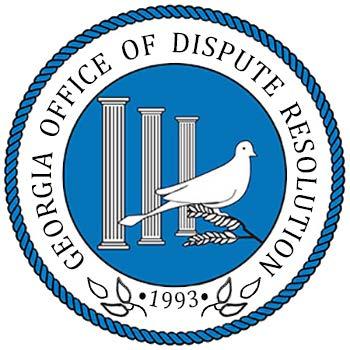
II. Mediation Recording Implications
Pursuant to the Rules, the recording of agreements reached by parties during virtual mediations is not an approved practice and is strictly prohibited by the Rules. Additionally, the recording of a statement that parties have reached an agreement without formalizing the agreement in a signed document is also ill advised Both instances breach the confidentiality provisions of the Rules and is inadmissible in subsequent judicial proceedings. The recording of mediations, whether conducted in person or virtually, violates the confidentiality provisions of the Supreme Court’s Alternative Dispute Resolution Rules, and the Georgia Uniform Mediation Act. Furthermore, mediation agreements, even if recorded, are not binding absent a written agreement.
The Supreme Court Alternative Dispute Resolution Rules, Appendix C, Chapter 1.A., Section II. Confidentiality, states as follows:
“
Confidentiality is the attribute of the mediation process which promotes candor and full disclosure. Without the protection of confidentiality, parties would be unwilling to communicate freely, and the discussion
1
221
necessary to resolve disputes would be seriously curtailed. Statements made during the conference and documents and other material, including a mediator’s notes, generated in connection with the conference are not subject to disclosure or discovery and may not be used in subsequent administrative or judicial proceedings. A written and executed agreement or memorandum of an agreement resulting from a court annexed or court referred ADR process is discoverable unless the parties agree otherwise in writing. Any exceptions to the promise of confidentiality such as a statutory duty to report certain information must be revealed to the parties in the opening statement. Information given to a mediator in confidence by one party must never be revealed to another party absent permission of the first party.”
Similarly, the Georgia Uniform Mediation Act states in O.C.G.A. §9 17 3:
“Except as provided in Code Section 9 17 6, a mediation communication is privileged as provided in subsection (b) of this code section and is not subject to or admissible as evidence in a proceeding unless waived or precluded as provided by Code Section 9 17 4.
In a proceeding, the following privileges apply: 1) a mediation party may refuse to disclose and may prevent any other person from disclosing a mediation communication; 2) a mediator may refuse to disclose a mediation communication and may prevent any other person from disclosing a mediation communication of the mediator; and 3) a nonparty participant may refuse to disclose and may prevent any other person from disclosing a mediation communication of the nonparty participant.”
Additionally, the Supreme Court Alternative Dispute Resolution Rules, Section VII. Confidentiality and Immunity, states as follows:
“
A written and executed agreement or memorandum of agreement resulting from a court annexed or court referred ADR process is not subject to the confidentiality described above . . . [N]either the neutral nor any observer present with permission of the parties in a court annexed or court referred ADR process may be subpoenaed or otherwise required to testify concerning a mediation or case evaluation or early neutrals evaluation conference or, unless otherwise provided by court ADR rules, a non binding arbitration, in any subsequent administrative or judicial proceeding. A neutral’s notes or records are not subject to discovery.”
2
222
O.C.G.A. §9 17 5(a)(1) states:
“There shall be no privilege under code section 9 17 3 for a mediation communication that is in an agreement evidenced by a record signed by all parties to an agreement.”
O.C.G.A. §9 17 6(a) states:
“Except as provided in subsection (b) of this code section, a mediator shallnotmakeareport,assessment,evaluation,recommendation,finding or other communication regarding a mediation to a court, administrative agency, or other authority that may make a ruling on the dispute that is the subject of the mediation.”
Lastly, O.C.G.A. §9 17 7 states:
“Notwithstandingany provision ofthischapterto thecontrary,mediation and mediation communications, and such related conduct, shall not be admissible or subject to disclosure, except to the extent agreed to by the parties in writing or as provided in Code Section 24 4 408 or other law or court required rule of this state, unless such communications are subject to Article 4 of Chapter 18 of Title 50, relating to open records.”
Recording virtual mediations to formalize a mediated agreement does not replace a written agreement thatis bindingand admissiblein court.Astherules clearlystateabove, statements made during the mediation conference and documents and other material, including the mediator’s notes generated in relation to the mediation, are not discoverable and may not be used in a subsequent judicial proceeding. A written and executed agreement or a memorandum of an agreement resulting from a court annexed or court referred ADR process is discoverable unless the parties agree otherwise in writing. Recording the parties orally stating that they have reached a mediated agreement does not bind the parties without a written, formal document memorializing the agreement.
III. Guidance
As stated in the Rules, confidentiality is the attribute in mediations that promotes candor and disclosure from all parties. Confidentiality and protection from disclosure in judicial proceedings are crucial for a successful mediation, allowing parties the confidence that what is said will not extend beyond the mediation, with few exceptions outlined in the mediator’s guidelines. It is extremely important that parties feel they may enter into agreements freely and voluntarily. If mediators record that parties have reached a mediated agreement without formalizing that agreement in writing, then there is no agreement and no purpose for the recording. For those cases wherein an agreement at mediation is reached, parties can only be assured of a formalized, enforceabledocument ifanagreementormemorandum ofunderstanding issignedat themediation session. Since the rules clearly state that only written agreements are allowed to be used in
3
223
subsequent judicial proceedings, it makes little sense for mediators to record an oral agreement. Parties are never required to reach an agreement and if a written agreement is not possible at the mediation session, the parties are free to enter into an agreement at a later time. In the event one of the parties needs to enforce an agreement reached at mediation, a recording of a mediated agreement could not be used in place of a written agreement. Without a signed written agreement, there is no admissible record of any agreement reached at mediation, and any production of a recording violates the confidentiality provision of the Rules.
There are many benefits to virtual mediations, including accessibility and flexibility (parties can participate in mediation from any location at any time), as well as monetary (travel costs are reduced) While mediations may occur in different formats (in person, virtual, hybrid, etc.), the Rules still apply. Unless there is a written agreement, the recording of a mediated agreement or the recorded statement that the parties have an agreement do not circumvent the Rules and will not be admissible to replace a written agreement in court. Confidentiality is the cornerstone of the mediation process, and parties will be less apt to fully negotiate if they fear that their otherwise confidential statements may be used against them after the mediation is over. The recording of mediations is prohibited, and any violations of the Rules will be addressed by the Supreme Court Commission’s Committee on Ethics.
4
224
THANK YOU FOR ATTENDING
THE 29TH ANNUAL ADR INSTITUTE!
Continuing Education Information
This event is approved for 6 hours of continuing education for registered neutrals in Georgia and 6 hours of continuing legal education (including 1 ethics, 1 trial, and 1 professionalism hour) for Georgia attorneys.
Need CJE hours? Reach out and let us know: ADRInstitute@georgiacourts.gov. We will do our best to help judges facilitate receiving CJE hours.
Attorneys barred in other states may qualify for CLE credit. Please email a list of your specific needs to ADRInstitute@georgiacourts.gov, and we will be happy to assist you if we can.
WE WANT TO HEAR FROM YOU
Two surveys will be sent to attendees following the event: one for the event sessions/overall experience, and one specific to the professionalism session.
Questions? Email us at ADRInstitute@georgiacourts.gov
POSTFACE
29THANNUALADRINSTITUTE NOVEMBER 18, 2022 GEORGIA TECH HOTEL AND CONFERENCE CENTER
225
Commission Members
Chair: Judge M. Cindy Morris
GEORGIA COMMISSION ON DISPUTE RESOLUTION

244 WASHINGTON STREET, S.W., SUITE 300 ATLANTA, GEORGIA 30334-5900
OFFICE: 404-463-3808 FAX: 404-463-3790 WEB:godr.org
Members: Justice John J. Ellington
N.Staten Bitting, Jr., Esq. Judge Jane C. Barwick Hon. Rebecca Crumrine Rieder
Judge Clarence Cuthpert, Jr. Mary S. Donovan, Esq. Judge C. Andrew Fuller Herbert H. (Hal) Gray, III, Esq. Melissa C. Heard, MSSW Nicole W. Hull, Esq.
Representative Rob Leverett Judge Carrie B. Markham Judge Amanda H. Mercier Patrick T. O’Connor, Esq. Edith B. Primm, Esq. Judge Renata D. Turner Randall Weiland
Peggy McCoy Wilson
GODR Staff
Executive Director: Tracy B. Johnson
Deputy Director: Karlie A. Sahs
Current as of November 1, 2022
226
COMMITTEES
Current as of November 1, 2022
COMMITTEE ON BUDGET/PERSONNEL
Judge C. Andrew Fuller, Committee Chair
Judge Jane C. Barwick
Judge Clarence Cuthpert, Jr.
Judge Amanda H. Mercier
Judge M. Cindy Morris
Judge Renata D. Turner
COMMITTEE ON ETHICS
Judge Renata D. Turner, Committee Chair
Judge Jane C. Barwick
Hon. Rebecca Crumrine Rieder
Mary S. Donovan, Esq.
Judge Carrie B. Markham
Patrick T. O’Connor, Esq.
COMMITTEE ON TRAINING AND CREDENTIALS
Melissa C. Heard, MSSW, Committee Co-Chair
Nicole W. Hull, Esq., Committee Co-Chair
Herbert H. (Hal) Gray, III, Esq.
Raytheon Rawls, Esq., Trainer, UGA – J.W. Fanning Institute
DOMESTIC VIOLENCE RULES COMMITTEE
Peggy McCoy Wilson, Committee Chair
Judge M. Cindy Morris
Randall Weiland
Niki Lemeshka, Program Manager, Georgia Commission on Family Violence
Raytheon Rawls, Esq., Trainer, UGA – J.W. Fanning Institute
Caitlin Livingston, Program Director, DeKalb County Courts Dispute Resolution Center
Valerie Lyle, Program Director, 9th Judicial Administrative District ADR Program
Liesl Owen, Program Director, 6th Judicial Administrative District ADR Program
OUTREACH COMMITTEE
Herbert H. (Hal) Gray, III, Esq., Chair

N.Staten Bitting, Jr., Esq.
Judge Clarence Cuthpert, Jr.
Mary S. Donovan, Esq.
Randall Weiland
Peggy McCoy Wilson
Rita Carroll, Program Director, Carroll County ADR Program
Valerie Lyle, Program Director, 9th Judicial Administrative District ADR Program
GEORGIA COMMISSION ON DISPUTE RESOLUTION
______________
227
Code of Georgia Constitution of the State of Georgia
ARTICLE VI. Judicial Branch SECTION IX. General Provisions
Paragraph I Administration of the judicial system; uniform court rules; advice and consent of councils.
The judicial system shall be administered as provided in this Paragraph. Not more than 24 months after the effective date hereof, and from time to time thereafter by amendment, the Supreme Court shall, with the advice and consent of the council of the affected class or classes of trial courts, by order adopt and publish uniform court rules and record-keeping rules which shall provide for the speedy, efficient, and inexpensive resolution of disputes and prosecutions. Each council shall be comprised of all of the judges of the courts of that class.
228
The Georgia Court-Connected Alternative Dispute Resolution Act
15 23-1 Short title.
15 23-2 Definitions.
15 23-3 Board of Trustees of County Fund for the Administration of Alternative Dispute Resolution Programs.
15 23-4 Secretary-treasurers of boards; creation of office; selection; duties.
15 23-5 Secretary-treasurers of boards; surety bonds.
15 23-6 Powers and duties of boards.
15 23-7 Collection of additional legal costs in civil actions for purposes of providing court-connected or court-referred alternative dispute resolution programs.
15 23-8 Funds; deposit into special account; expenditure and investment.
15 23-9 Acceptance of things of value by board for holding or investment on behalf of program.
15 23 10 Determination of need as prerequisite to establishment of program.
15 23 11 Compensation of nonvolunteer neutrals by the parties.
15 23 12 Contracting by boards of several counties to combine funds; secretary-treasurer for combined fund; chairperson.
CODE OF GEORGIA
TITLE 15. COURTS
CHAPTER 23. COURT-CONNECTED ALTERNATIVE DISPUTE RESOLUTION
15 23 1 Short title.
This chapter shall be known and may be cited as the "Georgia Court-connected Alternative Dispute Resolution Act."
(Code 1981, §15-23-1, enacted by Ga. L. 1993, p. 1529, § 1; Ga. L. 1997, p. 874, § 1.)
15 23-2 Definitions.
Definitions.
As used in this chapter, the term:
(1) "Alternative dispute resolution" or "ADR" refers to any method other than litigation for resolution of disputes. Alternative dispute resolution methods include mediation, arbitration, early case evaluation or early neutral evaluation, summary jury trial, and minitrial.
(2) "Board" means the board of trustees of a Fund for the Administration of Alternative Dispute Resolution Programs created by Code Section 15-23 3.
(3) "Fund" means one or more funds created pursuant to Code Section 15-23 8.
(Code 1981, §15-23-2, enacted by Ga. L. 1993, p. 1529, § 1.)
229
15 23-3 Board of Trustees of County Fund for the Administration of Alternative Dispute Resolution Programs.
(a) There is created in each county in this state a board to be known as the Board of Trustees of the _____________________ County Fund for the Administration of Alternative Dispute Resolution Programs. The board shall consist of:
(1) The chief judge of the superior court of the circuit in which the county is located, or the superior court judge with the longest service if there is no chief judge, or a superior court judge designated by the chief judge or the judge with the longest service;
(2) The chief judge of the state court, if any, or the state court judge with the longest service if there is no chief judge, or a state court judge designated by the chief judge or the judge with the longest service;
(3) The judge of the probate court;
(4) The presiding judge of the juvenile court, if any, or a juvenile court judge designated by that judge;
(5) The chief magistrate or a magistrate designated by the chief magistrate;
(6) The clerk of the superior court; and
(7) One practicing attorney appointed by other members of the board.
(b) The superior court judge on the board shall serve as chairperson of the board. The member who is the practicing attorney shall serve at the pleasure of the other members of the board. All members shall serve without compensation. A majority of the members of the board shall constitute a quorum for the transaction of all business that may come before the board.
(c) A member who represents a court which does not participate in the alternative dispute resolution program and against whose litigants the additional costs authorized by this chapter are not assessed may attend all meetings but will be a nonvoting member of the board. The presence of such a member shall not be counted in determining the constitution of a quorum.
(d) Members of any board of trustees of any county fund and other personnel acting in a policy-making capacity shall be immune from any action arising from any act, statement, decision, or omission relating to the implementation of the purposes of this chapter unless the act, statement, decision, or omission is:
(1) Grossly negligent and made with malice; or
(2) In willful disregard of the safety or property of any party to the alternative dispute process.
(Code 1981, § 15-23-3, enacted by Ga. L. 1993, p. 1529, § 1; Ga. L. 1997, p. 874, § 2.)
15 23-4 Secretary-treasurers of boards; creation of office; selection; duties.
There is created an office to be known as secretary-treasurer of the board of trustees of the County Fund for the Administration of Alternative Dispute Resolution Programs in each county. The secretary-treasurer shall be selected and appointed by the board and shall serve at the pleasure of the board. The board may appoint one of its own members as secretary-treasurer or, in its discretion, may designate some other person to act as secretary-treasurer of the board. The secretary-treasurer of the board shall perform the duties provided for the treasurer in this chapter.
(Code 1981, § 15-23-4, enacted by Ga. L. 1993, p. 1529, § 1.)
15-23-5 Secretary-treasurers of boards; surety bonds.
230
The secretary-treasurer of the board shall give a good and sufficient surety bond, payable to the fund in such an amount as may be determined by the board, to account faithfully for all funds received and disbursed by him or her. The premium on the bond shall be paid out of the fund in such county. A secretary-treasurer who is designated by a combined board of several counties as provided by Code Section 15-23-12 may satisfy the bonding requirement with one bond. If the secretary-treasurer is already bonded by virtue of being a state employee, such a bond as a state employee will satisfy the bonding requirement.
(Code 1981, § 15-23-5, enacted by Ga. L. 1993, p. 1529, 1; Ga. L. 1997, p. 874, § 3.)
15 23-6 Powers and duties of boards.
(a) The board is given the following powers and duties:
(1) To provide for the collection of all money provided for in this chapter;
(2) To manage, control, and direct such fund and the expenditures made therefrom;
(3) To distribute the moneys coming into the fund in such manner and subject to such terms and limitations as the board, in its discretion, shall determine will best meet the purpose of this chapter in promoting the alternative resolution of disputes and the efficient administration of justice;
(4) To contract for the investment, pooling, and expenditure of funds;
(5) To adopt such rules and regulations as may be necessary to manage such fund and provide for such programs;
(6) To keep records of all its meetings and proceedings; and
(7) To exercise all other powers necessary for the proper administration of the funding mechanism provided for in this chapter.
(b) In addition to the powers and duties listed in subsection (a) of this Code section, the board is authorized in its discretion to create a nonprofit corporation for the purpose of administering an alternative dispute resolution program and soliciting funding for such a program from any lawful source. The trustees or directors of any such nonprofit corporation shall be appointed by the board for terms not to exceed three years.
(Code 1981, § 15-23-6, enacted by Ga. L. 1993, p. 1529, § 1; Ga. L. 1997, p. 874, § 4.)
(a) For the purposes of providing court-connected or court-referred alternative dispute resolution programs, a sum not to exceed $10.00, in addition to all other legal costs, may be charged and collected in each civil action or case filed in the superior, state, probate, and magistrate courts and other courts within the county that have the same powers and jurisdiction as state or magistrate courts.
(b) A case, within the meaning of this Code section, shall mean and be construed as any matter which is docketed upon the official dockets of the enumerated courts and to which a number is assigned, whether such matter is contested or not.
(c) The amount, if any, to be collected in each case shall be fixed in an amount not to exceed the applicable amount set out in subsection (a) of this Code section by the chief judge of the superior court or, if there is no chief judge, by the superior court judge with the longest service, who shall, after advising and notifying the chairperson of the county governing authority, order the clerk to collect said fees and remit them to the treasurer of the county fund for the administration of alternative dispute resolution programs. No such additional costs shall be charged and collected unless the chief judge of the superior court or such chief judge's designee, or if there is no chief judge, the superior court judge with the longest service or such judge's designee first determines that a need exists for an alternative dispute resolution program in one or more of the courts within the county. The chief judge of the superior court or the designee of the chief judge or, if there is no chief judge, the superior court judge with the longest service or the designee of such judge may
15 23-7 Collection of additional legal costs in civil actions for purposes of providing court-connected or court-referred alternative dispute resolution programs.
231
propose, as to a given court, the collection of an amount exceeding $7.00, but in no event to exceed the applicable amount set out in subsection (a) of this Code section; provided, however, that approval of the board member representing the affected court is necessary before imposition upon litigants of that court of costs authorized by this chapter exceeding $7.00.
(d) The clerk of each and every such court in such counties shall collect such fees and remit the same to the treasurer of the board of the county in which the case was brought, on the first day of each month. No change in the amount collected pursuant to this Code section may be made within a period of 12 months from the date of a previous change.
(e) Juvenile court supervision fees collected pursuant to Code Section 15-11-37 may be used for mediation services provided by court programs pursuant to this chapter.
(Code 1981, § 15 23-7, enacted by Ga. L. 1993, p. 1529, 1; Ga. L. 1997, p. 874, § 4; Ga. L. 1998, p. 128, § 15; Ga. L. 2000, p. 20, § 4; Ga. L. 2013, p. 294, § 4-5/HB 242; Ga. L. 2014, p. 166, § 1/HB 438.)
15 23-8 Funds; deposit into special account; expenditure and investment.
(a) The board shall have control of the funds provided for in this chapter. All funds received shall be deposited in a special account to be known as the _______________ County Fund for the Administration of Alternative Dispute Resolution Programs. The board shall have authority to expend the funds in accordance with this chapter and to invest any of the funds so received in any investments which are legal investments for fiduciaries in this state.
(b) Boards shall comply with and be subject to the audit requirements of Code Section 36-81 7.
(Code 1981, § 15-23-8, enacted by Ga. L. 1993, p. 1529, § 1; Ga. L. 1997, p. 874, § 4.)
15 23-9 Acceptance of things of value by board for holding or investment on behalf of program.
The board may take, by gift, grant, devise, or bequest, any money, real or personal property, or other thing of value and may hold or invest the same for the uses and purposes of the provision and operation of alternative dispute resolution programs.
(Code 1981, § 15-23-9, enacted by Ga. L. 1993, p. 1529, § 1.)
15-23-10 Determination of need as prerequisite to establishment of program.
No alternative dispute resolution program shall be established for any court unless the judge or a majority of the judges of such court determine that there is a need for such program in that court. The funding mechanism set forth in this chapter shall be available to any court, including the juvenile court, which, having determined that a court-annexed or courtreferred alternative dispute resolution program would make a positive contribution to the ends of justice in that court, has developed a program meeting the standards of the Supreme Court of Georgia Alternative Dispute Resolution Rules and appendices. Pursuant to the standards set forth in the Supreme Court of Georgia Alternative Dispute Resolution Rules and appendices, the funding mechanism set forth in this chapter shall be available to court programs in which cases are screened by the judge or by the program director under the supervision of the judge on a case-by-case basis to determine whether:
(1) The case is appropriate for the process;
(2) The parties are able to compensate the neutral if compensation is required; and
(3) A need for emergency relief makes referral inappropriate until the request for relief is heard by the court.
(Code 1981, § 15-23-10, enacted by Ga. L. 1993, p. 1529, § 1; Ga. L. 1997, p. 874, § 5; Ga. L. 2013, p. 294, § 4-6/HB 242.)
232
15 23 11 Compensation of nonvolunteer neutrals by the parties.
(a) Under guidelines promulgated by the Georgia Commission on Dispute Resolution, a court may set an hourly rate for compensation of nonvolunteer neutrals by the parties. Such costs shall be predicated upon the complexity of the litigation, the skill level needed by the neutral, and the litigants' ability to pay.
(b) Under guidelines promulgated by the Georgia Commission on Dispute Resolution, a court may set a user's fee for alternative dispute resolution processes.
(Code 1981, § 15-23-11, enacted by Ga. L. 1993, p. 1529, § 1.)
15 23 12 Contracting by boards of several counties to combine funds; secretary-treasurer for combined fund; chairperson.
Notwithstanding any other provision of this chapter, the board of trustees of each county fund is authorized by contract to combine such fund with the fund of any other county or counties within the same judicial circuit, within the same administrative district, or in any other combination which would foster an efficient use of available resources. Any such combined fund created by any such contract shall be administered by a board of trustees which shall be composed of the judicial members and the clerks who are members of the boards of trustees of each participating county fund without the participating attorney members thereof but with one practicing attorney appointed by the members of the combined board. In the event two or more county funds are combined, the board of trustees of the combined fund may appoint a secretarytreasurer for the combined fund who shall perform such duties as may be provided by the combined board of trustees and who shall give bond in the same manner as provided by Code Section 15-23-5. The combined board shall be chaired by the chairperson of one of the constituent county boards elected by the combined board as provided by contract. In the event two or more boards combine as provided in this Code section, the judges of the courts within such combined territory are authorized to combine programs for such courts to provide for the most efficient use of available resources in providing alternative dispute resolution programs.
(Code 1981, § 15-23-12, enacted by Ga. L. 1993, p. 1529, § 1.)
233
Juvenile Court Supervision Fee Legislation
Section 15-11-37 Supervision fees (effective January 1, 2014)
(a) The court may collect supervision fees from those who are placed under the court's formal or informal supervision in order that the court may use those fees to expand the provision of the following types of ancillary services:
(1) Housing in nonsecure residential facilities;
(2) Educational services, tutorial services, or both;
(3) Counseling and diagnostic testing;
(4) Mediation;
(5) Transportation to and from court ordered services;
(6) Truancy intervention services;
(7) Restitution programs;
(8) Job development or work experience programs;
(9) Community services; and
(10) Any other additional programs or services needed to meet the best interests, development, and rehabilitation of a child.
(b) (1) The juvenile court may order each delinquent child or child in need of services who receives supervision to pay to the clerk of the court:
(A) An initial court supervision user's fee of not less than $10.00 nor more than $200.00; and
(B) A court supervision user's fee of not less than $2.00 nor more than $30.00 for each month that a child receives supervision.
(2) A child and his or her parent, guardian, or legal custodian may be jointly and severally liable for the payment of fees set forth in paragraph (1) of this subsection and shall be subject to the enforcement procedure in subsection (c) of Code Section 15-11-36. The judge shall provide that any such fees shall be imposed on such terms and conditions as shall assure that the funds for the payment are from moneys earned by such child. All moneys collected by the clerk under this subsection shall be transferred to the county treasurer, or such other county official or employee who performs duties previously performed by the treasurer, who shall deposit the moneys into a county supplemental juvenile services fund. The governing authority of the county shall appropriate moneys from the county supplemental juvenile services fund to the juvenile court for the court's discretionary use in providing community services described in subsection (a) of this Code section to child offenders. These funds shall be administered by the county and the court may draw upon them by submitting invoices to the county. The county supplemental juvenile services fund may be used only for these services. Any moneys remaining in the
234
fund at the end of the county fiscal year shall not revert to any other fund but shall continue in the county supplemental juvenile services fund. The county supplemental juvenile services fund may not be used to replace other funding of services.
(c) The clerk of the court shall be responsible for collections of fees as ordered by the court.
(d) For the purpose of this Code section, the term "legal custodian" shall not be interpreted or construed to include the department or DJJ.
(Code 1981, § 15-11-37, enacted by Ga. L. 2013, p. 294, § 1-1/HB 242.)
235
CODE OF GEORGIA
TITLE 19. DOMESTIC RELATIONS
CHAPTER 7. PARENT AND CHILD RELATIONSHIP GENERALLY ARTICLE 1. GENERAL PROVISIONS
19-7-5 Reporting of child abuse; when mandated or authorized; content of report; to whom made; immunity from liability; report based upon privileged communication; penalty for failure to report.
(a) The purpose of this Code section is to provide for the protection of children whose health and welfare are adversely affected and further threatened by the conduct of those responsible for their care and protection. It is intended that the mandatory reporting of such cases will cause the protective services of the state to be brought to bear on the situation in an effort to prevent further abuses, to protect and enhance the welfare of these children, and to preserve family life wherever possible. This Code section shall be liberally construed so as to carry out the purposes thereof.
(b) As used in this Code section, the term:
(1) "Abused" means subjected to child abuse.
(2) "Child" means any person under 18 years of age.
(3) "Child abuse" means:
(A) Physical injury or death inflicted upon a child by a parent or caretaker thereof by other than accidental means; provided, however, physical forms of discipline may be used as long as there is no physical injury to the child;
(B) Neglect or exploitation of a child by a parent or caretaker thereof;
(C) Sexual abuse of a child; or
(D) Sexual exploitation of a child.
However, no child who in good faith is being treated solely by spiritual means through prayer in accordance with the tenets and practices of a recognized church or religious denomination by a duly accredited practitioner thereof shall, for that reason alone, be considered to be an "abused" child.
(3.1) "Sexual abuse" means a person's employing, using, persuading, inducing, enticing, or coercing any minor who is not that person's spouse to engage in any act which involves:
(A) Sexual intercourse, including genital-genital, oral-genital, anal-genital, or oral-anal, whether between persons of the same or opposite sex;
(B) Bestiality;
236
(C) Masturbation;
(D) Lewd exhibition of the genitals or pubic area of any person;
(E) Flagellation or torture by or upon a person who is nude;
(F) Condition of being fettered, bound, or otherwise physically restrained on the part of a person who is nude;
(G) Physical contact in an act of apparent sexual stimulation or gratification with any person's clothed or unclothed genitals, pubic area, or buttocks or with a female's clothed or unclothed breasts;
(H) Defecation or urination for the purpose of sexual stimulation; or
(I) Penetration of the vagina or rectum by any object except when done as part of a recognized medical procedure.
"Sexual abuse" shall not include consensual sex acts involving persons of the opposite sex when the sex acts are between minors or between a minor and an adult who is not more than five years older than the minor. This provision shall not be deemed or construed to repeal any law concerning the age or capacity to consent.
(4) "Sexual exploitation" means conduct by a child's parent or caretaker who allows, permits, encourages, or requires that child to engage in:
(A) Prostitution, as defined in Code Section 16-6-9; or
(B) Sexually explicit conduct for the purpose of producing any visual or print medium depicting such conduct, as defined in Code Section 16-12-100.
(c) (1) The following persons having reasonable cause to believe that a child has been abused shall report or cause reports of that abuse to be made as provided in this Code section:
(A) Physicians licensed to practice medicine, interns, or residents;
(B) Hospital or medical personnel;
(C) Dentists;
(D) Licensed psychologists and persons participating in internships to obtain licensing pursuant to Chapter 39 of Title 43;
(E) Podiatrists;
(F) Registered professional nurses or licensed practical nurses licensed pursuant to Chapter 24 of Title 43;
237
(G) Professional counselors, social workers, or marriage and family therapists licensed pursuant to Chapter 10A of Title 43;
(H) School teachers;
(I) School administrators;
(J) School guidance counselors, visiting teachers, school social workers, or school psychologists certified pursuant to Chapter 2 of Title 20;
(K) Child welfare agency personnel, as that agency is defined pursuant to Code Section 495-12;
(L) Child-counseling personnel;
(M) Child service organization personnel; or
(N) Law enforcement personnel.
(2) If a person is required to report abuse pursuant to this subsection because that person attends to a child pursuant to such person's duties as a member of the staff of a hospital, school, social agency, or similar facility, that person shall notify the person in charge of the facility, or the designated delegate thereof, and the person so notified shall report or cause a report to be made in accordance with this Code section. A staff member who makes a report to the person designated pursuant to this paragraph shall be deemed to have fully complied with this subsection.
(d) Any other person, other than one specified in subsection (c) of this Code section, who has reasonable cause to believe that a child is abused may report or cause reports to be made as provided in this Code section.
(e) An oral report shall be made as soon as possible by telephone or otherwise and followed by a report in writing, if requested, to a child welfare agency providing protective services, as designated by the Department of Human Resources, or, in the absence of such agency, to an appropriate police authority or district attorney. If a report of child abuse is made to the child welfare agency or independently discovered by the agency, and the agency has reasonable cause to believe such report is true or the report contains any allegation or evidence of child abuse, then the agency shall immediately notify the appropriate police authority or district attorney. Such reports shall contain the names and addresses of the child and the child's parents or caretakers, if known, the child's age, the nature and extent of the child's injuries, including any evidence of previous injuries, and any other information that the reporting person believes might be helpful in establishing the cause of the injuries and the identity of the perpetrator. Photographs of the child's injuries to be used as documentation in support of allegations by hospital staff, physicians, law enforcement personnel, school officials, or staff of legally mandated public or private child protective agencies may be taken without the permission of the child's parent or guardian; provided, however, that any photograph taken pursuant to this Code section shall, if reasonably possible, be taken in a manner which shall not reveal the identity of the subject. Such photograph shall be made available as soon as possible to the chief welfare agency providing protective services and to the appropriate police authority.
238
(f) Any person or persons, partnership, firm, corporation, association, hospital, or other entity participating in the making of a report or causing a report to be made to a child welfare agency providing protective services or to an appropriate police authority pursuant to this Code section or any other law or participating in any judicial proceeding or any other proceeding resulting therefrom shall in so doing be immune from any civil or criminal liability that might otherwise be incurred or imposed, provided such participation pursuant to this Code section or any other law is made in good faith. Any person making a report, whether required by this Code section or not, shall be immune from liability as provided in this subsection.
(g) Suspected child abuse which is required to be reported by any person pursuant to this Code section shall be reported notwithstanding that the reasonable cause to believe such abuse has occurred or is occurring is based in whole or in part upon any communication to that person which is otherwise made privileged or confidential by law.
(h) Any person or official required by subsection (c) of this Code section to report a suspected case of child abuse who knowingly and willfully fails to do so shall be guilty of a misdemeanor.
(i) A report of child abuse or information relating thereto and contained in such report, when provided to a law enforcement agency or district attorney pursuant to subsection (e) of this Code section or pursuant to Code Section 49-5-41, shall not be subject to public inspection under Article 4 of Chapter 18 of Title 50 even though such report or information is contained in or part of closed records compiled for law enforcement or prosecution purposes unless:
(1) There is a criminal or civil court proceeding which has been initiated based in whole or in part upon the facts regarding abuse which are alleged in the child abuse reports and the person or entity seeking to inspect such records provides clear and convincing evidence of such proceeding; or
(2) The superior court in the county in which is located the office of the law enforcement agency or district attorney which compiled the records containing such reports, after application for inspection and a hearing on the issue, shall permit inspection of such records by or release of information from such records to individuals or entities who are engaged in legitimate research for educational, scientific, or public purposes and who comply with the provisions of this paragraph. When those records are located in more than one county, the application may be made to the superior court of any one of such counties. A copy of any application authorized by this paragraph shall be served on the office of the law enforcement agency or district attorney which compiled the records containing such reports. In cases where the location of the records is unknown to the applicant, the application may be made to the Superior Court of Fulton County. The superior court to which an application is made shall not grant the application unless:
(A) The application includes a description of the proposed research project, including a specific statement of the information required, the purpose for which the project requires that information, and a methodology to assure the information is not arbitrarily sought;
(B) The applicant carries the burden of showing the legitimacy of the research project; and
(C) Names and addresses of individuals, other than officials, employees, or agents of agencies receiving or investigating a report of abuse which is the subject of a report, shall
239
be deleted from any information released pursuant to this subsection unless the court determines that having the names and addresses open for review is essential to the research and the child, through his or her representative, gives permission to release the information.
(Code 1933, § 74-111, enacted by Ga. L. 1965, p. 588,§ 1; Ga. L. 1968, p. 1196, 1; Ga. L. 1973, p. 309, § 1; Ga. L. 1974, p. § 438, 1; Ga. L. 1977, p. 242, §§ 1-3; Ga. L. 1978, p. 2059, §§ 1, 2; Ga. L. 1980, p. 921, § 1; Ga. L. 1981, p. 1034, §§ 1-3; Ga. L. 1988, p. 1624, § 1; Ga. L. 1990, p. 1761, § 1; Ga. L. 1993, p. 1695, §§ 1, 1.1; Ga. L. 1994, p. 97, § 19; Ga. L. 1999, p. 81, § 19.)
240
Georgia Arbitration Code
9-9-1 Short title.
9-9-2 Applicability; exclusive method.
9-9-3 Effect of arbitration agreement.
9-9-4 Application to court; venue; service of papers; scope of court's consideration; application for order of attachment or preliminary injunction.
9-9-5 Limitation of time as bar to arbitration.
9-9-6 Application to compel or stay arbitration; demand for arbitration; consolidation of proceedings.
9-9-7 Appointment of arbitrators.
9-9-8 Time and place for hearing; notice; application for prompt hearing; conduct of hearing; right to counsel; record; waiver.
9-9-9 Power of subpoena; enforcement; use of discovery; opportunity to examine documents; compensation of witnesses.
9-9-10 Award to be in writing; copies furnished; time of making award; waiver.
9-9-11 When award changed; application for change; objection thereto; time for disposition of application.
9-9-12 Confirmation of award by court.
9-9-13 Vacation of award by court; application; grounds; rehearing; appeal of order.
9-9-14 Modification of award by court; application; grounds; subsequent confirmation of award.
9-9-15 Judgment on award.
9-9-16 Appeals authorized.
9-9-17 Arbitrators' fees and expenses.
9-9-18 Commencement or continuation of proceedings upon death or incompetency of party.
CODE OF GEORGIA
TITLE 9. CIVIL PRACTICE
CHAPTER 9. ARBITRATION
ARTICLE 1. GENERAL PROVISIONS PART 1. ARBITRATION CODE
241
9-9-1 Short title.
This part shall be known and may be cited as the "Georgia Arbitration Code."
(Code 1933, § 7-301, enacted by Ga. L. 1978, p. 2270, § 1; Code 1981, 9-9-80; Code 1981, 9-9-1, as redesignated by Ga. L. 1988, p. 903, § 1.)
9-9-2 Applicability; exclusive method.
(a) Part 3 of Article 2 of this chapter, as it existed prior to July 1, 1988, applies to agreements specified in subsection (b) of this Code section made between July 1, 1978, and July 1, 1988. This part applies to agreements specified in subsection (b) of this Code section made on or after July 1, 1988, and to disputes arising on or after July 1, 1988, in agreements specified in subsection (c) of this Code section.
(b) Part 3 of Article 2 of this chapter, as it existed prior to July 1, 1988, shall apply to construction contracts, contracts of warranty on construction, and contracts involving the architectural or engineering design of any building or the design of alterations or additions thereto made between July 1, 1978, and July 1, 1988, and on and after July 1, 1988, this part shall apply as provided in subsection (a) of this Code section and shall provide the exclusive means by which agreements to arbitrate disputes arising under such contracts can be enforced.
(c) This part shall apply to all disputes in which the parties thereto have agreed in writing to arbitrate and shall provide the exclusive means by which agreements to arbitrate disputes can be enforced, except the following, to which this part shall not apply:
(1) Agreements coming within the purview of Article 2 of this chapter, relating to arbitration of medical malpractice claims;
(2) Any collective bargaining agreements between employers and labor unions representing employees of such employers;
(3) Any contract of insurance, as defined in paragraph (1) of Code Section 33-1-2; provided, however, that nothing in this paragraph shall impair or prohibit the enforcement of or in any way invalidate an arbitration clause or provision in a contract between insurance companies;
(4) Any other subject matters currently covered by an arbitration statute;
(5) Any loan agreement or consumer financing agreement in which the amount of indebtedness is $25,000.00 or less at the time of execution;
(6) Any contract for the purchase of consumer goods, as defined in Title 11, the "Uniform Commercial Code," under subsection (1) of Code Section 11-2-105 and subsection (1) of Code Section 11-9-109;
(7) Any contract involving consumer acts or practices or involving consumer transactions as such terms are defined in paragraphs (2) and (3) of subsection (a) of Code Section 10-1392, relating to definitions in the "Fair Business Practices Act of 1975";
(8) Any sales agreement or loan agreement for the purchase or financing of residential real estate unless the clause agreeing to arbitrate is initialed by all signatories at the time of the execution of the agreement. This exception shall not restrict agreements between or among real estate brokers or agents;
(9) Any contract relating to terms and conditions of employment unless the clause agreeing to arbitrate is initialed by all signatories at the time of the execution of the agreement;
(10) Any agreement to arbitrate future claims arising out of personal bodily injury or wrongful death based on tort.
242
(Code 1933, § 7-302, enacted by Ga. L. 1978, p. 2270, § 1; Ga. L. 1979, p. 393, § 1; Code 1981, 9-9-81; Code 1981, 9-9-2, as redesignated by Ga. L. 1988, p. 903, § 1; Ga. L. 1997, p. 1556, § 1.)
9-9-3 Effect of arbitration agreement.
A written agreement to submit any existing controversy to arbitration or a provision in a written contract to submit any controversy thereafter arising to arbitration is enforceable without regard to the justiciable character of the controversy and confers jurisdiction on the courts of the state to enforce it and to enter judgment on an award.
(Code 1933, 7-303, enacted by Ga. L. 1978, p. 2270, § 1; Code 1981, 9-9-82; Code 1981, 9-9-3, as redesignated by Ga. L. 1988, p. 903, § 1.)
9-9-4 Application to court; venue; service of papers; scope of court's consideration; application for order of attachment or preliminary injunction.
(a) (1) Any application to the court under this part shall be made to the superior court of the county where venue lies, unless the application is made in a pending court action, in which case it shall be made to the court hearing that action. Subsequent applications shall be made to the court hearing the initial application unless the court otherwise directs.
(2) All applications shall be by motion and shall be heard in the manner provided by law and rule of court for the making or hearing of motions, provided that the motion shall be filed in the same manner as a complaint in a civil action.
(b) Venue for applications to the court shall lie:
(1) In the county where the agreement provides for the arbitration hearing to be held; or (2) If the hearing has already been held, in the county where it was held; or (3) In the county where any party resides or does business; or (4) If there is no county as described in paragraph (1), (2), or (3) of this subsection, in any county.
(c) (1) A demand for arbitration shall be served on the other parties by registered or certified mail or statutory overnight delivery, return receipt requested.
(2) The initial application to the court shall be served on the other parties in the same manner as a complaint under Chapter 11 of this title.
(3) All other papers required to be served by this part shall be served in the same manner as pleadings subsequent to the original complaint and other papers are served under Chapter 11 of this title.
(d) In determining any matter arising under this part, the court shall not consider whether the claim with respect to which arbitration is sought is tenable nor otherwise pass upon the merits of the dispute.
(e) The superior court in the county in which an arbitration is pending, or, if not yet commenced, in a county specified in subsection (b) of this Code section, may entertain an application for an order of attachment or for a preliminary injunction in connection with an
243
arbitrable controversy, but only upon the ground that the award to which the applicant may be entitled may be rendered ineffectual without such provisional relief.
(Code 1933, 7-305, enacted by Ga. L. 1978, p. 2270, § 1; Code 1981, 9-9-84 NrepealedV; Code 1981, 9-9-4, as redesignated by Ga. L. 1988, p. 903, § 1; Ga. L. 2000, p. 1589, § 3.)
9-9-5 Limitation of time as bar to arbitration.
(a) If a claim sought to be arbitrated would be barred by limitation of time had the claim sought to be arbitrated been asserted in court, a party may apply to the court to stay arbitration or to vacate the award, as provided in this part. The court has discretion in deciding whether to apply the bar. A party waives the right to raise limitation of time as a bar to arbitration in an application to stay arbitration by that party's participation in the arbitration.
(b) Failure to make this application to the court shall not preclude a party from asserting before the arbitrators limitation of time as a bar to the arbitration. The arbitrators, in their sole discretion, shall decide whether to apply the bar. This exercise of discretion shall not be subject to review of the court on an application to confirm, vacate, or modify the award except upon the grounds hereafter specified in this part for vacating or modifying an award.
(Code 1933, 7-306, enacted by Ga. L. 1978, p. 2270, § 1; Code 1981, 9-9-85; Code 1981, 9-9-5, as redesignated by Ga. L. 1988, p. 903, § 1.)
9-9-6 Application to compel or stay arbitration; demand for arbitration; consolidation of proceedings.
(a) A party aggrieved by the failure of another to arbitrate may apply for an order compelling arbitration. If the court determines there is no substantial issue concerning the validity of the agreement to submit to arbitration or compliance therewith and the claim sought to be arbitrated is not barred by limitation of time, the court shall order the parties to arbitrate. If a substantial issue is raised or the claim is barred by limitation of time, the court shall summarily hear and determine that issue and, accordingly, grant or deny the application for an order to arbitrate. If an issue claimed to be arbitrable is involved in an action pending in a court having jurisdiction to hear a motion to compel arbitration, the application shall be made by motion in that action. If the application is granted, the order shall operate to stay a pending or subsequent action, or so much of it as is referable to arbitration.
(b) Subject to subsections (c) and (d) of this Code section, a party who has not participated in the arbitration and who has not made an application to compel arbitration may apply to stay arbitration on the grounds that:
(1) No valid agreement to submit to arbitration was made; (2) The agreement to arbitrate was not complied with; or (3) The arbitration is barred by limitation of time.
244
(c) A party may serve upon another party a demand for arbitration. This demand shall specify:
(1) The agreement pursuant to which arbitration is sought; (2) The name and address of the party serving the demand; (3) That the party served with the demand shall be precluded from denying the validity of the agreement or compliance therewith or from asserting limitation of time as a bar in court unless he makes application to the court within 30 days for an order to stay arbitration; and (4) The nature of the dispute or controversy sought to be arbitrated; provided, however, that the demand for arbitration may be amended by either party to include disputes arising under the same agreement after the original demand is served.
(d) After service of the demand, or any amendment thereof, the party served must make application within 30 days to the court for a stay of arbitration or he will thereafter be precluded from denying the validity of the agreement or compliance therewith or from asserting limitation of time as a bar in court. Notice of this application shall be served on the other parties. The right to apply for a stay of arbitration may not be waived, except as provided in this Code section.
(e) Unless otherwise provided in the arbitration agreement, a party to an arbitration agreement may petition the court to consolidate separate arbitration proceedings, and the court may order consolidation of separate arbitration proceedings when:
(1) Separate arbitration agreements or proceedings exist between the same parties or one party is a party to a separate arbitration agreement or proceeding with a third party; (2) The disputes arise from the same transactions or series of related transactions; and (3) There is a common issue or issues of law or fact creating the possibility of conflicting rulings by more than one arbitrator or panel of arbitrators.
(f) If all the applicable arbitration agreements name the same arbitrator, arbitration panel, or arbitration tribunal, the court, if it orders consolidation under subsection (e) of this Code section, shall order all matters to be heard before the arbitrator, panel, or tribunal agreed to by the parties. If the applicable arbitration agreements name separate arbitrators, panels, or tribunals, the court, if it orders consolidation under subsection (e) of this Code section, shall, in the absence of an agreed method of selection by all parties to the consolidated arbitration, appoint an arbitrator.
(g) In the event that the arbitration agreements in proceedings consolidated under subsection (e) of this Code section contain inconsistent provisions, the court shall resolve such conflicts and determine the rights and duties of various parties.
(h) If the court orders consolidation under subsection (e) of this Code section, the court may exercise its discretion to deny consolidation of separate arbitration proceedings only as to certain issues, leaving other issues to be resolved in separate proceedings.
(Code 1933, 7-307, enacted by Ga. L. 1978, p. 2270, § 1; Code 1981, 9-9-86; Code 1981, 9-9-6, as redesignated by Ga. L. 1988, p. 903, § 1.)
9-9-7 Appointment of arbitrators.
245
(a) If the arbitration agreement provides for a method of appointment of arbitrators, that method shall be followed. If there is only one arbitrator, the term "arbitrators" shall apply to him.
(b) The court shall appoint one or more arbitrators on application of a party if:
(1) The agreement does not provide for a method of appointment;
(2) The agreed method fails;
(3) The agreed method is not followed for any reason; or
(4) The arbitrators fail to act and no successors have been appointed.
(c) An arbitrator appointed pursuant to subsection (b) of this Code section shall have all the powers of one specifically named in the agreement.
(Code 1933, 7-308, enacted by Ga. L. 1978, p. 2270, § 1; Code 1981, 9-9-87; Code 1981, 9-9-7, as redesignated by Ga. L. 1988, p. 903, § 1.)
9-9-8 Time and place for hearing; notice; application for prompt hearing; conduct of hearing; right to counsel; record; waiver.
(a) The arbitrators, in their discretion, shall appoint a time and place for the hearing notwithstanding the fact that the arbitration agreement designates the county in which the arbitration hearing is to be held and shall notify the parties in writing, personally or by registered or certified mail or statutory overnight delivery, not less than ten days before the hearing. The arbitrators may adjourn or postpone the hearing. The court, upon application of any party, may direct the arbitrators to proceed promptly with the hearing and determination of the controversy.
(b) The parties are entitled to be heard; to present pleadings, documents, testimony, and other matters; and to cross-examine witnesses. The arbitrators may hear and determine the controversy upon the pleadings, documents, testimony, and other matters produced notwithstanding the failure of a party duly notified to appear.
(c) A party has the right to be represented by an attorney and may claim such right at any time as to any part of the arbitration or hearings which have not taken place. This right may not be waived. If a party is represented by an attorney, papers to be served on the party may be served on the attorney.
(d) The hearing shall be conducted by all the arbitrators unless the parties otherwise agree; but a majority may determine any question and render and change an award, as provided in this part. If during the course of the hearing, an arbitrator for any reason ceases to act, the remaining arbitrator or arbitrators appointed to act as neutrals may continue with the hearing and determination of the controversy.
(e) The arbitrators shall maintain a record of all pleadings, documents, testimony, and other matters introduced at the hearing. The arbitrators or any party to the proceeding may have the proceedings transcribed by a court reporter.
(f) Except as provided in subsection (c) of this Code section, a requirement of this Code section may be waived by written consent of the parties or by continuing with the arbitration without objection.
(Code 1933, 7-309, enacted by Ga. L. 1978, p. 2270, § 1; Code 1981, 9-9-88; Code 1981, 9-9-8, as redesignated by Ga. L. 1988, p. 903, § 1; Ga. L. 2000, p. 1589, § 3.)
246
9-9-9 Power of subpoena; enforcement; use of discovery; opportunity to examine documents; compensation of witnesses.
(a) The arbitrators may issue subpoenas for the attendance of witnesses and for the production of books, records, documents, and other evidence. These subpoenas shall be served and, upon application to the court by a party or the arbitrators, enforced in the same manner provided by law for the service and enforcement of subpoenas in a civil action.
(b) Notices to produce books, writings, and other documents or tangible things; depositions; and other discovery may be used in the arbitration according to procedures established by the arbitrators.
(c) A party shall have the opportunity to obtain a list of witnesses and to examine and copy documents relevant to the arbitration.
(d) Witnesses shall be compensated in the same amount and manner as witnesses in the superior courts.
(Code 1933, 7-310, enacted by Ga. L. 1978, p. 2270, § 1; Code 1981, 9-9-89; Code 1981, 9-9-9, as redesignated by Ga. L. 1988, p. 903, § 1.)
9-9-10 Award to be in writing; copies furnished; time of making award; waiver.
(a) The award shall be in writing and signed by the arbitrators joining in the award. The arbitrators shall deliver a copy of the award to each party personally or by registered or certified mail or statutory overnight delivery, return receipt requested, or as provided in the agreement.
(b) An award shall be made within the time fixed therefor by the agreement or, if not so fixed, within 30 days following the close of the hearing or within such time as the court orders. The parties may extend in writing the time either before or after its expiration. A party waives the objection that an award was not made within the time required unless he notifies in writing the arbitrators of his objection prior to the delivery of the award to him.
(Code 1933, 7-311, enacted by Ga. L. 1978, p. 2270, § 1; Code 1981, 9-9-90; Code 1981, 9-9-10, as redesignated by Ga. L. 1988, p. 903, § 1; Ga. L. 2000, p. 1589, § 3.)
9-9-11 When award changed; application for change; objection thereto; time for disposition of application.
(a) Pursuant to the procedure described in subsection (b) of this Code section, the arbitrators may change the award upon the following grounds:
(1) There was a miscalculation of figures or a mistake in the description of any person, thing, or property referred to in the award;
(2) The arbitrators have awarded upon a matter not submitted to them and the award may be corrected without affecting the merits of the decision upon the issues submitted; or (3) The award is imperfect in a matter of form, not affecting the merits of the controversy.
(b) (1) An application to the arbitrators for a change in the award shall be made by a party within 20 days after delivery of the award to the applicant. Written notice of this application shall be served upon the other parties.
247
(2) Objection to a change in the award by the arbitrators must be made in writing to the arbitrators within ten days of service of the application to change. Written notice of this objection shall be served upon the other parties.
(3) The arbitrators shall dispose of any application made under this Code section in a written, signed order within 30 days after service upon them of objection to change or upon the expiration of the time for service of this objection. The parties may extend, in writing, the time for this disposition by the arbitrators either before or after its expiration.
(4) An award changed under this Code section shall be subject to the provisions of this part concerning the confirmation, vacation, and modification of awards by the court.
(Code 1933, 7-312, enacted by Ga. L. 1978, p. 2270, § 1; Code 1981, 9-9-91; Code 1981, 9-9-11, as redesignated by Ga. L. 1988, p. 903, § 1.)
9-9-12 Confirmation of award by court.
The court shall confirm an award upon application of a party made within one year after its delivery to him, unless the award is vacated or modified by the court as provided in this part.
(Code 1933, 7-313, enacted by Ga. L. 1978, p. 2270, § 1; Code 1981, 9-9-92; Code 1981, 9-9-12, as redesignated by Ga. L. 1988, p. 903, § 1.)
9-9-13 Vacation of award by court; application; grounds; rehearing; appeal of order.
(a) An application to vacate an award shall be made to the court within three months after delivery of a copy of the award to the applicant.
(b) The award shall be vacated on the application of a party who either participated in the arbitration or was served with a demand for arbitration if the court finds that the rights of that party were prejudiced by:
(1) Corruption, fraud, or misconduct in procuring the award;
(2) Partiality of an arbitrator appointed as a neutral;
(3) An overstepping by the arbitrators of their authority or such imperfect execution of it that a final and definite award upon the subject matter submitted was not made; or
(4) A failure to follow the procedure of this part, unless the party applying to vacate the award continued with the arbitration with notice of this failure and without objection.
(c) The award shall be vacated on the application of a party who neither participated in the arbitration nor was served with a demand for arbitration or order to compel arbitration if the court finds that:
(1) The rights of the party were prejudiced by one of the grounds specified in subsection (b) of this Code section;
(2) A valid agreement to arbitrate was not made;
(3) The agreement to arbitrate has not been complied with; or
(4) The arbitrated claim was barred by limitation of time, as provided by this part.
248
(d) The fact that the relief was such that it could not or would not be granted by a court of law or equity is not ground for vacating or refusing to confirm the award.
(e) Upon vacating an award, the court may order a rehearing and determination of all or any of the issues either before the same arbitrators or before new arbitrators appointed as provided by this part. In any provision of an agreement limiting the time for a hearing or award, time shall be measured from the date of such order or rehearing, whichever is appropriate, or a time may be specified by the court. The court's ruling or order under this Code section shall constitute a final judgment and shall be subject to appeal in accordance with the appeal provisions of this part.
(Code 1933, 7-314, enacted by Ga. L. 1978, p. 2270, § 1; Code 1981, 9-9-93; Code 1981, 9-9-13, as redesignated by Ga. L. 1988, p. 903, § 1.)
9-9-14 Modification of award by court; application; grounds; subsequent confirmation of award.
(a) An application to modify the award shall be made to the court within three months after delivery of a copy of the award to the applicant.
(b) The court shall modify the award if:
(1) There was a miscalculation of figures or a mistake in the description of any person, thing, or property referred to in the award;
(2) The arbitrators awarded on a matter not submitted to them and the award may be corrected without affecting the merits of the decision upon the issues submitted; or (3) The award is imperfect in a manner of form, not affecting the merits of the controversy.
(c) If the court modifies the award, it shall confirm the award as modified. If the court denies modification, it shall confirm the award made by the arbitrators.
(Code 1933, 7-315, enacted by Ga. L. 1978, p. 2270, § 1; Code 1981, 9-9-94; Code 1981, 9-9-14, as redesignated by Ga. L. 1988, p. 903, § 1.)
9-9-15 Judgment on award.
(a) Upon confirmation of the award by the court, judgment shall be entered in the same manner as provided by Chapter 11 of this title and be enforced as any other judgment or decree.
(b) The judgment roll shall consist of the following:
(1) The agreement and each written extension of time within which to make the award; (2) The award; (3) A copy of the order confirming, modifying, or correcting the award; and (4) A copy of the judgment.
(Code 1933, 7-316, enacted by Ga. L. 1978, p. 2270, § 1; Code 1981, 9-9-95; Code 1981, 9-9-15, as redesignated by Ga. L. 1988, p. 903, § 1.)
249
9-9-16 Appeals authorized.
Any judgment or any order considered a final judgment under this part may be appealed pursuant to Chapter 6 of Title 5.
(Code 1933, 7-317, enacted by Ga. L. 1978, p. 2270, § 1; Code 1981, 9-9-96; Code 1981, 9-9-16, as redesignated by Ga. L. 1988, p. 903, § 1.)
9-9-17 Arbitrators' fees and expenses.
Unless otherwise provided in the agreement to arbitrate, the arbitrators' expenses and fees, together with other expenses, not including counsel fees, incurred in the conduct of the arbitration, shall be paid as provided in the award.
(Code 1933, 7-318, enacted by Ga. L. 1978, p. 2270, § 1; Code 1981, 9-9-97; Code 1981, 9-9-17, as redesignated by Ga. L. 1988, p. 903, § 1.)
9-9-18 Commencement or continuation of proceedings upon death or incompetency of party.
Where a party dies or becomes incompetent after making a written agreement to arbitrate, the proceedings may be begun or continued upon the application of, or upon notice to, his executor or administrator or trustee or guardian or, where it relates to real property, his distributee or devisee who has succeeded to his interest in the real property. Upon the death or incompetency of a party, the court may extend the time within which an application to confirm, vacate, or modify the award or to stay arbitration must be made. Where a party has died since an award was delivered, the proceedings thereupon are the same as where a party dies after a verdict.
(Code 1981, 9-9-18, enacted by Ga. L. 1988, p. 903, § 1.)
250
251
252
253
254
255
256
257
258
259
FRIDAY, NOVEMBER 18, 2022
GEORGIA TECH HOTEL & CONFERENCE CENTER 200 SPRING STREET NW, ATLANTA, GA 30308

29THANNUALADRINSTITUTE OFFICIAL CONFERENCE
PROGRAM


























































































































































































 BY JANA J. EDMONDSON-COOPER AND MICHAEL J. ESHMAN
BY JANA J. EDMONDSON-COOPER AND MICHAEL J. ESHMAN




















